Sep 22, 2016
 We're promising your listeners MASSIVE, and I'm talking massive with a capitol "A", massive increases in speed and productivity. That's the main thing. So that they can sell more, faster, automatically. You can either make more money, or make way more money, in the same amount of time, or you can make the same amount of money and cut your time down tremendously, ten times or more, if you use the business tools that we're talking about today. A lot of times you can do both too. The way that I kind of developed this, I've always worked out of my home. I've been in business, formally, for over 40 years, never had a job, always worked out of my home. I was always averse to a lot of employees. Now it has changed, but I got to $1.2 million a year with one part-time temp person. This was, at the peak, about 150,000 subscribers asking me questions every day and 30,000 customers. So, these are the business tools, what we're going to talk about today, that allowed me to do that with only one temp person. Here's the thing. When I started hiring people, that's when my accountant called me. He said, "Hey Tom, you've got too much retained earnings." I said, "I've got too much retained earnings? That's good right?" He says, you're going to have to pay more taxes now because you've got too much retained earnings. I'm thinking, "I'm keeping my nose clean. I'm not buying yachts, airplanes, and everything else, and now I've got to pay more taxes?" He said, "Yup." So, that's when I got mad. So I started hiring people. I thought, "I'd rather hire people and take a load off of myself, instead of buying bombs." That's when I started hiring all of these people.
We're promising your listeners MASSIVE, and I'm talking massive with a capitol "A", massive increases in speed and productivity. That's the main thing. So that they can sell more, faster, automatically. You can either make more money, or make way more money, in the same amount of time, or you can make the same amount of money and cut your time down tremendously, ten times or more, if you use the business tools that we're talking about today. A lot of times you can do both too. The way that I kind of developed this, I've always worked out of my home. I've been in business, formally, for over 40 years, never had a job, always worked out of my home. I was always averse to a lot of employees. Now it has changed, but I got to $1.2 million a year with one part-time temp person. This was, at the peak, about 150,000 subscribers asking me questions every day and 30,000 customers. So, these are the business tools, what we're going to talk about today, that allowed me to do that with only one temp person. Here's the thing. When I started hiring people, that's when my accountant called me. He said, "Hey Tom, you've got too much retained earnings." I said, "I've got too much retained earnings? That's good right?" He says, you're going to have to pay more taxes now because you've got too much retained earnings. I'm thinking, "I'm keeping my nose clean. I'm not buying yachts, airplanes, and everything else, and now I've got to pay more taxes?" He said, "Yup." So, that's when I got mad. So I started hiring people. I thought, "I'd rather hire people and take a load off of myself, instead of buying bombs." That's when I started hiring all of these people. Speed
The first thing is, I'm a big stickler for speed. Speed to market and speed with customer service, because I'll tell you now, people hardly want to fill out a form anymore because they feel like no one's ever going to answer them. They figure it's going to be two months before they get a reply. So I've built a lot of my fortune because I just Boom! I really hit and take care of customers really fast, and prospects really fast, because nobody else will. So, they'll buy from me because they get really fast service. One of the tools, that I have been using since 1997. I don't know how many years that is; that's 19 years. We figured out the other day, just an estimate, the best we could. It has saved me 7 million keystrokes in that amount of time, and carpal tunnel for sure! The name of the program, for a PC, is called ShortKeys. This is the first class that I teach at my big mentor program because I don't want people fighting with their computer. There's only so much psychic energy in a day. I want you to use it to create products, write sales letters, and talk to customers, and all of that, not fight with your computer. I was crying about, "I have to type the same crap over, and over, and over again." So, my young geek, Ilya, the little Russian kid that I recruited out of high school. He's a little smart-aleck too. He'd say, "Shut up," and then he'd go, and he brought back ShortKeys for me. Basically, it's called a macro program. Now, for the Mac computer, the Apple computer, it's Keyboard Maestro. But what it is, I can make a little keystroke combination, like G1, and that's GreatInternetMarketing.com. It doesn't have to be just a website link. It could be "War and Peace,", or anything that you type a lot. My motto is that if I get the same question more than once, I make the answer into either a short key, which I use a lot. Anyway, ShortKeys and Keyboard Maestro will save you just an enormous amount of time. There are days where you will be tired, and cross-eyed, and trying to get your work done. Well, the short key is going to type the thing properly every single time. In fact, we make our employees use it because I don't want to be paying them an hourly fee to just type the same stuff over and over again. So, you should have your employees use it also. ShortKeys and Keyboard Maestro. That's your first tip. We're only talking $20 for this thing. A one-time fee! It's crazy!  Signature Files
Signature Files
The next one is right in front of your face, and I use it even more than I use ShortKeys. It's called a signature file, or a "sig file". Everybody knows that's just an appendage to an email that has your name, and email, and a blurb about your stuff, but that's not all you can use it for. If you have a program, or an email client, that will have unlimited signature files, I have probably 200 or 300 stock answers to things. Even if I had them in a file, where I had to think about it, "Where was that answer," and I had to go find it, copy, paste... No, I just lost my train of thought. But, if you email me a question that I've heard all of these times, I can go "Reply > Insert Signature > Pick it Out of the List > Hit the Button > Boom!" That's the speed, and people can't believe it. They can't even believe that the email got to me and they already got their answer back. That's impressive to people. In today's atmosphere, when nobody gives a darn about anything. "We'll get back to you at our convenience in 48 hours." I could be dead in 48 hours. I don't have time for that. I'm old! So, signature files. Gmail only gives you like 4 or 5, but Outlook... If you have Outlook, for Mac or PC, you have unlimited signatures, and it will do all kinds of other stuff for you. I don't know of any of the other ones. I just know that if you use that function, it will totally transform your business at speed to market, and taking care of people. Automatically Selling
Up-Selling
The first thing is called "up-selling". When you buy one product, they offer you fries with that, right? But, that should be automated. That should be, "Bam, Bam, Bam," and if you do it right, you're going to make 30-50% more. Every time I do it, 30-50% of the people take advantage of the upsell. I'm just going to mention the upsell theory that I go by to get that result. Let's say that Daniel was going to do a speech, and he wanted to buy a new suit. He went down to Today's Man, and he's going to pay $600 for a suit. He goes in there, and they say, "Hey Daniel! Anybody that buys a suit today is going to get 2-for-1 on shirts and ties." Thirty to fifty percent of the people will go for that deal, but here's why. Daniel already had a $600 price point in his mind, and the deal that they offered him was a lower-priced product. It was related to what he was buying in the first place, and it was a deal. If you do those things, a lower-priced product that's related to the initial product and it's a deal, you will always do 30-50% more business. Of course, I can't guarantee it, but I can't remember one that I didn't at least do 30%, and I've been doing this at least 24 years. A lot of times, 50% of the people will take that deal. Now, you need to automate that with your shopping cart system, or whatever you happen to use. That's called "point of purchase," by the way. So, you automate the "point of purchase upsell".Thank You Page Selling
There's also "after the sale upsells". This is a very little-known one. It's right in front of you. It's called "thank you page" selling. Anytime you sell something, you should have a "thank you page", right? If you do, why just say, "Thank you for your sale. Goodbye," you know? No. [bctt tweet="The easiest person to sell to is the one that has their wallet out already." username="danielhall"] Of course, they call it, "Do you want fries with that?" This is almost like Columbo. Do you remember Columbo? He knows the killer, and then he walks away, and the killer is relieved, and Columbo is like, "Oh! One more thing..." That's what "thank you" page selling is like. On that page, I might have, "Thank you for dealing with Antion and Associates. Why not check out these other fine colleagues of mine." I might have a Daniel Hall affiliate thing on there, or something related to what they just bought, where if they click and go buy something, I get an affiliate commission. That's all automatic. You're wasting that "thank you page" if it just says "thank you".Add Finance Options
Also, you must add finance options, automatically to your sales, or to your bigger-ticket sales. But, when I say bigger ticket, I think we sold 700 of my WordPress courses for $97, or that was the price if you paid it all at once, but 180 people took a 3-pay deal at $39. In some places, the economy is tough, and you've got to realize that. They paid a $17 spiff just to be able to pay in three payments. Let's say that if I didn't have the finance option, I still would have gotten 100 of those people. I still would have lost 80 of them. If you multiply 180 times $117, that's would come out to another $18,000-$19,000. If I didn't have the finance option, and people were holding tight to their credit card, they would have said, "No, I'll just wait." You must have a finance option. But, when I first did this, before I had the shopping cart, I was so disorganized. I would take the first payment and then lose the paperwork. Then, I'd find it six months later, "Oh God! I was supposed to charge this guy $99 a month, and I didn't do it." Now the shopping carts will do it automatically, every 30 days and pound them to death if their expiration date goes bad, but all of this is automated so that I don't lose any sales because of it, and it makes more sales. So, you've got to get your selling automated, and then we can kick into auto-responders, which is selling after the sale.Auto-Responders
Let's talk about automatically selling. [bctt tweet="Auto-responders, obviously, are one of the most powerful things ever invented." username="danielhall"]If you ask a bunch of marketers that have been around as long as we have, it's just crazy-powerful. My philosophy is I give people service, service, service emails, so that they're used to getting emails that help them. Then, when I ask them to buy something, they're not upset. You see? Auto-responders do that for you. This is just a smattering of the things we use to automate the business. There are tons more of them, and a lot of them are cheap or free. You just have to implement them. You know, you get one or two additional percentage points in sales a month, that adds up over a year. That can be a car payment. That can be saved for your kid's college. I mean, it's clear money. It's money that was there, and if you didn't go and pick it up, it's your fault. That's especially true if you're new at this. The better you do these things right from the beginning, the faster you won't be new anymore. The faster you'll be a respected member of our community, because you know these things, and you implement them, and you've got money in the bank.A few More Tips to Automate Your Business
There are all kinds of things that we use to format things correctly. I've got 20 or 30 of them in this new book I wrote. It's a 60-page eBook that outlines all of the stuff that I cover in my mentor program that people pay like $8,000 to get. I was sitting down one day and thinking, "I've been teaching this for years to people, to increase their productivity, but I never turned it into a product." The book is called: How to Automate Your Business. Another thing is, I used to have a book called Click that kind of dominated the speaking industry for 10 years. But, it got so big that it was 1,042 pages. By the time I did it in one part, the other part is obsolete, so I am trending my business with more and smaller products that I can get out fast, and edit fast, so that if they change I can fix them fast. However, there's another important concept here called "consumption". At 1,042 pages, I was overwhelming people. Especially in the early days, I was the only guy around. With all of this stuff that you get hit with, from JV Zoo, and Warrior Forum, and all these places, you just get buried. So, 1,042 pages were just too much. I started doing very tightly laser-focused books, but not little crappy 10-page things, though. These are like 60 pages and illustrated, and they teach you things like how to maximize your cell phone. There are a bunch of cell phone tricks that people just haven't been taught, like how to go way faster with your cell phone. I just came out with this, and people are loving it. It's making them go way faster, and it's giving them the time to work on the stuff that brings in revenue. That's the important stuff.Connecting with Tom
The main website for my big mentor program, that has all of my contact information and a downloadable learning brochure that has lots of tips in it, and there's a video people can watch. That's at GreatInternetMarketingTraining.com. The other thing is, I invite everyone to attend my variety show at 10 pm EST on Sunday nights via Facebook Live. I'd like to warn people that it can get a little bit out of hand, though, because one of the sections is "A-Hole of the Week". So, I get a little bit mad at people who do some bad things, but then there's a hero of the week too. I also give a professional speaking tip, and internet marketing tip, a self-defense tip; that's because I have a site called Brutal Self Defense. I've been a lifelong martial arts type of guy. We also have a "Fake Sponsor of the Week,". That's where I show you a place that's definitely not sponsoring us. So, it's a lot of fun. That's at 10 pm EST, Sunday nights, at Facebook.com/Antion.Resources
Tom's Book: How to Automate Your Business ShortKeys Keyboard MaestroReal Fast Results Community
If you are diggin’ on this stuff and really love what we’re doing here at Real Fast Results, would you please do me a favor? Head on over to iTunes, and make sure that you subscribe to this show, download it, and rate & review it. That would be an awesome thing. Of course, we also want to know your results. Please share those results with us at http://www.realfastresults.com/results. As always, go make results happen!
Sep 19, 2016
 My promise is to show people how to become an expert in their niche, or their industry, or their topic. Remember, expertise doesn't have only one definition. Expertise is a ladder, and you're constantly climbing the ladder of expertise. So, if you're at the bottom, we're going to help you get on the top couple of rungs and then show you how to keep on climbing. The benefit of this is that experts get the gigs! Experts sell the books. Experts get the paid speaking engagements. Experts get the paid consulting assignments. Experts get mentees; they get protégés. They get people in their coaching program. They get the moolah!
My promise is to show people how to become an expert in their niche, or their industry, or their topic. Remember, expertise doesn't have only one definition. Expertise is a ladder, and you're constantly climbing the ladder of expertise. So, if you're at the bottom, we're going to help you get on the top couple of rungs and then show you how to keep on climbing. The benefit of this is that experts get the gigs! Experts sell the books. Experts get the paid speaking engagements. Experts get the paid consulting assignments. Experts get mentees; they get protégés. They get people in their coaching program. They get the moolah! Getting the Credentials to Become an Expert
I always hear people say, "I'd never try to pass myself as an expert. I'm not the person in the world who knows the most about my topic." You don't have to be. You only have to know more than most other people. That's to be an expert at the bottom rung of the ladder, and we're going to talk about how to do that. Then, you're going to learn how to keep climbing to become even more of an expert.Overview of What it Takes to Become an Expert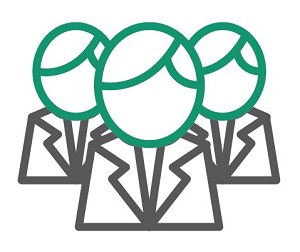
- You're going to want to identify and study the top experts in your niche industry area. You're going to learn from all of the other people who have already done it. That's the first step.
- You're going to read 10 recent books on your topic. Now, you might not find 10, and if you can't, then find as many as you possibly can. Don't say to yourself, "Wow. This niche is filled with a lot of experts. I can't possibly steal business from them." There's enough business out there for all of us.
- Attend conferences, seminars, workshops, training events, either locally in your own community, if that's all you can afford right now, and then branch off and go to the national ones. This is going to do a lot of things for you. We'll go into this in a little more in-depth later.
- You're going to start applying your knowledge by doing things that experts do. In other words, as you start to become an expert on the bottom rung, you're going to start to do things with that expertise. The most important message that I have to deliver about expertise is, "It's not only about what's in your head. It's not only about what's in your brain. Expertise is about what you do with that knowledge." Experts do specific things, and we'll talk about those in a minute.
- You're going to keep always climbing the ladder of expertise, and don't stop at your comfort zone. When you're in your comfort zone (and I've learned this from personal experience), that's when you get into trouble, and that's when the money stops flowing in. I'm going to give you a good example of what I'm talking about, something that happened to me earlier this year. I got way outside my comfort zone, but I learned how to do something really cool, that I've always wanted to do.
 Step #1 - Identify and Study the Top Experts in Your Niche
Step #1 - Identify and Study the Top Experts in Your Niche
Identify and study the top experts in your niche, and the best way to do this is to just use Google. It's the best search tool on the planet, and you can just go and type in, "Top 5 Internet Marketing Experts," or "Top 10 Dog Breeding Experts," or "Best," or whatever. I promise you that you will find something. You will be amazed at how much stuff you find. Follow them on social media, subscribe to their blog posts, and if they have a podcast, subscribe to it. Get onto their email lists. If they're an expert, I'll bet you they're building an email list, just like you should be if you want to be an expert in your field. Pay attention to the topics they're writing about. Pay attention to the controversial issues they're discussing. These are all topics that you need to learn more about and maybe you need to be discussing at some point. Snoop. Snoop! Who are their first-degree connections on LinkedIn? Now, I don't let people see my first-degree connections on LinkedIn, but some people do because they don't know how to configure the settings on LinkedIn. Go find out who their first degree connections are. Who are these people? Then, go connect with them. Go snoop to see what industry groups they are in on LinkedIn. Go join those groups and see if those groups are perfect for you. What Twitter lists are those experts on, and if you don't know how to use Twitter lists, just Google "How to use Twitter lists". Anybody can create Twitter lists, and usually experts are on a lot of Twitter lists that other people create. That's how to do #1, how to identify and study experts in your niche. And, I don't want you to view them as your competitors. I heard someone once say:[bctt tweet=" They're not competitors. They're simple joint venture partners who don't know it yet." username="danielhall"] When I quit the newspaper business two decades ago, there were a couple of people who I thought were big mega-stars. One time I checked them out. I was surprised at how little information there was about them online. I actually leapfrogged over several of them, and so today, they view me as a big star. A lot of it is that you've got to do things with your expertise. You can't only get a PhD in whatever the topic happens to be. You have to keep learning and keep doing, doing, doing, doing. We'll get to that in a little bit. Step # 2 - Read 10 Recent Books on Your Topic
Read 10 fairly recent books on your topic. Again, use the best search tool on the planet, Google. Or, you go over to Amazon. You type in, "Best books on internet marketing," or "Best-selling books for real estate sales," or "Top books in," or "Top 10 books in". When you go over to Amazon, the site is going to tell you exactly what the best sellers are because they are going to appear down at the bottom. Some of those books are going to be written by the experts who you've already identified in Step #1. Experts write books! Do the books have a glossary in the back of industry definitions? That's a great way for you to learn a lot about your industry really quickly, and good books usually do have a glossary. Make notes, again, of the controversial topics they are writing about in the book. If they're telling stories, about people in your niche, copy that down because maybe that's someone you can interview later on for a podcast. Also, look to see what books they are recommending. They're recommending books, maybe on their LinkedIn profile, maybe they're reviewing books. Take a look at the books they're reading and the books they're recommending. The aim of this activity is to get smart as fast as you can from people who are already experts in their field. They are the experts; they've written the book. And, you may not like the book. Some of the books you may read, you may think they are crap, and they may be crap because these people have done a really good job of promoting themselves as experts. So, make note if the book is crap. You're not going to come across all of this material that is A+ and 5-Star. It's just not going to happen, but I want you to learn from it and expand your brain and expand your expertise. That's the best way to become an expert fairly quickly. When you are interested in a particular marketplace, and you see that something isn't first-rate, that should motivate you in actuality. That means that there's an aperture in the marketplace that you can fill. If you start seeing that there's a lot of crap, that means you're in a really great position. That means you stand a great chance of becoming the foremost expert in your field. Learn from that crap that you're seeing and do a job that's 10 times better. If you follow this advice, you will become the expert.Step #3 - Attend Live Conferences, Seminars,  Workshops and Training Events
Workshops and Training Events
Attend live conferences, seminars, workshops, and training events. Yeah, you can sit in front of your computer in your PJs, like you might be right now, but you want to get out there and go live for a whole bunch of different reasons. In the first place, this will give you the chance to meet these hotshot speakers. I speak at a lot of events, and a lot of people are there because they want to talk with me and the other speakers. They want to pick our brains and meet us. They want to learn from us. They want to sit next to us at lunch. You can't do that when you're only listening to someone on a webinar or a podcast. This also allows you to network with a lot of other people in your industry or your niche. I can't even begin to count the number of people who have become my joint venture partners, which I have met at Judith's Author U Extravaganza, for example, or National Speakers Association conferences. You can meet lots and lots of people who you can joint venture with and make money from down the line because your areas of expertise, they might overlap. Even if they don't, don't worry about it. They'll know stuff that you don't know, and you'll know stuff that they don't know. [bctt tweet="Use live events to start building an email list of people." username="danielhall"] I believe strongly in email marketing. Email is, by far, my most valuable marketing tool, that's brought in the greatest amount of money. These are also events that you may want to speak at someday. One of the things that experts do is they speak from the stage, either for free or paid speaking engagements. Some experts won't touch free speaking engagements. I love them; because I can sell from the back of the room. I'd much rather have your email address at a free speaking engagement than to be paid a couple of grand from the stage and not be able to collect email addresses. I'll take the email address any day, because that's my most valuable marketing tool. Down the road, consider joining your industry trade associations and also becoming certified in your particular area. For example, there are certified professional speakers in the National Speakers Association. There are certified marketing consultants (CMCs) for consulting. There are certified ghostwriters. Certification is really powerful in your industry because certification is something that most other people don't have. Your industry or trade association will be sponsoring a lot of these events. So, get out there and attend live, hobnob, rub elbows. Meet as many people as you can. Eventually, the good ones, you want to speak at these events. The benefit of going to a lot of these live events and seeing these big shot speakers, and rubbing elbows, you get to see who the jerks are, who you do not want to have any kind of relationship with at all. Online, you can't tell that sort of thing, or by talking to someone on the telephone either. If you see them on stage and they suck, and everybody hates them, "Man, are they boring! All they do is promote from the stage," they are probably someone that you do not want to joint venture with.  Step #4 - Apply Your Knowledge by Doing Things That Experts Do
Step #4 - Apply Your Knowledge by Doing Things That Experts Do
Start applying your knowledge by doing things that experts do. It's not about what's in your brain. It's about what you do with your expertise. Look at the people who are billionaires in this country who never graduated from college. They don't have a PhD behind their name, but they are successful at stuff. Here are some things that you can start to do: - I want you to start writing articles and publishing them to your LinkedIn profile.
- Start a blog.
- Start guest blogging for other experts.
- Start a podcast. Podcasting has been on my to-do list for years, and I'm going to get around to it eventually.
- Write an eBook on your topic for beginners. If you're a beginning expert, what did you learn that you can teach other beginners how to do? It doesn't even have to be an eBook if you love videos.
- Do a video series. You can teach a class in your community through the adult education program.
- Go to the Small Business Administration's SCORE program and teach a course for small business owners.
- Start referring to yourself as an expert immediately. As soon as you start to build expertise, I want that word "expert" to be everywhere.
- I want it in your email signature, on your LinkedIn headline. I want it on your marketing materials, in your eBook, in your author bios, on your speaker one-sheet, and I want it in your newsletter, your blog, your podcast. All over the place.
Step #5 - Keep Climbing the Ladder of Expertise
Keep climbing the ladder of expertise and never stop. I was really in my comfort zone for a couple of years, and that's when I saw my revenue go down. When I wasn't doing, and when I wasn't challenging myself. Somebody approached me last you and said, "I want to bring you to my conference, that I have down in Orlando, and I want you to sell a high-ticket product from the stage." Now, I've seen other people do this, and I always swore that was something that I would never do. "I can't do it. I don't want to do it. It feels sleazy. It feels awful." And he said, "How about if I teach you how to do it?" I said, "I can do that." So, he taught me how to do it, and I created a $5,000 product. I sold one from the stage, and he got half the revenue. So I walked out of there, all dejected. I only made $2,500. Then I went back to him, and I said, "Wait a second. Let's sell this over at your website." He said, "That's a great idea," and we worked out a JV partnership, and he sends me lots of affiliate commission. All of these people on his list are not people in my niche. He has a completely different section of people who we sell this too, but they all want to learn how to get publicity. So I don't do anything, and we even have a fulfillment house fulfill the product. I don't have to touch anything. The only thing I have to do is cash the checks, and I love to cash checks. Do you love to cash checks? Yeah, I love it, love it, love it. Okay, so that's an example of getting outside your comfort zone. If you've joined a trade association, try to be an officer in the trade association. If you're the president of your association, that has a real cache, assuming that it's a good association. Do you need formal training in your topic? You might have to get a bachelors degree or a masters, or go to tech school, or maybe even a PhD. Or, get that certification that I talked about. Are you ready to become a columnist for Inc., or for Forbes, or for Huffington Post, or for Entrepreneur? I was a columnist for years for Entrepreneur, and I am still getting leads from that. I'm getting tons of leads from it. What else do experts do? They have copyrights. They have trademarks, and they have patents. What do you have that you can put a copyright on, a trademark, or a patent? Form relationships with other bloggers, podcasters, experts, and other media people. Start to build a relationship, and always ask the question, how can I help you? You want them to help you, but the best way to get their attention, especially if you're working with a journalist or a joint venture partner, "How can I help you?" That will be music to their ears because most other people don't ask that question. It's also very rare for people to take action on the information that you provide. The people who buy my products and take action, I call them my "super-fans". They are a tiny group, right in the middle of my target market, but they can't stand to be without anything I offer. Not only do they implement my programs, they give me a video testimonial that speaks to the value of my product, that I can use on my sales page. If I ask a person for a video testimonial, I'm not going to get it because I don't want to have to screw around with video and all of that. So, what I do is I use a program called SuperTinTin, like Rin Tin Tin, the dog. I think I paid $29 for it. You put it on your computer, and you can see each other. I just interview them for about 10 or 15 minutes, and then I splice it together. I give it to my editor, and I tell him exactly which ones I want for a really nice, minute-long testimonial that hones in exactly on what I want them to say. It may take 10 minutes, during that interview for all of that stuff to come out, and they would never sit down and give me a testimonial like that, but since I'm talking to them for 10 minutes and I have the video right on my computer, my editor can splice it together and it's primo. It's really easy to use this program. I'm a non-techie, so if I can use it, anyone can. How To Find Your Target Market - From a Recent FB Live Interview
[youtube https://www.youtube.com/watch?v=IA_HEPUAJXM?rel=0&showinfo=0&w=853&h=480]Connecting with Joan
I want you on my email list because I email twice a week. The Publicity Hound's Tips of the Week. I've been doing this for more than 15 years. I do it every Tuesday afternoon and every Saturday morning. If Christmas is on Tuesday afternoon, you get me in your email box on Tuesday afternoon, and I do this... I think I've missed six issues in 15 or 16 years. That's because I've made a promise that you're going to hear from me twice a week, and dammit, I'm an expert and I deliver on my promise. So, you're going to see me in there. Three snack-sized tips every week, and because I am the "Publicity Hound," you get a funny dog video. Some people read my tips just for the video, and that's okay. You can go over to PublicityHound.com/tips/sample. That's actually a sales page. Pay attention to it. That's going to sell you on all of the reasons that you should sign up onto my list for free. So that's how to stay in touch with me twice a week. Joan's digital reports are among her most popular learning tools. Each of the 52 reports, on a super-narrow publicity or marketing topic, is at least five pages, and chock full of helpful advice. Joan sells the entire bundle for $247. You can save $123 off that price if you go to http://PublicityHound.com/go/daniel and use the coupon code REPORTS at checkout. These special reports are so popular that you'll even find a special report on how and sell write special reports--a perfect product for people who are learning how to become an expert.Resources
Joan's Reports - http://PublicityHound.com/go/daniel Coupon Code - REPORTS Joan's Newsletter - The Publicity Hound's Tips of the Week Video Software: SuperTinTinReal Fast Results Community
If you are diggin’ on this stuff and really love what we’re doing here at Real Fast Results, would you please do me a favor? Head on over to iTunes, and make sure that you subscribe to this show, download it, and rate & review it. That would be an awesome thing. Of course, we also want to know your results. Please share those results with us at http://www.realfastresults.com/results. As always, go make results happen!
Sep 16, 2016
 Today, we are going to talk about the topic of website investing. That is, buying into cash-producing websites and the market that has developed around these online properties, and exactly why you should be interested in that. And then, we'll get into how you do that, in pretty good detail during this short conversation. I would guess that most people listening to this today have a website or are planning to have a website. Those are assets. They really are assets that have value, and whether it's your own or someone else's that you're looking to buy into. There's a lot of value there, in terms of the net worth of the traffic that you've generated, of the process that you have in delivering that product to a customer. [bctt tweet="There can be value in selling what you've developed or looking for things that compliment what you're already doing." via="no"]We'll talk later about how you can actually pick up and acquire audiences. You don't have to always build things up from scratch. That's just one of the key components of why you would want to do this.
Today, we are going to talk about the topic of website investing. That is, buying into cash-producing websites and the market that has developed around these online properties, and exactly why you should be interested in that. And then, we'll get into how you do that, in pretty good detail during this short conversation. I would guess that most people listening to this today have a website or are planning to have a website. Those are assets. They really are assets that have value, and whether it's your own or someone else's that you're looking to buy into. There's a lot of value there, in terms of the net worth of the traffic that you've generated, of the process that you have in delivering that product to a customer. [bctt tweet="There can be value in selling what you've developed or looking for things that compliment what you're already doing." via="no"]We'll talk later about how you can actually pick up and acquire audiences. You don't have to always build things up from scratch. That's just one of the key components of why you would want to do this. Educating Yourself About the Market
The first step was one that I didn't do my first time around, and that's educating yourself a bit about the process. Anytime you make any kind of sizable purchase, whether it's a cell phone, or a car, or a house, you really need to know something about the market. That's important. At the time, when I started doing this, seven or eight years ago, there was really almost no information available about how to buy a website, and do it safely, and choose the right one. How do you build a business, even if you're not looking to be an angel investor and go out and acquire things? How do you go about finding something that can complement what you already have? I mean, content marketing is one of the big topics today, and it's all about sharing audiences. I don't care what your topic is. Say it's about travel, or poetry, or whatever, I guarantee that somewhere out there is a website where someone has already developed an audience around a website that's very complimentary to what you do. I've known a lot of internet marketers who have bought websites for nothing more than the list that comes with them or the traffic to the website that's already there. Then they can actually sell their own service on a website that already has that traffic and audience. So, the first step is education, and we can get more into how we do that, but essentially, one of the key parts of education is actually getting on the list of brokerages and marketplaces that sell websites and beginning to look at the listings. Educate yourself by reading about: - What does the website do?
- What is its product?
- How does it attract its traffic?
 Search and Collect Listings
Search and Collect Listings
The next step, as I alluded to, is the search. What that means is getting yourself on lists and beginning to collect listings. So, in your search, you're looking broadly, and then the next step is to kind of narrow that search down to a few listings that you're more interested in. The next step, after that, is actually some due diligence on those listings, to really get in and ask questions about those sites to make sure they are really what you would be interested in and that there's no funny business going on behind the scenes. Then, really taking it down to a single one and completing a transaction, where you're taking over the assets from the seller. You've negotiated a price, and there's a process for making sure the money is safe in escrow and that you're protected with contracts while that transaction takes place between you and the seller to make sure that you're getting everything that you think the seller told you that you were going to get when you made the offer. After it's yours, the next step is "what do you do with it?" How do you optimize it, and how do you control the business that you've just purchased? Then, you move on. Perhaps, later down the road you just sell it, or you may not. You may just fold it into your own portfolio. People attack this in different ways. Some people have portfolios of smaller sites. Many guys really look for something that's bigger, where they can sort of invest all of their energy into it. It's a good idea to be focused in your approach. That's certainly the case in website investing. If you own too many of them, it can be hard to optimize any of them. Some people really hone in, and they might buy one site and then actually just augment it with complimentary, symbiotic kinds of sites, as opposed to just going out and trying to find anything at all that might make money. A question I often get is, "Should I build mine around a theme or a particular type of business?" I've seen that to be very effective. It's effective because you begin to learn more about the nuances of that sector or that business model, and you also have resources that you can leverage. Maybe you have technology, or maybe you have relationships with an ad network, or many things that you can leverage when you buy a new business. And, other buyers that you are competing against with that business might not have the resources that you bring to the table. For example, you might already have an audience, and you can sell the product of the new website to that audience. You'll get a lot more value out of it than someone who didn't have that audience. On the Job Training
Clearly, to me, on the job training is one of the most important things. That is something no one can do for you. Just reading the listings, kind of putting a plan together, and there's certainly some resources available on the Web. Different brokerage sites have blogs where you can read about isolated topics. There really aren't very many courses out there on the topic of website investing. There's really only like one or two. I put all of my experience into a video course that I developed, and it's something that I continue to keep updated. That's important, and even beyond that, just getting other eyes on the deal. It's not just an academic exercise. As you walk through the process, finding people that you can have a relationship with who have some experience in these and will say, "Hey, that's a good one, " or "That's not a good one," or "You ought to be asking the seller these kinds of questions." You know, a lot of that you can find in course materials, but it's really hard to find that online. As you can imagine, "What can I ask the seller about this deal?" Try to Google that, and you're not going to get many answers. There's the informational kind of education, and then there's the experiential kind, where you're not only looking at listings, but you're also throwing some questions out there to the seller just to see what the give and take is like in a transaction. Just on that point, it's interesting, the kinds of people who buy websites. One big category, surprisingly, is real estate people. They're not technology people, but they're not afraid of deals. They understand this process of, "Go find an asset that has some value, dig in a little bit, do a little research and due diligence, and make a deal." So, they're not afraid of that. When they hear me talking about buying revenue-generating websites, online businesses. It's kind of like online virtual real estate they're in, and there are other people like that as well, who you wouldn't necessarily think that this is the first guy that's going to buy an online business, but in fact, there's really a variety of people who are attracted to this model. Resources for Investing in Websites
Flippa.com is the biggest marketplace for lower-end websites. And, when I say low-end, I mean anything less than $50,000. So, it's not that low, but at any given time, every week, they have about 3,000 websites for sale concurrently, and they sell a great number of them every week. Then, the other category is brokerages. There are a lot of online business brokerages, not the kind of Sunbelt business brokers that we know, that sell the brick and mortar things. Companies like F.E. (Frank Ernest) International, Quiet Light Brokerage, or Empire Flippers. These are all companies that specialize in online businesses for sale. Those are the ones that you want to visit and get on their lists to buy. I also have a private buyer's list called WeBuyInternetBusinesses.com. I'm not a broker, per se. However, because I'm pretty visible in this area, I get a lot of people asking me if I can help them sell their sites. It's just a private list, and I send it out to the guys on that list. Feel free to sign up there as well.Return on Investment
We didn't really talk about the return, which we're this far in and I can't believe I haven't mentioned it. [bctt tweet="Websites are selling at somewhere between 2 and 3-year multiples of net income." username="danielhall"] If you just do the basic math, what that means is that, if it's a 3-year multiple, it means that you're getting about 33% return on your investment every year, assuming that the website holds its value over that 3-year period of time. As everyone knows, 33% is a fantastic return, and even higher-quality sites are selling at that 3X multiple. Of course, there are some newer sites, maybe a little more risky and less tested sites that are selling at, maybe 1.5X-2X. You don't have to go on up to the 3X. But, that's really what's attractive to a lot of investors and new business owners about this. You can buy into a site that can potentially make you about 33% on your money.Investing in Your First Website
"What do I need to bring to the table in order to invest in my first site?" The answer is that I've bought $100 websites, and $400 websites, and $40,000 websites. And, it goes way up beyond that. You can buy in for almost nothing. Now, truthfully, the fact is that the less you spend, the lower quality you're going to get. So, when you buy a $400 website, chances are it's brand new, it hasn't stood the test of time, and you know, we don't know if it will survive a Google update. We may not even know if the thing is legitimate or not. Some of the traffic might be fake and those kinds of things, and there are steps that we take to avoid buying into low-quality things, and we talk about those things a lot in the course. But, the 33% return over three years, probably isn't going to hold if you buy something that's pretty new and may not last six months. So, you have to keep that in mind. Certainly, the amount of money that you have doesn't really keep you out of the market. As long as you have a few hundred dollars, you can get in. Now, the reality is that these things that are less than $5,000 - $10,000 are not real businesses, in the sense that they probably don't have several years of history. They may have traffic, and they may have a product, and they may have all of the pieces of a business, but it may not be as sound as what people would call a real business, until you spend a little bit more. Lots of people, including myself, have found really good deals in that range of less than $10,000. I bought one for $400, three years ago, and I checked back and I had made $900 on it. My $100 website, I have made $350 on it. Even those you can stand to make a really good return on. If you're going to launch something, you're probably going to get something a little more substantial. If it has more intrinsic value, it's probably going to cost you more.Narrow Down Your Options
The next step is narrowing things down. Getting acquainted enough with the website, doing the reading and maybe a little bit of searching on it, and checking some things out that would make you want to take it to the next level. We call this evaluation, and essentially what you're doing is, you kind of develop a "watch list". Maybe you've found 3-5 listings that you're interested in and might be something that you would actually buy. You'll start sending questions to the seller about those, and you'll probably have an interview with the seller. One of the key tools in due diligence is to have a face to face, kind of like over Google Hangout or over Skype, where they can show you the behind the scenes elements of the business. So, like sales transactions, or maybe if it's an eCommerce site, they'll show you the shopping cart, maybe the PayPal statement, and those kinds of things, so that you'll get an idea that it's legitimate. Most sellers will do that for you, even before you've negotiated a deal, particularly with the lower - end kind of websites. Other sellers will do that during an escrow process. This next step is kind of the beginnings of the due diligence. Maybe you have those 3-5, and then you narrow this down to one that you're really serious about buying.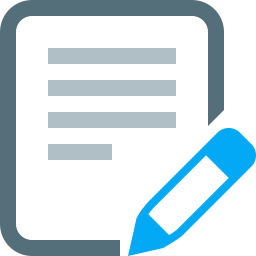 Negotiation and Agreement
Negotiation and Agreement
The next step, is actually, getting into negotiation and trying to figure out, "What is this thing worth? What's the value of it?" And, I talked just real briefly about the multiples of net income that we use to kind of price sites, but there's a little bit more to it than that. Every business is different, they have different risk profiles. For a real risky business, you're not going to give them the same multiple than for what you feel like is a stable business. You'll think through that and kind of put a price on it. It's not that complicated. The truth is that it's not that hard to decide how risky the business is and to put a price on it that you think it's worth. So, that's kind of the next part, that negotiation process. The step after that is once you're sure that you want it and you've reached an agreement. For lower-end sites, you may not need a contract. You can kind of rely on the escrow process, which I use Escrow.com. I've used them 20 or 30 times. Essentially, the buyer's money goes to escrow, once escrow has the money, the seller transfers the domain, and the website content, and all of the stuff that you've bought. Then, there's a period where you get to inspect it. You just make sure that the traffic really is coming in, the sales really are coming in, and you've got everything that the seller says was included in the deal. Let a little time pass. Then, you tell Escrow.com, "Yup, it looks good." That closes the deal, and they release the funds to the seller. So, for smaller transactions, a lot of times you can rely on escrow to keep both parties safe. For a little bit larger transaction, you're probably going to want to have an attorney, or if they are working with a broker, you'll want to have contracts already established, that you could customize. That keeps you safer because there can be some things that go wrong with escrow, and you certainly don't want to risk it if you have a lot of money at stake. That's the next important step in the buying process. Anybody who has bought a home has probably been through something very similar, although you don't have a stack of papers buying a website like you do with a house. During that escrow process, you've probably made the transition. If you didn't have a web hosting account, you do now, where you took one over from the seller. Everything belongs to you, at that point. Then, what's important, in my course I talk about low-hanging fruit. Every business has some smaller, easy things to do that you can increase profits pretty quickly with, or at least you can test it. And, I'm talking about things like, let's say you buy a business that has only one price. They've got one product, but there's always buyers that want a premium version as well, or something, and they are willing to pay three times that. There are other buyers that want a discounted version of something. So, if you buy a business and it only has a one-priced product, that's a real simple one. You just add two or three levels of the product and differentiate it by expedited shipping, or a bonus training, or an eBook. You know, these are all familiar things to internet marketers, but every business has them, whether you are an internet marketer or not. Or, if you're buying a publication, moving the ads around to get better click-throughs, or increasing the conversion rate on an opt-in page or on a sales page. All of those kinds of things are real simple, and when I buy a site, I already have those in mind well before I ever buy it. "Hey, I know that I can do these three or four things to tweak this thing and get more money out of it almost right out of the gate." That's really what you look for. Then, as business people, we also want to put controls around it. We just bought it, but actually, when I buy something, I'm thinking about selling it from the day I buy it, even though I don't sell a lot. That's not my intent or objective, but I want everything to be in place in case I do sell it. So, I want to make sure Google Analytics is on, capturing all of that, I want to have a spreadsheet that tracks the sales and the expenses by month. I want to have some basic processes. I want to make sure that the site has its own email account set up so that if I ever sell it, the email accounts transfer over and that it's not dependant on my own email for customer service and those sorts of things. That's just a list of basic things that responsible business people are going to want to do with a new website, and believe me, those things sound pretty basic, but you won't believe how many businesses there are that don't have those basic things in place. If you do those things in place, you can stand to sell them for a lot more. You might sell them for an extra point in multiple or something like that because the potential buyers in the future would just feel like, "Hey, this seems like it's under control. It's working." And, they'll develop some trust in who you are as the current operator of the business, and they'll feel like they can be more successful themselves with it. [bctt tweet="I sometimes talk about passive income from website acquisitions. The truth is, there's nothing passive in business. " via="no"]The non-passive part is like finding it to begin with and then doing some of those tweaks we said early on, to make it more profitable. But, I've had websites that I bought a number of years ago that continue to make money month after month with very little maintenance or customer service. So, those kinds of things are certainly possible. Now I think, more often than not, there's some routine that needs to be done on the website. If you don't want to do it yourself, you'll have that outsourced, the technical support, or somebody manning the chat box, or fulfilling the orders, or whatever. So, there are ways to do that as well, and there are trade-offs. You may outsource things and have a little less profit to keep, but not have to worry about that stuff. Learning From and Connecting with Jeff
If you want to learn more from Jeff, you can visit RealFastResults.com/WebInvest. In terms of contacting me, my personal website is HeckYeah.org. I'm also developing OwnOptimize.com, and you can reach me through the contact areas of either of those websites. You'll find some resources there as well.Resources
Jeff's Course: RealFastResults.com/WebInvest Flippa.com Brokers: F.E. (Frank Ernest) International Quiet Light Brokerage Empire FlippersReal Fast Results Community
If you are diggin’ on this stuff and really love what we’re doing here at Real Fast Results, would you please do me a favor? Head on over to iTunes, and make sure that you subscribe to this show, download it, and rate & review it. That would be an awesome thing. Of course, we also want to know your results. Please share those results with us at http://www.realfastresults.com/results. As always, go make results happen!
Sep 13, 2016
 Today, we are going to show people How you can make sales on some of the biggest eCommerce sites, like Amazon, without having to spend any upfront money with very, very minimal effort, and start to build up some cool passive income. One of the main benefits is the passive income, and also, it's just super-easy, super-fun. As I explain it, you'll see that it can be so simple to get lots of designs up and make sales. We have kids doing this system that I've been teaching, and it's really fun. It's just easy, and there's no need to learn a bunch of different things. This method seems to be working for people.
Today, we are going to show people How you can make sales on some of the biggest eCommerce sites, like Amazon, without having to spend any upfront money with very, very minimal effort, and start to build up some cool passive income. One of the main benefits is the passive income, and also, it's just super-easy, super-fun. As I explain it, you'll see that it can be so simple to get lots of designs up and make sales. We have kids doing this system that I've been teaching, and it's really fun. It's just easy, and there's no need to learn a bunch of different things. This method seems to be working for people. Download the Complete PDF Show Notes and view Rachel's Full Training Video of the Low Hanging System Free
The big idea here is that you can come up with different designs and things to put on different products, like mugs, T-shirts, and necklaces. You come up with the designs, and then you overlay them. You can take your designs and put them on top of the products, and then you get finished pictures. You can take the pictures of products and put them on sites like Amazon, Ebay, and different places.Using Print On Demand Sites
[bctt tweet="There are companies that will do physical print on demand products. Just create a simple design." username="danielhall"]Download the Complete PDF Show Notes and view Rachel's Full Training Video of the Low Hanging System Free
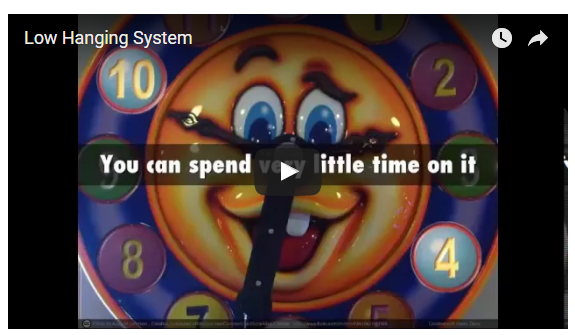
Learn
- 7 Steps for Selling on Demand Products
- Identify niches that you want to make products in
- Create your design
- Launch your product on the drop-shipping site (Gearbubble)
- Find keywords to use, so that you can be found once you launch your products
- Launch on Amazon
- Launch on other sites like Ebay, Bonanza, and Etsy
- Process orders
Download the Complete PDF Show Notes and view Rachel's Full Training Video of the Low Hanging System Free
Connecting With Rachel
This particular product can be found on RealFastResults.com/fruits, and then I also have my personal blog over at RachelRofe.com. I also have a crash course on how to do all of this that you should totally check out.Resources
Designing Tools: Word Swag Drop Shipping Site: GearBubble.com Sites to Launch Your Product: Ebay Bonanza EtsyShopifyFull Video Training Of Rachel's Low Hanging System
[youtube https://www.youtube.com/watch?v=WvVYUVaTCwk]Click here when the webinar is finished
Real Fast Results Community
If you are diggin’ on this stuff and really love what we’re doing here at Real Fast Results, would you please do me a favor? Head on over to iTunes, and make sure that you subscribe to this show, download it, and rate & review it. That would be an awesome thing. Of course, we also want to know your results. Please share those results with us at http://www.realfastresults.com/results. As always, go make results happen!
Sep 9, 2016
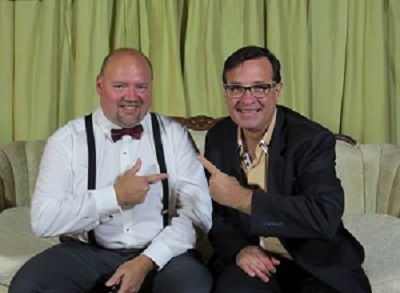 We're going to be talking about templates today. Something that I love, and I know you love as well. It's a great way to take your business in a new direction that, perhaps, you haven't considered before. So, that's what we're going to focus on.
We're going to be talking about templates today. Something that I love, and I know you love as well. It's a great way to take your business in a new direction that, perhaps, you haven't considered before. So, that's what we're going to focus on. Benefits to Offering Templates in Your Business
I think it's important to recognize, first of all, that we as human beings are hardwired to respond to templates. I mean, after all, we are based on templates. DNA, right? Everything that surrounds us falls into some sort of template. We may not think about it that way, but the fact remains. Anything that takes a long process, a long series of steps to do, over and over, repetitive-wise, can be turned into templates. Anything that is outside your wheelhouse, like maybe designing a book cover... You're not a graphic designer, or whatever, but you want to have something professional-looking. You can accomplish that using a template. So templates, across the board, save us time and save us energy, they save us effort, and that's one of the reasons why I refer to templates as "the perfect product type", because of those reasons alone. We love saving time, money, and effort. That's really it. Imagine taking product development, from that perspective. You have customers, regardless of what business you're in. How can you help them save time, save money, save effort? Even McDonalds, their hamburgers are made using templates. The process is a template. Actually, the hamburgers are too. They may not be the best hamburgers, but they are still made using templates. Why? Because out of the hundreds of thousands of McDonalds stores, restaurants, they want the hamburgers to be the same. It's a form of branding. You know, you want predictability. So, templates give us that opportunity. Part of my career past was that of a cover designer. I worked in the publishing industry for 20 years as a book cover designer. So, it's easy for me to create a professional-looking cover. I've done it hundreds of times, but for a new upcoming writer/author who wants to publish their book, they don't want it to look like crap. It won't sell. But, they don't know anything about designing a book cover. If I, as a designer, create a template that they can follow and just plug in their information, now all of the sudden, for a fraction of the cost and a fraction of the time, they have a professional-looking book cover that they can be proud of. It will boost their sales. It will boost their following. You know, all of that. I think that's just the beauty of working with templates. Let's say you want to start a new LLC, a new company. You go to MyCorporation.com. What do you do? You fill in a template, and you pay a nice chunk of money for that template, but still, it just speeds up the process. Imagine having to fly across the country, and sit down with an attorney, and fill out all of that stuff manually, face to face. Holy crap! We'd never do it. So, it just saves us so much time, and not only that, think about what you have in your business. What are people asking again, and again, and again? What are they communicating with you like, "It's so hard for me to do X." You know, or "I'm having a lot of trouble doing Y." What are those things in customer support, or in FAQs, or in your Facebook group, or whatever, that people are struggling with? How easy would it be to help them to provide better support and create a new product by creating templates that help them solve that problem? Another thing, like courses, they can take days, if not weeks, to put together. Templates you could bang out in an afternoon. A couple of hours and then you're done. I love that feature. That's why I say that it's such a win-win at so many levels.Identifying and Developing a Template or Template Bundle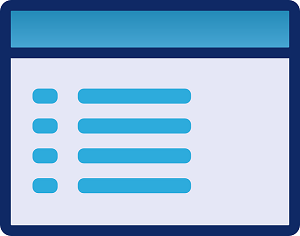
You know, we have our friend Felicia Slattery. Felicia is a speaker, trainer, and she's brilliant. She's coached me on my speaking, teaching on webinars, and all of that. She noticed something starting to occur within her business where people were wanting to get more speaking gigs, and she teaches how to do that. In order to professionally reach out to groups and reach out to organizations, and places like that where a speaker would want to be, folks were struggling. They didn't know how to make that connection. She's like, "You need a one-sheet. You need a way to communicate what your speech is, and where you've been featured, and who you are as a person, and all of that." They just really weren't sure how to accomplish that. So, Felicia had the great idea, "You know what? I could create a series of templates that people could just fill in the blank, and all they would have to do is put in their information, what the name of their speech is, their bio, their photo, and so on. Then, they could pick colors, they could make it look professional, and Boom! Done!" She set out to do that. She created a series of templates. I believe there were four or five. It was one basic template, and then she changed the colors. Ten different colors, and now instead of five different templates, there's 50 different templates, or whatever the case may be. But, it was just different colors. People loved it. Talk about creating a service. She had never done anything like that before. She had never created templates like that before. Coming from something that was a little bit outside of her wheelhouse, because she normally teaches speaking, but saw that need, provided a solution to that need, in the form of templates, and now all of the sudden, here's this little product that turns into a $15,000 payday for her. The other side of that being how she did with it. I remember whenever she released them, people tagging her on Facebook with a screenshot of their speaker template that they just created for their own thing, and it was fun to watch. It was fun to see people achieving that level of success so quickly, when they didn't have any idea what to even do before those templates were out. It's such a great example of what can be done, very quickly, just by identifying a problem and then producing a template to solve that problem. Step 1 - Identify What Your Customers Are Asking For
The first step is to identify what your customers are asking for. What are the sticking points for your clients and your customers? You need to be looking at things like your FAQs, and what people are mentioning on your support desk, and on your support emails, and what they struggling with as communicating on social media, etc. That's essentially Step 1, and then the second step is to create a template that sort of fills that gap you have identified.Step 2 - Create a Template That Fills in the Gap
One thing that I want to point out is that you should ask yourself what you would need to experience success whenever you are identifying what to create. As the template creator, one thing that you would really need to be aware of, and conscious of, is that when you are really good at something, like cover design or whatever the case may be, the process can become invisible to us, where we think it's easy when it's not. You want to even think about templates from that perspective. "Oh yeah, I can whip up a cover in no time," and somebody else, they're like, "What? I got nothing." They think it looks pretty, and well, we won't say what it looks like. So, what would a template look like to accomplish that? We're not talking about step-by-step training, but we're talking fill-in-the-blank, is really it. You know, what blanks need to be filled in order for your customer to experience the results that they want? You talk about Real Fast Results. That's the name of this podcast. How will someone achieve real fast results from a template that you're creating. What are those blanks that have to be filled in? Templates are all really unique. Felicia's templates are perfect for speakers, and that's what they were created for. But, quite frankly, authors could use them to advertise their books, coaches could use them to advertise their coaching service, and on and on it goes. Real estate agents could honestly use it to talk about what markets they're in and that kind of thing. So, there's a lot of adaptability there, and that's the other facet of templates. Don't pigeonhole them to the point where, "Oh, you've got to only use it this way." You know, our job is to create a framework where people can be flexible.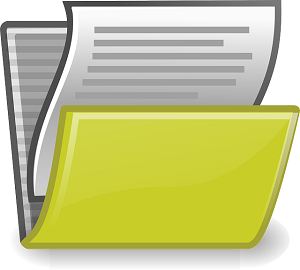 Adding Templates to Your Business
Adding Templates to Your Business
Decide what kind of template will best serve your audience. Of course, there's the creation process. You have to create that template. There's a number of programs that I like to "play in," so to speak, when it comes to template creation because a lot of the templates that I work with are information-driven. Tools to Develop Templates
- My favorite, probably, is PowerPoint. That's the same program that Felicia used for her templates. It's really easy to set up, to modify the data, and so on.
- Microsoft Word could be another example, because Word documents are very easy to fill in.
- Even Adobe Acrobat, you can use to create some pretty cool templates.
- From a cover design perspective, I've created some templates using Photoshop, which of course is the #1 image editor on the planet. But, I've also created them in PowerPoint. So, it's identifying the tool.
Free Templates Vs. Paid Templates
If you go to the Microsoft website, where they have Office, you'll notice that they have hundreds of templates there that you can download and use for free, which begs the question, "Yeah, if my customers can go to Microsoft, or other places, and find templates for free, why on earth would they buy templates from me?" And, it's a good question; it's valid. I've never let that stop me. To me, it's a non-issue that the templates are available for free because they aren't mine. They aren't my templates. So, whenever you're buying templates from me, or from whomever, you're not just buying a template that you can download somewhere. You're buying expertise, you're buying insight, you're buying business experience, professional results, and those kinds of things. You're not just selling a template. You are, but you're not. You're selling yourself. You're selling your results. That's a huge factor in it. Relationship certainly plays a role in that. Felicia certainly has a reputation of being a great speaker. She has spoken thousands upon thousands of times. So, she can draw upon those results and that experience to bake that into those templates. I've created nearly 600 book covers. That means I know a thing or two about book cover design, and I can bake that experience into my templates, and that's really what it comes from. That goes back to the question of, "What specialized knowledge do you have that will solve problems for your customers that could be turned into a template and save them time, money, and effort?" Step 3 - Sell Your Templates
The last step is to make them available, to sell them, which is an obvious thing. I had a thought that I'd like to share really quickly just, again, to drive home an example. So, let's say that you serve the publishing industry, and you have a first-time author who wants to publish their book. What all do they need, as it comes to you as the publishing professional? Obviously, they need a book cover. They need the text of the book laid out. They need a website. They need branding. They should have an author one-sheet. They need a media kit, a book trailer, an Author Central page, a professional bio; you know, all of those things to help them promote their book, right? Every one of those, every single item, can be template-ized, and they should be. That's just one small market, and the same could be true of a myriad of markets.Learning More and Connecting with Tony
I have put together a pretty stout on-demand webinar. It's available to you right now. You can head on over and register at RealFastTemplateProfits.com. The easiest way to connect with me would be to visit TonyLaidig.com. I've been working on redesigning my site, making it look pretty and functional. But, that's the best place. You'll get to learn more about me and see what I'm up to. My courses and trainings are all on there as well.Real Fast Results Community
If you are diggin’ on this stuff and really love what we’re doing here at Real Fast Results, would you please do me a favor? Head on over to iTunes, and make sure that you subscribe to this show, download it, and rate & review it. That would be an awesome thing. Of course, we also want to know your results. Please share those results with us at http://www.realfastresults.com/results. As always, go make results happen!
Sep 6, 2016
 Our promise today is we are going to talk about, "What you should talk about." You know so much stuff in your head, and you know so many things in your business. We want you, at a moment's notice, to be able to have a conversation with anyone who connects to your audience that you can benefit from, that you can build your list from, that you could make money from, very quickly and very easily. That's what I have to talk about.
Our promise today is we are going to talk about, "What you should talk about." You know so much stuff in your head, and you know so many things in your business. We want you, at a moment's notice, to be able to have a conversation with anyone who connects to your audience that you can benefit from, that you can build your list from, that you could make money from, very quickly and very easily. That's what I have to talk about. Benefits of Being Able to Speak Confidently About Your Business
Obviously, there's the tangible number of leads that you can get and the amount of cash that you can make. That's obvious. To me, the biggest benefit is the confidence and the calm that comes with knowing that you know your stuff, and you're going to know the answer. You're going to know what to say. We hear all the time that public speaking is the #1 fear of a lot of people. We don't dig deep to find out why, and the biggest reason is that people aren't sure what they are going to say or how they're going to say it. So, when you already know, in your head, what you're going to say and how you're going to say it, you just have this confidence that is about you. So, someone is in a pinch. A meeting planner is in a pinch, and you are at a meeting, and they're like, "Oh, we thought someone was going to be here, and they're not here. What do we do? Daniel, can you talk?" You can be like, "Sure I can," and you're ready and good to go. To be clear, I wrote a book called Kill the Elevator Speech: Stop Selling, Start Connecting. So, what I don't want you to do is I don't want you to memorize an answer to, "What do you do?" We need to know who we are, what the kind of work we do is, and the kind of people that we help, and what the results are. That's kind of an easy no-brainer. That's another kind of conversation that, I'm meeting you for the first time, we're shaking hands and saying hello. Really, what we're looking at is an opportunity for you to connect with a group of people, whether that is, a podcast situation, a video situation, a media situation, on stage, whatever that case may be. "Hey, I'm going to put you in front of some people. Let's talk." What are you going to say? How are you going to say it? Where are we going to go? That's where we are going with this, and to me, what we're looking at is knowing, on a head level and actually at a heart level, what are you about? What are your steps? What are the pieces, or the parts, or the things that you can really offer, which #1 for you, make you stand out, and be different, and be unique, be interesting? Number 2, what's going to benefit the audience? So, those are the big overlying principles that we're looking at. Those are the kinds of things that are going to make you look good, benefit you, and also provide value.Sharing Two Sides of Your Business
There are two sides to what we want to share. The first side is the personal side, the "who you are" stuff. That's how people connect with others. The kind of businesses that we're building are personality-based businesses, for the most part. We're authors, we're speakers, we're coaches, we're consultants, we're experts in some shape or form. We're sharing ourselves and the information that we share. S o, people want both of those. They want to know, "Okay, so who is this person?" The second side is the information that we sell. That product, that service, whatever "that" is. Those are the two pieces, and that's what I want you to be thinking about as we're going through this process. So, personal bits and professional bits. Have these, both pieces, ready to go, and be able to share those kinds of things. So, that's where we're going to start. Let's talk about the person first. That may sound like a weird place to start, but it's actually not because, again, this is what's going to make you stand out. Why? Well, are there other people in the world teaching what you're teaching? Here's the actual answer, "I hope so because if there's not, there's probably not any money to be made in your area." I'm just saying. Go into a market where it's proven. Now, what's going to make you stand out from everyone else? Is there a right way to do what you talk about? Probably. Well then, there's other people teaching the same kind of steps and the same kind of methods. It's not necessarily the professional content that's going to make you stand out. For example, I teach people about speaking, and there's a right way to start a speech and a really bad way to start a speech. You know, there's a handful of ways. So, anybody that teaches this stuff knows the handful of ways. There's a right way to end a speech. How am I going to stand out from somebody else? I'm going to stand out over here with who I am and what I'm about. And, that's going to be the same for you. People are going to be attracted to you, and your message, and YOU. Your person. You're the reason why people will buy that professional content, because of YOU. So, let's talk about your personal self and think about a couple of different things. I like to put it in the context of storytelling. Think about some of those stories, in your life, that you can, what I call, make a turn toward. Something that happened in your life where people go, "Oh my gosh! Really, that happened? That's interesting," or "That's cool," or "That's scary," or whatever. Then, they connect to that, and you go, "So, now that I've told this story, here's why it matters to you." 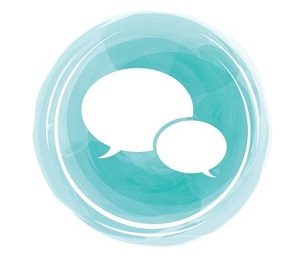 Professional Story
Professional Story
A great example is, back in 2008, I had been running my own business from home, and things were okay. I had to learn to use the Internet in 2006 because I wanted to be home with my babies, who were 1 and 3 at the time. So, I was doing okay and making a little bit of money, doing some coaching and that kind of thing, and then I went to my first internet marketing event. I was sitting in the audience, and again, this was my first event so nobody knew who I was, and I didn't really know any of these people. I wasn't really in the internet marketing world at the time, and I was sitting and taking all kinds of notes, and it was great. And then, there came a portion of the event when there were a couple of speakers, both talking about Google. One was talking about Google Adsense, and one was talking about Google AdWords, which are kind of two sides of the same coin. But, they were having some technical difficulties, like the video wasn't working or the audio wasn't working, and they wanted to record the session. They said, "We're going to figure this out. While we do that, we'll bring up the speakers," so all of the speakers were now standing on the stage. Not just these two, but a bunch of people. All of the speakers for the whole event are standing there, and they're saying, "Hey, we'll take your questions." I was like, "Ooh, this is really cool." I was ready to take notes and everything. People are raising hands and asking questions. Somebody raised their hand, and she said, "How can I be more credible on the Internet?" And, I had been speaking because, again, that's what I do. I had been delivering a speech called "Credibility and Cash Flow" for the last year and a half. I thought, "It's going to be really interesting to hear what these really smart speakers are going to have to say about it at this event." As they spoke, I was like, "None of them really have the answer." Why? Because credibility and cash flow wasn't their thing. So, they could answer it okay, but that was something that I knew. It was informal, and they were still struggling with the tech stuff, and it was a small enough room, maybe with a couple of hundred people. So, I felt kind of comfortable, like half sheepishly raising my hand. Nobody knows me at this point. I said, "I could speak to that," and they said, "Oh great! Come on up," and then somebody handed me a microphone. "Well, hello! Felicia has a microphone! Look out!" And, I gave about 2-3 minutes of my 30-minute signature speech, "Credibility and Cash Flow". People are taking notes, and everybody is on the edge of their seats like, "Wow! This is really good stuff." And, at the end of that, I looked down the line, and maybe you remember the cartoons when we were growing up, when we were kids, and there would be one head over another over another in a doorway; that's kind of what I saw when I looked down the line. I had one microphone, and all of the speakers, I was standing up next to them at that point, and one of the other speakers, New York Times bestselling author, he goes, "And, who are you again?" I was like, "I'm Felicia Slattery." So, what did I just do? A couple of things. Number 1, I shared with you a story about who I am and what I'm about. At this point, you have no question in your mind that I'm not afraid to get on a stage, right? So, now you know a little bit about me, but I also shared (it's kind of a share within a share) that I had content ready. I had been delivering this speech, at that point, for over a year, which for me is forever. That's just a long time to be talking about the same thing. By the way, 10 years later, I'm still talking about the same thing because people want to know. I know this stuff inside and out, so when someone raised their hand and said, "Well, hey, I need to know this." I knew I could provide value. From that, my entire business changed. From just being willing to raise my hand and go, "Hey, I can speak to that," within three weeks I was on the #1 internet marketing podcast in the country at the time. I was invited to be on stages all across the country. I was invited to do guest blog posts, which was a huge thing at the time. It was like, suddenly all of this changed. My list grew exponentially, I started making all kinds of money, I had people wanting to be my affiliate, and I was like, "What's an affiliate program?" I didn't even know. "I'll get one of those, I guess." It was so fun. What I'm asking you to do is think about, "What kind of story can you tell?" Now, I want you to break your stories into two pieces. That, for me, that was a professional story I just told. You want an example of you, showing who you are as a work person, like I just shared. The other story that I want you to have in mind, that you're going to share with people, is a personal story. Again, it can be anything, but you want it to be something that you can then, kind of doing what I'm doing here. Unpack a little bit for the audience and say, "Why did we just tell that story? What's that about?" And, I'll demonstrate because sometimes that's a little bit easier. Personal Story
It was just about four years ago that I was diagnosed with non-smoking related lung cancer. I'm here. I'm doing great. Yay! And totally healthy and fantastic, and I'd like to talk about how I experienced a miracle during that time. What happened was, I was diagnosed with a particular kind of lung cancer. There are three kinds, if you don't know about this. I know way more than I ever wanted to know. There's large cell, small cell, and then this weird third kind that no one has ever heard of. I was diagnosed with small cell non-smoking related lung cancer from a biopsy. They had tissue, and because I had been doing what I do...I speak and do podcasts, and webinars, and all kinds of stuff all of the time, I had built up a sizable list and following between social media and my lists. So, the night before my surgery, I sent out an email and I said, "If you're the praying kind, please pray. If you're the visualizing kind, please visualize. If you're the energy kind, I need all of the good vibes I can get. Whatever... please send it. I'll take it. I'm having this surgery tomorrow, and I'm scared." The next day I had surgery, and when I got out of the surgery, my doctor said, "I know we had seen what we saw. It was the small cell. But when we were in there, and we got a bigger piece... We got the rest of everything out, it was this weird third kind..." This weird third kind is called mucoepidermoid, a weird medical name, and Harvard University, over 20 years, had only had 12 cases of this. Of the 12 documented cases, it never spread, it never came back, and nobody ever died. And, that's the miracle that I experienced in my life. It was a scary time. I mean, I couldn't speak. Ha ha... That's a whole other story. I couldn't speak for three months. They had to remove a big chunk of my lung. My brain was looking for that chunk of my lung and saying, "Oh, we don't see it. Ah, you can't breathe." So, my breath would stop because my brain didn't think that I could breath. There were three months when I was like, "If I can't speak... [gasp]... what am I going to do for a... [gasp]... living? Do I need to find a new... [gasp]... line of work?" They're like, "It'll be fine." Darn it, if it wasn't cardio exercise that got me back. My husband was like, "I told you so." He's a personal trainer. So, anyway... What was that? That was a personal story. Now, I'm going to tie that personal story back into work. How did I get to experience that miracle? Well, I experienced that miracle, number 1, because of my faith. That's my personal piece, but also because I had built up this community of people who were listening to what I had to say, who were reading my emails, who were reading my social media posts, and they liked me. Remember, we talked about this at the beginning. You've got your personal, and you've got your professional. If all I was about all of the time was doing public speaking and that was it, and didn't connect with people, I don't know what the outcome would have been. But, what I do know is that I received email replies from literally around the world, and in multiple languages and in broken English [saying], "I'm praying for you, and I hope you're okay." And, it was amazing. That was because I had taken that time. You know, you hear about building your list. Well, I think of my list as individual human being people, and that's how I like to talk to them, and that's how I treat them. That's, then, how they treated me, and they helped me have a miracle. Now, there's my story. That was a personal story. I had cancer; that's a personal story. I related it to work, and I'm going to relate it to you. If you're not building your list, and building your tribe, and sharing who you are, you're making a huge mistake in your business. Why? Because there are business reasons to do that, and there are going to be personal reasons, that you don't even know of, later. You don't even know. I have multiple stories I could go on about, but like, all kinds of reasons why you want to be sharing who you are with your people. So, a personal story and a professional story that rolls off of your tongue, the way that I just shared those stories with you. It's clear that I've told them before. I want you to practice your stories, your personal stories, your professional stories, so that you can connect with people also.Using Stories to Build Your Business 
What you want to do is think of a way, "How can I tie this personal stuff into this work stuff?" So, for me, I tie my personal stuff into my work stuff by saying, "Okay so, how did I connect with people? How did I build my list? How did that miracle happen in my life? Well, it was through speaking. It was through connecting with people from the stage. I'm going to show you how. Here are some ways that you can connect with people from the stage," and then I would share some content about connecting from the stage. You tie your personal in with your professional, and then share some steps about exactly how to do that. When you're thinking about, "What are the kinds of steps that I should share," these should be things that you're going to know off the top of your head because you say them all the time. Maybe, think about the most frequently asked questions that you get in your business. When you say, "I am a..." or "I do this," or "I have a book called that," or "I have a training that does this," and they want to know stuff. What are those three, maybe four, and no more than five, most frequently asked questions that you get, that you can then speak to right away? I'm telling you now, from years of experience doing interviews like this, and podcasts, and being on stage, and even media interviews. There's not a question that somebody's going to come up with when they are first meeting you, first introducing you, that you're going to be stumped by, if you've thought through these 3-5 frequently asked questions. Because, everyone wants to know the same thing, so they're going to ask you that. Know your answers. It's pretty simple. When I share that story about being able to jump up on stage with that group of people, and actually the miracle story because what I talk about spoke to a lot of audiences and that's how I did it... One of the things that people say all of the time is, "Oh my gosh! I'm so scared to speak. I don't think I could ever do that." How does someone get past being scared to speak? Ding! There's my question. How does someone get past being scared to speak? I know the answer to that, and so, I [say], "You know, there's three things that you can do..." Practice and visualize, those are the two biggest things. The third is "expect it". Know you're going to be nervous and deal with it. Then, I have steps. "Well, how do you do that?" How do you visualize, and what does that look like? How do you practice, and what does that look like? If I have 30 seconds, I'm going to say, "Visualize, practice, and expect that it's coming and deal with it." If I have three hours, I'm going to spend an hour on each one of those. See? Easy. So, if you break things into numbers that you know... three things... two things... the #1 secret of... five things... Don't go above five because it starts to get hard to remember. Unless they are very specific steps that you could totally do in your sleep, anything above five, that's okay. But, otherwise you'll be like, "I don't remember the sixth one. What was it again?" That does the opposite; you don't want that. So, no more than five. Three is an easy number. And then, sometimes it helps to have the #1 secret, or the #1 tip, or whatever, like that because people will ask you. Here's another one that you'll get asked a lot. What's your favorite quotation? If you don't have a favorite quotation already, then think of one that you like and have that in your head, whatever it happens to be. I love lots of quotations, so I will use a different quotation for different reasons, depending on what they happen to be. Sometimes you get asked that question at weird, random times. For me, I didn't even expect that it was coming... Back when Twitter was a brand new thing, I would do like 50 quotations a day, just tweeting out stuff. Motivational stuff, because it was fun and I loved it, and it was copy and paste, so I mean, how hard was that? That's how you build your following is, you give people what they were interested in, and my people were interested in that. So, I would have like 15 come to mind, and all of them try to get out of my mouth at the same time. It didn't work; so now I've got a couple that I fall back on, depending on what the circumstances are. Think about that for yourself as well. That's like a little bonus tip. What could be a famous quotation that you could share? 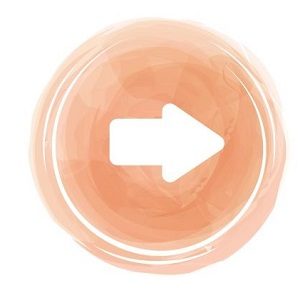 Call to Action
Call to Action
You know, I think the final step is that you've got to tell people what you want them to do next. You've got to have a call to action. Now they know you, now they know your stuff, so now what? What do you want them to do? Do you want them to go to a website? Do you want them to read a blog post? Maybe you've got a re-targeting campaign set up? So, anyone that hit your blog post, that you've got out there for free, you're going to be re-targeting them for the next 180 days. Hallelujah! Thank you Facebook! They don't even have to opt in. You're just going to follow them around. Not that I know anything about that... Or, maybe you do want them to opt into something. Maybe you want them to go buy your book, or maybe you want them to download your free Kindle book. Maybe you want them to subscribe to your podcast. Maybe you want them to subscribe to your YouTube channel. Whatever you're working on at the moment. By the way, your call to action can change depending on what you're working on at the moment. It doesn't matter what your call to action is, it just has to be something. You just want them to go somewhere because if they liked you, and they thought your stuff was good, now give them more. What's next? Give people their marching orders. That's another thing. In the business world, people want a leader. They want to follow a leader because they don't have the time to figure out a lot of this good stuff themselves. They are busy doing what they're doing. If they identify you as an authentic leader, someone that's genuine and somebody that they trust, such as when you do make a call to action, when you do have them do something, or ask that they do something, not all of them are going to do it. However, there's going to be a percentage of those people who resonate with you and your story that will actually take the action. Those are the cream of the crop people. Those are the people who you really want to be doing business with anyway. Why are those the people who you want to be doing business with anyway? It's because, 1), they made a decision, and 2) they took an action. So, they didn't just decide, "This is good stuff, I'm going to have to go get that later." They did it right now. You know this, if you've worked with anybody. The greatest joy they get is when they come to us and say, "What should I do," and then they go do it and get their results. They're like, "Hallelujah!" Then, they go off and do their thing. We want those people who have made that commitment and taken that action, however small it may be. It doesn't necessarily have to have purchased a product. Just going to like the Real Fast Results podcast would be an action they could take. Connecting with Felicia
If you like the idea of trying to figure out what you want to say and having it ready to go, and you liked the story about how I was just able to jump up on stage, that would mean that you'd want to have a signature speech ready to go. So, go to SignatureSpeechSecrets.com, and you can opt-in there and get something for free. Learn about how to do the signature speech, and if you think the beginning stuff sounds great, I have a whole training that you can sign up for after that. If you think the beginning sounds good enough and you can run with that, awesome! I have plenty of other stuff coming your way that will help you. It starts with having your signature speech ready to go at a moment's notice, knowing what you're going to say, knowing how you're going to say it, and feeling that confidence. That's SignatureSpeechSecrets.com.Resources
Felicia's Book: Kill the Elevator Speech: Stop Selling, Start ConnectingReal Fast Results Community
If you are diggin’ on this stuff and really love what we’re doing here at Real Fast Results, would you please do me a favor? Head on over to iTunes, and make sure that you subscribe to this show, download it, and rate & review it. That would be an awesome thing. Of course, we also want to know your results. Please share those results with us at http://www.realfastresults.com/results. As always, go make results happen!
Sep 2, 2016

Welcome to this edition of the Real Fast Results broadcast. Dani Hedlund is here today to share her secrets on how to get a literary agent. This, of course, is very important to know if you have a desire to become traditionally published. Let's see what she has to say...
Today's Promise
Today I'd like to talk about how you go about getting a literary agent. There's a lot of debate about whether or not a writer should seek out an agent, or whether or not they should go to an independent publisher, or even a self-publisher. It's the stance of my company, and myself, that the best way to go about getting your work out to the public is going through an agent. The reason for that, agents are your best avenue to a large traditional publisher. Frankly, if we have ideas that we want to put out, maybe that's through a quirky sci-fi or a deep-rooted memoir, we want as many people to read that as possible. What we are aiming at, as authors or editors, is to get that to the largest house that can give us the most proliferation. That is always a literary agent. Your top five, or top ten, publishing houses do not accept unsolicited work. So, these agents are the gateway into that larger avenue. Literary agents have kind of a horrible reputation of being these, you know, heartless bastards that are exploiting the great writing of these new creators. However, in a lot of ways, literary agents are the new editor. They are the people that you call in the middle of the night, and you're drunk, and you don't know if you're going to have to kill off that character. Your agent is going to be the one that's like, "Okay, calm down. I don't know. That character kind of needs to die, but let's drink and talk about it." And, they're also there to make sure that you don't get screwed. They are there to verify all of your contracts, to make sure the house that you're at is the right one. Also, now that there's this huge avenue for writers to go from book deals to film deals, an agent is going to be the one that makes sure they can navigate that new space. I mean, we're writers; we all wanted to grow up to be Hemingway without the shotgun. We don't know these sorts of things. So, we need someone to be our conduit through it all. Literary agents, in that respect, are the goldmine of being able to help a really great author get everything they want out of the industry.Finding the Right Literary Agent for You
 Let's say that you have a great book, and that's going to be where we'll start. The end goal will be that you have an agent that signs you. I'm not going to do any of the "write a book well" sort of talk. We are all starting from the point that you need to sell it. This is a very common situation, where I will come into work and have a really brilliant novelist who has the "Great American Novel," and this person can't get an agent to reply to them. A big thing with that is just forming the query. The way that querying used to work, like back in the day, before the 90's, was you wrote a good book, you summarized it in a page, and then you sent it. Agents just wanted a good book, so they would read an interesting description, they'd ask for pages, and then they'd buy it. That world is no longer the world we're living in. We're now living in a publishing world that's inundated with so many books and so many queries that agents are trying to make their jobs as easy as possible on themselves, which means a query letter has to do two things.
Let's say that you have a great book, and that's going to be where we'll start. The end goal will be that you have an agent that signs you. I'm not going to do any of the "write a book well" sort of talk. We are all starting from the point that you need to sell it. This is a very common situation, where I will come into work and have a really brilliant novelist who has the "Great American Novel," and this person can't get an agent to reply to them. A big thing with that is just forming the query. The way that querying used to work, like back in the day, before the 90's, was you wrote a good book, you summarized it in a page, and then you sent it. Agents just wanted a good book, so they would read an interesting description, they'd ask for pages, and then they'd buy it. That world is no longer the world we're living in. We're now living in a publishing world that's inundated with so many books and so many queries that agents are trying to make their jobs as easy as possible on themselves, which means a query letter has to do two things. - It has to do the old thing it always did, which was making a book sound interesting,
- but it also has to make an author seem marketable.
Writing a Good Query
The first thing about making a book sound interesting is you have to sell it in a way where it's not just like the back of the book blurb. It has to be, "Here's a new interesting idea, and then here's possible ways it could go," without actually telling the agent anything about the ending of the book, and never, ever telling the agent how to do their job. A very good query starts out straight in, and it's going to say, you know, "Sandy McClain was a woman who always knew her place in the world, until the day she discovered a letter written from the future." Yes, that's a terrible line, but it's going to show you instantly that I have a character and here's why I care about them. That's going to make up one or two paragraphs of the query, but a lot of times an agent won't read those first couple of paragraphs. They'll skip right to the third paragraph. This is the crux of selling the author. This third paragraph just says where else the author has been published. That's called a publishing platform. It'll say something like, "This author has been published in The New Yorker and The Paris Review," or any literary journal or anthology. What this says to an agent is, "Okay, somebody else has already taken a chance on this author. This author clearly can write well, and they're already developing a fan base. Great. Most of my work is done for me." After they see that, then they'll go back to look at what the book is about. A lot of really great authors will even sell their books while developing the query, but since they have no publishing credit, an agent would be like, "Ugh, I mean, that sounds good, but do I really want to waste the hour it would take me to read the first couple of chapters?" And, often times, the answer is no. Definitely when you're querying an agent, make sure that you're selling the book well and that you're selling yourself well. Another weird thing that's emerging in the industry right now is social media platforms. Again, before the 90's, publishing houses were big enough, and they had enough money, that they had really large marketing departments. That meant you could take a totally unknown author, buy their book, and then marketing people would market. Nowadays, people are reading less and that's hemorrhaging from the company. So, large publishing houses are taking that out of marketing and publicity. Which means that the author has so much responsibility now to market themselves and so does the agent. That's why an agent makes a larger percentage now, because they do a lot of the marketing work. One of the things that a lot of agents look for is they'll have their secretaries Google your name and then write down the number of Twitter or Facebook followers at the top of the query. I know so many agents that just discard anything with under 1,000 Twitter followers, which is crazy. They don't even read the query letter. It's very important for an author to make sure that they are creating a professional social media platform. There are so many young authors that I run into, and their social media handle is like "SweetCheeks5". Like that's the first thing I do... I'm like "No. Use your name. Be professional. Reach out to other people in the industry." A very important thing, in writing a good query letter, is selling yourself as well. - Get good publishing credit.
- Have a strong social media/marketing platform.
- And of course, sell the book well.
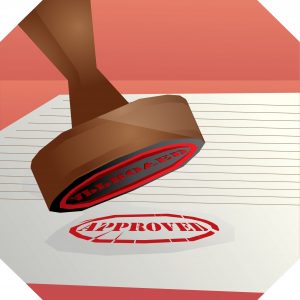 How to Make Yourself More Attractive From a Marketability Standpoint
How to Make Yourself More Attractive From a Marketability Standpoint
The most common thing that is done is to get smaller publications. That's submitting to literary journals, submitting to contests, submitting to anthologies. The big reason for that is you have people in the industry taking a chance on you and publishing your work. That allows you to build a fan base, but mostly it just shows the agent, "Okay, that person writes well enough that someone bought something they wrote." It can be a literary journal that no one has ever heard of, or it could be a very prestigious literary award, it just has to be something. This is especially true for literary fiction. If you're writing literary fiction, you need publishing credit because that is one of the most difficult industries to both make money in and to find representation. That's just because it doesn't sell near as well as the other aspects. So, that's publishing credit, and that's very important. A really great thing about publishing credit is that if you're writing shorter works, you're growing as an author. I could just kick myself because my first work, right out of the gate, I wrote a novel. If I were writing and published short stories first, I would have learned all of the very stupid things that I was doing in a short, manageable way that didn't make me think, "Oh my God! I have to get rid of the last three years of my life." I highly encourage writers to always be making short work, and it's a great emergence into the industry, and it's another way to make contacts. A lot of the time, you can get published in a literary journal and an editor will be like, "Hey, I was so excited to publish it, can I help you in some other way?" The moment someone in the industry turns around and says, "Can I help you," that's a wonderful moment. That's a big aspect. Especially if you're writing nonfiction. Blogging and building up a blogging fellowship is also incredibly helpful. You look at The Rules of Inheritance, which is a beautiful memoir that was published a couple of years ago. Jennifer Lawrence ended up insisting that the film rights were purchased, and it will be a wonderful film, and Claire is a wonderful writer, but she didn't [need to work on getting] an agent because she ran one of the most successful grief counseling blogs in California, at the time. So, she got to pop that into her query and say, "Hey, I already have hundreds of thousands of followers that care deeply about my grief counseling, and I want to write a non-fiction book about losing my parents to cancer." And, the agent was like, "Okay, I'll book the writer. You instantly can sell." I know that blogs get a lot of crap in the industry, but they're great. If you can make people care about you, that is wonderful, and social media is the same sort of thing. If you're writing quick little things about your cat that, you know, 70,000 people like, cool. Good. I mean, if you write about physics, at least 10% of those are going to come along. So, those are great aspects to grow, and depending on what you're writing, you can build up that sort of awareness in other arenas. For instance, if you were writing historical fiction about the Roman Era, and you're a Roman critic at Oxford, that's going to lend a huge amount of credibility to an agent being like, "Okay, you're definitely the person to write this." That works in a lot of different arenas. You know, if you're writing a feminist non-fiction piece, and you're the head of a feminist group in your state, then great. So, anything that could help an agent paint for themselves, "Okay, this person obviously has the ability to write this book, and they have credibility that I can market," is really good. There are certainly unconventional ways to build publishing credit, but those tend to be the ones that are the most successful and the most accessible to agents. The other thing that I would say, that one of my authors pointed out to me a couple of years ago, and it always really stuck with me. His name is Scott O'Conner, and he wrote Untouchable, which was a totally wonderful book. He's brilliant. I love him... But, he told me that the most successful thing that he ever did for his writing was to be "a good literary citizen". I've always loved this. He ended up landing, essentially, his book deal because he stalked his local bookstore. He went to every single reading, every single time someone came out. He read their books. He went and he talked to them, and book signings, honestly, aren't very popular. So, you'll end up having a really great writer that has, you know, ten people come to the book signing, and you talk to them afterwards. You talk to them about things they care about. Suddenly, you have an arsenal of people with power and influence who like you. He ended up randomly getting his book deal because the bookseller was like, "I want to pick up this book. What do we need to do about it?" And, he just stalked this book store for like five years. Giving back to the community in that way, going to signings, reaching out and doing reviews of books, and you can build that on your blog. If you're a young person, get involved with your literary journal at your school, intern somewhere. This is just a game of who you know, and who you can grow from, and who you can lean on when it matters. Clearly, use those connections. Anything you can do to build connections is the right way to go. Where to Send Your Query
We've discussed, roughly how to construct a letter. You sell the book well. You sell yourself well. But, who in the world are you going to be sending it to? Where are you going to find a good literary agent? This is one of the most common steps I see authors struggle on. The first thing they usually do is list to me their favorite writers, which it's everything from Neil Gaiman to Stephen King, and they think, "Well, I kind of write it like that. I want that agent." exceptions to that rule, but generally, if you are the sort of agent that represents really big names, you may only have five clients. That's all you need because you are pulling in 20% of these enormous deals. Take into account where you are as an author, and then try to reach out to an agent that's in a similar place. There's a really wonderful website called AgentQuery.com, and it lists pretty much all of the agents out there and the genres that they like, and what they're looking for, and whether or not they're actually open. I would recommend going in there. There are great little checkmarks where you can say, "I write fantasy. It's magic realism. I'm looking for this kind of an agent." Put together a very nice spreadsheet. You have to be so organized about this stuff and figure out when they're open for submission. And, it's very important to specify why you are submitting to that particular agent. That means it's a lot of research. If you see an agent that fits all of the things that you're looking for, and you read their description, and they want, "Character-driven sci-fi that has reflections on society," and you're like, "Oh my God! That's what I just wrote," you can't just put down, "I read those things, and that's what I wrote." You have to put in the time. It's a lot like dating. You have to listen to what they want and then know things about it. Go look up the titles that they represented, and then figure out whether or not that's the sort of thing that you fit into. That way, in the letter you can say, "Dear Mrs. Johnson, I would be really keen to be represented by you because you published this book, and it does this thing, and my thing is like that." Then the agent will be like, "Okay. You put in some time, and you actually know what I do for a living. You respect me, so let me show you respect." That's a very common thing that new writers don't do. They just assume, "I'm going to be making the agent money, so why would I have to do that?" It's not like that at all. It's a mutual relationship, and if you start with respect, they will give respect you back. The best way to find an agent is by looking at the books that are most like what you write, and go to the back of the book, to the acknowledgement page, because every writer acknowledges their agent. Then, look up that agent directly and figure out what they are doing. I find that [looking in] Barnes & Noble's "Discover New Writers" section is a super great way to poach agents in the way that you know that those agents care about new talent. They're looking for new voices, and they are usually pretty new in the industry because that's who deals with debut talent. Go through and find books that are your book. Read all of the descriptions, or order the books and read them, and then really care about querying to those agents. New people in any agency, like always junior agents are lovely. They're still not broken inside, so they still read most of the queries. Make sure you're querying to the right sort of people. Also, there's just a couple of things you should never do. Never, ever use the words, "I think this will be a bestseller," and never say it has "film potential". Agents hate it when you tell them how to do their job, so never, ever do it. I find that comparative lines, and by that I mean, if I say that I have written Fight Club meets Grapes of Wrath, that tends to work pretty well on East Coast agents, but like UK agents hate comparisons. It's a very weird sort of thing. But, kind of figure out what demographic [book fits in]. There are so many great resources online. QueryShark is one of them. It's a wonderful New York agent who, essentially you just submit queries to her, and she chooses them, and then she just rips them apart online. But, it's the most helpful way to figure out what you're doing wrong. There are a lot of weird sorts of things for that, and there are a lot of resources. Just make sure that you're not falling into the pit holes of telling an agent what to do, and make sure that you are querying to agents that actually care about the stuff that you care about. That is, along with showing the fact that you have publishing credits, you have a marketing platform, and of course, your work has to be really good to start with.  Steps to Finding Literary Management
Steps to Finding Literary Management
- The first step is writing the query exceptionally well.
- The second step is making a list of all of the agents that you want to reach out to and doing the actual research.
- Then, the next step is sending your queries out.
Genres that Sell
There are certainly statistics. You can just, essentially, Google how many sci-fi titles got moved by Penguin or all that jazz, and they fluctuate a little every year. I can tell you with certainly, the thing that sells best in all of the book world is non-fiction. That's everything from memoirs, to celebrity memoirs, to cookbooks. It sells significantly better, but in terms of what sells for fiction, it is without a doubt genres like mystery and fantasy. The thing that sells the absolute best is YA (young adult). Young adult books can reach into so many different demographics, and that tends to sell exceptionally well. If I had to go back in time and tell you that you need to create a bestseller and make as much money as you possible because your life is on the line, I would have you write a YA book because I know that's where the money is at. It's really where it's at. If you really want to sell, write a YA series. Anything where you can have the same characters for as long as possible, it's a win. But, aside from YA, our genre really sells about the same. From fantasy to romance, it's very similar demographics. Literary fiction, on the other hand, is less than 10% of the market, and especially anyone that goes out and gets an English degree, they pop out wanting to write literary fiction. You know, we all want to be Dickens and Hemingway, and that's fine. You've got to write what you feel. You know, if you wrote Brickhouse, you put down that you wrote a murder mystery. You do not write that you wrote literary fiction. Pretty much, don't write down "literary fiction" on anything, ever, or at least not anything if you can avoid it.Find Writer Friends
I think that's what I would recommend, more than anything, is to go out and find writer friends. I know that might seem contradictory of all the very process given, but this is a very difficult process. One in a million get an instant acceptance. Their uncles are literary agents, and you know, they went to the Iowa Writing Workshop and walked out with a contract. You're really going to start doubting yourself. You're going to doubt whether or not you're a good writer, you're going to doubt whether or not you made the right move when your mom was begging you to become an accountant. It's going to be so hard, and the only thing that's going to get you through that is to be able to lean on people that care about the same things that you care about, and that care about you as an artist, and that are going through similar things. I remember going through this process, and I had friends that were going through the same things. We would go to the pub and buy each other a shot for however many times someone got rejected. You have to lean on each other because this is going to hurt so badly, but it's worth it. If you have something great that you've written, it deserves to be in as many hands as possible. You have to put in this hard work now. Be open to revisions, and be open to change, but keep believing in yourself and lean on the people that believe in you. It's going to be hard, but it's going to be worth it.Thoughts on Self-Publishing
I have a really hard time with self-publishing in the respect that there are a lot of times when a self-published book falls on my desk, or even an independently published book, and honestly, it's one or two edits away from being picked up by a big house. I look at the print numbers, I look at circulation, and this book that could have changed the way that people think, it sold at its max, maybe 1,000 copies. I know, as a publisher, that this could have gotten a major distribution. It really breaks my heart because this author not only has shot himself in the foot for this book, but he's come onto the scene as a debut author, which is one of the only aspects of publishing that still has any marketing oomph. You sell well as a debut, or you sell well as established. This middle ground is the really, really hard part. Honestly, it breaks my heart. And, that doesn't mean that there aren't some books that are brilliant and no traditional publisher will pick them up because no one wants to take chances. There are times like that where I will advise an author and be like, "Hey, you've written something brilliant, and it's insane because I don't know of any way to get it published. The only way is for you to go out and just do it yourself." But, I've said that twice in my 12-year career. I definitely think that if you believe in yourself, and if you're getting feedback where people are saying, "Hey, this is good. This is worth it," just put in all of the rounds of revisions. It sucks and it's heartbreaking, but do it because your work deserves it. Honestly, going it alone is so hard. A lot of people think that it's easier than surviving with an agent, but if you really want to get out there and get your voice heard take the hard road.Connecting with Dani
I run a non-profit called Tethered by Letters. We are an international company that helps people do exactly the things that I'm rambling about. We run full editing workshops, we walk people through the query process, and we are, you know, the strange, loud advocates for, "Hey, you've written something really well. Let's help you get it published." You can find us at TetheredbyLetters.com, an internationally distributed literary journal. It is the fastest-growing literary journal in the states. We just found that out, and we're so excited that we're going to get it tattooed somewhere. So, if you're looking for some way to get that publishing platform credit and certainly try out F(r)iction. It's totally lovely, but I'm completely biased. So, reach out. We're always happy to help. That's what we do.Resources
Books Mentioned by Dani: The Rules of Inheritance Untouchable Station Eleven AgentQuery.com QueryShark TetheredbyLetters.comReal Fast Results Community
If you are diggin’ on this stuff and really love what we’re doing here at Real Fast Results, would you please do me a favor? Head on over to iTunes, and make sure that you subscribe to this show, download it, and rate & review it. That would be an awesome thing. Of course, we also want to know your results. Please share those results with us at http://www.realfastresults.com/results. As always, go make results happen!
Aug 30, 2016
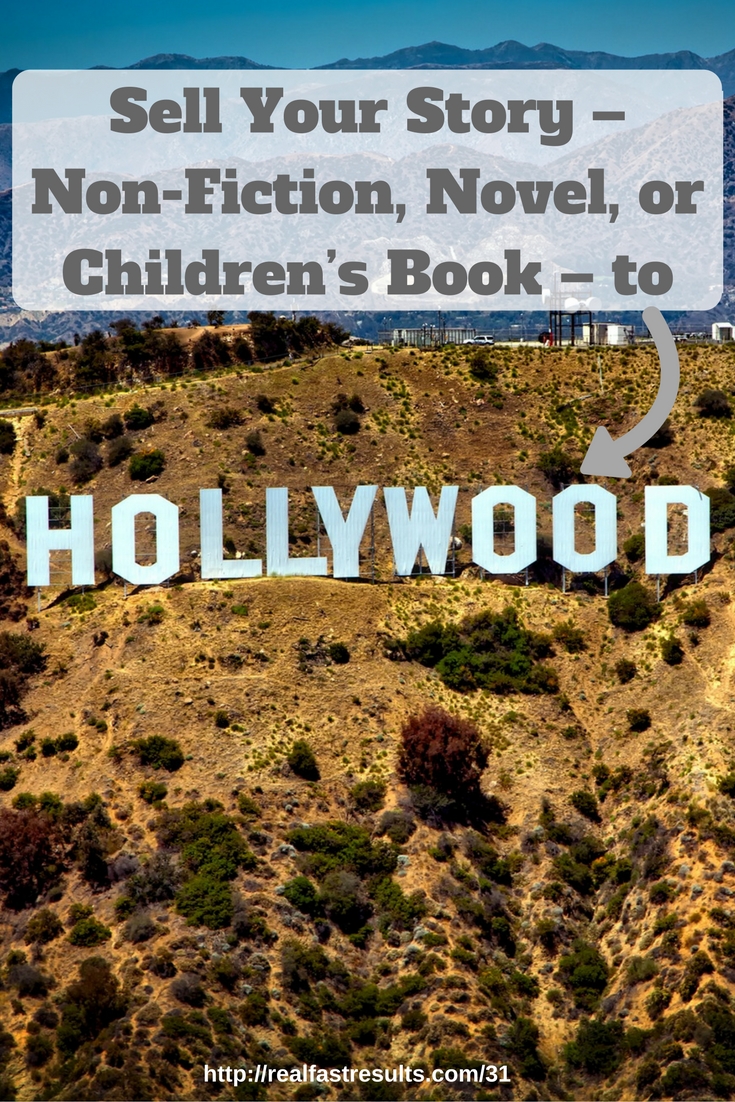 Welcome to this edition of the Real Fast Results podcast! Today's special guest is Dr. Ken Atchity, who is a very well-known Hollywood producer. As a matter of fact, he is a producer and author who has also worked as a literary manager, speaker, writer, editor, and professor of comparative literature, among other things. During this exclusive interview, Ken shares insight on what it takes to sell your story to Hollywood. Without further ado, please welcome Ken to the show...
Welcome to this edition of the Real Fast Results podcast! Today's special guest is Dr. Ken Atchity, who is a very well-known Hollywood producer. As a matter of fact, he is a producer and author who has also worked as a literary manager, speaker, writer, editor, and professor of comparative literature, among other things. During this exclusive interview, Ken shares insight on what it takes to sell your story to Hollywood. Without further ado, please welcome Ken to the show... What's Your Promise Today?
I think what we're trying to get across today is giving our audience insight into how a story gets sold into Hollywood and whether they should have any hope of selling their story into Hollywood. That's my goal.What Are the Benefits of Selling My Story?
Every book writer and storyteller would like to see their story in front of a maximum audience. That's what I have dedicated my last 30 years to, is helping storytellers find their maximum audience, and I long ago realized, of course, that the maximum audience is the screen. We used to call it the "big screen" and the "little screen" before the advent of the flat screen in homes. Sometimes that screen can be as big as the one at the movie theater. But, in any case, television and film take stories around the world. There isn't a country, with the possible exception of Saudi Arabia, that doesn't love movies. When you get a story told to the movies, the world gets to see your story. You know, it can be dubbed in 182 languages, etc. If the story came from a book that you wrote, then guess what? The book will sell many, many more copies than it ever sold before. We've had several examples of that in the last couple of years. The Lost Valentine with Betty White ended up selling a whole bunch of copies of the book, which was republished for the purpose. Meg is about...after years and years of preproduction, Meg is going into production this summer in New Zealand, and we've already geared up the books to be sold again, even though they've been selling for 15 years now. They'll really sell now because the movie becomes a commercial for your story, for your book. So, it will sell more books. You're getting your story out to everyone, the people who read and the people who watch. That's the exciting part about making a Hollywood deal.Can You Run Me Through the Steps of How My Story Might Get Told?
I think the first and most important element your story needs to have is to be universal. It needs to be the kind of story that everyone wants to hear about. There aren't that many stories in human experience, but we want to hear over and over again because every time we hear them anew, we actually hear things we haven't heard before, and we think of that story in ways that we hadn't thought before. Therefore, it applies to our life and gives us a better inkling of how to deal with this crazy hodgepodge of stimulation that we call life. Stories are...When we stop, and pause, and ask the question, "What's it all about," and "What would happen if a person like me got stuck into a situation like that,"...That's kind of the ancient formula of storytelling. So, its first quality is it has got to be something we care about universally. You can start with the Seven Deadly Sins, or the Seven Virtues, and it isn't hard to figure out what people care about. Love, and hate, and fear, and loss, etcetera, these are all big human subjects for stories, and therefore universally applicable. That's the #1 quality that you need to have. The second quality that a story for Hollywood needs to have is a hero. I use the word loosely because I know better, as a former professor of classics and Greek drama. I know that the real word is protagonist. The Greeks invented that. The very first plays that were staged in Athens only had one actor. He was the protagonist. He was not only the protagonist, he was the only actor, and he basically came out on stage and acted out a story. Later on, some genius added the second actor, who was known as the antagonist, the one who tries to stop the protagonist because he has opposite goals. You know, we were off and running with drama when we had those two actors. We still need that first actor, the one whose story it is and who has to do things in order to make his story turn out either happily or tragically. So, that's what the protagonist is all about, but he's the first...He's the actor, the one who causes action to happen, and he is the primary reason that we're watching. That means the protagonist, the hero, has to be sympathetic. Sympathetic is another ancient Greek concept. It doesn't mean that we have sympathy because he lost his mother or he lost his daughter. It means that we are able to suffer along with him. That he's got such charisma as a character that we instantly get his suffering and can experience, through him and with him. That's what "sympathetic" means. So, we need a sympathetic hero. If someone's completely unlikable, we lose interest within the first few minutes, but this hero doesn't necessarily have to be a good guy. My favorite example is Shakespeare's Richard III, where this ugly, kind of crippled, stupid guy comes out onto the stage in a black costume and proceeds to tell us how unhappy he is with life because he's constantly getting the short end of everything and that he's finally decided to do something about it. He's going to go out and kill his brother's family and take the throne, after committing the 10 crimes that he predicts that he will commit. Within a few lines of this amazing opening, everybody is totally rooting for him, not because he's a good guy, but because we are fascinated, mesmerized, horrified, by his candor. You know, his outspoken willingness to tell us how bad he is and that he's going to do something about it, and we watch in horror for the rest of the play, until he finally brings himself down in ruins along with the whole kingdom. There's an example of a sympathetic hero. Or, the beginning of Lethal Weapon, the first movie, when Mel Gibson wakes up in his really sleazy-looking trailer and reaches for a beer can that's open. He takes a slug of beer, stands up and takes a walk into his bathroom and pisses. Then, sits down again, pulls out his gun, and starts Russian roulette with the barrel of the gun in his mouth, and then we learn that he's a homicide detective. Within the first few minutes of this, we can't stop watching. Here's a story in which the hero is a suicidal homicide detective, and of course, he's matched with a partner who has only got a couple of weeks to retire after a long and happy career. So, this is called creating sympathy for the characters, and these are some of the qualities of a great story. Those are three big things that you need to have to get your story sold to Hollywood. There are others. There has to be a very three act structure. What are the three acts? The beginning, the middle, and the end, not necessarily in that order, as a famous Italian director once said, but you have to have them. The ending has to be conclusive and satisfying. It can't just be intellectual, and thoughtful, and [open ended]...Movies that have those types of endings are not huge blockbuster successes. People pay for stories, and stories as far as ordinary people are concerned, the audience, is "I want something that instantly drags me into the story, that keeps my attention the whole time, and then that punches me at the end with a conclusion so satisfying that I feel like I really got my money's worth for my ticket. And, if I'm watching on television, that doesn't cause me to push the remote at any time during the story, other than maybe to turn the volume up. That's what it's all about, and that's what we are all looking for in Hollywood. The good news about Hollywood is that it has become a lot more complicated than it used to be. It's much more voracious for stories than it used to be because we have so many channels, and so many outlets, and so many ways of distribution. All of them have to be fed, like a dragon that's eating rabbits. It needs rabbits every day. If it sees a rabbit it likes, then it will make a deal. It chases rabbits, and you know, one of the things that struck me when I entered this profession, from the academic world years ago, is that there are people called "trackers" who spend their whole days tracking down the rights to stories, and calling people like me and saying, "Do you control the rights to XYZ story?" All they want to hear is "yes," or "No, but I'll tell you who does control them." Then, they report back to their bosses, who pay them monthly just to track stories. I thought, "Wow, this is really the world of storytelling if people are tracking them, not to mention paying lots of money for them, and investing millions and millions into making movies out of them."What Can I Do to Punch Up the Ending to My Story?
Be creative. That's where the creativity comes in. You want to have an ending that leaves people bowled over and thoughtful, and sitting there in the theater thinking about it because they're so impressed by it. If it's an action movie, it's going to be a big, climatic action scene with explosions, and guns, and all of that kind of stuff. If it's a romance, you want a very satisfying conclusion. It doesn't always have to be a happy ending, although in today's world that's what mostly succeeds. I always use the example of the ending of Witness, where Harrison Ford's character is leaving Kelly McGillis' character, who lives on an Amish farm in Pennsylvania. He is a tough Philadelphia detective, and as they kiss for the last time and he gets in his car, the audience is heartbroken. They are thinking, "This is the most beautiful romance we've ever seen, and now he's leaving?" The director, Adrian Lyne, shows a very large place, a ranch or a farm, with a very long driveway. That was probably the most important thing, when they were location scouting, was to choose it for the length of the driveway because his last shot is of Harrison Ford's car driving down that driveway. As it's driving down, we see that it's slow, it's hesitating, and we're rooting for him to make a u-turn and go back into her arms because she's standing there in tears, watching her leave. Then, as it keeps going, and he doesn't turn around, we start thinking, "Wait a minute, would I believe that? A Philadelphia detective decides to live on a farm with Amish people, or would I believe it if she jumped in his car and went to Philadelphia with him? Can I see a future in that?" And, you realize, you get resigned to the fact that that's not the way this story can end. Finally, he reaches the end of the driveway and disappears from view as he turns, and you feel stunned by the beauty of the story and by the realization that some romance doesn't have to end in wedding bells and have happy endings. It doesn't make it less beautiful; it just makes it more real. So, there's an example of enhancing an ending so that the story leaves you satisfied. And, notice that the director is filled with dramatic insight because he knows that it will take that long for the audience to be rooting for the ending he has chosen for this story. You know, if you did it too suddenly, you'd feel weird and dissatisfied. So, suspense and drama are what movies are all about, and if what you started with isn't dramatic or suspenseful enough, you write a treatment to fit your story, and in that treatment, you make sure the ending is more dramatic than what your source material was.What is a Treatment? What Else Will I Need?
I wrote a book about treatments years ago because I kept hearing the word, and I realized no one had a common definition of it. My partner and I, Chi-Li Wong and I, did a survey of 200 execs in television and film, and writers and directors, and got back responses. We used those responses to explain what a treatment is and to define what a treatment is. Basically, it's a tool that has two functions. It's a tool for focusing your story, like a diagnostic tool, and it is a tool for selling your story, a marketing tool. So, diagnostics and marketing. I always urge the writers that we work with to write a treatment before they even start writing a script or anything else. The treatment is the perfect way to do it because you're not invested emotionally in the pages you've created. Since they're simply a tool, they're not the final result, and you don't have to moan and groan if we decide to change the sex of a character, or if we decide there are too many characters, you can just cut out the character and put him in the back of your head for another story sometime. So, a treatment is very useful because it allows people to read a quick overview of your story, you know? It can be five to, say, ten pages long. There are no rules about that. We say a treatment is a relatively brief narrative, a loosely-written narrative. I always say the best way to think of it is like a passionate letter to your best friend, explaining the night that you walked out on your wife. You would not be using expository prose from sixth grade lessons; you would just be explosively describing, "I came home, and I found her naked in the middle of the living room, dancing with my neighbor who I thought was my best friend." And, "blah blah blah..." You just instantly blurt it all out. That's what a treatment is, and it makes someone immediately want to make this movie, basically. That's what a treatment is, and it's one of several things you need to market your story. Another thing that you need is a pitch, which is a one-line pitch of your story that will be unforgettable, describing the situation in a way that makes the listener want to know how it comes out. As I said, the skeletal, generic pitch is, "What would happen if a gal like this found herself in the middle of a situation like that?" That's what your pitch needs to be. Once you have that pitch, it's called a logline, you can then email it to people in the industry who might be interested in looking at your story. They'll then ask you, "I'm interested in the idea you have. Do you have the treatment, or what do you have?" And then, you send them the treatment to further hook them. At the end of the day, if you started with a script or if you started with a book, they'll ask to see that too, but it's a sales scenario in which these are the tools that you use to make the sale. A one-page synopsis is part of it too. Like, you'll have a pitch, a one-paragraph or one-page outline of the story. Well, not an outline; you shouldn't use that word because that's one of those sixth grade word that, synopsis/outline, nothing to do with drama, nothing to do with Hollywood. We want something that punches us in the face and makes us decide, you know, "you've got to see it". That's the biggest, probably...Most used sales pitch of friends to friends on the phone, or email, or text is, "You've got to see it." Then, they might say, "Well, what's it about?" And you say, "It's about a dog that waited for its master for 25 years, until he came home." You know, that's the pitch. "Okay, I'll see it." You know, "Who is in it?" "Richard Gere. " "Okay, I definitely want to see that." You know, it's that simple. It's not complicated psychologically; it's just human.So, If My Story Doesn't Have All the Elements That it Needs, I Can Just Repair It in the Treatment?
Exactly. The treatment, what the beauty of it is...Let's say your story is based on a book that you wrote, if your book doesn't have a conclusive ending, now you give it one. If your book doesn't have a well-defined "Act II", with a lot of ups and downs and twists and turns, you make sure the treatment does. You might have to invent some of that stuff, but that's okay. You're the creator. You invented the story in the first place. Now you try to make the story a movie, and movies are governed by action. I always say there's two kinds of action. One is, "He opened the front door and she shot him." You know, "She was standing there with the shotgun and blasted at him." That's action. But, dialog is also action in a movie. It's not action in a restaurant where you overhear someone at the next table because mostly people are saying kind of inane things like, "How are you feeling today...Oh, I'm feeling okay. How about you?" This kind of dialog is not dramatic dialogue. Dialog is...You know, there's a famous scene from China Town, Robert Towne's script, in which the detective, Gittes, is with the leading lady, and he says, "I want the truth,' and she says, "My sister...She's my sister." And, he slaps her and he goes, "The truth, god damn it, I need to hear the truth," and she goes, "My mother," and he goes, "I just want the truth," and he slaps her again. "My sister, my mother, my sister, my mother..." Then finally, "She's my sister and my mother." This dialogue suddenly reveals why this woman is so tortured and why, you know, the things that have happened in the story have happened. It's extremely dramatic, with very few words. There's a great line in a Hemingway short story that I also love, in which these two people are sitting and waiting for a train in Spain and he is jabbering away, talking about like, "It's fine, you'll just go there and let a little air in, and then everything will be fine, and we'll be just the way we were before, and there's really no big deal to it." The girl is not saying anything, and he keeps talking. "I'll go with you if you want me to. I mean, I'm willing to do it, but you can do it by yourself," and so on. And, she says, "Would you do me a favor?" "I'll do anything for you. I told you, I'll do anything for you." Well, she says, "Will you please, please, please, please, please stop talking." The next line is...The man did not say anything for a moment, and then he said, "Would you like a beer?" You realize, at that moment, that there is no future for this couple, that he is not on her wavelength, and that they are headed in a different direction. That's all done with dialogue. There's hardly any action in the story. You know, there's hardly any physical action. It's done with only dramatic dialogue, which is action. And so, novels have much non-dramatic dialogue in them, connectives that get you from one place to the other, but when you actually want to turn it into a film, you need to get rid of all of that and replace it only with the dialogue that moves things and makes things happen.Any More Words of Wisdom for People Who Really Want to Do This?
It's difficult. That's my first word of wisdom. It's not easy. Think about it. Everyone in the world would like to have their stories told by Hollywood, but the great part about it is the difficult part. The fact is, when you succeed you will have done what everyone in the world wants to do. So, you need to be your own decider here and not listen to the advice of anyone. Just go for it, and never stop going for it. Just learn as much as you can about the business (It's called "show business" for a reason), and about how it works. That is our #1 goal...is to help you to understand the business procedures by which it works so that you have a chance there, and never forget that they are looking for you as much as you're looking for them. I always say, "People think of it as a dark, slow-moving river that you can never get across. In the middle is an island with beautiful trees, and flowers, and beautiful people." Once you get on that island, even though it was difficult to get on it, guess what? It's going to be even more difficult to get off of it. That's because once you're in there, they want you to [stay], and they become loyal to you because they're proud of the fact that you crossed that island. They recognize you for that. So, it's a great goal, and it's a goal that never gets old because no matter how old you are, you can still sell stories and Hollywood is still listening to them. You know, people say, "How many chances do you get at Hollywood?" Well, you get as many chances as you are willing to take. That's how many you get.Where Can I Go to Learn More?
If you're interested in selling your story to Hollywood, you can definitely head on over to http://realfasthollywooddeal.com/ . There, you'll find an on-demand webinar that I helped to produce. It will take you much more in-depth into how to go about selling your story, you novel, your short story, your story idea to Hollywood. It's completely free to check this out. The aim of the webinar is to help you to take that next step in your education, or at least dip a toe and find out whether or not you want to take the journey. You may not. The fact of the matter is that it is difficult, but for a lot of people it's well worth it. That's up to you to decide. The webinar that's being offered for free is an on-demand webinar. You can go, and register for it, and basically start listening to it within 10 minutes from right now. Again, you can check out much more thorough training on this topic at RealFastHollywoodDeal.com. IMPORTANT: If you listen to the on-demand webinar and wish to continue your education I have a special coupon code which will save you $300 instantly - please you the coupon code PODCAST when you check out.Real Fast Results Community
If you are diggin’ on this stuff and really love what we’re doing here at Real Fast Results, would you please do me a favor? Head on over to iTunes, and make sure that you subscribe to this show, download it, and rate & review it. That would be an awesome thing. Of course, we also want to know your results. Please share those results with us at http://www.realfastresults.com/results. As always, go make results happen!
Aug 26, 2016

We're going to deliver, today, how you can build a meaningful audience for yourself. If you're looking to become a self-sustaining entrepreneur, who has a viable business and multiple streams of revenue, you need that.
Building the Right Audience for You
We, in this day and age, have a great opportunity. We can produce content, and we can produce content in many forms. Of course, we have video, audio, written content, and great social media channels, like SnapChat, Instagram, Facebook, you name it...Fill in the blanks. There are all these different content-producing platforms. So, if you want to build, not just any audience but the right audience for you, you've got to come up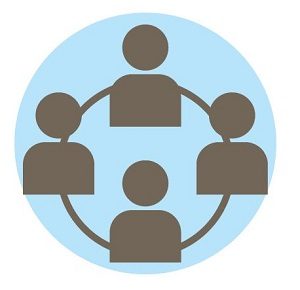 with a content marketing plan. Like, how are you going to deliver free, valuable, and consistent content to an audience? That's then going to become your audience because they are going to know and trust you for providing that free, valuable, and consistent content. Once you have started to build that audience, and have gotten that consistent momentum, it's all about, "Hey, how can I communicate with this audience? How can I actually reach out and say, 'Daniel, can you jump on a quick Skype call, or a quick 10-minute Google Hangout, so that I can just ask you little more about yourself?'" Where are you coming from, why are listening to my content, why are you reading my content, what are you struggling with right now? That way, Daniel can tell you all of their pain points, his challenges, and his struggles. Then I, the person Daniel likes and trusts, because of that content I've been producing and they have been consuming, can create a solution for them in the form of a product, a service, a community, and/or all three. That's the beauty of creating that marketing content and that, again, free, valuable, and consistent manner. And, if you build that audience, that audience will sustain you for years to come.
with a content marketing plan. Like, how are you going to deliver free, valuable, and consistent content to an audience? That's then going to become your audience because they are going to know and trust you for providing that free, valuable, and consistent content. Once you have started to build that audience, and have gotten that consistent momentum, it's all about, "Hey, how can I communicate with this audience? How can I actually reach out and say, 'Daniel, can you jump on a quick Skype call, or a quick 10-minute Google Hangout, so that I can just ask you little more about yourself?'" Where are you coming from, why are listening to my content, why are you reading my content, what are you struggling with right now? That way, Daniel can tell you all of their pain points, his challenges, and his struggles. Then I, the person Daniel likes and trusts, because of that content I've been producing and they have been consuming, can create a solution for them in the form of a product, a service, a community, and/or all three. That's the beauty of creating that marketing content and that, again, free, valuable, and consistent manner. And, if you build that audience, that audience will sustain you for years to come.  Coming Up with a Content Marketing Plan
Coming Up with a Content Marketing Plan
If you want to come up with a content marketing plan, you're going to say, "What's the medium that I resonate with?" Back in 2012, I was like, "I don't like to write. I'm not a good writer." I personally don't think talking head video is very valuable for anybody because, why am I going to stare at a screen where there's just two faces talking? That was my mentality, so I said, "Why not just go for the audio content? That resonates with me; I get it." I like to consume content that makes sense for me, when I'm going on runs, when I'm driving my car, I can consume that type of content, and then I can build an audience around that as well. So, I decided to go forward with the audio-only podcasting content. Frankly, it was a rough start because I wasn't good. I didn't know what I was doing. I had no interview skills. I had no podcasting, broadcasting, entrepreneurial skills, whatsoever. But, I was putting myself in the right position every single day, to do that thing, to get a little bit better. I can even say a couple of years ago I made that same commitment to writing. I was never a good writer. That's why back four years ago I didn't start with a blog. I started with a podcast. But, once I nailed the systems down for that medium of podcasting, I started moving to writing next. Now I write an email every single day. Some of the emails are long, and some of them are short, but a lot of people come back and say, "Wow John! Who is your content guy? Who writes these emails?" And, I'm just like, "Wow! Nobody has ever thought that I was a good writer before, and now a lot of people do, but it's only after writing 1,000 emails that I've gotten to this point." I wrote a lot of crappy ones and a lot of "okay" ones. Then I wrote a lot of pretty good ones, until every now and then, I do come across an idea where I am able to write a great email. But, it always comes down to doing that thing, and that's been really important. Once you've found the content your resonate with, start working on the other area you're not as good at. If that's what it takes to build the business you want. I mean, maybe you get to that point where you've mastered that one medium, and then you look around and you say, "Wow, I have a great business! I get great revenue. I want to continue to focus, and double-down, and dominate this medium in my industry, in my niche." Then you can just stay there. You just stay in that zone with what you're in right there. You don't have to bolt on this or that because a lot of times people do, and then they look back a year or two years later and say, "I just created exactly what I did not want. This business that now consumes me, instead of me controlling the business." You know, I would be very intentional about bolting different things on. For me, I made a very intentional decision, two years ago, to add writing as something that I wanted to improve upon. I wanted to make that part of my business. But, that was after a lot of thought, and we were already growing a large audience in the podcasting area. Tips on Choosing the Right Content Platform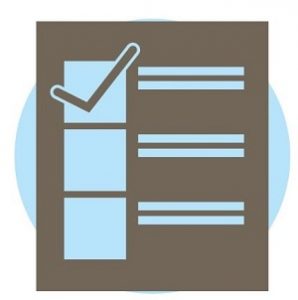
You have to know who you are. Again, I knew I wasn't a good writer. So I said, "I'm not a good writer. I don't like to write." I'm not necessarily a good interviewer, but I do have a much easier time talking, and having conversations, and asking questions in a conversation-type format...in an audible type of format." So I said, "Let's try podcasting." The funny thing is that if podcasting hadn't worked after a couple of months, I might have shifted and tried something different. But, that was just the initial knowledge of the strengths that I had, even though, again, I wasn't strong as an interviewer or as a podcaster at the beginning, but I was stronger than as a writer, or a social media guru, or whatever else there might have been. I just looked at something that I enjoyed and was stronger at than other areas, and I went forward with that. I think that's a good place for people to start. Some people may ask, "Does it come down to persistence?" Persistence, actually, is a word that I would use with caution. You can get into a position where you are digging in a whole. Yeah, if you're persistently digging in that whole, you might strike gold in the end. But, at the same time, you might just be digging a deeper hole, and there might be no gold underneath that. So, you should be persistent to a level, to a degree, but you should always be evaluating every shovel of dirt that you are taking and asking, "Is this still the direction that I want to be digging? Is this still the area that I want to be living in?" If it's not, then step out of that whole, and shift, and go another direction. It's consistency that's key. What are you consistently doing to produce content, to produce free, valuable and consistent content to an audience that you're growing? And, that's in any form, in any medium. Again, for a long time, I was being very consistent with Instagram and with Facebook, but I didn't get any of the traction that I got in those that I got immediately when Snapchat came to light, with their stories. I immediately shifted from Facebook and Instagram, which was my main focus, to Snapchat. And, that's where I've grown a really cool, awesome, large audience that watches my stories, and my rants, and my quotes on a day-to-day basis. Then, a couple of weeks ago, Instagram launched Instagram Story. So, now I'm leveraging my knowledge of how to tell stories on Snapchat back into Instagram. Which before, to me, was not really a great platform because it just didn't allow me to communicate the way that I wanted to, which are in short 10-second bursts of content, ranting, and stuff like that. To me, anybody can post a photo of a quote and get a bunch of likes, but that doesn't distinguish. My distinguishing factor is my personality, my take, my thoughts, my rants, which a lot of people love and agree with, and a lot of people hate and disagree with. But, you know, it's that differentiator, and I'm able to be consistent with the producing of that content.  Evaluate as You Go
Evaluate as You Go
You always want to keep your finger on the pulse. And, "the finger on the pulse" in these scenarios that we're talking about is your audience. It's the people that are consuming your content. So, you need to be looking and interacting with the comments you're getting on Snapchat, with the social media mentions you're getting on your podcast, with the emails that you're receiving. You have to really have your finger on that pulse. A lot of people are scared to because, "I don't want to set the precedence that I'm going to be responding to individual comments, or emails, or this, or that, because that's not scalable, that's not leverage-able." Well, that's not, but the information, and the knowledge, and the value that you get from those interactions is scalable. It's what is going to allow you to create a product, a service, a community, that you can then do 5, 6, 7-figure launches with, like Podcasters' Paradise came to be. It was because people were asking me so consistently about how they could create and monetize their own podcasts. I never would have thought to launch a podcast and community if I hadn't had my finger on that pulse, but I did, and that was 3 years ago. Now we have over 3,000 members and over $4 million in revenue, and that was because I did the un-scalable, unleverage-able thing about having those conversations, about listening, about really caring about what my audience was saying. So, that is always going to have to be part of the equation if you are looking to build a business in this content marketing arena. Next Step in Audience Building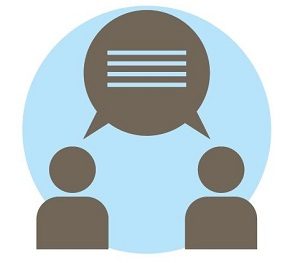
Now that you've created free, valuable, and consistent content, now that you've kept your finger on the pulse and heard what your audience is actually saying, you'll want to go ahead and say, "I've had the content produced for you. You've listened to the content, you've engaged with the content, you've given me your pain points, your obstacles, your challenges, your struggles, and now it's me, as the person you know, like, and trust, to create the solution, to create the products, the services, or the communities that are going to solve these issues that you're telling me that you're having." Then you actually go ahead, and hopefully with the help of your audience, build out a product, a service, a community that's going to be of value to them. That's how Podcasters' Paradise came to be, Webinar on Fire, The Freedom Journal. That's how all of these products and services came to be. It's because I listened to that audience who was telling me their pain points, their challenges, and their obstacles, and I just handed them the solution in the form of whatever I thought would be the best form to provide that solution. And if it wasn't right for them at first iteration, I'd just pivot, adjust, and make that move until it was. Let's say you already have a platform built up, but you really want a massive audience. The step is...You already have that current audience, so you're not talking to them enough, because if you were talking to them enough, if you were doing things that didn't scale and didn't leverage, like scheduling 10 back-to-back 10-minute Skype calls with your audience on Skype, and asking them the real questions, then you would know how to build your audience more. You would know about where that audience heard about you, so you could amplify those areas to make sure they're working. You would hear what they don't like about your show on a consistent basis, or you could, maybe, pivot or adjust that. Then, you would have that idea of what you could create for them that could grow your product suite in the right direction. Then you produce the product, service, or the community, and you offer it to them for monetary retribution. You say, "Hey guys, I created content for you. You loved it, and you listened to it. I asked you what you were struggling with, and you told me. I came up with a solution for you, and now, here it is on a silver platter." "You said you wanted it, and now here it is." Have them start engaging with that paid product, which is something that they have now actually financially invested in. Now you're really going to be just working with the cream of the crop. That real audience. That 5 percentile of people who are your core audience, and that really do want to take things to the next level and get more access to you, or to your ideas, or to your courses, or to the communities that you're creating. Then, you're going to be looking at them and saying, "Okay, how can I add to this? How can I find more of these 5-percenters? People that actually bought? How can I add more people to this buyer's pool while not focusing on the 95% of people that are just consuming the free stuff, but never upping into that next level?" Connecting with the 5%
All we have is time as entrepreneurs. So, we need to get to the point. When we've done all of the steps that we've talked about thus far, then we're now identifying where our time is best spent. Then, we allocate the vast majority of our time in those directions and taking that time, that we used to spend in other areas, that aren't the best use of it. So, it comes down to an evaluating principle, and it's always tweaking, and adjusting, and pivoting, and trying new things, but learning every step of the way in order to get more efficient, more productive, and more focused on what works for you in your business.Connecting with John
All the magic for us happens at EOFire.com. We have great free podcasting courses at FreePodcastCourse.com. We have free webinar courses. We just have a lot of great free resources for entrepreneurs at EOFire.com, and the biggest success that I've seen entrepreneurs have are when they know how to set and accomplish goals. So, my passion project, that's now live and available, is a physical, stunning, hardcover journal called The Freedom Journal: Accomplish Your #1 Goal in 100 Days. It became the 6th most-funded publishing campaign of all time at Kickstarter (Kickstarter.com) at $453K in just 33 days, and it continues to sell in massive amounts every single month. You can check out more about how you can accomplish your #1 goal in 100 days at TheFreedomJournal.com.Resources
John Lee Dumas - The Freedom Journal: Accomplish Your #1 Goal in 100 Days John's Podcasting Community - Podcasters' Paradise Snapchat Instagram StoryReal Fast Results Community
If you are diggin’ on this stuff and really love what we’re doing here at Real Fast Results, would you please do me a favor? Head on over to iTunes, and make sure that you subscribe to this show, download it, and rate & review it. That would be an awesome thing. Of course, we also want to know your results. Please share those results with us at http://www.realfastresults.com/results. As always, go make results happen!
Aug 24, 2016
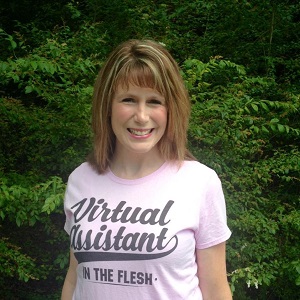 Welcome to this edition of the Real Fast Results! The special guest today is Luanna Rodham. She is going to share her secrets for how you can earn more and get more done, plus have more free time, by hiring a virtual assistant. Let's see what Luanna has to say...
Welcome to this edition of the Real Fast Results! The special guest today is Luanna Rodham. She is going to share her secrets for how you can earn more and get more done, plus have more free time, by hiring a virtual assistant. Let's see what Luanna has to say... Today's Promise
By the end of this episode, today, you will know whether you are ready to hire a virtual assistant, if you can afford a virtual assistant, how having a virtual assistant can help you to make more money in your business, and where to find a good one.Commonly Asked Questions About Hiring a Virtual Assistant
I'm going to do my steps as questions because I get a lot of questions about VAs. So these are the questions that we will answer. There are four of them:- What is a virtual assistant (VA)?
- Do I have enough money to hire a VA? Can a virtual assistant actually help me make more money?
- What can I actually outsource?
- How do I go about finding a good, reliable VA?
Question 1: What is a Virtual Assistant (VA)?
A virtual assistant is obviously someone who works virtually. You don't have to live in the same place as they do, and they come with all of their own equipment. They have their own businesses. They have their own computers, their own microphones, their own printers, their own software, etc. They are not your employee. You're not paying them employee taxes or anything like that. I think that's very important to know. As a virtual assistant, it is their own business. Their business is helping you succeed in your business. There are different types of Virtual Assistants. You have VAs that might do just transcribing, or editing, or data entry. You have VAs that just help with social media. You have administrative virtual assistants to help you make plane reservations, making phone calls, making hotel reservations, etc. There are so many different types of virtual assistants. A lot of VAs have varying backgrounds. Mine is in education. I was a special education teacher, so I do very well helping organize people. They'll say, "I want to do this, and this, and this," and then I can break it down in steps and say, "Well, the first thing you have to do is you have to open a Pinterest account, and you have to start making pins, and open boards..." So,I really help with organizing and social media. You have VAs that have tech backgrounds. You have VAs that were in the corporate world. There are all different kinds virtual assistants to help with your specific needs in your business. Essentially, these are indpendent contractors that you are bringing in to do defined tasks, based on what experience they have. 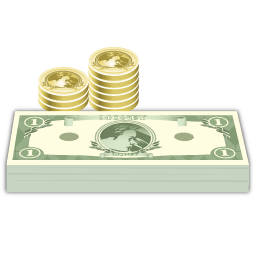 Question 2: Do I Have Enough Money to Hire a Virtual Assistant?
Question 2: Do I Have Enough Money to Hire a Virtual Assistant?
I get this question all the time, and this is what I recommend when I get asked that. How frazzled are you in your business? Are you spending all of your time checking emails, trying to do social media, trying to make sure the websites working right, trying to find people's login information for your membership site, and so on? If you're spending all of your time doing that, and you are not able to create, or coach, or whatever it is that you truly got into business for, then yeah, you probably can afford a VA. You can afford a VA, and you need a VA. I recommend that you sit down and you look at what is making you so frazzled. And, what would it be worth if you had a $200 marketing budget? And, you could just take $200 a month and put that towards giving some of these tasks to someone else so that you could actually create. just say $200. If you're at that point where you can spend $200 and consider it a business expense, or a marketing budget, you will be amazed by how putting forth that $200 will help you have enough time to create and make products. Can a Virtual Assistant Help Me Make More Money?
If you're not spending all of your time attending to those menial tasks, that have to be done in order to run a business, then you have more time to build product funnels, make membership sites, create new products, and coach clients. And so, yes, definitely, having a VA will help make you more money. I do recommend that you not start out putting tons of money into it in the beginning, unless you absolutely know what the tasks are that you want completed. This all comes down to defining for yourself what are the highest and best uses of your time, your energy, your mental bandwidth. In other words, look at those things that truly make you money in your business and focus on those things, and essentially, try to give as much of those "other" tasks to a virtual assistant. Even if you are really good at those sorts of things, there's going to come a point where you are out of gas. You don't have any more to give emotionally, physically, or you're just out of time. That is one of the biggest benefits to bringing on a VA. You need to be looking at outsourcing as much of those things that are not the highest and best use of your time. The more you do that, the more money you could potentially make, in most instances. This frees you up to direct your attention and energy into those things that you know that you're talented at. You can, essentially, pass off those things that need to be done, where you're not as gifted, to the VA or VAs that you have. In this way, you will likely be able to see more time for yourself and your family, and more money because you're really practicing your gifts, whatever those gifts happen to be. The key is to find someone who has their own set of gifts that are complimentary to your business and your business goals.Question 3: What Can I Actually Outsource?
One of the things that I find people get the most overwhelmed with is their email or their support desk. When you have to switch from a task, like, let's say that you are creating a product or writing your book; and, you have to switch to go check on the customer support desk, where people aren't happy or they're upset that something isn't working, it takes about 20 minutes to get back on task after you have done that. If you're not having to mess with the menial day to day tasks, outsourcing is going to really help you stay on task and create. There are many things that you can outsource to a VA. Daniel Hall and I have a course about this, and in that course, we list a bunch of things that you can outsource. What I recommend you do is sit down and make a list of what is stressing you out the most. What is causing you to become frazzled the most? Or, make a list of what's keeping you from creating. For example: - Your email
- Posting on social media every day
- Making pins for Pinterest
- Uploading your books to different sites
- Editing/Proofing
- Finding pictures
Question 4: How Do I Go About Finding a Good, Reliable Virtual Assistant?
There are three ways that I recommend finding a VA. And it may sound silly because I know that you think of a virtual assistant as, you know, virtual... maybe somebody that you don't meet. However, I think that the best way to find a virtual assistant is to meet them face-to-face. I like meeting people face-to-face because then you know if your personality is going to gel or not, and that is very, very important when working with a VA. You may find one that you work with, and your personalities just don't work alike. And, that's okay, but if you meet them face-to-face, you have more of a chance of finding out if you're going to be able to work with that person. - A great way to meet a virtual assistant is face-to-face at networking events. And, when I say that, I mean meet-ups or anything like that you may have in your area. The thing about networking events is there are virtual assistants there. People think that there's not, but there are. Everywhere you go in the online/small business world, you're going to find VAs. You just need to talk to people and find out who they are. So first, you know, "How do I find a virtual assistant?" The first way, if you can do it, is by going and meeting them at a live networking event.
- The second way is word of mouth. I think this is a really important one. You may say, "Daniel, who's your virtual assistant? Do you know a virtual assistant?" Talk to people that you know, that you really trust and you respect. If you like how their business is running, more than likely, they have a virtual assistant. Find out if their virtual assistant has openings, or if their virtual assistant knows someone. Word of mouth is a great way. That's how I meet my clients. It's been at networking events or word of mouth. I've never really had one pop up from my website, and I kind of like that because I want to meet them face to face to see if we can gel. When you are thinking of people that you can ask, check out your Facebook groups. Ask them too, "Who is a virtual assistant that you use," or, "Is there a company that you recommend?" You can ask anyone that you feel like you know pretty well. That's a good way to go.
- The third way is, there are sites that you can go on to look for virtual assistants. There's Freelance.com. There's Upwork.com. I know a lady who owns a VA company called VAnetworking.com. Some of you know Nichole Dean and her business partner Melissa Ingold. They have a site called CoachGlue. Well, Melissa has her own Contractors List. I would definitely recommend checking out that list. So, those are people that you can go online, and kind of meet them online, and tell them what your project is.
How Long Do I Want to Work with A Virtual Assistant?
Now, one thing that I want to bring up is that you need to be thinking, "Do I want a VA for just a short-term project, or am I going to want one that I have a long-term relationship with?" If you want just a short-term project, a good place to go is Fiverr.com. They do a lot of short-term stuff, or any of these, Freelance.com, Upwork.com, etc. Those will do for one-time projects. If you need a logo, if you need something with your website, if you need something edited, or whatever, these sites work pretty well for finding someone. But if you want a virtual assistant that you work long-term with, I would really recommend the first two things: live networking events and asking around. Virtual Assistant Tips from Daniel
Virtual Assistant Tips from Daniel
If it's a short-term, large job, like having an index made for your book or some special research project, one thing that you can do is put a local ad on Craigslist, explaining what the project is all about. You can find some pretty good folks this way, and if you do it in your local area, you can meet them at the library, or Denny's, or whatever, so that you can get face-to-face, and you can figure out if they are someone you want to work with, or not. I mean, you can kind of interview them. When you find someone you think you could work with, you will want to send them some sort of small project before you hire him/her. It should be something that takes some thought on their part because one thing that's really crucial is that you've got to have an assistant that will follow your directions. Ultimately, you want someone that can handle you asking, "Hey, can you do this," and they are able to figure out the rest. Now, when you are first starting out, this approach doesn't work, most of the time. You will have to be very specific about what you want and tell them exactly how to go about doing it. At the same time, a big part of this is finding someone that can follow your directions well. If you start communicating with someone and they don't follow your directions well from the very start, you really shouldn't bother hiring them. You can check this out beforehand by giving them something to do during the hiring process. You might set up a WordPress site and have them make one post to that site. In any case, you'll want to give them a task and see if they do it according to your directions. If they don't, you really shouldn't bother hiring them. Otherwise, it's just going to be a big waste of time for you and the other person. Hiring a Virtual Assistant
It's also a good idea to have a trial period. If you talk to your potential assistant on the phone, and you think they sound great, offer to give them work for a month or two. That way, either one of you has time to back out of the arrangement, if need be, without there being any hurt feelings. Virtual assistants, that's what we do. We help you in your business, and we should be able to follow directions, and whatever else that you need. Make sure that you are clear, that you're doing this for a trial period. That way, you can see if the person can follow through with everything they are asked to do, and if they can keep up with what you ask of them. It's good for the VA too, because they may get into a situation where they think, "I don't have enough time. This is more than I thought it was going to be," or, "We just don't work well together..." The last thing that I wanted to bring up was, in our course, I specifically talk about the qualities that you want to look for in a virtual assistant. You know, are you a micro manager? Do you want someone that you tell every detail to? Or, do you eventually want to be able to just tell them, "Go set this up," and they do it. Some people can follow instructions well, but aren't necessarily good at figuring things out on their own, and others would rather be given a task and left to their own devices. Of course, you want to pick a personality that works well with your personality, and vice versa.Daniel and Luanna's VA Course
It is on Udemy.com. It's called: Easy Steps: How To Hire A Virtual Assistant (VA). And if you act now, you can get it for half price by visiting RealFastResults.com/VA. If you're interested in it, it's very well-reviewed by the other students in it. And, if you're thinking about hiring a virtual assistant, it's definitely a good idea to go check this course out.Resources:
Easy Steps: How To Hire A Virtual Assistant (VA) Upwork.com Freelance.com VAnetworking.com Fiverr.com Melissa Ingold's Contractors List CoachGlueReal Fast Results Community
If you are diggin’ on this stuff and really love what we’re doing here at Real Fast Results, would you please do me a favor? Head on over to iTunes, and make sure that you subscribe to this show, download it, and rate & review it. That would be an awesome thing. Of course, we also want to know your results. Please share those results with us at http://www.realfastresults.com/results. As always, go make results happen!
Aug 20, 2016
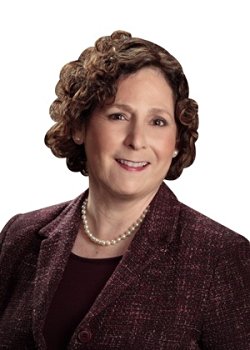 Welcome to this edition of the Real Fast Results! The special guest today is D'vorah Lansky, M.Ed. She has been mentoring authors for about 10 years, and a lot of what she teaches has to do with setting goals, having the right mindset, and being really clear about your focus. So, without any further ado...
Welcome to this edition of the Real Fast Results! The special guest today is D'vorah Lansky, M.Ed. She has been mentoring authors for about 10 years, and a lot of what she teaches has to do with setting goals, having the right mindset, and being really clear about your focus. So, without any further ado... Today's Promise
What we're going to be focusing on today is how those micro-habits, that we have the option of creating, when applied, can bring us macro success.D'vorah's Excellent Book For Author Productivity
[caption id="attachment_2636" align="aligncenter" width="357"]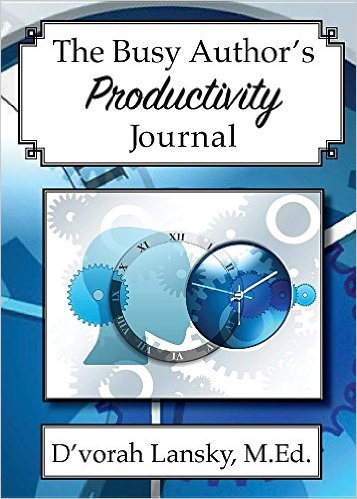 Click Here - The Busy Author's Productivity Journal by D'vorah Lansky Ed.D.[/caption]
Click Here - The Busy Author's Productivity Journal by D'vorah Lansky Ed.D.[/caption] Forming Micro-Habits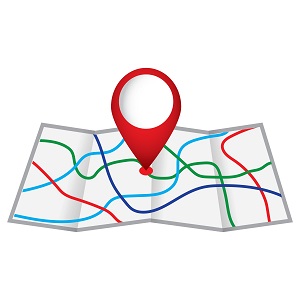
On any journey, you need a road-map. Otherwise, you might get somewhere, but not necessarily where you want to be. By creating habits that allow you to reach your goals, you're going to be creating the road-map to your dreams. Without a road-map, we often find ourselves being really busy, and doing all of this busy work, thinking that we're accomplishing all of these things, but we're not really accomplishing much. It's like being on a hamster wheel, and that's exhausting and overwhelming, so we don't want that. I'm hoping the tips that I am sharing today will help people with that. Then, by having an action plan, you'll actually accomplish a lot more, rather than winging it and hoping you'll accomplish things. The benefit of doing this gets larger and larger as time goes by. You get used to the habits, and of course, success attracts success. It also allows you to focus on, "Where do I want to be spending my time," or "Is this a good use of my time?" You also have to factor in time for relaxation and time for family. I'm not talking about working 24/7. I'm just saying, focusing with intention. Overview of the Three Micro-Habits
I'm going to be going in depth in a few moments, but the three micro-habits that would really help to turbo-charge a person's career would be:- Get really clear on your goals and develop an action plan.
- Schedule and prioritize your time.
- Become a master of your to-do list.
Step 1 - Get Really Clear on Your Goals
Step 1 is to get really clear on your goals. One of my favorite sayings is, "A goal is a dream with a deadline." So, we're not just having it out there in the ether; we're actually putting a plan for it. As you get clearer on your goals and your action plan, one of the things that I recommend you do is get a blank piece of paper and create a master list of all the projects you're working on or want to develop.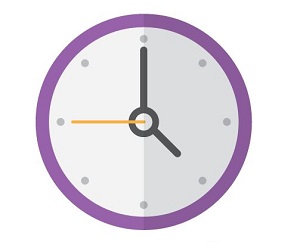 Step 2 - Schedule and Prioritize Your Time
Step 2 - Schedule and Prioritize Your Time
Gather up all of those sticky notes that are all over the place, that may be in binders, on walls, or on your computer, wherever they might be, put them on your desk and transfer them onto a master project list. You may want to divide your page into six boxes and put things by topic. Once you have that master project list, that is going to be, if we're using the analogy of a road-map and taking a journey, so that's the gasoline in your engine. And then, what you want to do, is you want to look at all of those ideas, and that might be a highlighter or a couple of different colored highlighters, and somehow narrow things down so you can identify the #1 thing that you want to accomplish over the next 30-90 days. While you may have 50 or 100 things on that list, I would imagine that the bulk of them would go under 4 or 5 headings. So, which of those 4 or 5 headings do you want, if you had to pick one, do you want to work on over the next 30-90 days? This is going to allow you to get a laser focus, and it's going to allow you to get a lot done. It's also going to allow you to take a lot off of your plate so you can reduce that feeling of overwhelm. When you can create that laser focus, and put everything else on the back-burner, what I find is that I actually have more time to do the fun things. Step 3 - Become a Master of Your To-Do List
To be able to go and do those enjoyable activities, take the dog for a walk, travel with your family, you need to be able to get things off your plate. One of the tips that I recommend is that, once you've created this master list, and you take that one project that you want to focus on, put that on a fresh piece of paper and then break out all of the pieces of the puzzle that go with that project. Anything on that master list that does not fit with what you're focusing on currently, or in the near future, cross it off your list. Move it to a "someday, maybe" page, and put it on the back page of your master clipboard. That's going to get it off your mind. You won't lose it, but I find that this activity is so freeing. It's just like you've finished 25 projects. But, you don't have to lose them; they just don't have to clutter up your current mind space.Your Success Is Hidden in Your Daily Activities
One of my favorite things, along this line, is "Your success is hidden in your daily activities." You can see how serious you are about your success. Just takes a pad of paper and carry it around with you for two days, and make a list of everything that you do and how long you're spending. It will be eye-opening. It's kind of like, have you ever done a diet journal, where they have you write down everything you eat? It's very eye-opening. So, do that with your time. Then, what you want to do is actually schedule time in your calendar, because we think we're working a lot, but it could be, if the phone rings, Facebook pings, if someone comes over, if we have a whim, our work may take a backseat. It's not only important to know what you'll be focusing on, but when you'll be focusing on it. What I recommend is, open up your calendar, and don't schedule times that you think you should, schedule times that you think will really work. Obviously, you don't want to schedule when you have to drive the kids to soccer, or when you have noise in the background, or whatever's going on in your life. Schedule times that are realistic. Maybe there's a time when your family is all out doing something, or you have a downstairs room where you have privacy and you can have a sign up that lets people know that you're at work. Involve your family and let them know when those hours are, and schedule those as recurring appointments in your calendar. Not only that, but don't put those in your calendar, and then when anything comes up, just ignore it. Prioritize those times as if they were your best paying client. Try this for 30 days. It will blow your mind, and it will increase your income. You also want to minimize distractions during those work times. So turn off your cell phone. If you need it on, put it on vibrate, and disable Facebook pings or close Facebook altogether. This one, you can take to the bank. When you're scheduling, there's a couple of things that you can do. One thing is to batch projects, and so, if a headline has to do with a project, then that goes into that specific focus for that project. I recommend having specific days or specific weeks that you focus on specific aspects, specific jigsaw puzzle pieces of your master project. Imagine a piece of paper divided into nine boxes, where each box is a different component of the project. Well, in my schedule, my calendar, Friday is "blow with the wind time". I don't schedule... on a rare occasion I will, but for the most part, I don't schedule any work appointments. I go out, I'll do errands, I'll go to the bookstore. On occasion, I may even go to the movies, but I also have "blow with the wind time" in my business, and it's usually not at "peak brain power time". It's usually like when I'm watching the ballgame, in the evening, or on a weekend. That's when I have that master list of "Ooh, got to make a headline," or "Ooh, got to write that person." It goes onto a piece of paper, and I have it actually scheduled as a block of time on my calendar, to do all of those administrative pieces of the puzzle. It's actually really fun because you get to check off so many things since those are pretty quick projects.  A Few More Tips
A Few More Tips
I used to have 20 or 30 things on my to-do list, and I always felt like such a failure because I only finished 15 of them. Then, I discovered something called "The 6 Most Important List". This is actually one of the tips that I wanted to share today. You want to streamline your to do list. So, you have this big, long to-do list. You might have 100 items on it; you may have taken and created a master project, and in that master project, maybe you have 20 or 30 items. You can't do them all in one day. Well, I heard this story. Just to be brief, the point is, in the early 1900's a productivity expert went to a major corporation and helped them improve their bottom line by meeting with each of their executives and telling them each night before they left work, they were to create a list of the six, not the 25, but the six most important things on their to-do list so that they knew what they were going to be focusing on the next day. He told them to do this without fail, and not to do anything else until they finished those six things. So, that's become a daily habit for me and something that I teach the authors that I work with. It's that sense of satisfaction of shedding things off. When you work from a master list, you may not feel like you're making progress because it seems like an unending list, but when you prioritize your to-do list, and you pick the six most important things, you're going to accomplish a great deal. Even if you work three days a week, three times six, that can add up. In 10 weeks, that's 180 things that you just finished, versus spinning your wheels. What I used to do, I used to feel like I was spinning in circles. I would feel like, "Oh, I've got to answer this email," or "Oh, I've got to work on this headline," and then I had all of these partially-created projects, like all of these baking projects in the kitchen, and none of them were getting into the oven. By deciding you're the boss of your business, you decide, "What are the six most important things?" And, I really encourage you to focus on this. The bonus tip is to set your "6 most important things" to-do list before you wrap up your business day so that when you arrive to work, whether you're working from home, or working from the road, or working from an office in town, you'll know what you're going to be focusing on when you get to work that day. That's going to allow you to hit the ground running, and you won't have to think about what you'll be working on. If a person doesn't have a list, they don't have a plan, they don't have that road-map for the day in place, what can easily happen is "Oh, I've got to email this person. Well, let me just go ahead and email that person." Then you end up checking email, and then you're like, "Oh, I've got to go over to Facebook," and two hours go by and you haven't even written your list yet. This way, you get to work, and boom, you have your blueprint for the day. 3 Action Steps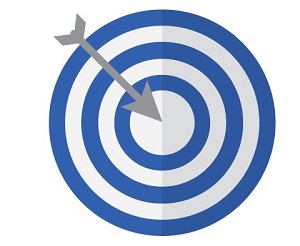
What I've done is I prepared three action steps to support the three tips that we shared. It might have sounded like there were a lot more than three tips, but I'm going to recap it right here so that you can have a takeaway. - The first one is to create a master project list and break it down. Identify your main project, identify future projects, so you can create a separate page where you can have future projects, and then everything else, that's not an urgent, present-tense, something that needs to get done in the foreseeable future, put it on a blank piece of paper, add it to a "someday, maybe" page, and put it on your clipboard as the back page. Every time you think of a project, moving forward, decide which of these pages it should go on. Again, that's your main project page, your future project page, or your "someday, maybe" page.
- The second one is to open up your calendar and schedule recurring appointments when you'll focus on your business. I would recommend that you do that for 90 days. You may want to try it for 30 days to see how it works. Well, you know what? Schedule it for 90 days. You can always change your mind, but there you have it blocked out. I believe that after 30 days, you're going to see such momentum, that this could be a long-term business strategy for you.
- Thirdly, for the next 21 days, start your day with the "six most important things" to-do list that you composed the previous night.
Connecting With D'vorah
The best way would be to come to my website at www.ReachMoreReaders.com.Real Fast Results Community
If you are diggin’ on this stuff and really love what we’re doing here at Real Fast Results, would you please do me a favor? Head on over to iTunes, and make sure that you subscribe to this show, download it, and rate & review it. That would be an awesome thing. Of course, we also want to know your results. Please share those results with us at http://www.realfastresults.com/results. As always, go make results happen!
Aug 16, 2016
 Welcome to the Real Fast Results podcast! Today we have a very special treat. Tom Corson-Knowles is an absolute expert in Amazon publishing, and he does very well when it comes to sending the books that he publishes to the top of the list on Amazon. Welcome to the show Tom...
Welcome to the Real Fast Results podcast! Today we have a very special treat. Tom Corson-Knowles is an absolute expert in Amazon publishing, and he does very well when it comes to sending the books that he publishes to the top of the list on Amazon. Welcome to the show Tom... Today's Promise
I'm going to show you the five-step system to get any book to become a #1 bestseller on Amazon. Whether it's a print book or an eBook, this will work for you.Benefits of Gaining a Bestseller Status
There's a lot of benefits of gaining a bestseller status. Here are a few that come to mind:- Obviously, if your book is #1 on Amazon, you'll be able to say that you're a #1 Amazon bestselling author. So, you can add that to your bio.
- It can help you get more speaking gigs, if you're a speaker.
- It can help you to get booked for more podcast gigs like this, and on radio and TV.
- It can enhance your bio and the credibility you have in your field.
- There are many other benefits as well...
5-Step system to Achieve an Amazon Bestseller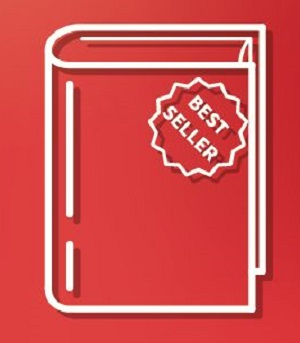
The 5-Step system is really simple. Number 1 is you want to find a relevant bestseller category on Amazon. There are over 27,000 bestseller categories just in the US on any day. That's between books and eBooks. So, there is a ton. There are many, many to choose from, and some of them aren't very competitive at all. So, really what you want to do first is just find as many relevant ones as you can, to see what your options are for later. Obviously, if you're writing a children's book or a romance novel, it's only going to fit into those categories. You're not going to put your romance novel into a business and marketing category. That just wouldn't make sense. So, you're going to want to find the relevant bestseller categories first, and that just takes a bit of research. Number 2 is you have to analyze the competition. So, once you've found the relevant categories, you just want to find out who the competition is, what they are like, and see what you can learn to make your book better, to make your cover better, and to make your book more marketable. Number 3, you'll need to calculate how many sales you need to make in order to hit #1 in each of the categories that you've researched. That way, you're going to know, "Okay, in this category I need 100 sales in a day, and in this category I need five sales in a day." Then you can know, based on your campaign, on your budget, and on your promotional abilities, how many copies you can sell and which categories you can reasonably expect to be #1 in. The rest may be a little too competitive for you at this time. Then, number 4, you're going to choose two target categories because Amazon will actually allow you to choose two bestseller categories for your book. So, you're going to choose the right two categories for your book, based on that research that you've done. Number 5 is really easy. Just get Amazon to put you into those categories. That sounds super-easy, but it can actually be kind of difficult when all you're doing is publishing your book in your Kindle Direct Publishing account, or in CreateSpace, they don't actually give you the 27,000 categories to select from. It's because Amazon's internal database doesn't sync with the external data that's actually used to list their books.  Step 1 - Find a Relevant Bestseller Category
Step 1 - Find a Relevant Bestseller Category
The quickest and easiest way, for most people, is just to go to Amazon.com, and type in, or search for, some books that are bestsellers. Actually, I'll have a link in the show notes that will take you directly to a page on Amazon that lists all of the categories of Kindle bestsellers and print book bestsellers. If you don't have that, basically, you just need to find a book that's a bestseller on Amazon. Then, you need to scroll down to "Product Details" on that book's page and click one of those bestseller rankings, and that will take you to that page as well. That's the first move; just finding those bestseller categories. Then you're going to browse through those lists and find the ones that are relevant to you. If you have a business book, you're going to look into "Business & Investing" as a parent category. Under that, there's going to be hundreds of child categories, or smaller categories that are nested underneath that one. You're going to browse through all of those different categories and see which ones are relevant for you, and just kind of write those down to keep track of them. So, that's Step #1. It's just researching all of the relevant bestseller categories. You can actually be listed in 20 or more categories on Amazon, but you can only select two. The way that works is you try to select the two child categories, like the smallest, most niche categories, and them those can be listed in more parent categories. For example, there's a "Direct Marketing" category, which is under the "Marketing" category, which is under the "Business & Investing" category. So, that's just three categories right there, just from that one category that you've selected. Some people might be thinking, "Do you start by putting in a keyword related to your book?" No, so you actually have to go and find the either the direct category page on Amazon, which we'll share in the show notes, or find a book that's a bestseller already and then scroll down to "Product Details" and click the hyperlinks in those product details to those categories, and that will also take you to those categories. When you just type in a keyword, those books may not be bestsellers and it might not take you to the direct list. Just to be clear, you can use keywords, but what you're looking for are books on a bestseller list specifically related to your subject matter, and essentially, working backwards from there. Step 2 - Analyze the Competition
Step #2 is to analyze the competition, and this is a step that I think a lot of authors just completely miss out on, and you can learn so much at this stage. Really, I think this is something you should be doing constantly. This is not just a one-time thing. You should always be checking out the competition. Primarily, what you want to do is, once you've found those relevant bestseller categories for your book, you want to browse those bestsellers on Amazon. Look at the top 20 books in each of those categories. Really dive in deep. What are their book titles? What are their subtitles like? What are their book covers like? What are their book descriptions like? What are their reviews like? Read the positive reviews and the negative reviews, and see what customers like about those books, love about those books, and what they don't like about those books. Just by doing this basic research... I mean, you can spend hours and hours on this and learn so much information that can help you not only to market your book better, but actually to create a better book. So, if you're researching a market on Amazon, and you see that all of the top books in this market. People really liked certain things about them, but there is one, or two, or three things that people really hate about these books. And they are leaving negative reviews about them, that really lets you know. If you really want to write a book in that market, and really want to stand out from the crowd, you'll obviously want to incorporate those things that the other books left out. The readers or reviewers on Amazon will tell you all of that information. It's all there and available. The thing is that no one does this. Very few authors actually read the negative reviews of their competitor's to find out how they could actually be improved. It's sad because it leaves a ton of opportunity on the table for anyone who is willing to do that extra grunt work. It's the same thing... It's not just non-fiction. This works incredibly well for fiction as well. I know that some of my fiction students have used the same strategy and have just blown it out of the park with their books because they incorporated scenes or themes that the reviewers of their competitors have told them were really important to them. 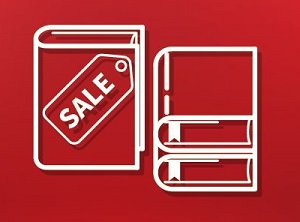 Step 3 - Calculate Exactly How Many Sales You Need to Hit #1
Step 3 - Calculate Exactly How Many Sales You Need to Hit #1
Step #3 is you need to calculate exactly how many sales you need to hit #1 in each of your categories. The reason you want to do this is just to be very clear and have reasonable expectations. It's unlikely that you are going to be #1 in all of the Kindle Store, right? Because, in order to do that, you'll need tens of thousands of sales in a very short period of time. You can easily hit #1 in many different categories, but you need to know how many sales you actually need. So, the way Amazon does this is there's actually something called the Amazon bestseller rankings, which we've talked about a little bit. Basically, Amazon ranks every book in order of how competitive. The #1 book is the most competitive, has the most sales, #2 the next, and so on and so forth. When you look at some of these books... Let's say the #1 book in "Direct Marketing" on Amazon, and you scroll down to the product details, you'll see the Amazon bestseller ranking in the Kindle store, or the print store for print books. Let's say the book's ranking is 10,000, so you would need to beat that 10,000 bestseller ranking. The problem is that you can't tell by looking at the number how many sales you need. So, what I've done with the help of this brilliant data guy is we've created this super-advanced calculator that tells you exactly how many sales you need in either a 24-hour period or over the duration of a month in order to hit any sales rank on Amazon. Check out the relevant bestseller categories in Step #1, find the bestseller ranking within the "Product Details" section of their books, and then just copy and paste those numbers into the sales calculator. And, it's totally free, by the way, and the link will be in the show notes. But, you can just type it into the sales calculator, and it will tell you exactly how many sales you need in one day, or in one month, to hit that bestseller ranking. The main ranking is the Amazon Bestseller Rank, and there's one for the Kindle Store, and there's one for books. That's just the overall rank. So, it goes from #1 to about 4.5 million because there are about 4.5 million eBooks signed up on Amazon right now. That's the overall Amazon bestseller rank, and then there's your ranking inside of a certain category. So, your overall rank is going to be based on the competition with every other book on Amazon, but inside of your category, you'll only be competing with the books that are listed in that category. That's why you don't have to be #1 on Kindle; you can be #1 in some of the other 27,000 bestseller lists. Which of the Two Numbers Do I Need to Plug into the Calculator?
Any of the generic, overall Amazon bestseller rankings. It's going to be between one and 4.5 million. You just copy and paste in that number, which is listed on the page of every single book listed on Amazon that has sold at least one copy. Copy that number into the calculator, and it will tell you how many sales you need to hit in order to hit that ranking.Step 4 - Choose Two Target Categories
Step #4 is you're going to choose two target categories. So, you're going to actually select your categories on Amazon. Like I said before, when you publish your book on Kindle through KDP, or a print book through CreateSpace, or any other Print-on-demand (POD) publisher, or Amazon merchant account, you're not going to be able to select all of the bestseller lists that are available for your book. Essentially, the reason is that Amazon uses an internal database, and that's where it shows up on KDP when you publish your eBook on Amazon. But, when you actually look at the bestseller rankings on the website, the ones that your customers are finding on their computers, on their iPhone, on their iPads and their Kindle devices, those are all BISAC categories, which are essentially industry-standard categories. This essentially gives you all of the databases for like libraries and all the various book industries use the BISAC category. So, that's why Amazon has two different databases, and they just don't link up perfectly. So, the simple solution is just every category you see on Amazon's website is the BISAC category; it is the correct category. Since you're doing your research on the website anyway, all you really have to do is just copy and paste those categories and just send Amazon a support email in your KDP account or your CreateSpace account saying, "Hey, can you please change my book to these categories?" Then, you can just copy and paste them directly from the Amazon website, and they'll make that switch for you. So, it's super-easy. That's Step #4 and Step #5. In Step #4, you're choosing your two target categories from Amazon's website.Step # 5 - Send an Email to Amazon
Step #5 is sending an email into Amazon in order to get them to put you into those categories.How Does This Help Me to Become a Bestseller?
Essentially, how this works is Amazon only lists the top 100 books in each category on their website, and on their list, when customers browse. So, if customers are browsing the bestseller list to buy books, which they very often do, they are only going to see your book if your book is ranking in the top 100 of your given categories. If your book is ranked #200 or even #101, it's not going to show up in those searches and you're not going to get exposure from it. Simply by changing your bestseller categories to categories that you can rank in the top 100 for, you're going to get more exposure, and you're going to get more traffic to your book, which obviously means more sales over time. That's one of the huge benefits, but there's really a lot more. You know, the thing with the publishing business is that it's very incremental. Every little bit helps. If an author is only selling 100 copies a year, it seems like it would be such a huge stretch to get to 1,000 copies a year, but really, it could be as simple as just changing the categories, or changing the book cover, or changing the subtitle, or changing a line in the book description. A simple change can make a huge difference over time, and this is one of those changes that we've noticed can make a huge difference. We've had some of our clients' books sell hundreds and hundreds of books. A lot of the time, we'll have clients that come from competitors, other self-publishers or publishing services, where they were self-published and they just wanted us to take it over and do their marketing, and simply by changing things like their categories, we've seen increases in sales as much as 173%. It sounds like such a small thing like "Why do they do that? Who really cares," but those small changes can make a huge difference over time. It's a long-term business. I think a lot of people have gotten into the Kindle publishing craze and are looking at it as a short-term opportunity to make a lot of money. But, it's the publishers that really look at the long-term that have been the most successful, by far. We've been able to do things now, like doing book deals in different languages, and distributing books in Anacosto, and physical CD audio books, and all kinds of deals. If we had only focused on, "How can I make so much money this month," or focused on just short-term stuff, we wouldn't have been able to stick around to see these huge opportunities come around. I think whenever you can focus on the long-term, and on quality, and on adding value to customers, that's where you're really going to get the biggest return over time. That's why I think categories are such a big deal. It is about providing a better experience for your customers. If you select the wrong categories, or just choose two random categories on Amazon, you might not be in the right place. You might not be where your customers are really looking for books like yours. Since most authors haven't done this research, simply by doing it, you can always set yourself apart. Connecting with Tom
You can check out my blog at TCKPublishing.com. There's tons of great information and articles there. That's where my book calculator is as well. I do have a free training course for those who want to find out how to format your eBook for Kindle, how to get it published on Kindle, and how to do book launches and promotions. It's all free at eBookPublishingSchool.com. I also have a podcast called the Publishing Profits Podcast. Every week we interview bestselling authors, publishing attorneys, accountants, lawyers, and agents. Really, anyone in the industry that's doing awesome stuff and knows what's working right now for authors. That's PublishingProfitsPodcast.com.Resources:
Amazon Book Sales CalculatorList of the Top 100 Most Competitive Amazon Kindle Bestseller Categories
List of the Top 100 Least Competitive Amazon Kindle Bestseller Lists and Categories
How to Effectively Use a POD (Print On Demand) Publisher With Robin Cutler
Real Fast Results Community
If you are diggin’ on this stuff and really love what we’re doing here at Real Fast Results, would you please do me a favor? Head on over to iTunes, and make sure that you subscribe to this show, download it, and rate & review it. That would be an awesome thing. Of course, we also want to know your results. Please share those results with us at http://www.realfastresults.com/results. As always, go make results happen!
Aug 12, 2016
 Welcome to this edition of the Real Fast Results podcast! Joining us today is the CEO of Rev.com, Jason Chicola. This is a service that is highly recommended by many successful business professionals. Many of the people who follow Real Fast Results are content creators of one form or another, and it's a good practice to use transcribed content in your business, in general. That's because these help people to leverage their time effectively. In this interview, Jason brings forth insights on how to use transcription services in your business. Jason, welcome to the show... Our promise is really simple. We transcribe audio for $1 per minute, we return it within 24 hours, and the accuracy is 99% or higher. That's it. It's that simple. I can give you more detail on all of that, but we want transcription to be really simple. If you go out and look into the market, you'll find people that make it complicated. They will charge you based on how many speakers you have. They'll charge you extra if you want it in less than 24 hours. They will give you all kinds of up-charges if you want to have different formats. We do none of that. We have a flat price of $1 per minute, no if, ands, or buts, and I think we are the only place that you'll get that.
Welcome to this edition of the Real Fast Results podcast! Joining us today is the CEO of Rev.com, Jason Chicola. This is a service that is highly recommended by many successful business professionals. Many of the people who follow Real Fast Results are content creators of one form or another, and it's a good practice to use transcribed content in your business, in general. That's because these help people to leverage their time effectively. In this interview, Jason brings forth insights on how to use transcription services in your business. Jason, welcome to the show... Our promise is really simple. We transcribe audio for $1 per minute, we return it within 24 hours, and the accuracy is 99% or higher. That's it. It's that simple. I can give you more detail on all of that, but we want transcription to be really simple. If you go out and look into the market, you'll find people that make it complicated. They will charge you based on how many speakers you have. They'll charge you extra if you want it in less than 24 hours. They will give you all kinds of up-charges if you want to have different formats. We do none of that. We have a flat price of $1 per minute, no if, ands, or buts, and I think we are the only place that you'll get that. How To Use Transcriptions in Your Business
There are probably a dozen different reasons, that are common, of why people would want a transcript. Media is a big industry that is producing writing. So, whether you are a writer, a podcaster, a consultant, or a coach, if you are regularly trying to take conversations or discussions and turn them into either insights or deliverables, you need a transcription. You're probably taking notes and writing things down on your own. All of those people need it, and other industries need it too (market research, legal, etc.) but the value is really in the time savings. If you're currently taking notes and writing things out, ask yourself how long it takes. An untrained person would probably take 10 minutes to type out one minute of audio. So ask yourself, "What is my time worth?" That's the calculation you have to do. Our transcripts are $1 a minute, so a 30-minute file, we'll transcribe for $30. It may take you 300 minutes. If your time is valuable, you're probably better off just going with us. We have customers that use transcription for all kinds of reasons. Many of them are in the media, which means that they are producing deliverables (i.e. Books that they've sold, eBooks, blog posts, etc.) We have a number of clients that have a small stable of writers that they use for the second step of taking a transcription and editing it so that it's more readable. It all depends on what you're trying to create. I could think of one company, that's a large customer of ours, that produces books for people. If you want to write a book, they will help, kind of, ghost write it for you. They get audio from their clients, they turn it into a transcript, and somebody else turns it into a book. To be specific about this, if you are regularly producing content like this, you may want to go to a place like Upwork to find a writer who fits your style. The reason I think it's hard to give a general purpose answer is that everyone has a different definition of what good looks like, or what the writer looks like, and so you have to find the style, the writer that works for you. Innovative Uses of Transcription
 I'll give you a couple of examples. We see an enormous amount of use around video. Think about how much video is being captured, created, and shared around the world today. One of our customers, called Heavybit, produces video and they use our transcripts for a couple of things. If you go to their website and you watch one of their videos, it will be captioned. So, you can see their words on the screen in real time. There will be an article next to the video. So, if you don't feel like watching a 20-minute video, you can scan the article and decide if it's your cup of tea. Another thing you can do, if you're reading an article and you're in the 20th paragraph, and you see a sentence that really intrigues you, and they seem to be talking about something that's in the video, you can click the text of the article and the video will jump to the right position. Basically, we call that "interactive transcript". We've actually built some software to let anyone with a video make their transcript interactive. That means, the video links to the text and the text links back to the video; it's a two-way street. It's not publicly released, but it will be out there, and we'll make that free to all of our customers. Think back to when you were in college. Wouldn't it have been cool if you had transcripts of all your lectures? Now, the risk is you might not have gone to class. Okay? But, if you were cramming for a test, and you had to think back, "What did the professor talk about, mitosis or meiosis?" If you managed to have a search box to find it, the text and the video would be together. So, I think everything with video, there's a lot going there. I mentioned earlier, a different trend is the example of people using the transcriptions to produce books. That's a big deal. We've had some famous authors that probably don't want us to announce what they are doing, but famous authors using us. Typically, it's their production company that's using us, and this is typically more in the world of non-fiction. I think that's a big trend. There's another big trend that we're seeing around a new category of market research, which is called "usability research". There are many companies out there building the apps that are on your phone. What they do is they get random people on the Internet to use these apps, and as people use them, they have them talk about their experience. "Why did you click that button? What do you think will happen if you click this button?" They'll have people, in some cases, not very successful, and in some cases getting confused, but they will record the reactions of "normal people", and then the people that build the app listen to the videos. And, this is being done on a large scale, and a bunch of those videos are running through us. There are a lot of companies using video/audio recording transcripts to do their focus groups. Think of the focus groups back in the 50's, where they put them behind the dual-pane glass. Well, the focus groups are moving to the Internet, and it's moving to video and transcripts that are linked together. I have to remark, Lynda.com is one of our favorite customers. They use us to caption all of their content. I think that it's probably worth noting at this juncture that we offer two related services: transcription for people who have more dialog and captions for people who have videos where they want their words displayed on the screen. It's another matter of the details, but if you put it on a video, you want captions. There are probably four or five different reasons why someone making an educational course or video would want captions. The most obvious one is that you might have a listener that's hard of hearing, but there are many others. It helps the recall, and it helps their education to be able to see the words from the screen. Most businesses have some customers who speak English as a second language. Many people, who are parents with young children, will find that they can turn the video down when their kid goes to sleep and just read the captions. Most people in America use captions now and then, and only a very small percentage is hard of hearing. In education, having a text is transformative. We transcribe. We don't produce the recordings; we receive them. My point was that there are many companies that are getting regular people to use their products. They are recording audio or video and sending it to us. So, we don't provide the audience; we just provide the transcription, but it's a whole burgeoning new industry. I know of 10 companies that are doing it at some level, and two or three are doing it to scale.
I'll give you a couple of examples. We see an enormous amount of use around video. Think about how much video is being captured, created, and shared around the world today. One of our customers, called Heavybit, produces video and they use our transcripts for a couple of things. If you go to their website and you watch one of their videos, it will be captioned. So, you can see their words on the screen in real time. There will be an article next to the video. So, if you don't feel like watching a 20-minute video, you can scan the article and decide if it's your cup of tea. Another thing you can do, if you're reading an article and you're in the 20th paragraph, and you see a sentence that really intrigues you, and they seem to be talking about something that's in the video, you can click the text of the article and the video will jump to the right position. Basically, we call that "interactive transcript". We've actually built some software to let anyone with a video make their transcript interactive. That means, the video links to the text and the text links back to the video; it's a two-way street. It's not publicly released, but it will be out there, and we'll make that free to all of our customers. Think back to when you were in college. Wouldn't it have been cool if you had transcripts of all your lectures? Now, the risk is you might not have gone to class. Okay? But, if you were cramming for a test, and you had to think back, "What did the professor talk about, mitosis or meiosis?" If you managed to have a search box to find it, the text and the video would be together. So, I think everything with video, there's a lot going there. I mentioned earlier, a different trend is the example of people using the transcriptions to produce books. That's a big deal. We've had some famous authors that probably don't want us to announce what they are doing, but famous authors using us. Typically, it's their production company that's using us, and this is typically more in the world of non-fiction. I think that's a big trend. There's another big trend that we're seeing around a new category of market research, which is called "usability research". There are many companies out there building the apps that are on your phone. What they do is they get random people on the Internet to use these apps, and as people use them, they have them talk about their experience. "Why did you click that button? What do you think will happen if you click this button?" They'll have people, in some cases, not very successful, and in some cases getting confused, but they will record the reactions of "normal people", and then the people that build the app listen to the videos. And, this is being done on a large scale, and a bunch of those videos are running through us. There are a lot of companies using video/audio recording transcripts to do their focus groups. Think of the focus groups back in the 50's, where they put them behind the dual-pane glass. Well, the focus groups are moving to the Internet, and it's moving to video and transcripts that are linked together. I have to remark, Lynda.com is one of our favorite customers. They use us to caption all of their content. I think that it's probably worth noting at this juncture that we offer two related services: transcription for people who have more dialog and captions for people who have videos where they want their words displayed on the screen. It's another matter of the details, but if you put it on a video, you want captions. There are probably four or five different reasons why someone making an educational course or video would want captions. The most obvious one is that you might have a listener that's hard of hearing, but there are many others. It helps the recall, and it helps their education to be able to see the words from the screen. Most businesses have some customers who speak English as a second language. Many people, who are parents with young children, will find that they can turn the video down when their kid goes to sleep and just read the captions. Most people in America use captions now and then, and only a very small percentage is hard of hearing. In education, having a text is transformative. We transcribe. We don't produce the recordings; we receive them. My point was that there are many companies that are getting regular people to use their products. They are recording audio or video and sending it to us. So, we don't provide the audience; we just provide the transcription, but it's a whole burgeoning new industry. I know of 10 companies that are doing it at some level, and two or three are doing it to scale. A Key Tip For Using a Transcription Service Like Rev
Clear audio. I can't tell you how many times we get a recording that was done at a Starbucks with banging stuff in the background, and then they wonder why there are mistakes. "Garbage in, garbage out," but if you record good audio, you'll get a great result. I would predict that within a decade, you're going to see speech recognition playing a major role in this kind of work, and for speech recognition to be effective, what you would want is individual tracks. That's going to help. Right now, I think the current state of the art of recording is pretty poor because most people are focused on mobility and convenience. That is, "do it with my phone," as opposed to quality. I think it's going to be a while before quality methods are used regularly.
the background, and then they wonder why there are mistakes. "Garbage in, garbage out," but if you record good audio, you'll get a great result. I would predict that within a decade, you're going to see speech recognition playing a major role in this kind of work, and for speech recognition to be effective, what you would want is individual tracks. That's going to help. Right now, I think the current state of the art of recording is pretty poor because most people are focused on mobility and convenience. That is, "do it with my phone," as opposed to quality. I think it's going to be a while before quality methods are used regularly. Connecting with Jason
If you go to our homepage, Rev.com, you'll see three offerings: Transcription, Captions, and Translation. We offer them all today. Our Twitter handle is @Rev. We have an iPhone and Android app called the Rev Voice Recorder. Go to your app store and look up Rev. The app lets you record and transcribe. It's very convenient.Real Fast Results Community
If you are diggin’ on this stuff and really love what we’re doing here at Real Fast Results, would you please do me a favor? Head on over to iTunes, and make sure that you subscribe to this show, download it, and rate & review it. That would be an awesome thing. Of course, we also want to know your results. Please share those results with us at http://www.realfastresults.com/results. As always, go make results happen!
Aug 9, 2016

Welcome to the Real Fast Results podcast! Thanks for being here. The special guest this episode is Robert Plank. Let's jump right into the show today and see what Robert has to share with us... I am going to share how to go from having an idea for something, to solve some kind of problem, into having a money-making membership site ready to go. This will be where someone goes to a webpage, sees a bunch of cool stuff, clicks a button, clicks to buy, they pay the money, and they get what they paid for.
Membership Sites Bring in Passive Income
It's the passive income. It's great to not have to start at the beginning of every month, or every day, at zero. It's great to be able to do whatever you want and have a bunch of money that came in automatically. Then, if you want to do some more of that, if you want to do whatever it takes to grow your business, that is all extra! I honestly believe that whatever everyone listening does, even if it's like a service; for example, maybe you set up websites for local businesses, you should still have a membership site for a couple of reasons. One is that you could get a lot of extra money for something that you're already doing anyway. I found that when I sell any kind of information products, and stuff like that, I'll get extra business just from people buying the membership site or buying the product. I used to do a lot of nerdy PHP programming, setting up websites. Well, it was tough to get new business. However, as soon as I made a couple of courses, just sort of showing what I did, I would get a lot of people who I would go through the funnel. They would buy this course, trying to see how I was going to do it, or maybe they were going to hire someone else to do it, and they would end up hiring me to do it. It's really cool making this thing called a membership site because you're doing it anyway, and you might as well get paid a second time for it. Also, there may be someone that couldn't afford to hire you for $2,000. You might have lost that person for $0 otherwise, but this way, you may be able to get $200 off of them instead and everybody wins.How to Set Up Membership Sites - An Overview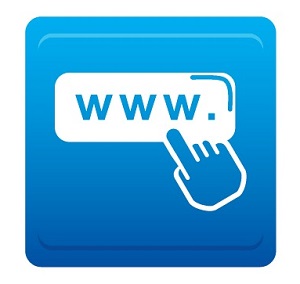
The first step would be to set up WordPress. It's free, and it's what most of us marketers use to just be able to click a button and make some content. So, we set up this thing called WordPress, and we put it on a domain, like a .com domain such as RealFastResults.com. Once WordPress is set up, the two pieces are the front-end piece and the back-end piece. For the front-end, we have a thing called a landing page or a sales letter. We use a plug in for that called PaperTemplate. For the back-end we have the member's area, where someone can log in. We use WishList Member for that. The pre-step would be to get a website, get a domain name, and get a host account. Then the real stuff is to set up WordPress, set up your sales letter or landing page as your front-end. Then set up the actual login area, called the back-end. Step 1 - Set Up WordPress
The first step is to set up WordPress. The only way this would be awkward or difficult is if you've never done it before. If you've done this once or twice, then the process of setting up your membership site will be super-easy. Even if you're not technical at all, there are all kinds of videos out there on how to do this. Some people use Fantastico, QuickInstall, or SimpleScripts to help set up their WordPress site. The point is that you have this website, and people listening may be used to like uploading files into a folder or something like that, but you click a special button and you install WordPress. Right out of the box, you'll have this place where you can go and post, basically, online journal entries. Even that, technically, would kind of get you done. Technically, we're talking about membership sites, and a membership site, all it has to be is a protected download area. It doesn't have to be something where someone pays you month after month. It can literally just be a little protected area that has a bunch of posts, has your videos, other content, or whatever. From there, you go to C-Panel, and within there, it's either called Fantastico, QuickInstall, or SimpleScripts. From there you simply say, "I want to install a WordPress blog at the top level of my site. It's RealFastResults.com." Then, it asks you stuff like, "What's the name of your blog?" and "What do you want your password to be?" You click it, it's done, and that's how you can start adding content to the website.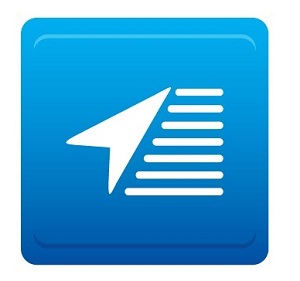 Step 2 - Set Up the Front-end
Step 2 - Set Up the Front-end
Next, you make what's called the front-end. You don't need a plug-in for this, and you don't need a theme for this, but it's better if you do. Basically, you just need one big, long webpage, and even if you have a page with nothing else but a button to click and buy, that would be better than nothing. Even if you had no time for anything else, but you said, "Hey, I'm Daniel Hall and I have a great membership site on publishing comic books to Kindle." You could still tell someone, "Go to this webpage, and there's just a button there," but at least they would know to go there and click the button. If you had an extra three minutes, then you could put above the button what the title of the course is. That would be another step in the right direction. If you had another couple of minutes, you could list, maybe 10 good reasons to buy, or 10 things that people would get out of that course. Then, if you had another three minutes, you could change the headline to something interesting like, "Who Else Wants to Publish Their Comic Book on Kindle Today and Do It In 3 Clicks". Now it's kind of coming together where they go to this webpage. What we like to do is have it at the very front door of your site. If your site was RealFastKindelComics.com, they would go there and all there would be on that page to do is see what you have to offer and then either close the browser tab or click and buy. That would be Step #2, getting that front-end set up. One thing that I've had a lot of success with is writing the sales letter first, even if it's just a couple of quick bullet points. I've seen a lot of people get tired of doing things in the wrong order, and that's why I tell people to just have a buy button, because that's Step #1. Anything else that comes after that is extra. When I see a lot of people who fail, what they mess up on is that they go in and make a lot of content first. They go in, and they make their logo, and they create their business card, and then they go, "I just spent a month working my tail off, and now I have to write something called a sales letter." When I like to do is, while I'm still in a fresh state of mind...I'm still excited and stuff, and not tired out yet...Make the sales letter, even if it's just some quick thing. Then, when it comes time to make the course, it kind of has to live up to the hype of the sales letter. Step 3 - Set Up the Back-end
The third step is this thing called the back-end. So, this is where all of the magic happens. This is where you set up a plug-in called WishList Member. What that basically does is protect your content. I can't stress this enough, that a lot of people think in the wrong kind of terms. They think that a membership site is a monthly thing, where every week you deliver an interview or an article. I prefer to think of it as is a protected download area. So, for example, YouTube, Twitter, and Facebook would all be membership sites because someone can be a member of that site, right? I mean, Facebook is free, but it's the same idea; either they can get in or they can't. Some people think that they are going to have a site for free, or even for $10. What I like to do is create a cool course. I like to have something that has some meat on it... $200, $300...And that way, there's a couple of pieces to it. If you're getting $300 a pop, first of all, you can have a nice little affiliate program, you could pay out some nice commissions, then if you only made like $3K, you could still be like, "Okay, I just made $3,000, and I feel like my efforts paid off." I think a lot of people have low confidence. They think that they have to give it away for free or give it away for $5. Well, what are you going to teach about for $5? It's going to be a piece of crap. It's just going to be some PowerPoints, but if you make it $200 or $300, you're probably going to add is some software and some cool videos. As far as the back-end goes, there are two pieces: - The tools that you use
- and content strategy. Like, how many videos am I going to make, what are they going to say etc.
Back-end Tools
As far as the tools, since WordPress is already set up, we use WishList Member to protect it. So, what's cool about that is that if someone goes to that front page, they see what they like about Daniel Hall's course about Kindle comic books, they click the button, and they buy. After they pay you money, say they pay you $200, they go to a registration form that says, "What's your first and last name? What's your email address? What username and password do you want?" They create that account, and now they can go anytime they want. If it's five years later, they can still come back to this Kindle comic book course. What's cool about this, from a management point of view, is that if someone comes back five years later and they have forgotten their password and click a link, they can get back in. If they pay you money and they refund, now they're locked out. So, it's really cool from a management point of view, and then what we'll usually do is pile in some videos. Then, we'll use a cool tool called TablePress. It is so cool. Basically, you can make a table or a grid inside of your membership site. Usually, if I'm pressed for time, I'll just put some posts on a page. It will look like any other blog, and they buy access to this blog. Maybe if we have an extra five or ten minutes, we can make a table or a grid. Say I want to have like three columns across, five rows, and add in some cool little icons. It's one of those nice to have little goodies, where you can make the inside of your membership site look pretty slick. Make a dashboard, and just make it point and click. You can make it the way you want it instead of some videos just kind of tossed in a webpage. I would say that my top tools, as far as WordPress being set up are WishList Member and TablePress to structure the membership site with. So, those are the tools.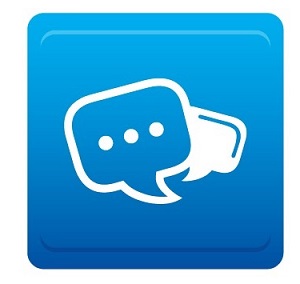 Content on Your Membership Site
Content on Your Membership Site
When it comes to recording, it takes a little bit of a mindset shift. I think that a lot of people, when they are doing a course, they think, "Let me see what kind of trivia I could just give to you about Kindle comic books. Let me show you some Kindle comic books. Let me show you Photoshop, or you could use this other editor." People just go off in all of these scattered directions. Usually, when I buy a course, I will look over this kind of stuff because I'm just there for the content. Usually it starts off with a five-minute intro, and then they'll have like a 20-minute longer thing, and everything after that is about 5 minutes. It's like they get tired or something, and then it ends up being like 20, 30, 40 videos, and you have to page through every little thing to get what you wanted. It's just this meandering thing taking me into all different directions. What we like to do is think in copywriting and marketing terms. We think, "They are going to buy this course on Kindle comic books, so what are they going to actually have built by the end?" It's not just what they have learned, but what actions have they actually taken. This is how you separate yourself from the cheap Kindle and the cheap Udemy kind of courses. Now you're actually a $300 course. By the end, they should have, say one or two Kindle comic books up. Maybe they have another one in progress, or whatever it is. However, by the end of your course, they should have something set up. That way, they will buy your next course, they won't refund, and all of that good stuff we all like to have. We think of it in terms of, by the end of this course, they will have all of this stuff, and then I split it up into four milestones. A milestone, we can call it a module, is like a video, that's usually a screen capture that's like 60 minutes long, maybe 90 minutes at the most. This is how we avoid having to page through all of these little five minute videos. Then each of these four pieces actually counts for something, and is building on the next, and is in the right order. Then, at the end of each of these modules, we'll have a little 10-minute assignment. So, for example, in the Kindle Comic book course, at the end of the first module, maybe they will have their first comic book created but not published. Maybe the second module would be having them publish it. That makes it really cool in a lot of ways. A lot of people won't get past that first hour of video, and when you're making the sales letter, you're like, I've got all kinds of promises for you, because I can say, "Tonight you join this course and you'll have your first comic book created using the software," or something like that. So, instead of making videos with no plan, the way I always do it is think in terms of four milestones, 60-90 minutes, and it's all in video form. Put it on there, put it in that little TablePress grid, and it's a cool little package for anyone that's looking to get some results fast. Sometimes what I'll do is add in free bonuses for any kind of course that we have. One piece of the bonus may be some kind of software. Either built-in software on the membership site, buy rights, or have something made. So, that's good. If not, I'll tell them where to go and buy, say, some sort of point and click comic creator and then provide some kind of video training on how to use it. Then, I'll throw in a checklist of sorts. So I'll have a list of questions they ask like, what's your Kindle comic book going to be called, how many pages is it going to be, etc. By just going through and answering those questions, they will have something at the end. A few weeks after the course is done, I'll go back and make what's called "quick-start" videos. I'll make just a video that's just one hour or so. I'll split that up into five-minute chunks just so that if a person has a short attention span or no time, I'll give them just the bare nuts and bolts. Sometimes I'll have just a quick little section, where it's like, "Just give me the bare essentials," basically. Getting Traffic to Your Membership Site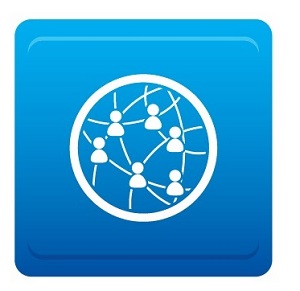
What you need is traffic. You need to send some people to that site and get your first member going. I think that at this point, there are two paths you can take. One path is, you can keep on adding to the site and making it cool, and I think that's the natural path a lot of people want to go into. That's because it means you don't have to go into any of the scary stuff. You don't have to market your stuff or buy ads. You don't have to send emails, do webinars, get affiliates, and stuff like that. I think that at this point, as soon as you have the minimum viable product, even if the sales page could be better, and even if you haven't quite figured out TablePress, what's important at this point is to get one single, paying member. I think some people get kind of discouraged because they think, "Oh man, I see all of these people talking about having a $100,000 launch. On the first day, I guess I'll be okay with like $50,000." Then, they put out their site and they just get one sale. I'm thinking that's great because before you had $0. Yeah, you may have put in 10 or 20 hours, but don't cut it up and say that you only made $10 an hour. You made your first member, and then the next thing you know, member #2, #3, #4 are going to come in with almost no work at all. Going down the line, I think that there are some cool things that anyone could add to a site. For example, what we do a lot of times, is we have a plug-in called WP Notepad, and we have it to where, underneath every video, or every post, there's like a little note-taking area where any of your members can go in and type their own private notes that are stored on your server. So, they don't have to save it anywhere. You could add a checklist under each post so that they can check off if they've watched that video or gone to that webpage. We have a way where you can add a pop-up using a program called WP Kunaki, where it will confirm their physical shipping address. So, you can send them a quick "Thank You" card or call them on the phone as soon as they join. That way you can say, "Thanks for your purchase. I just wanted to make sure that you made it to the download page." You could also send them a DVD, or whatever. Those are all nice things to have, and those are good to add maybe like in a week or two. The next one or two weeks should be dedicated to getting some dang members in there. You need traffic, and you need a compelling offer, but how do you do that? One of the ways you could do so is essentially by making allies with someone that has a list and has a community that would benefit in some way from your membership site. You could include that person in the resources section, or you could reach out to that person and maybe do an interview with them, or a bonus of some sort that you could include within your membership site. You could even include a link back to their site to go download whatever the bonus is. This is a way that you could go about making an ally of a mover and shaker in your niche that has a vested interest in seeing you succeed because the more you succeed, the more eyeballs they could potentially have on their stuff since it's in the member's area. This also gives you the opportunity to seed your members area with good content. The content does have to be A+ for this to work well, but you can share the spotlight with other experts, essentially, who now have a vested interest in seeing you actually succeed and the site succeeds. Again, the more you succeed, the more successful they will be, potentially, and they will see some benefit from that as well. We work with people who are outside of internet marketing. They have a list, and usually it's like on YouTube or Facebook, but they don't even know what they have. Some of these guys are playing around on Facebook, and they'll post some like random link and get 100 likes. We're just like, "Dude, you need to figure out what kind of problem people have, get an idea for a course, record some videos, and put it in a membership site. Then, post it and start making some money." Yeah, it's crazy how some of these people, especially outside of internet marketing, they have a list and don't even know what they have. It's like, "If you spent a couple of days on this, you'd have tens of thousands of dollars without even trying." Learn From Robert
The best way is to buy our membership course at MembershipCube. If you're not quite ready for that, I have a blog at RobertPlank.com, where I talk about a lot of this stuff. It doesn't have to be that complicated. I know that it's really easy to let the inner voice of "low-confidence" kind of trick you into thinking you have to keep on building stuff before it's ready to go. You can have the best of both worlds. You can make a really simple membership site, just come up with a really simple idea. Then, you create your modules and create some little bonuses, put it out there, and get some more sales. After that, you can go back and innovate again and again. Every batch of sales that you get, you can go back and say, "Now my reward, after doing the scary marketing stuff, is to make some of those five minute videos," or "My reward is now to reach out and get some guest interviews to create some membership site content." I think that there's something to be said about just figuring out what problem you're solving. That way, it's impossible to not create the content, and this way you're trying to cover every little nook and cranny. You're not trying to be the encyclopedia of Kindle comic books, for example. You're just saying, "The goal is to have a dang Kindle comic book done, so anything else that I say that gets too off topic or too long-winded, that's a step in the wrong direction. All that matters is, here's the software to make it, ignore most of this, click these buttons, and boom, you have a Kindle comic. Now you have your results." If you want to add any extra bonus in, that's great, but I think a lot of people have it backwards when it comes to what to include as bonuses. They think that someone's just going to buy a course where they offer to give some Kindle advice, like, "Ask me anything that you want to about Kindle." Well, how the heck are you going to sell that. People are going to think, "I don't know what to ask, why don't you just tell me about Kindle?" There's something to say about just keeping it simple, getting it in place, and then go back and inch up everything. So, just get it set up. Use WordPress, PaperTemplate, WishList Member, TablePress, and get some videos made, and then call it a day and come back to it later. Now, WishList Member does cost around $300, but we do provide this for free to our members at MembershipCube. Daniel Hall also provides training for a free way to protect your site at DanielHallPresents.com/GetCode. WishList Member is recommended, but it can be costly if you're just starting out.Resources
Robert Plank's Membership Course: MembershipCube WordPress Tools: WordPress Fantastico QuickInstall SimpleScripts Membership Site Maker: WishList Member Front-end Tool: PaperTemplate Back-end Tools: TablePress WP NotepadReal Fast Results Community
If you are diggin’ on this stuff and really love what we’re doing here at Real Fast Results, would you please do me a favor? Head on over to iTunes, and make sure that you subscribe to this show, download it, and rate & review it. That would be an awesome thing. Of course, we also want to know your results. Please share those results with us at http://www.realfastresults.com/results. As always, go make results happen!
How to Write Great Sales Copy that Sells Any Info Product (Even if You Flunked English) With Lisa Rothstein
0
Aug 5, 2016

Welcome to this edition of the Real Fast Results podcast! Today, you are going to learn something that's vital to your business, and that is the ability to actually use words to persuade people to do what you want them to do. That, in the business, is called sales copy. A very special guest is joining us today, and she is actually going to share how to go about writing sales copy that sells. The really cool thing from your standpoint is that this will be presented to you as though you were a complete newbie in order to make sure that each aspect of this is made clear. Please welcome Lisa Rothstein to the show... Even if you think that you can't write anything, you're going to be able to learn how to write sales copy to sell your information products or courses. You may have flunked high school English class, but you'll still find that you are able to do this.
Benefits of Writing Your Own Sales Copy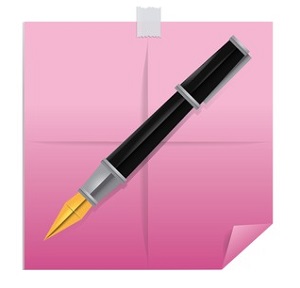
Here's a great question to start with: "What are the benefits of actually putting time/effort/energy into this?" A lot of people want to just outsource their copy to a copywriter like me. I have written copy professionally for years and years, both in the advertising industry, business and in the digital marketing space. There's a time for that, but if you don't know how to write your own copy, it sometimes means that you don't really even understand your own business. A lot of times people will come to me and ask me to write some sales copy or a sales page for them, and they won't have their target market figured out and a lot of other elements of their business figured out. They just expect someone else to figure their business out for them. It's kind of a diagnostic tool to see how well you're selling and why it's good and beneficial to people. I've also taught people to write their own sales copy to the point where they end up seeing the value of what they have to offer, way more than they did before. That's because when they have to write out all those bullet points telling people why it's great, it makes them go, "Wow! This is pretty awesome. I'm going to double the price of the product." If they hadn't of written it themselves, I don't think they would have had that experience. Obviously, the big benefit of knowing how to write better sales copy is that you will sell more of your stuff. But, there's also a lot of other ancillary benefits. For instance, the confidence you have in what you're offering is so exponential when you have crafted the message yourself. When someone asks you about it, you'll be able to talk about it because you have a grounding in what you're selling. That's why I'm so passionate about helping people learn how to do this themselves. I often tell people to write their sales pages before they even decide what to put into the product because as they're doing that they'll say, "Hey, you know what would be really cool? I should put this bonus in here because it feels like it would fit right here..." In other words, it gives them the idea to put it into the product. So, it's a symbiotic relationship. It's not a separate process, and that's why, I think, some people delegate too early. The other big reason to write your own copy is that, even though a professional might have a little better way with words, but they could also just dial up a little of what you've done yourself. So, you could give them a really good first draft of what you want to say in a clear way, they could do so much better of a job. Plus, it's still your ideas and your work, whereas if you just hand it off you advocate. I don't like that. I don't think it's a good idea for people to do in business. I thoroughly agree with that. 3 Reason Why People Feel Writing Sales Copy Is Hard
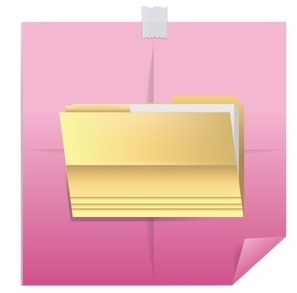 Before I get to the five steps I'm going to tell you about for the actual page itself, I want to share three reasons why people think this is so hard. A lot of people are probably thinking, "Yeah, yeah, yeah, but I couldn't write my way out of a paper bag. I can't do this. I've sat down and tried, and I just can't." There are three reasons why this is hard, okay?
Before I get to the five steps I'm going to tell you about for the actual page itself, I want to share three reasons why people think this is so hard. A lot of people are probably thinking, "Yeah, yeah, yeah, but I couldn't write my way out of a paper bag. I can't do this. I've sat down and tried, and I just can't." There are three reasons why this is hard, okay? - It's Difficult to be Objective About Yourself - The #1 reason why it's hard is because it's difficult to be objective about yourself. I'm sure that many of the people out there could turn into their best friend or colleague and figure out ways to talk about that person's product, but when it comes to selling yourself, whether you are a coach, or a consultant, and so on, it's hard to see the forest through the trees. Also, especially if you're a woman, you don't like to brag, so there can be some resistance going on. That's one reason. Being objective is tough.
- There Is No Sales Copy Secret- The second reason is that there are a lot of copyrighting gurus out there, and I really don't count myself as one of them, but they'll tell you that there are all these secrets. Maybe there's this secret handshake or this secret world that you have to know about in order to write great copy, or maybe that you have to be a really amazing writer and only certain people with the talent to do this can do it. That's absolutely not true. We've already talked about that. It's really not true. While there are some people that enjoy it and are skilled at it, there's a big difference between writing this kind of copy that we do in the digital marketing space and the kind of Madmen "creative" stuff that I used to do in the advertising business. That's a whole different animal you don't need. You shouldn't be doing that kind of clever, slick stuff in our space anyway. So, all the secret stuff, what I'm going to teach you today is really going to blast that out of the water.
- The Challenge of the Blank Page - The third thing is the challenge of the blank page, which is true for everyone, professional writers included. That blank screen paralyses everyone. You don't know where to start or how to start. What I'm going to teach you now is going to help you with all of those things. It's going to help you with your objectivity. It's going to help you realize that there really are no secrets because if you do these five things that you're about to be taught, you're really 99% of the way there, to having really great sales copy. This will also help you with the "blank page" phenomenon because it will give you five different ways to get started. Starting is the hardest part.
5 Steps to Writing Great Sales Copy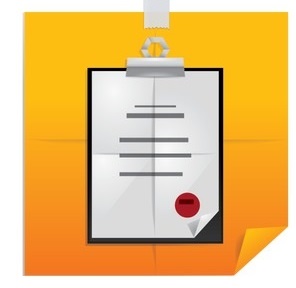
I actually learned four of these five steps on the first week on the job in the ad business. I came out of college, and I didn't know what I was doing, and all of these old men, with their pipes and their bow ties, were there, and you know, I was totally intimidated. But, my boss took me to the side and gave me this piece of advice, that I've been using ever since all these years. He said, "Lisa, there's really only four steps to writing great copy." Now, that was advertising, so I added a fifth step. You're not going to understand them right now, but you will when I go through them. The five steps are: - "Oh dear!"
- "Good News"
- "Here's Why"
- "That's Right"
- "But wait...There's More!"
Step 1 "Oh Dear!"
The first expletive, "Oh dear," is where you'll state the problem. You've got a ring around the collar, and you have tried soaking and scrubbing. This works for both Madison Avenue and digital marketing. Basically, this is where you explore why the reader's life sucks right now without your solution. One of the things that I like to do with my own clients that you can do too, which it helps to do it with a partner, is to actually pretend to be your ideal client and sit with someone else and pretend that person is your therapist. So, you're their client, and you come to them with a problem, and they're like, "Okay, what seems to be the problem?" You might say something like, "Well, I'm 40 and I haven't had a date in years. I'm afraid that I'm never going to meet anybody. I'm afraid that I'm always going to be alone and my biological clock is ticking, so I'm not going to be able to have any kids. And, every time I go on a cruise, I have to go as a single person, and every time I go visit my family for Christmas or Thanksgiving, everyone asks me, 'So, when are you going to settle down,' and it's just horrible and I hate it." The more you talk about the problem, the more you'll express all of that stuff, and the more that will feed your ideas. When you go to write your copy, your ideas will flow more easily, and you'll end up saying something like, "Are you worried that you'll be single forever? Do you hate going to family functions because people are always asking about when you're going to meet someone? Do you feel like a third wheel with your friends, and when you go on vacation, do you have to be all alone? Are you concerned that it's going to be this way forever and you're just going to die alone and never have any kids?" You can put the ideas you've had during your role playing right into your sales copy, and the readers of that copy are going to be like, "Oh my God! How do they know I feel this way?" So, really try to sit down and explore all the reasons why the person would need to use your product. Think about every area of a person's life when you are thinking about how their problem affects them. How does it affect their health? How does it affect their career? How does it affect their financial situation? You know, all of these sorts of things. Just brainstorm and download all of this misery, and then you pick and choose the juiciest ones to put into your sales copy. It's about illuminating, expanding upon, and explaining how that problem is affecting the life of your prospect, and in an emotional way. Sometimes you have to be talking for a while before you actually hit the emotion. Something that has happened to me and some of my clients is that they go through this practice and actually start crying. They are so closely identifying with that person, and they're like, "Oh, it's so terrible that she's never going to meet anyone, and she'll never have kids, and she'll always wonder what life could have been like if she had been able to find a partner." That's just one example, of course. The problem is that a lot of writers, and a lot of writing teachers, will tell you to say what keeps them (your prospect) up at night. That has become so cliché and intellectually based in people's minds that people really can't reach any kind of depth that way anymore. This process helps you to get into the emotional space a little bit better. People justify with logic, but they buy on emotion. So, if you can connect with them emotionally, and you can articulate to them even better than they could even explain it themselves, what the problem is, why it is a problem, and what it feels to have it, they are going to believe that you have the solution. It's just a psychological reflex for people to subconsciously think, "I believe that you have the answer because you've been able to explain the problem so well, so clearly, and so emotionally." The most important thing to remember, when you're writing any kind of work, but especially sales copy, is that the creative process is to brainstorm everything. Don't write; just get it all out there. What options would you have. It's like smearing the paint onto the pallet, if you were a painter, and then saying, "I'm going to take a little bit of the red that I squeezed out, and a little bit of blue that I squeezed out, and dab it onto the picture." You're not going to use it all, but until it's all out there, you don't know what you have to work with. Often, people go straight into the writing, and then they wonder why it's flat and paralyzed. You aren't writing at first, you're just squeezing the paint onto the board. That's it.Step 2 "Good News"
 Now you've gone wait deep into the problem, and why it sucks to be them, and all the effects it's going to have on their life. "Well, guess what? You've got this problem. Well, good news! There's a solution! Introducing my brand new, handy-dandy whatever it is...That is going to solve all those problems." Now you might want to paint an opposite picture by imagining when you have this problem solved, imagining what it's going to be like when you bring the love of your life to Thanksgiving dinner and everyone loves him, and you plan your vacations together, and there are all of these memories that you get to share. I'm just making stuff up, and you don't necessarily have to go into all of this detail. You've stirred the pot in your "Oh Dear" section to the point where people really want to believe that you have the solution that they need, so they are just waiting for you to prove to them that what you have to offer works. They want to believe you. This leads into Step #3, which is "Here's why".
Now you've gone wait deep into the problem, and why it sucks to be them, and all the effects it's going to have on their life. "Well, guess what? You've got this problem. Well, good news! There's a solution! Introducing my brand new, handy-dandy whatever it is...That is going to solve all those problems." Now you might want to paint an opposite picture by imagining when you have this problem solved, imagining what it's going to be like when you bring the love of your life to Thanksgiving dinner and everyone loves him, and you plan your vacations together, and there are all of these memories that you get to share. I'm just making stuff up, and you don't necessarily have to go into all of this detail. You've stirred the pot in your "Oh Dear" section to the point where people really want to believe that you have the solution that they need, so they are just waiting for you to prove to them that what you have to offer works. They want to believe you. This leads into Step #3, which is "Here's why". Step 3 "Here's Why"
This is where a lot of people mistakenly start. "Here's why it works. Here's how it works. Here's why I know what I'm talking about...Because I went through the same thing too, and here's my story. Here's why you can believe me...Because it worked for all these other people who are going to give you their testimonials right here. Here's another reason you can believe me...Because I'm going to give you a money-back guarantee. Here's the process. Here's all you're going to get." You might offer to give your prospects 8,000 hours of MP3s, and workbooks, and workshops, and live events, etc. A lot of people start with that. Nobody wants a workbook. Nobody wants a DVD. But, when you tell them, "You've got this horrible problem that I understand better than anyone, and I've got the solution to solve it," you'll have their attention. Then, you simply go on to tell the reader why it's going to work. You're going to have all of this proof that what you have worked for other people, and it's kind of like calling for witnesses at a trial if you're a lawyer. I like to use analogies because I think that it helps a lot. So, you know, here's the character witness, and here's the glove that doesn't fit. It's like the demonstrations, when you see the guy driving his truck over the flashlight and it doesn't break. Before and after pictures are often used in this capacity if you're selling a weight loss product, or a fitness product, or something like that. They'll show a before and after, and that's part of the proof. You hear about social proof a lot, but there's all kinds of other proof. "Here's why this is important, and here's why my process is kosher. Just look at all the statistics out there that show that you're more likely to be shot by a terrorist than to find a mate after the age of 40." You know, I didn't make that statistic up, but I call it in as part of the evidence that I am presenting in my case. You don't necessarily have to do all of these things in this exact order, but you could do worse than to do them in this order. Watch an infomercial and you'll see that. Even if you watch television commercials that are 30 seconds long. When you're doing the brainstorming section of your sales page, and you realize that you don't have a whole lot in the section, that means you really need to go out and get some more facts and evidence to bolster my case. Where can I go back to my clients to get testimonials? Where can I call in a statistic? Where can I strengthen my guarantee and show why my process works? Where can I pull in my own story to prove that I've been through this myself. A lot of people will create products where they have solved a problem for themselves, and now they are bringing their system or intellectual property out to the world. This is where you might start to talk about your story and how you were in the same place they were, and that's why you can talk about it now, saying something to the degree of, "I discover this process, and lo and behold, it worked. Then, I tried it with my clients and it worked for them. Now I'm bringing it to you." That's part of the "here's why" section. People are going to start to believe what you're saying because there is some credibility there.Step 4 "That's Right"
You've told them that you understand the problem, and you may have made them feel a little horrible, but also hopeful because you may have the solution they're looking for. At this point, you've proven to them that your solution is probably going to work. So, you have now reached Step 4, which is kind of a recap. You'll essentially say, "That's right. You're going to solve this problem that's been bothering you forever, that you thought was insoluble, and you're going to have this amazing solution instead. You're going to get all of this stuff, that I talked about in the previous section and all of these reasons why it's going to work." Now you're starting to talk a little about components and more about the actual physical stuff they are going to get and how they are going to be delivered. The idea here is that your prospect will be thinking, "Well, how much is this going to cost me. It sounds so great that I'm afraid it's going to be too expensive." That's why you'll sometimes see the value of each individual item listed out for a total value of a bazillion dollars, but you only have to pay $197, or something like that. I'm exaggerating to make a point, but you've seen this on infomercials 100 times over. Usually, in regular advertising, that's where it starts. I wrote an ad a long, long time ago. It was a TV commercial that did very, very well. This was way back in the day, before there was liquid dishwashing detergent to put into your dishwasher; there was only powder. So, one of my commercials launched the first liquid that went into dishwashers. In this case, it was like, "Oh no! Your dishwasher powder didn't dissolve and your dishes aren't clean. Good news! We have this great new Palmolive automatic dishwasher detergent that's going to solve that problem. Here's why it works. It's a liquid, so it dissolves and doesn't leave powder all over your dishes. That's right. You'll never have this problem again." I mean, that's pretty much how it went, but in the visual people are throwing out their dishes and throwing them against the wall because they were so mad that their dishes weren't clean. It was the 80's, so it was a little bit cheesy, but the idea is that this is still the same structure. At this point, in the traditional advertising world, you would stop. If you're in the infomercial or digital marketing world, you're going to move on to Step 5, which is "But wait...There's More!"Step 5 "But wait...There's More!"
This is where you would throw in all of the bonuses. It's where the infomercial will say, "But wait! We'll double your offer. We'll give you two of the things you didn't even know you needed one of five minutes ago. We're going to give you two of them, just pay more shipping and handling." Obviously, we are in the digital space, so if you have an info product, you'll offer bonuses. The best bonuses in this space are things that help people consume the product and/or that add value to the product. It should be something relevant. A lot of times I will tell my clients that they have given way too much value in their products and that they should take something out of there and make it a bonus. Put it on a little velvet pillow, and now it's like, "Oh, and now you'll get my amazing spreadsheet that's going to help you to keep track of your progress." Anyway, the point is that you were including that before, but by offering it separately you can make your offer seem even more valuable and irresistible. The best thing is that if it's a digital download, it doesn't cost anything to deliver, but it's super-valuable to your prospect. So, there's this other extra thing, and sometimes people will buy it just for the bonus. When I take people who can't write sales copy through what we just did I ask, "How many people thing they can write their own sales page now?" Pretty much, the whole room raises their hand, whereas in the beginning I'll ask, "How many people think it's impossible to write copy," and pretty much the same people raised their hand. Once you get into the details, you may have to scratch your head a little to find the right words, but you probably don't have a problem with writing but a problem with clarity. Now that you know what these five things are, as long as you just do:- "Oh dear!"
- "Good News"
- "Here's Why"
- "That's Right"
- "But wait...There's More!"
Testimonials
When you're actually creating your page, after you've basically collected all of this material, if you have enough testimonials a great thing that you can do is dot them around and use them to break up the page visually. Also, you might put a testimonial right after a bullet point when you have a testimonial that illustrates that point. For example, if you said something in a bullet point that let people know your product will increase their income, you can follow that with a testimonial where someone says that they had an increase in sales. This essentially tells the reader, "I'm not just saying this, look what he has to say." It's a luxury to have testimonials that boaster your product's track record, but even if it doesn't have that kind or track record yet, there are still ways that you could go about borrowing credibility or get folks to say nice things that will allow your reader to connect the dots and figure out you're someone they should be listening to. I work with people on that too, because some folks are just getting started, and they are like, "But, I don't have testimonials." There are things that you can use instead. They may not be as valuable, so you should always be collecting that kind of proof, anywhere you can find it. One thing that you can do is use beta testers to try out your products. No one has to know if they paid for it or not. They got results, and that's what matters. As far as the reader is concerned, it's none of their business. So, that's awesome.Where To Place the Guarantee
I like to put it near the order form, or near where you are going to be asking for the sale. Because, at this point they want to click "Add to Cart," but maybe they're scared. People always ask, "What if someone asks for their money back, and they just want to take my product and use it." You know what? That's the cost of doing business, and the number of people who are going to be made to feel safe enough to do business with you without knowing you far outweighs the two or three bad apples who are going be thieves. So, I always tell people not to worry about that. There is a way that you can go about taking a person off of your list if they refund too much. For example, if a person refunds three times, you might take them off of the list and you send them an email that says something like, "We're obviously not the company for you, so we've taken you off of our list. If you do buy something else from us, you will not ever be refunded again." That's how you can handle that, but there's no reason to advertise this. You may have to deal with this once or twice a year, if that. It's a really tiny percentage of people that you might have to do this with. I would put it in more than once. I'd put it any place where I thought people would need to be reassured. The guarantee is there to make people comfortable enough to press "Buy Now". It's not there because you just really want to give people their money back. Obviously, you will if they ask you to, but the idea is this as a risk reversal. Also, you need to believe in your own stuff to say, "You know what? If you buy this and you use it, you should be really happy, so why wouldn't I offer you a guarantee?" I know some people who never offer a guarantee, and that's their policy. I think that since we are talking about writing sales copy that works, guarantees work. That's why people put them there. So, most people won't come back, and if they are legitimate "refunders" like, "I've tried it, and it's not for me," then I don't want their money. Neither should you. Actually, I've had to refund a couple of things that really weren't what I thought they were, and the people were super-cool about refunding it. I went on social media and said, "Oh my God! These people were so awesome. You know, I asked for a refund, and they said 'no problem'. They just gave it to me." They probably got more mileage out of me saying how great they were that it was worth way more than the sale would have been to them. Connecting With Lisa
If you go to LisaRothstein.com/RealFastCopy, I'm going to give you guys a downloadable cheat sheet that will help you fill in the blanks on these sorts of things. This will make it even easier for you, and I use it with my own clients. It's really fun and easy to fill in, and it's something that you can keep with you and use it as a place to kind of capture all of your ideas for your next sales page. You can use it over and over again. I really hope that you enjoy that. You can find me on social media too. I spend a lot of time on Facebook, and of course, my website is LisaRothstein.com.Resources
Lisa's Free Sale's Copy Brainstorming KitReal Fast Results Community
If you are diggin’ on this stuff and really love what we’re doing here at Real Fast Results, would you please do me a favor? Head on over to iTunes, and make sure that you subscribe to this show, download it, and rate & review it. That would be an awesome thing. Of course, we also want to know your results. Please share those results with us at http://www.realfastresults.com/results. As always, go make results happen!
Aug 2, 2016

Welcome to the Real Fast Results podcast! Today, you’re going to have the chance to learn about digital assets and the advantages of producing them. The information found herein was first presented by Mark Timberlake, who is an absolute expert when it comes to exploiting this type of aperture in the marketplace. Mark, welcome to the show… Today we’re promising to help people understand how they can create digital assets that they can actually sell over and over. So, by the end of this, they should have a clear concept of how online training can be packaged as a digital asset, and how a person could then put that outlet in some of the places where you can get some instant income coming in.
Benefits of Creating Digital Assests
In terms of lifestyle, it’s a residual-based income so it’s a dream; it’s living the dream. Me and my wife, we live this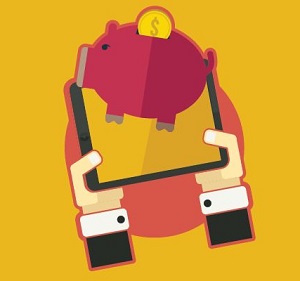 dream. We create digital products, and we sell them, and we live off the income. It’s just freedom from employment and service-based work. We escaped employment 15 years ago and started our own business, but we still had a lot of service-based work going on. We were still dealing with clients, but that’s one step away from working with an employer because you’re still being employed. You’ve just changed your employer, and you can pick and choose your employer a little bit more, but you’re still being employed. However, when you actually create digital content that you can sell, and it’s a digital asset, there is no employer. That’s the real beauty, and it’s exponential in terms of how much that product can actually earn. It’s limited by the amount of people you can get in front of, and it’s limited by the amount of times you can sell that product. That is where it gets really exciting. A third-party platform is very good when you’re launching cold. Now, if you’ve got a really strong, established audience, I wouldn’t recommend that you go on to these third-party platforms over that, to increase your audience. But, if you’re brand new and you don’t have a list, you’re new to online marketing, you love to teach, and you’ve got a passion about something, these places can give you that really quick launch. Particularly sites like Udemy, which have got really high-quality standards but help you through the process, they can really get you learning how to create courses quickly. I would recommend looking at third-party courses from instructors like myself. The reason why I say this is because we’re going to teach platform agnosticism, which is really important. While we're talking about platforms, I just want to mention this principle. We want to create courses that we can put on platforms, but we don't want to create Udemy courses, we don't want to create Skillshare courses, and that's some of the platforms we can put stuff on. We want to create agnostic courses that are primarily our asset, that we can then put into them in an appropriate manner, which will allow us to tap into their marketplace without losing our identity as a business. Does that make sense? It's like going into a supermarket. You don't want to supply the branded product. You don't want to supply, you know, the Walmart ketchup. You want to supply the Heinz ketchup. You want your brand to be consistent, and that's one of the key things you need to understand. When you go to these places, the temptation might be to hand over your brand to these places, but what you really want to do is just use the supermarket and put your brand in there, and then people can come back to you. Udemy likes big mega-courses. Now, Skillshare wants 20-30 minute courses. Let's look at that practically for a moment. For instance, I've just released my online Instructor Masterclass 2016, and there are 16 modules in that course. This is a practical example. On Skillshare, they want small courses, and they're going to pay me per enrollment. So, I've got 16 modules, which are independent courses on Skillshare, and I've got one mega-course on Udemy. On Skillshare, I get 16 enrollments for everyone that takes that course, and then on Udemy, I get one big enrollment. Then, when I put it on my website, which is another thing we're going to want to do. I encourage people to use a third-party website to start out like Teachable, or something like that, where they take in all of the back-end hosting, you put into your course, and then you can market them as well. So, then I can now put the same course on my website, and then I can upsell. I can have a subscription on there. I can bundle a load of courses. I might have a monthly Hangout or webinar. For instance, on Zenler, who I'm just switching over to from Teachable. Zenler has a built-in webinar functionality, so you can literally host the webinar inside your school. You can host a free webinar, and literally on the page is the subscriber. So, there is lots of really exciting stuff happening right now. The key is that you want to be able to create the content from the very beginning knowing that this is platform agnostic, this is your content. You need to split it up in different ways for different platforms, but you maintain control. It becomes really exciting when you start doing that because now you're developing all of these different income streams in different places. If one falls over and collapses, you've got five or six others that are still running and you're minimizing your risk. That's the key thing. From the beginning, don't get tied into one platform.
dream. We create digital products, and we sell them, and we live off the income. It’s just freedom from employment and service-based work. We escaped employment 15 years ago and started our own business, but we still had a lot of service-based work going on. We were still dealing with clients, but that’s one step away from working with an employer because you’re still being employed. You’ve just changed your employer, and you can pick and choose your employer a little bit more, but you’re still being employed. However, when you actually create digital content that you can sell, and it’s a digital asset, there is no employer. That’s the real beauty, and it’s exponential in terms of how much that product can actually earn. It’s limited by the amount of people you can get in front of, and it’s limited by the amount of times you can sell that product. That is where it gets really exciting. A third-party platform is very good when you’re launching cold. Now, if you’ve got a really strong, established audience, I wouldn’t recommend that you go on to these third-party platforms over that, to increase your audience. But, if you’re brand new and you don’t have a list, you’re new to online marketing, you love to teach, and you’ve got a passion about something, these places can give you that really quick launch. Particularly sites like Udemy, which have got really high-quality standards but help you through the process, they can really get you learning how to create courses quickly. I would recommend looking at third-party courses from instructors like myself. The reason why I say this is because we’re going to teach platform agnosticism, which is really important. While we're talking about platforms, I just want to mention this principle. We want to create courses that we can put on platforms, but we don't want to create Udemy courses, we don't want to create Skillshare courses, and that's some of the platforms we can put stuff on. We want to create agnostic courses that are primarily our asset, that we can then put into them in an appropriate manner, which will allow us to tap into their marketplace without losing our identity as a business. Does that make sense? It's like going into a supermarket. You don't want to supply the branded product. You don't want to supply, you know, the Walmart ketchup. You want to supply the Heinz ketchup. You want your brand to be consistent, and that's one of the key things you need to understand. When you go to these places, the temptation might be to hand over your brand to these places, but what you really want to do is just use the supermarket and put your brand in there, and then people can come back to you. Udemy likes big mega-courses. Now, Skillshare wants 20-30 minute courses. Let's look at that practically for a moment. For instance, I've just released my online Instructor Masterclass 2016, and there are 16 modules in that course. This is a practical example. On Skillshare, they want small courses, and they're going to pay me per enrollment. So, I've got 16 modules, which are independent courses on Skillshare, and I've got one mega-course on Udemy. On Skillshare, I get 16 enrollments for everyone that takes that course, and then on Udemy, I get one big enrollment. Then, when I put it on my website, which is another thing we're going to want to do. I encourage people to use a third-party website to start out like Teachable, or something like that, where they take in all of the back-end hosting, you put into your course, and then you can market them as well. So, then I can now put the same course on my website, and then I can upsell. I can have a subscription on there. I can bundle a load of courses. I might have a monthly Hangout or webinar. For instance, on Zenler, who I'm just switching over to from Teachable. Zenler has a built-in webinar functionality, so you can literally host the webinar inside your school. You can host a free webinar, and literally on the page is the subscriber. So, there is lots of really exciting stuff happening right now. The key is that you want to be able to create the content from the very beginning knowing that this is platform agnostic, this is your content. You need to split it up in different ways for different platforms, but you maintain control. It becomes really exciting when you start doing that because now you're developing all of these different income streams in different places. If one falls over and collapses, you've got five or six others that are still running and you're minimizing your risk. That's the key thing. From the beginning, don't get tied into one platform. Different Ways To Use Your Digital Content
 There's a couple of really exciting things potentially happening at the moment. Just whispers and rumors right now, but there's a whisper that Amazon might get into the online teaching space, selling digital training courses. They've already opened up Amazon Video. Now, there's a whisper that they're talking about getting into the actual delivery of education. So, in the way that they have embraced Kindle eBooks, they want to embrace training. LinkedIn also just purchased Lynda.com. This is the grandmother of online training courses. They've been doing it the longest. They are the ones that have mastered it, but the way they have always operated is you produce the course and they own the rights. So, for me, they would have to pay me a lot of money to get the rights to my business because I know the exponential value of my product over time. It's a case of the more eyeballs that go in front of it, the more money I'm going to earn. That's just simple math with a good-quality online training course. There's a whisper that they (Lynda.com) will start opening up the platform so that third-party vendors can upload. Now think about that. That's Microsoft, essentially, and Amazon are starting to sniff around the online education sector. So, when you create your courses--you've got these things, they are like bags of sweets, you can put one bag over here and just a couple of sweets over here, and you can put a big multi-pack of sweets over here. The point is that as the market progresses and grows, you've created a digital asset that you can then just drop straight onto these platforms, and that's where it gets really exciting. Online education is absolutely massive. It's one of the VCs. The venture capitalists are all trying desperately to find somewhere they can get involved and spend money on because it's one of those areas that's really exploding fast. If people are spending money, that means content creators have a massive opportunity to get into right now while we're still in the early part. We aren't even in the boom part. We are in the early part, and there's a massive opportunity to get in right now and create courses because this is going to boom. It's a pebble on the beach at the moment. It's going to be a whole beach soon, and now is the time to get involved. Create high-quality courses that are agnostic, that can go anywhere, and that can earn you this residual income.
There's a couple of really exciting things potentially happening at the moment. Just whispers and rumors right now, but there's a whisper that Amazon might get into the online teaching space, selling digital training courses. They've already opened up Amazon Video. Now, there's a whisper that they're talking about getting into the actual delivery of education. So, in the way that they have embraced Kindle eBooks, they want to embrace training. LinkedIn also just purchased Lynda.com. This is the grandmother of online training courses. They've been doing it the longest. They are the ones that have mastered it, but the way they have always operated is you produce the course and they own the rights. So, for me, they would have to pay me a lot of money to get the rights to my business because I know the exponential value of my product over time. It's a case of the more eyeballs that go in front of it, the more money I'm going to earn. That's just simple math with a good-quality online training course. There's a whisper that they (Lynda.com) will start opening up the platform so that third-party vendors can upload. Now think about that. That's Microsoft, essentially, and Amazon are starting to sniff around the online education sector. So, when you create your courses--you've got these things, they are like bags of sweets, you can put one bag over here and just a couple of sweets over here, and you can put a big multi-pack of sweets over here. The point is that as the market progresses and grows, you've created a digital asset that you can then just drop straight onto these platforms, and that's where it gets really exciting. Online education is absolutely massive. It's one of the VCs. The venture capitalists are all trying desperately to find somewhere they can get involved and spend money on because it's one of those areas that's really exploding fast. If people are spending money, that means content creators have a massive opportunity to get into right now while we're still in the early part. We aren't even in the boom part. We are in the early part, and there's a massive opportunity to get in right now and create courses because this is going to boom. It's a pebble on the beach at the moment. It's going to be a whole beach soon, and now is the time to get involved. Create high-quality courses that are agnostic, that can go anywhere, and that can earn you this residual income. 3 Steps To Making Digital Courses
I can give you a simple overview of the three things you're going to need to master. I can give you some quick tips, but the process, in itself, is a learned skill.Step # 1 Quality of Educational Content
So, #1) Quality of Educational content. Now, where a lot of people fall down, they'll see an opportunity like this and they'll think, "Okay, I can just create a quick course, and I can make loads of money." No. If you want this to be a long-term asset, you've got to put the time into it. You've got to be thinking, "This could potentially earn me $100,000 over its lifetime." You've got to design from the beginning with that kind of potentiality in the back of your mind. You might only make $100, but you've got to approach it like, "This is a significant asset I'm developing here." I've created courses where I said, "This one's going to absolutely go crazy," and it just falls flat. I've created over 40 courses now, and there have been some that I didn't think would do that well, but all of the sudden, it really surprises me. So, #1) Quality of Education. You have to remember that, at the end of the day, that's what people are actually buying.Step #2 Quality Production Values
#2) Quality Production Values. That doesn't mean you have to have a professional studio. You could literally use a slideshow and a mic. You could literally combine a slide show and a good-quality podcast setup, and you can create courses. So, you don't need lots of money. I've got a green screen studio where I do a lot of talking heads. Whichever level you go to, you've got to keep pushing the quality. So, the quality of production is really important.Step #3 Marketing Excellence
And then there's #3) Marketing Excellence. You have to learn the basics of online marketing. It's a skill set that's absolutely fundamentally required. Although you're starting out by putting it onto platforms, you do need to understand some key things like SEO. You do need to try and understand how to optimize some text. That sounds really huge, but it isn't as big as you think. You've just got to learn the trade. That's the key thing. You've really got to take time to learn the trade. Let's say that you've got a very popular podcast. Well, you would have had to learn the trade of podcasting. Yes, everyone can do it, but only the people who have mastered the process will do it well, will do it professionally, and will do it to a high standard. That's what sets it apart. So, that's what you've got to have--high quality teaching, very high-quality production values, and marketing excellence. When you build an online course creation, digital asset business based on those principles, it's just a case then of finding the course, or set of courses that are going to start getting that response from the marketplace that you're looking for. How to Find a Responsive Niche
The first thing to do, believe it or not, don't go to niche at the moment. It's still very early in the marketplace, and the temptation is to do your "DIY Brain Surgery Course". Bear with me. There's not very many people in the world that want to practice DIY brain surgery. On the other hand, there's how to do a Facebook ad. You know, that is so broad. Let me give you another example. You can create a master course on online marketing, but you've got to be specific about who you're trying to reach. What I'm trying to say is don't go too broad, but don't go too narrow either. One of the things to test what's working is to go on one of the sites and have a look at what's working. Go on a platform like Udemy and Skillshare. If you want to make big courses, Udemy is #1. Some other places are starting to catch up quickly. But, if you want to do business to consumer, like craft-based courses, hobby-based courses, and lifestyle courses, Skillshare is much better. Once you understand that, and you've got the two main, sort of, protagonists in the marketplace, Udemy being business to business, and Skillshare being business to consumer, then have a look at your expertise. Go in there and see what types of courses, in your expertise, are getting the students, they're trending, they seem to be doing well. Be honest with yourself. If you look at a course and say, "I can do better than this," then make a better course. That's the place to start, but one other thing is when you make your first course, your first course is disposable. You're going to throw it away. That's where you learn the art of making a course. You'll continually learn, but that's where most of the big lessons are. I've seen people do this. Don't try to create an 18-hour talking-heads master-class because you're going to film it, you're going to look at it in six-months time, and you're going to be embarrassed of it. The thing to do is to create a small course, maybe with something like Skillshare, just to go through the process of learning. Take some courses on how to plan and how to structure. Just start with a small course. Don't throw away your best course on your first course. If you're a master at Facebook advertising, and you can show, "Here's what I've spent. Here's my return on investment." Start with how to set up a Facebook group. Don't give up your best stuff at the beginning because that course won't be your best. Go and have a look, see what's working, and don't fall into the trap of going to niche or too wide, but do a little research and see what's actually going.Building Course Material
 You'll want to break up 2-10 minute segments. You know, 2-5 for most subjects, and 10 if it's technical. You have to learn how to translate Chinese. This is one of the core educational issues that nuance online instructors may not have grasped yet. It doesn't matter if you're a professor. It doesn't matter where you come from. When you start speaking to someone, every area of knowledge has its own language. So, if you sit down with someone and start talking to your granny about podcasting, and you start saying, "Yeah, I'm going to be doing this, and I'm going to be using my preamp," she's not going to understand what you're saying. You're speaking Chinese. Every area we have expertise on has its own subset of language. English isn't some sort of homogenous blob. It's built upon all of these areas of expertise. If you want to do quantum physics, you have to learn a whole new language before you can comprehend that. That's the core thing to understand. When you're teaching someone, you have to translate Chinese. That's what the best instructors do. They take a complex subject, which is complete Chinese to someone else, and they translate that into language so that the layman can understand. It's not about being the smartest or the most knowledgeable; it's being the best translator. If you can explain a simple concept to them, that's simple to you, but complex to them, better than everybody else, people will pay you money to solve their problems. Become the translator. Become the one that's best at translating Chinese, and that's what's going to give you long-term value in your product.
You'll want to break up 2-10 minute segments. You know, 2-5 for most subjects, and 10 if it's technical. You have to learn how to translate Chinese. This is one of the core educational issues that nuance online instructors may not have grasped yet. It doesn't matter if you're a professor. It doesn't matter where you come from. When you start speaking to someone, every area of knowledge has its own language. So, if you sit down with someone and start talking to your granny about podcasting, and you start saying, "Yeah, I'm going to be doing this, and I'm going to be using my preamp," she's not going to understand what you're saying. You're speaking Chinese. Every area we have expertise on has its own subset of language. English isn't some sort of homogenous blob. It's built upon all of these areas of expertise. If you want to do quantum physics, you have to learn a whole new language before you can comprehend that. That's the core thing to understand. When you're teaching someone, you have to translate Chinese. That's what the best instructors do. They take a complex subject, which is complete Chinese to someone else, and they translate that into language so that the layman can understand. It's not about being the smartest or the most knowledgeable; it's being the best translator. If you can explain a simple concept to them, that's simple to you, but complex to them, better than everybody else, people will pay you money to solve their problems. Become the translator. Become the one that's best at translating Chinese, and that's what's going to give you long-term value in your product. Recap: Steps To Making Digital Courses
The "Golden Triangle" of course creation is high-quality educational content, #1. You want to solve people's pain points and problems. You want to be doing that better than anyone else. You want to be translating that Chinese. #2) You want high production values. No matter what level you are, you want to take the time to do the editing and remove all the "ums and ahs" so that you have really good quality. Invest in that process. #3) Marketing excellence. Learn how to market yourself, learn what's going to work, and learn how to place your product. And, just understand that these third-party platforms are going to do some marketing for you, and that's why we're using them at the beginning. A beginning instructor, usually the worst skill they've got is marketing. That's the thing they least understand, but that's where the leg up on these platforms are going to be. You're going to have some stabilizers on your bike. They are going to supply the stabilizers, and they are going to get you going, but you don't want to stay on stabilizers forever. You want to be platform agnostic, and eventually, you want that audience that you're building on your website, on your property. I think those are the core things to know.Third-Party Platforms Suggestions
If you go to my website, SMEHeroes.co.uk, you'll find a platform guide. It's a resource that we keep up to date, and it shows all of the latest places and some of the things that you need to be aware of. On that, we've got Udemy, Skillshare, StackSkills... There's lots of information on there that is current and up to date. It's a great resource for someone trying to figure out where to put their courses. For instance, if you have courses on programming, you may not want to put them on Skillshare, necessarily, but there are other third-party sites that specialize in those types of things. There are also sites to avoid. For example, there are some sites that won't pay you. They've been identified too. There are also some third-party hosting platforms. These are places you can put your courses and sell them. Go to SMEHeroes.co.uk, and go to the "Platform Guide". It's linked at the top, and you're going to see lots of different places where you can sell. If you want to connect with me, you can find me on all of the social platforms from there.Resources:
Udemy.com Skillshare.com StackSkills.com Third Party Websites for Back-End Hosting Teachable.com Zenler.com Mark's Platform Guide Platform GuideReal Fast Results Community
If you are diggin’ on this stuff and really love what we’re doing here at Real Fast Results, would you please do me a favor? Head on over to iTunes, and make sure that you subscribe to this show, download it, and rate & review it. That would be an awesome thing. Of course, we also want to know your results. Please share those results with us at http://www.realfastresults.com/results. As always, go make results happen!
Jul 29, 2016

Welcome to the Real Fast Results podcast! Robin Cutler, from IngramSpark, is here to share her secrets on print on demand (POD) publishing. So, without further ado, let’s welcome Robin… Our promise today is to talk a little about print on demand and what your options are as an author as well as the different platforms in which you can make your book available. Most importantly IngramSpark, but also CreateSpace and some other options that you might have. What we plan to do today is to bring clarity and to offer you some real solutions for how you might move forward with your self-publishing plans.
Defining Print on Demand Publishing
Print on demand, as a technology, has been around for, actually, about 20 years. It really started at Ingram 20 years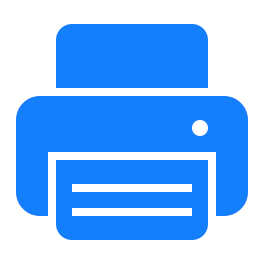 ago, when Ingram started a company called Lightening Source. That was actually done by John Ingram 20 years ago, and Lightning Source is now the state-of-the-art print on demand company of the world. Print on demand is just like it sounds, where instead of an author or publisher having to stock inventory, through print on demand, you can actually print as you need to and pay as you go. What’s so great about print on demand is that it allows you, as an author and as a publisher, to bring your book to the marketplace and reduce the risk of doing so. We aren’t actually printing until we actually get orders for those books, and those orders can go directly to the customers in many cases. The minimum order in a true print on demand model, like what we offer through Ingram Spark, is one copy. So, isn’t that phenomenal? To me, this is the heyday for self-publishers. They have as much, and as many, the tools at their disposal as the traditional publishers have always had. You know, they have access to IngramSpark, which is the world’s largest book distributor. You can put your content out into the marketplace very easily and inexpensively, through print on demand, and just see what happens without having to sell the family farm, which was not always the case in the old days.
ago, when Ingram started a company called Lightening Source. That was actually done by John Ingram 20 years ago, and Lightning Source is now the state-of-the-art print on demand company of the world. Print on demand is just like it sounds, where instead of an author or publisher having to stock inventory, through print on demand, you can actually print as you need to and pay as you go. What’s so great about print on demand is that it allows you, as an author and as a publisher, to bring your book to the marketplace and reduce the risk of doing so. We aren’t actually printing until we actually get orders for those books, and those orders can go directly to the customers in many cases. The minimum order in a true print on demand model, like what we offer through Ingram Spark, is one copy. So, isn’t that phenomenal? To me, this is the heyday for self-publishers. They have as much, and as many, the tools at their disposal as the traditional publishers have always had. You know, they have access to IngramSpark, which is the world’s largest book distributor. You can put your content out into the marketplace very easily and inexpensively, through print on demand, and just see what happens without having to sell the family farm, which was not always the case in the old days. How to Start a Print On Demand (POD) Project
First of all, you need to have worked with an editor to create a published book. You should work with a designer. Although, if you have the skill to design yourself, that’s fine. Most people don’t, however, so you would probably need to work with a designer to actually format your book in a trim size that can actually be printed as print on demand.Book Trim Size
 There are some limitations on what you can do when it comes to print on demand. You will want to check and make sure that the trim size that you and your designer have selected is one that actually can be manufactured through your print on demand process. There are a lot of choices, as far as what those trim sizes are. The smallest is 4x6, and it goes all the way up to 8.5x11. There’s color, there’s hardcover, paperback, and a couple of different options in bindings that are available now. Even in hardcover, you can have a cloth-printed look to your hardcover book with a jacket on it. 6x9 is the one that’s most heavily chosen by all publishers. That size is the one that’s most commonly seen on most bookshelves, and 5.5x8.5 is another one. For children’s books, we’re starting to see sort of a square trim size. There’s an 8x8 and 8.5x8.5, and also 8.5x11. But, what’s great about a squarer kind of trim size is that it gives you a lot more flexibility in terms of your illustrations. Most illustrations will fit on that sort of format. We are always adding, and I think we’re about to launch a 10.5x10.5 square trim size through Ingram here in a month or so. You can always check and see if we’ve added anything recently. There’s just a lot that’s available. An author, as they are writing their book, they tend to have an image of what they think that finished book should look like. Often times, that image or vision that they have is a non-standard trim size because they think that makes their book unique in the world and on a bookshelf. Unique isn’t necessarily a good thing, in terms of cost, and also, how you distribute your book. In fact, you want it to be standard and part of a format that booksellers can sell easily. So, I say, don’t get hung up on the format. Make sure it’s standard. Make sure, especially as a new author, it fits a print on demand trim size. You can go onto the IngramSpark site, and I’ll give you this information. There are also other places you can check out what various print on demand providers offer. So, I would say that’s Step #1. I think that it is smart to look at similar books in your genre. Not only the trim size, but you also want to look at the pricing of your competitors and books in the marketplace.
There are some limitations on what you can do when it comes to print on demand. You will want to check and make sure that the trim size that you and your designer have selected is one that actually can be manufactured through your print on demand process. There are a lot of choices, as far as what those trim sizes are. The smallest is 4x6, and it goes all the way up to 8.5x11. There’s color, there’s hardcover, paperback, and a couple of different options in bindings that are available now. Even in hardcover, you can have a cloth-printed look to your hardcover book with a jacket on it. 6x9 is the one that’s most heavily chosen by all publishers. That size is the one that’s most commonly seen on most bookshelves, and 5.5x8.5 is another one. For children’s books, we’re starting to see sort of a square trim size. There’s an 8x8 and 8.5x8.5, and also 8.5x11. But, what’s great about a squarer kind of trim size is that it gives you a lot more flexibility in terms of your illustrations. Most illustrations will fit on that sort of format. We are always adding, and I think we’re about to launch a 10.5x10.5 square trim size through Ingram here in a month or so. You can always check and see if we’ve added anything recently. There’s just a lot that’s available. An author, as they are writing their book, they tend to have an image of what they think that finished book should look like. Often times, that image or vision that they have is a non-standard trim size because they think that makes their book unique in the world and on a bookshelf. Unique isn’t necessarily a good thing, in terms of cost, and also, how you distribute your book. In fact, you want it to be standard and part of a format that booksellers can sell easily. So, I say, don’t get hung up on the format. Make sure it’s standard. Make sure, especially as a new author, it fits a print on demand trim size. You can go onto the IngramSpark site, and I’ll give you this information. There are also other places you can check out what various print on demand providers offer. So, I would say that’s Step #1. I think that it is smart to look at similar books in your genre. Not only the trim size, but you also want to look at the pricing of your competitors and books in the marketplace. Making Changes In Your Book After It's Published
Another thing that I wanted to mention about the value of print on demand, and this is a big, big thing, is that you can easily update your book. If you’re a published author, you know that it’s hard to get it right initially. Invariably, no matter how good of an editor you have, or how good of a proofreader, you’ll find something that you want to change. And, it could be something for the good. Let’s say that you won an award. That’s something that you would want to include on the cover of your book. Maybe you’ve gotten a great review. Well, if you’ve printed 5,000 copies, and they’re in your basement, and you’ve gotten this great review or this great endorsement from James Patterson, you’re kind of screwed. You want to add that to your book. Print on demand allows you to easily do that. So, you just update your file, and everything that’s printed after that is the new information on the book. You can also easily update the metadata. There’s a lot of information out there, especially in the self-publishing world, about metadata and the importance of that. So, POD allows you to easily update all of the book information, the pricing, the description, anything you want to update.Next Step: PDF
You've edited your book, picked the correct trim size and evaluated your competition. Now, all you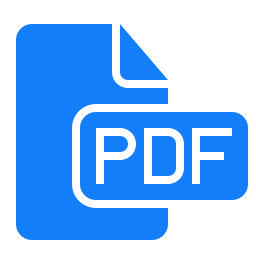 need to get started are the finished PDFs of your book for print on demand. You need a PDF of the cover and a separate PDF of the interior. In creating those PDFs, that’s why It’s really valuable to use a professional who understands how to create a PDF for print. Just a Word version of a PDF, maybe, is not going to work. It definitely won’t work for the cover. It may work in the interior, but it definitely won’t work for the cover. IngramSpark offers a cover generator template. Once you decide your trim size, you can use that template. The cover gets placed on it so that it will fit perfectly. And then, you just create an IngramSpark account, upload your information about your book, and what we call the metadata. Then, at the end of that, you upload your files. We have this great validator tool. On the screen, this scrolling thing happens, and it will show you if you have any issues with your files. If you do, you can go back and have your designer fix them and re-upload them. Once it goes through, you get a proof, you look at it, and if you say, “Gosh, this looks fantastic,” you turn on the distribution for that book. What that means is that your book actually goes out into the world via these data feeds. One of the primary ones is Ingram’s catalogue, and from there it goes out to Amazon, and Barnes & Noble, Gardners, and the UK. You know, it goes all over the place. So, it’s really fantastic. Just to bring clarity, one of the reasons why Ingram is so important for a self-publisher is because booksellers and libraries want to purchase books across a multitude of publishers from a single source. They don’t want to have to go directly to these publishers. They want to just have one or two vendors that they deal with, and so Ingram’s one. Once your book is in the Ingram catalogue, it’s like your book is right there beside all of the Random House books. There’s nothing that marks your book as being self-published. It just looks like any other book in the Ingram catalogue. So, when you are promoting your book to libraries and to booksellers, it helps to elevate you into the realm of professional authors. If you can say, “My book is available from Ingram,” you don’t have to say that it’s self-published. You don’t really have to say a whole lot more than about the book itself and where it can be purchased, and you say that it’s available from Ingram. When you say that it’s from Ingram, it’s implied that it’s been vetted and is of a good quality. That brings up another point, and that is to make sure that your book really is a good-quality book, which, by the way, is not that expensive. I say spend your money in creating, formatting, and marketing your book. Don’t spend your money on inventory. You can always do that. If your book takes off, you have a lot of other options, but especially bringing the book to market as a new author, don’t invest in inventory. Invest in creating your book and bringing it to market.
need to get started are the finished PDFs of your book for print on demand. You need a PDF of the cover and a separate PDF of the interior. In creating those PDFs, that’s why It’s really valuable to use a professional who understands how to create a PDF for print. Just a Word version of a PDF, maybe, is not going to work. It definitely won’t work for the cover. It may work in the interior, but it definitely won’t work for the cover. IngramSpark offers a cover generator template. Once you decide your trim size, you can use that template. The cover gets placed on it so that it will fit perfectly. And then, you just create an IngramSpark account, upload your information about your book, and what we call the metadata. Then, at the end of that, you upload your files. We have this great validator tool. On the screen, this scrolling thing happens, and it will show you if you have any issues with your files. If you do, you can go back and have your designer fix them and re-upload them. Once it goes through, you get a proof, you look at it, and if you say, “Gosh, this looks fantastic,” you turn on the distribution for that book. What that means is that your book actually goes out into the world via these data feeds. One of the primary ones is Ingram’s catalogue, and from there it goes out to Amazon, and Barnes & Noble, Gardners, and the UK. You know, it goes all over the place. So, it’s really fantastic. Just to bring clarity, one of the reasons why Ingram is so important for a self-publisher is because booksellers and libraries want to purchase books across a multitude of publishers from a single source. They don’t want to have to go directly to these publishers. They want to just have one or two vendors that they deal with, and so Ingram’s one. Once your book is in the Ingram catalogue, it’s like your book is right there beside all of the Random House books. There’s nothing that marks your book as being self-published. It just looks like any other book in the Ingram catalogue. So, when you are promoting your book to libraries and to booksellers, it helps to elevate you into the realm of professional authors. If you can say, “My book is available from Ingram,” you don’t have to say that it’s self-published. You don’t really have to say a whole lot more than about the book itself and where it can be purchased, and you say that it’s available from Ingram. When you say that it’s from Ingram, it’s implied that it’s been vetted and is of a good quality. That brings up another point, and that is to make sure that your book really is a good-quality book, which, by the way, is not that expensive. I say spend your money in creating, formatting, and marketing your book. Don’t spend your money on inventory. You can always do that. If your book takes off, you have a lot of other options, but especially bringing the book to market as a new author, don’t invest in inventory. Invest in creating your book and bringing it to market. The Difference Between Ingram and CreateSpace
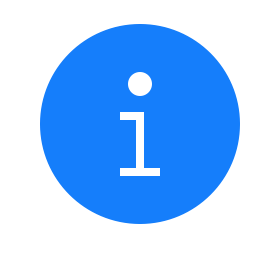 Just for full disclosure, I used to actually work at CreateSpace. I loved working for CreateSpace, and for Amazon, and I feel really proud of the work that I did there. I mainly worked with publishers, not so much with authors, like I do now at Ingram. But, I have nothing but great things to say about CreateSpace. I will say, because this is probably the #1 question that I get. Authors often ask, “What’s the difference between IngramSpark and CreateSpace?” So, I think we can have a discussion that can help bring clarity to authors that are sort of wondering the answers to that question. The difference is that Ingram has much broader distribution. CreateSpace distributes just to Amazon. Although, CreateSpace has a program that they call “Expanded Distribution”. Guess what “Expanded Distribution” is? It’s Ingram. It will put the book in the Ingram catalogue, which is a good thing, but it actually puts the book in the catalogue at a disadvantage to the author. Your book is listed with what we call a “short discount, non-returnable”. It doesn’t really get you what you need if you’re planning to sell to libraries and especially to booksellers. By putting your book into IngramSpark, you make your book available to Ingram and everywhere that Ingram sells; which is about 40,000 retail and library partners around the world. Then, you control and can specify how that book gets listed in the Ingram catalogue. You want that kind of control as an author, and I would advise you to have that control. You can set up the same book, using the same ISBN, and we’ll talk in a minute about ISBNs because I have a lot to say about that. But, you can set up the same book, with the same ISBN, that you own, in both platforms, with the same files. Then, you’ll be pretty-well set. What’s great about having your book on CreateSpace is that your book will always show up as being in stock within Amazon’s catalogue, which is a great thing. You want that as an author as well. What’s great about setting it up with IngramSpark is that in the Ingram catalogue there’s no mention of CreateSpace being associated with your book. Booksellers don’t like to see that. If you walk into the store with a CreateSpace book, you’re likely not to be warmly welcomed. So, you don’t want that. You just set up your book under your own imprint in the IngramSpark catalogue, and you’re good to go. If I had to pick one platform, because a lot of people just want to have one place where they keep everything, I would suggest it be IngramSpark just because it’s the broadest distribution.
Just for full disclosure, I used to actually work at CreateSpace. I loved working for CreateSpace, and for Amazon, and I feel really proud of the work that I did there. I mainly worked with publishers, not so much with authors, like I do now at Ingram. But, I have nothing but great things to say about CreateSpace. I will say, because this is probably the #1 question that I get. Authors often ask, “What’s the difference between IngramSpark and CreateSpace?” So, I think we can have a discussion that can help bring clarity to authors that are sort of wondering the answers to that question. The difference is that Ingram has much broader distribution. CreateSpace distributes just to Amazon. Although, CreateSpace has a program that they call “Expanded Distribution”. Guess what “Expanded Distribution” is? It’s Ingram. It will put the book in the Ingram catalogue, which is a good thing, but it actually puts the book in the catalogue at a disadvantage to the author. Your book is listed with what we call a “short discount, non-returnable”. It doesn’t really get you what you need if you’re planning to sell to libraries and especially to booksellers. By putting your book into IngramSpark, you make your book available to Ingram and everywhere that Ingram sells; which is about 40,000 retail and library partners around the world. Then, you control and can specify how that book gets listed in the Ingram catalogue. You want that kind of control as an author, and I would advise you to have that control. You can set up the same book, using the same ISBN, and we’ll talk in a minute about ISBNs because I have a lot to say about that. But, you can set up the same book, with the same ISBN, that you own, in both platforms, with the same files. Then, you’ll be pretty-well set. What’s great about having your book on CreateSpace is that your book will always show up as being in stock within Amazon’s catalogue, which is a great thing. You want that as an author as well. What’s great about setting it up with IngramSpark is that in the Ingram catalogue there’s no mention of CreateSpace being associated with your book. Booksellers don’t like to see that. If you walk into the store with a CreateSpace book, you’re likely not to be warmly welcomed. So, you don’t want that. You just set up your book under your own imprint in the IngramSpark catalogue, and you’re good to go. If I had to pick one platform, because a lot of people just want to have one place where they keep everything, I would suggest it be IngramSpark just because it’s the broadest distribution. The Use of ISBNs
To distribute a book, you do need an ISBN, which is the international book identification number. You attain an ISBN from, in the US it’s Bowker. In Canada, the Canadian government gives free ISBNs. So, it’s kind of country-specific, but in the US, you can obtain them from Bowker. To me, owning your ISBN is like owning your name. It travels throughout the life of your book, and there’s a different ISBN for every format of the book that you have, and that identifies the format as well. So, you want to own it just because you don’t want your book tied to any one distributor. Anytime your book is given a free ISBN, your book is tied to whoever gave you that free ISBN. You never want that for the life of your book, or even for a short length of time. You’ll regret it in the end, and it’s not a good thing to do. Just to be clear, CreateSpace does offer the use of their ISBN in your book, but you can’t use that ISBN on any other platform but CreateSpace. In addition to that, the publisher is then listed as CreateSpace, which is not necessarily a good thing. On Amazon it’s one thing, but off of Amazon it’s a whole other matter. You should really use the same ISBN on both your IngramSpark and CreateSpace edition. Otherwise, it creates confusion in the marketplace. For instance, you’ll suddenly get Barnes & Noble interested in your book, and they go to the Ingram catalogue. Well, you’ve set up your book via CreateSpace using your free ISBN, and you’ve turned on “Expanded Distribution,” so they see it listed there, but you’ve also assigned your own ISBN to the one that you set up with IngramSpark. So, it takes Barnes & Noble a minute to see that. Then they’re confused, and it doesn’t necessarily put you in the realm of a professional author. Instantly you will kind of have a mark against you. You want to set up your book exactly with the same ISBN that you have purchased and that you own. It will travel along the life and the format of that book on any platform. Like, you don’t want exclusivity anywhere. We don’t require exclusivity at IngramSpark, and I don’t advocate exclusivity for the author. I think you should be as broad as you can and make your book available as widely as possible.Print On Demand Tips
Remember this process:- Use POD when you’re launching as a new author. It’s there to really make it easy and affordable for you.
- Purchase your own ISBN. Make that investment.
- Make the investment in working with professional editors, designers, marketers, and spend your money like that.
- Set your book up, at least in IngramSpark and CreateSpace. If you’re only going to choose one, I would choose IngramSpark.
Real Fast Results Community
If you are diggin’ on this stuff and really love what we’re doing here at Real Fast Results, would you please do me a favor? Head on over to iTunes, and make sure that you subscribe to this show, download it, and rate & review it. That would be an awesome thing. Of course, we also want to know your results. Please share those results with us at http://www.realfastresults.com/results. As always, go make results happen!
Jul 26, 2016
 Welcome to the Real Fast Results podcast! You have made a wise decision to join in today because it is our honor and privilege to bring for the words and advice of Mr. Jack Canfield. In this episode, Jack is going to share how to develop a bestseller mindset. According to Jack, there’s a lot that goes into creating a bestseller, but most importantly, you have to have the right outlook. As you probably know, this man has been able to accomplish more than most people could even dream of. Let’s see what he has to say…
Welcome to the Real Fast Results podcast! You have made a wise decision to join in today because it is our honor and privilege to bring for the words and advice of Mr. Jack Canfield. In this episode, Jack is going to share how to develop a bestseller mindset. According to Jack, there’s a lot that goes into creating a bestseller, but most importantly, you have to have the right outlook. As you probably know, this man has been able to accomplish more than most people could even dream of. Let’s see what he has to say… Benefits to Having a Bestseller Mindset
For me, it has meant selling nearly 500 million books around the world. I’ve had 47 books on the New York Times Bestseller List, and I have been able to travel to 47 different countries and give workshops. As a result, I was in the movie The Secret, and I’ve had lunch at The White House. I hang out with people like Jeff Bridges, and Chaka Khan, people like that who are celebrity friends that I have now. And, you know, I’ve personally been able to stand on the first base line at a Dodger’s baseball game. I’ve had meetings with Bill Clinton, and John Gray, and I could just go down the list of fun things that have happened for me. Most important is the ability to make an impact in the lives of other people. I can remember being in a hotel in New York and watching this girl walk in with a bald head, probably about 12 or 13, obviously doing chemotherapy. I walked up to her, and I said, “I wanted to tell you that I’m supportive of you. I’m Jack Canfield.” “Oh my God! You’re the Chicken Soup for the Soul guy. I’ve read Chicken Soup for the Recovering Soul, Chicken Soup for the Teen Soul, Chicken Soup for the Cancer Patient Soul…” And, you just go like, “Wow! I’m making a difference in the lives of others.” That’s what really matters, the impact you can have. Achieving a Bestseller Mindset, from a Big Picture Standpoint
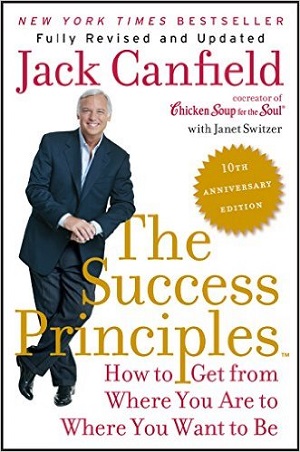 You have to believe that it’s possible for you to have something really important to say, and that you have the ability to say it. So, a lot of it is self-esteem, self-concept, and belief in yourself. Then, I think most people don’t think big enough. One of the quotes that I have in my book, The Success Principles, is by General Wesley Clark, who used to be the head of the NATO forces in Europe for the United States. He said that it doesn’t take any more effort to dream a bigger dream than it does to dream a small dream. In other words, you can think of five zeros after a one, or six zeros after a one, or eight zeros after a one, in terms of your income and in terms of impact. I just set a goal to train one million trainers to do my work by the year 2030. People think I’m crazy, but we’ve already trained 1,500 people since last November and certified them. So, we now have people in 79 countries teaching our work. When I told my publisher, we wanted to sell a billion books by 2020, he thought we were freaking crazy. We’ve sold a half a billion books, and it’s only 2016. The “hockey stick curve” is taking off.
You have to believe that it’s possible for you to have something really important to say, and that you have the ability to say it. So, a lot of it is self-esteem, self-concept, and belief in yourself. Then, I think most people don’t think big enough. One of the quotes that I have in my book, The Success Principles, is by General Wesley Clark, who used to be the head of the NATO forces in Europe for the United States. He said that it doesn’t take any more effort to dream a bigger dream than it does to dream a small dream. In other words, you can think of five zeros after a one, or six zeros after a one, or eight zeros after a one, in terms of your income and in terms of impact. I just set a goal to train one million trainers to do my work by the year 2030. People think I’m crazy, but we’ve already trained 1,500 people since last November and certified them. So, we now have people in 79 countries teaching our work. When I told my publisher, we wanted to sell a billion books by 2020, he thought we were freaking crazy. We’ve sold a half a billion books, and it’s only 2016. The “hockey stick curve” is taking off. 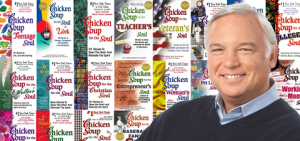 You have to dream big and believe big, and I think you also have to have an attitude and a mindset that it’s going to take work. You have to learn how to market, you have to learn how to do a podcast, you have to learn how to be on Good Morning America. You have to learn how to do internet marketing. You have to have a mindset of studying. You have to be willing to learn. Quincy Jones, who’s 83 years old, the producer of Michael Jackson, “We Are the World”, The Fresh Prince of Bel-Air, etc., said something. He said that when he decided to do television, he went to UCLA, and this was in the 60’s or 70’s, but he said that he took six months of courses in screenwriting, producing, and directing. He said that every field has a structure and a science to it, and you have to study that if you want to be successful, whether it’s music theory, how to be a bestselling author, etc. What is the craft of being a good writer? What is the willingness to get feedback? You have to be able to get feedback. One of the things that I tell people all of the time is that most books get published when people have read them: The writer, the wife/husband, the acquisition editor at the house. Well, with Chicken Soup for the Soul, we had 40 people read every story and grade them on a scale of 1-10. We put that on an Excel spreadsheet, and everything that averaged less than a 9 never made it into the book, including stories that I wrote. It’s like you have to have the willingness to get feedback and get off your ego trip as well.
You have to dream big and believe big, and I think you also have to have an attitude and a mindset that it’s going to take work. You have to learn how to market, you have to learn how to do a podcast, you have to learn how to be on Good Morning America. You have to learn how to do internet marketing. You have to have a mindset of studying. You have to be willing to learn. Quincy Jones, who’s 83 years old, the producer of Michael Jackson, “We Are the World”, The Fresh Prince of Bel-Air, etc., said something. He said that when he decided to do television, he went to UCLA, and this was in the 60’s or 70’s, but he said that he took six months of courses in screenwriting, producing, and directing. He said that every field has a structure and a science to it, and you have to study that if you want to be successful, whether it’s music theory, how to be a bestselling author, etc. What is the craft of being a good writer? What is the willingness to get feedback? You have to be able to get feedback. One of the things that I tell people all of the time is that most books get published when people have read them: The writer, the wife/husband, the acquisition editor at the house. Well, with Chicken Soup for the Soul, we had 40 people read every story and grade them on a scale of 1-10. We put that on an Excel spreadsheet, and everything that averaged less than a 9 never made it into the book, including stories that I wrote. It’s like you have to have the willingness to get feedback and get off your ego trip as well. How Can I Make Myself Feel Like I’m Worthy of a Bestseller?
Here’s the deal. Everybody has a message. Every life has lessons that people have learned. You have to be willing to share that, and if you are willing to be clear that you have something valuable. Now, if you don’t work on yourself, if you don’t do self-introspection, if you don’t take seminars, if you don’t do therapy, if you don’t meditate, etc, your awareness of what you know and how much you know is going to be limited. So, #1, you have to be somewhat committed to growth, somewhat committed to constantly learning and never-ending improvement. CANI, as Tony Robbins likes to say. The reality is that you’ve got to be a learner, and then you share what you’ve learned. The belief is that you’ve got something of value. Mark Victor Hansen used to always say to me, when we were co-authors of Chicken Soup for the Soul… I’d say something, and he’d say, “You have to write that down. Write a blog. Write a chapter.” I’d say, “Mark everyone knows that,” and he’d say, “No Jack, they don’t.” Often, we figure that everyone knows what we know, and the fact is that we all have a lot of unique knowledge. I think that whether it’s through affirmations, through meditation, whatever it may be, you’ve got to start with the idea that, “I have something to share, and I am worthy of success.” My wife is writing a memoir right now, and she has had some amazing lessons in her life. She’s so afraid that people are going to judge her for where she used to be in the earlier chapters of her book. I told her, “I’m going to steal the freaking manuscript and publish it behind your back if you don’t publish it because it’s so good.”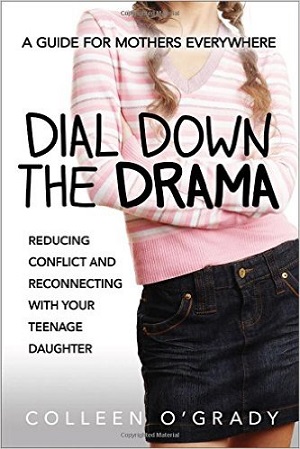 I think the main thing is to have other people read what you’re writing, and they’ll tell you if it’s good or not. It doesn’t mean that you don’t have something to say, it just means you haven’t written it yet. Most people, the feedback they get is, “Oh my God! This is so valuable,” or “Oh my God! I wish I had read this book 20 years ago.” I was counseling some writers the other day, and one of the women had written a book called: Dial Down the Drama: Reducing Conflict and Reconnecting with Your Teenage Daughter--A Guide for Mothers Everywhere. She is a woman who was a child psychologist, and she was working with lots of, I think, 20,000 teenagers, but when her daughter hit 12, it was like “Uh-oh”. Now she’s in it, right? So, she negotiated those teenage years. Her daughter is now 20, and she wrote a book based on her experience. The only people who are going to be interested in that book are going to be mothers with daughters, but that’s a lot of people. You may be someone who had a special needs child, and you had to learn how to negotiate the educational system. That’s a valuable message. You may be a meditation teacher, but you’re only going to attract a certain kind of person. Maybe they’re Christians, maybe they’re Buddhists, maybe they’re teenagers that are getting off drugs, but everybody has a group that will resonate with your message. You have to believe that. Also, don’t compare yourself to someone who has a universal message, like the Dalai Lama, Tony Robbins, Lisa Nichols, The Secret. You know, we’re not all meant to be billion dollar bestsellers, but we’re all meant to get our message out there and be bestsellers in certain categories, for sure.
I think the main thing is to have other people read what you’re writing, and they’ll tell you if it’s good or not. It doesn’t mean that you don’t have something to say, it just means you haven’t written it yet. Most people, the feedback they get is, “Oh my God! This is so valuable,” or “Oh my God! I wish I had read this book 20 years ago.” I was counseling some writers the other day, and one of the women had written a book called: Dial Down the Drama: Reducing Conflict and Reconnecting with Your Teenage Daughter--A Guide for Mothers Everywhere. She is a woman who was a child psychologist, and she was working with lots of, I think, 20,000 teenagers, but when her daughter hit 12, it was like “Uh-oh”. Now she’s in it, right? So, she negotiated those teenage years. Her daughter is now 20, and she wrote a book based on her experience. The only people who are going to be interested in that book are going to be mothers with daughters, but that’s a lot of people. You may be someone who had a special needs child, and you had to learn how to negotiate the educational system. That’s a valuable message. You may be a meditation teacher, but you’re only going to attract a certain kind of person. Maybe they’re Christians, maybe they’re Buddhists, maybe they’re teenagers that are getting off drugs, but everybody has a group that will resonate with your message. You have to believe that. Also, don’t compare yourself to someone who has a universal message, like the Dalai Lama, Tony Robbins, Lisa Nichols, The Secret. You know, we’re not all meant to be billion dollar bestsellers, but we’re all meant to get our message out there and be bestsellers in certain categories, for sure. The Path to Feeling Worthy
First of all, you can’t feel worthy or unworthy. You feel mad, sad, glad, and scared. That’s it. What you think is that you’re unworthy. So really, you have to address your thoughts. Self-esteem comes from the Latin word “aestimare”, which means to estimate. We either estimate that we’re good or we estimate that we’re bad. It is a thought. It is a thought that most of us picked up either from our parents telling us, “You’ll never amount to anything,” or “You’re a bad kid,” or we made a decision because we got rejected by our girlfriend, we didn’t make the debate team, we didn’t get into Harvard, you know, whatever. Then, we tell ourselves, “I’m not okay,” or “I’m bad.”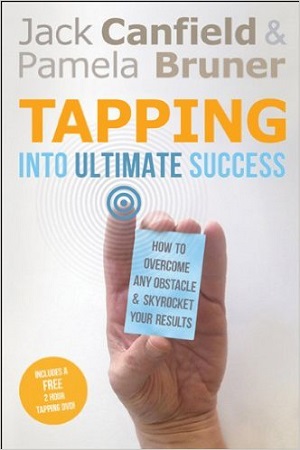 You know, maybe you had an abortion when you were 16 and now you’re judging yourself as a bad person, but that’s you making a judgement. The fact is that you can simply replace that thought with another better-feeling thought. So, it’s a matter of repetition. Thoughts are things we think, and we can change them or replace them through repetition. I don’t know if you’re familiar with EFT tapping, where you tap on these 9 acupuncture points while you think your negative, limiting belief. Literally, you can disappear a limiting belief. I’ve seen people do it in 10 minutes or less, using tapping. I wrote a book called Tapping Into Ultimate Success about tapping with a tapping expert. You can go on YouTube and type in “tapping”, and there’s like 5,000 free YouTube videos teaching you how to tap. But, the main thing is that it is a choice. You do not have to suffer with low self-esteem anymore because it is simply a thought that can be replaced with another thought through repetition, through tapping, through self-hypnosis; there are a number of things you can do.
You know, maybe you had an abortion when you were 16 and now you’re judging yourself as a bad person, but that’s you making a judgement. The fact is that you can simply replace that thought with another better-feeling thought. So, it’s a matter of repetition. Thoughts are things we think, and we can change them or replace them through repetition. I don’t know if you’re familiar with EFT tapping, where you tap on these 9 acupuncture points while you think your negative, limiting belief. Literally, you can disappear a limiting belief. I’ve seen people do it in 10 minutes or less, using tapping. I wrote a book called Tapping Into Ultimate Success about tapping with a tapping expert. You can go on YouTube and type in “tapping”, and there’s like 5,000 free YouTube videos teaching you how to tap. But, the main thing is that it is a choice. You do not have to suffer with low self-esteem anymore because it is simply a thought that can be replaced with another thought through repetition, through tapping, through self-hypnosis; there are a number of things you can do. Bestseller Mindset: Write the Book
Well, I think it’s simply, you have to write the book. And, part of the mindset has to be, “I’m going to do whatever it takes to make it good.” That’s where I really am a big believer in feedback. I know one couple who wrote a business book, and they invited 15 people to come to their apartment in Aspen. Every morning they had to read a chapter and give them feedback, and in the afternoon, the other people went skiing, and they edited the chapter based on the feedback. The next morning, they did another chapter. What we did was send our stories to our 40-reader panel. Urban, rural, black, white, brown, Asian, old, young, conservative, liberal, independent. You know, trying to get a really universal feedback thing. Most people are afraid to put it out because they are afraid of what they’re going to hear. Treat everything as a first draft. Just get words on paper, and then you can go back yourself and edit it, like, a week or two later, when you’ve got some distance. Then, give it to people and let them bleed all over it. You’re not in school, you’re not going to get a grade, you’re not going to fail. You’re just going to get feedback. “Here’s where I’m confused,” “You said this in another chapter,” “I don’t know what you mean here.” You know, that’s how you make it better. The guys who wrote The One Minute Manager, they would take their book, print 5,000 copies, sell them for cost to all of their clients, get feedback, and only then would they rewrite it and send it to a publisher. You’ve got to be committed to doing the work, and again, your message is worth the work because once it gets out there, it’s going to last forever. We all have life lessons that someone coming along behind us can benefit from. Whether it’s an 80-page book or a 500-page book, it doesn’t really matter. What matters is getting your message out there. I think another thing you have to deal with, in terms of a bestseller mindset, is you’ve got to get over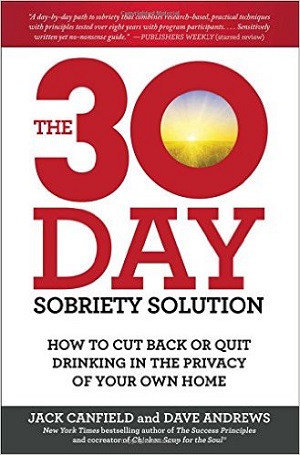 your fear of rejection because you’re going to get rejected by editors that are going to acquire your book, the publishers. You’re going to be rejected by people who won’t have you on their podcast. You are going to have people read your book and give you critical reviews. But, you’re going to reach so many more people. I just did a book called The 30-Day Sobriety Solution. It came out in January. It’s got 95 reviews on Amazon. Ninety-three of them are five-star reviews, and three of them are one-star reviews. So, you’re always going to have people that are going to go, “This doesn’t work. These guys are full of it.” You’ve got to develop a thick skin. Your message isn’t for everybody. You know, if I had a message for fundamentalist Christians, that might turn off the New-Agers living in San Francisco. If I had a new age message, it might turn people off, you know, going to Joel Osteen’s church in Texas. So, you’re not going to please everybody, and you just have to confront that. Get over that fear. Really spend time on getting a great title. You know, the “Chicken Soup for the Soul” title came in a meditation. Originally, we got rejected by a lot of people, but that title is now a brand worth almost a billion dollars. You know, there’s “Chicken Soup for the Soul” cat food and dog food. It’s ridiculous what has happened with that, and we actually won a brand management award in Asia for the best brand in books and so forth. I was counseling some people that were writing a book, and it was about how to avoid your children, declaring you incompetent and assigning you to an insane asylum so that they can take your wealth. They had some big, legalistic title that nobody would pay any attention to. We ended up with, “How to Protect Yourself from Your Own Children in Old Age”. So, people are like, “Stop. What is that? I want to know what that is.” Really invest in a good title. Sometimes you might have to pay a consultant to brainstorm with you. Your book is going to be sitting on a table somewhere, or spine out on a shelf. You want something that’s going to grab you. We did a lot of research on titles. You can actually muscle test titles. Put covers of a book in front of somebody and have them muscle test it. If they go weak when you push down their arm, when they’re looking at your book, they won't but it. They will look at that cover, and they won’t know why they didn’t buy it, but they won’t buy it. We had a guy that had a book called Dumpster Diving for Wealth. People were throwing away valuable things in their dumpsters, and the cover was a guy’s butt sticking out of a dumpster. Everyone we tested with that cover went weak. When we took the guy out of the dumpster and had him standing next to it with something valuable, everyone tested strong. Nobody wanted their face in a garbage bin, basically. So, there are a lot of tricks like that you can learn along the way. You’re sending a message to people emotionally, and you don’t even know you’re doing it. That’s, I think, a critical piece of it too. Another thing is to set big goals. You’ve got to dream big. Set a big goal. We set a goal to sell a million and a half books in a year and a half, and our publisher laughed at us. He said, “You’ll be lucky to sell 20,000.” We said, “No. We’re going to visualize it. We’re going to affirm it.” We put mock New York Times headlines all around our office. You know, “Chicken Soup for the Soul Sells 1.5 Million”. We made up fake bestseller lists with our book #1 in the New York Times. Now you can do it on your computer, but then we did it with whiteout, back in 1993. You have to have that big dream, and then visualize it. We used to visualize bookstore windows where the whole window was filled with Chicken Soup books, just like you see them when the new Harry Potter book comes out. Well, three years later there were bookstores with whole windows full of Chicken Soup books. People underestimate visualization. See, you want to live in that dream as if it’s already true. This is basic “Law of Attraction 101”, but it works.
your fear of rejection because you’re going to get rejected by editors that are going to acquire your book, the publishers. You’re going to be rejected by people who won’t have you on their podcast. You are going to have people read your book and give you critical reviews. But, you’re going to reach so many more people. I just did a book called The 30-Day Sobriety Solution. It came out in January. It’s got 95 reviews on Amazon. Ninety-three of them are five-star reviews, and three of them are one-star reviews. So, you’re always going to have people that are going to go, “This doesn’t work. These guys are full of it.” You’ve got to develop a thick skin. Your message isn’t for everybody. You know, if I had a message for fundamentalist Christians, that might turn off the New-Agers living in San Francisco. If I had a new age message, it might turn people off, you know, going to Joel Osteen’s church in Texas. So, you’re not going to please everybody, and you just have to confront that. Get over that fear. Really spend time on getting a great title. You know, the “Chicken Soup for the Soul” title came in a meditation. Originally, we got rejected by a lot of people, but that title is now a brand worth almost a billion dollars. You know, there’s “Chicken Soup for the Soul” cat food and dog food. It’s ridiculous what has happened with that, and we actually won a brand management award in Asia for the best brand in books and so forth. I was counseling some people that were writing a book, and it was about how to avoid your children, declaring you incompetent and assigning you to an insane asylum so that they can take your wealth. They had some big, legalistic title that nobody would pay any attention to. We ended up with, “How to Protect Yourself from Your Own Children in Old Age”. So, people are like, “Stop. What is that? I want to know what that is.” Really invest in a good title. Sometimes you might have to pay a consultant to brainstorm with you. Your book is going to be sitting on a table somewhere, or spine out on a shelf. You want something that’s going to grab you. We did a lot of research on titles. You can actually muscle test titles. Put covers of a book in front of somebody and have them muscle test it. If they go weak when you push down their arm, when they’re looking at your book, they won't but it. They will look at that cover, and they won’t know why they didn’t buy it, but they won’t buy it. We had a guy that had a book called Dumpster Diving for Wealth. People were throwing away valuable things in their dumpsters, and the cover was a guy’s butt sticking out of a dumpster. Everyone we tested with that cover went weak. When we took the guy out of the dumpster and had him standing next to it with something valuable, everyone tested strong. Nobody wanted their face in a garbage bin, basically. So, there are a lot of tricks like that you can learn along the way. You’re sending a message to people emotionally, and you don’t even know you’re doing it. That’s, I think, a critical piece of it too. Another thing is to set big goals. You’ve got to dream big. Set a big goal. We set a goal to sell a million and a half books in a year and a half, and our publisher laughed at us. He said, “You’ll be lucky to sell 20,000.” We said, “No. We’re going to visualize it. We’re going to affirm it.” We put mock New York Times headlines all around our office. You know, “Chicken Soup for the Soul Sells 1.5 Million”. We made up fake bestseller lists with our book #1 in the New York Times. Now you can do it on your computer, but then we did it with whiteout, back in 1993. You have to have that big dream, and then visualize it. We used to visualize bookstore windows where the whole window was filled with Chicken Soup books, just like you see them when the new Harry Potter book comes out. Well, three years later there were bookstores with whole windows full of Chicken Soup books. People underestimate visualization. See, you want to live in that dream as if it’s already true. This is basic “Law of Attraction 101”, but it works. Visualizing
There are two things that are important:- You want to have a vision board where you have some external images. For example, you sitting next to Oprah. You can Photoshop it. I just was on Super Soul Sunday in December; I had Oprah on my vision board for a year before that. I wanted to be on Super Soul Sunday, so I had that, and in September I get a call out of the blue. We weren’t even talking to our editors and producers. Images of a headline with how many books you’ve sold. Pictures of your books you can mock up. You can go on Fiverr and have someone for $5 make all kinds of images for you.
- Then, what you want to do is maybe have 3x5 cards, or index cards, with your affirmations. “I’m so happy and grateful that I’ve sold a million copies of Real Fast Writing,” or whatever it is. You read your affirmation with enthusiasm, close your eyes, and then visualize what you would see from inside your eyes as if you were looking out at the world, with some iconic image that says, “I’ve made it.” So, whether it’s the $1,000,000 check, the headline, your cover on Writer’s Digest. You know, Success Magazine or whatever it might be. Visualize that, and feel the feelings that you would feel if you already had that experience.
Additional Steps: Marketing
I have a handout that I give out at writer’s workshops called, “How to Market a Bestselling Book”. There are 37 steps, which we don’t have time for. Just some other steps that are important. Read books on marketing. John Kremer wrote a great book called 1,001 Ways to Market Your Books. Well, when we did Chicken, we took about 900 of those, that we thought were relevant, and made a Post-it for each one. I had two staff people writing them for days. We put them on a wall, about 12 feet long, and every day we took a Post-it off and did it. It took us two years to get through all those post-its, but by the end of that, we were #1 on the New York Times list and we stayed there for three years. Then, the second book came out, and it was #2. It was there for three years. At one point, we had #1, #2, and #3 on the New York Times list because we kept doing those things. I think hiring a media coach [is important] because most of us don’t know how to make good media; there are secrets to that. I’ll give you one. John Gray taught me this--the guy [who wrote] Men Are From Mars, Women Are From Venus. You talk about that your life’s going along at a certain level, then something bad happens. You have an accident, you get cancer, your daughter gets pregnant, you lose your job, bankruptcy happens, you lose your mortgage. Then you’re down in the pits, down here. Then you discover something that gets you out of the pit. My book, The Success Principles, may have helped you, and for someone else, it may have been a book on cancer, or nutrition, or how to eat holistically. Then, when you put that into action, not only did you get better, you got better than you were before. Now, you’re up here, and this thing you discovered is what my book is about, and it’s going to help you because you’re down here and you’re in the same situation. You don’t know what to do with your kid, you’re divorced, you’re laid off, you just got a new job as a manager and you don’t know what the hell you’re doing. That’s what my book will teach you to do. That little model will get you through any talk show, any podcast, and people will identify with you because they identify being down in that crater. I’ve got this great idea, and everyone tells me I should write a book. Now I’m depressed because I don’t know what to do. They discover you, and you help them get their book written. Now they’re up here, and they’re wealthy, and they’re on Oprah. So, it’s that kind of a thing, and you have to have your little success stories. You can tell them not just about your own life, but about all the people that you’ve helped so far with this methodology, technique, book, or whatever it might be.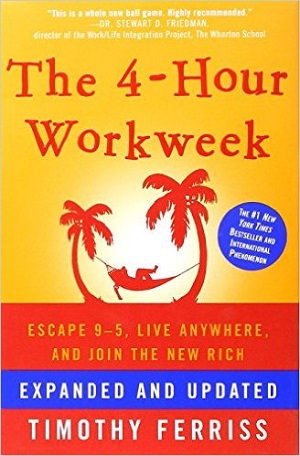 There are other points like, “How do you get on the covers of magazines,” and “How do you get in the airline magazines?” The world today is a podcast world. Tim Ferriss, who wrote The 4-Hour Work Week, understood that very quickly. Bloggers and Podcasters are the new book tour. So, you have to know how to play in that world and become one so that you have the respect of the other people. Tim started forwarding everyone’s blogs a year before his book came out. I actually mentored him in the writing of his book. He’s now far surpassed me in the marketing side for, you know, the younger generation. But, the reality is that you should study the people that have been successful. As Tony Robbins says, “Success leaves clues.” I’ve left clues. John Kremer is leaving clues. There are a lot of people who are bestsellers leaving clues. So study that. I watch an hour of Ted Talks, and podcasts, and YouTube videos every single day. There’s so much information out there that we have to be lifelong learners. Here’s a real cool thing one of my friends does. He does a three-minute video blog every single day. He was here in my house a couple of weeks ago. He was in the guest room, I thought, and I walk into my office, and he has his camera out, and he’s going, “I’m in Jack Canfield’s office, and if you’ll notice, there’s 3,000 books in here. Leaders are readers. Look at all of these books. You need to be reading. By the way, one of the books you need to read is…” And then he promoted some book. He does this sort of thing every single day. He went from having 600 people at his workshops to 800, to 1,000, every single day, all around the world. When I met him, he was making $140,000 a year. He makes over a million a year now. Again, he took a little course with me on how to be a bestseller, and then he applied this one technique better than anyone I know, and he’s got a huge following.
There are other points like, “How do you get on the covers of magazines,” and “How do you get in the airline magazines?” The world today is a podcast world. Tim Ferriss, who wrote The 4-Hour Work Week, understood that very quickly. Bloggers and Podcasters are the new book tour. So, you have to know how to play in that world and become one so that you have the respect of the other people. Tim started forwarding everyone’s blogs a year before his book came out. I actually mentored him in the writing of his book. He’s now far surpassed me in the marketing side for, you know, the younger generation. But, the reality is that you should study the people that have been successful. As Tony Robbins says, “Success leaves clues.” I’ve left clues. John Kremer is leaving clues. There are a lot of people who are bestsellers leaving clues. So study that. I watch an hour of Ted Talks, and podcasts, and YouTube videos every single day. There’s so much information out there that we have to be lifelong learners. Here’s a real cool thing one of my friends does. He does a three-minute video blog every single day. He was here in my house a couple of weeks ago. He was in the guest room, I thought, and I walk into my office, and he has his camera out, and he’s going, “I’m in Jack Canfield’s office, and if you’ll notice, there’s 3,000 books in here. Leaders are readers. Look at all of these books. You need to be reading. By the way, one of the books you need to read is…” And then he promoted some book. He does this sort of thing every single day. He went from having 600 people at his workshops to 800, to 1,000, every single day, all around the world. When I met him, he was making $140,000 a year. He makes over a million a year now. Again, he took a little course with me on how to be a bestseller, and then he applied this one technique better than anyone I know, and he’s got a huge following. Learning More From Jack
I just want to say one thing about the Bestseller Blueprint. I got together with Steve Harrison, and we, not only with myself, but with about 10 other bestsellers, we put together a course, literally from A-Z. The course teaches you everything you need to know about how to write the book, how to name the chapters so that they become hooks for the media, how to market the book, how to get on radio shows, how to get magazine interviews, etc. I mean, there’s so much in there. So, I really want to encourage people to check that out, and you can just go to BestsellerBlueprint.com. Go to JackCanfield.com for my workshops. I do two “Break Through to Success” seminars every year, and then we are doing some one-day workshops around the world. We have books, and tapes, and all of that good stuff. But, my parting line would be this: “You have everything you need to do everything you want. All you have to do is believe that and take action on that. And, if you follow the principles of taking action, responding to feedback, and continuing on and never giving up, you can achieve every goal you want in life. I’m proof of that, and there’s millions of people around the world that are proof of that.”Resources:
Some of Jack's Books: Chicken Soup for the Soul Chicken Soup for the Recovering Soul Chicken Soup for the Teen Soul Chicken Soup for the Cancer Patient Soul The Success Principles Tapping Into Ultimate Success Other Books Jack Mentioned: Dial Down the Drama: Reducing Conflict and Reconnecting with Your Teenage Daughter-- A Guide for Mothers Everywhere. The One Minute Manager Long Past Stopping 1,001 Ways to Market Your Books The 4-Hour Work Week Men Are From Mars, Women Are From VenusReal Fast Results Community
If you are diggin’ on this stuff and really love what we’re doing here at Real Fast Results, would you please do me a favor? Head on over to iTunes, and make sure that you subscribe to this show, download it, and rate & review it. That would be an awesome thing. Of course, we also want to know your results. Please share those results with us at http://www.realfastresults.com/results. As always, go make results happen!
Write for Entrepreneur.com, Fortune.com, Inc.com & Huffington Post to Establish Credibility & Build Your Email List With Lain Ehmann
0
Jul 22, 2016
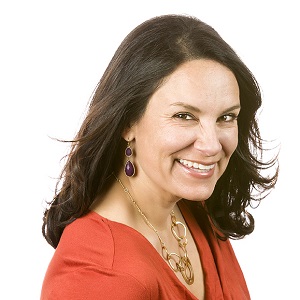 Welcome to yet another edition of the Real Fast Results podcast! Today you’ll have the chance to learn more about how you can further build your platform and your fan base as an author, speaker, content provider, coach, or even a consultant. No matter what it is that you do, it’s important for you to have a community of people that know, like, and trust you. People aren’t going to buy from you unless they have faith that you know what you are talking about and that you can help them. Something that you can do, in order to establish more credibility and a bigger audience base, is to start writing for major business-related publications, such as Entrepreneur.com, Inc.com, Huffington Post, etc. Today, our special guest is Lain Ehmann. Let’s see what she has to say.
Welcome to yet another edition of the Real Fast Results podcast! Today you’ll have the chance to learn more about how you can further build your platform and your fan base as an author, speaker, content provider, coach, or even a consultant. No matter what it is that you do, it’s important for you to have a community of people that know, like, and trust you. People aren’t going to buy from you unless they have faith that you know what you are talking about and that you can help them. Something that you can do, in order to establish more credibility and a bigger audience base, is to start writing for major business-related publications, such as Entrepreneur.com, Inc.com, Huffington Post, etc. Today, our special guest is Lain Ehmann. Let’s see what she has to say. Today's Promise: Stand Out To Editors
I would say that our promise today is to give you the best possible chance of getting a piece of your own submitted, and hopefully picked up, by the editors of these publications. We can’t guarantee anything because it’s in someone else’s hands, but we’ll help you cut through the masses and make your pitch or submission stand out to these editors.Authority Bling: Establishing Credibility
If you are a coach, a consultant, an author, a speaker, and you want to raise your visibility, you want to build your platform up higher, having that “seal of approval” from Entrepreneur.com, from Fortune, from Success, that helps establish you and helps your audience trust you. I call it “Authority Bling," when they go to your website and they see “As Seen on Huffington Post” or “As Seen on…” whatever the magazine would be for your particular industry. It conveys authority to you, based on the trust that the viewer might have with these other magazines. If you can say, “I’ve been on Oprah,” that right there is like your “Golden Ticket”. Also, you can bring in new viewers because if your piece is on one of these publications, websites, or print editions, people can find you that way as well. So, there’s a “double bang for your buck” there when you have that authority conveyed upon you. People will see that and come back to you. In my experience, the ones that I write for, do give you the opportunity to plug yourself in somehow, whether it’s saying “Bestselling Author of…” or “Find out more at…”.The Process Of Getting Published
The process of getting published now has never been easier; when we’re talking about getting published in a publication like Entrepreneur or Inc. When I started, I actually was a journalist for many, many years, before I established my online business, and before that time, you had to send in a pitch. You had to type it up on, sometimes a real typewriter, print it out, propose your article, send it to the editor in an envelope, with a self-addressed stamped envelope, and they usually would just say, “Not interested,” stick it back in and send it back to you. This was a process of 6, or 8, or 12 weeks, and it was excruciating! The idea now that I can email someone and get a response in a matter of minutes, sometimes, is just incredible. Also, they aren’t limited by the print publication. Most of the publications that we see now on the newsstand at Barnes & Noble, or we subscribe to in the mail, have print editions, but they also have unlimited space online. So, it’s so much easier now than it was 10 years ago. I just want to tell people that this is the Golden Age of being able to be published in these publications because they do need this endless stream of fresh content. I was a journalist. I established an online business. Now my specialty is in content strategy, particularly focusing on launch periods, so helping people gear up for launching a class, or product, or membership site, or whatever it might be. In order to provide more value to my clients, I wanted to get published in these magazines, so that I could tell them how to do it. Also, to raise my visibility as well.
published in a publication like Entrepreneur or Inc. When I started, I actually was a journalist for many, many years, before I established my online business, and before that time, you had to send in a pitch. You had to type it up on, sometimes a real typewriter, print it out, propose your article, send it to the editor in an envelope, with a self-addressed stamped envelope, and they usually would just say, “Not interested,” stick it back in and send it back to you. This was a process of 6, or 8, or 12 weeks, and it was excruciating! The idea now that I can email someone and get a response in a matter of minutes, sometimes, is just incredible. Also, they aren’t limited by the print publication. Most of the publications that we see now on the newsstand at Barnes & Noble, or we subscribe to in the mail, have print editions, but they also have unlimited space online. So, it’s so much easier now than it was 10 years ago. I just want to tell people that this is the Golden Age of being able to be published in these publications because they do need this endless stream of fresh content. I was a journalist. I established an online business. Now my specialty is in content strategy, particularly focusing on launch periods, so helping people gear up for launching a class, or product, or membership site, or whatever it might be. In order to provide more value to my clients, I wanted to get published in these magazines, so that I could tell them how to do it. Also, to raise my visibility as well. Step 1 - Referral
There are five steps, and I’m an author, so I love alliteration. The five steps all begin with “R." The first step is to get a referral if you can. Just like anything else, if you can get a referral, if you can get somebody’s name, that’s going to put you a step up. It’s not necessary, but just like with anything else in business, if you can open that door before you step through, it helps a little bit.Step 2 - Research
The second step is to do your research. This is a great opportunity, and you don’t want to just throw something at it to see if it sticks. You want to practice due diligence to make sure that you’re leveraging the opportunity correctly. That’s why I suggest that people do research. Know that if you’re in the business market, how Inc.com differs from Entrepreneur, differs from Fortune, differs from Forbes. How do those interact with each other? They each have their own angle. What is it? What kind of piece would belong in Entrepreneur versus Inc.? You look at them, and they look very similar, but there are nuances, and knowing that is really going to give you a step up.Step 3 - Relevant
After you’ve gotten a referral, if you can, and you’ve done a little research to know where you fit well and what the differences are among those publications, you want to make sure that you propose something that’s relevant to that publication. For instance, Business Insider is an online publication that’s pretty high-profile. They have a very specific spin on things, and something that would go in Business Insider probably would not appear in Fortune Magazine. Or, if it were the same topic, it would be a completely different angle. You want to make sure, if they cover from A-K in the alphabet, you don’t want to suggest something that is RST. You want to keep it within their area, and you want to make sure that what you propose is relevant to them and to their readers. What I suggest, also, is when you’re contacting them, you let them know that you have done your research, and you can even say, “I have a piece that’s similar to the piece that you published on [XXX Date], but it’s different because I took this angle on it.”Step 4 - Remarkable
That leads into the fourth “R”, which is remarkable. It’s got to be relevant, but it’s also got to be remarkable. You don’t want to propose something that they’ve already covered, and you don’t want to propose something that’s just “ho-hum”. You know, it’s just another article on “10 Ways to XYZ”. You want it to be very different. You want it to be remarkable in some way, but still relevant. Let’s say that you’re a triplet, and you’re in business with your siblings. That would be remarkable. Not only could you talk about how family dynamics work within the business world, or the entrepreneurial world, but how you would do that when you’re a triplet. That’s a little bit unusual, but I think it shows you what I’m talking about. You’re looking for a unique spin. You want to find something that only you could write about for whatever reason. There’s a really popular author who has written several books on what it’s like to be a doctor. He’s got a unique spin on it because he’s not just talking about the medical world from 10,000 feet. He’s talking about it like a guy who is actually talking about people. That’s just another example of finding a unique spin. What is the book, what is the article, what is the blog post? What is the one that only you can write and make yourself stand out that way?Step 5 - Respected
You have the referral, the research, making it relevant, making it remarkable, and then the fifth piece is to make sure that you present yourself as a respected expert. They want to know that you know what you’re talking about. When an editor gets an inquiry, or a pitch, or an email from you, whatever you want to call it, he or she knows, “Oh my gosh! Dan Hall has been in business for X number of years and has produced 16 different podcasts, and he’s interviewed people like this, this, and this.” He or she, reading that, already knows, “Hey, this guy knows what he’s talking about.” So if you see these as hurdles that you need to jump, it’s just one more. The question is going to be in their mind, “Okay, this is a great story, but does this person have the authority that our readers are going to want to see.” You’re going to position yourself that way. If you’re writing about business, you’re going to talk about how you’re experienced in the business. If you’re writing about health and fitness, you want to talk about that you ran a gym for ‘X number’ of years, or you’re a personal trainer, or you’re certified in whatever it might be. Again, you’re just showing your expertise.How To Get A Referral
 Ask People. If you’re in a mastermind group or some kind of networking group, ask people, “Hey, do you know anyone who has written for these publications,” or “Have you written for them,” or “Do you know anybody that works for this magazine,” or “Do you know anybody who has experience with publications?” The person you know might not know anything about it, but they might know someone who does. You know how interconnected we are now. Everyone is just a few steps away from everybody, so ask within your network about that. Find out who is working at that site via LinkedIn and see if there’s any connection that they have. LinkedIn shows you graphically. If you type in “Arianna Huffington,” it will tell you if you have connections with Arianna Huffington, and if so, how many steps are within the two of you. That is invaluable because you can actually see the connection. And, even if you don’t have a direct connection, maybe you have someone who works in advertising at Entrepreneur. You have to dig into it a little bit, but there’s always the connections there. You might have to take more steps between than someone else might have to, but they’re there. Also, a lot of journalists and editors are on Twitter. That seems to be their preferred social media platform. So, track them down and start to follow them and create your own connection. That’s always the best. I think if you could directly connect with this person, and they know who you are without a referral, that’s even better. There’s always ways to establish that.
Ask People. If you’re in a mastermind group or some kind of networking group, ask people, “Hey, do you know anyone who has written for these publications,” or “Have you written for them,” or “Do you know anybody that works for this magazine,” or “Do you know anybody who has experience with publications?” The person you know might not know anything about it, but they might know someone who does. You know how interconnected we are now. Everyone is just a few steps away from everybody, so ask within your network about that. Find out who is working at that site via LinkedIn and see if there’s any connection that they have. LinkedIn shows you graphically. If you type in “Arianna Huffington,” it will tell you if you have connections with Arianna Huffington, and if so, how many steps are within the two of you. That is invaluable because you can actually see the connection. And, even if you don’t have a direct connection, maybe you have someone who works in advertising at Entrepreneur. You have to dig into it a little bit, but there’s always the connections there. You might have to take more steps between than someone else might have to, but they’re there. Also, a lot of journalists and editors are on Twitter. That seems to be their preferred social media platform. So, track them down and start to follow them and create your own connection. That’s always the best. I think if you could directly connect with this person, and they know who you are without a referral, that’s even better. There’s always ways to establish that. Tips: Research And Relevant
I think that #2 and #3 really go together. The ‘research’ and the ‘relevant.' Based on the research, you’re going to figure out what’s relevant and what isn’t. It’s not complicated because you can go on their websites and see what’s there. Entrepreneur.com shows you the top 50 most popular posts. So ,you can see right there, not only what they’re covering, but what people are reading. They are going to want you to emulate exactly what their success formula is. If you know any post that is about financing gets a lot of views, and any post about business etiquette isn’t very popular, then you don’t want to submit the business etiquette piece, you want to submit the financing piece. That’s because you want them to say, “This is exactly what we use. This is exactly what I need.” It also helps a ton, when you are proposing your topics. I actually propose them as an article with a headline, and if I see that 9 out of the 10 top posts are, “16 Ways to,” or “14 Steps to,” or “6 People Who,” I propose them with a number. Or they all have a name of somebody important, or they all have to do with contrast. It’s like becoming a detective. You’re solving a puzzle, “What do these have in common?” And, “Can I do that similarly, yet pivot it a little bit?” Also, look at the sections that they have. Maybe they have a section on business start-ups. Maybe they have a section on relationships in the workplace. If it’s health and fitness, maybe there’s a section on weight loss, strength training, or whatever it might be. Look at how they set up their publication. The more they know about it, the more you can say, “This is going to fit here.” The more they are going to pay attention because a lot of people won’t go through that process. They will just blindly send the same piece to 40 different magazines. This is what distinguishes you as somebody that’s really serious about winning, about getting the assignment or having your material published. Some people have recommended sending in ideas. I have not gone that route. Throughout my career, I have had much more success by saying, “This is something that’s ready to go.” I’m confident in the research I’ve done, and the writing style. I know they publish pieces 500-600 words long, and I’m not sending them a 1,000-word piece. I’m looking at all of those things, so I know that it fits, and it’s so much easier for them to say, “Yes, I want that.” Instead, they would say “Okay, send it back in," and you go through this other loop of writing it. That just delays the whole process. I would rather have them give me a yes or no, and I’ll try again if it doesn’t fit. You should also understand that if they do say no, you still have a piece of brilliant content that you can use in any way. You can put it on your own blog. Maybe do a little tinkering and ship it to another site. So, it’s all about leveraging and thinking about re-purposing and repackaging if your first attempt doesn’t work out. That pretty much covers it. You just want to make sure that it fits within the scope of what they’re covering. That covers the relevance step too, because through your research you’ll see what they’re covering, how long their articles are, and the sections. Then, you can just make sure it fits. If you can’t figure out which section of their website your article would fit into, that would be a good indication that your article isn’t right for that publication. You should also try to make sure that the article you publish is relevant to your business. You don’t want to propose something that fits their site, but has very little to do with your business either. You will want to be able to benefit from someone reading your work and actually taking action on it. I could probably get something placed on a health and fitness website, but is that going to benefit my business? It possibly could, but I would be much better off spending that time and energy where my target market is hanging out and talking about the topic and the pain points of that target market versus just trying to write for anybody and everybody.
to figure out what’s relevant and what isn’t. It’s not complicated because you can go on their websites and see what’s there. Entrepreneur.com shows you the top 50 most popular posts. So ,you can see right there, not only what they’re covering, but what people are reading. They are going to want you to emulate exactly what their success formula is. If you know any post that is about financing gets a lot of views, and any post about business etiquette isn’t very popular, then you don’t want to submit the business etiquette piece, you want to submit the financing piece. That’s because you want them to say, “This is exactly what we use. This is exactly what I need.” It also helps a ton, when you are proposing your topics. I actually propose them as an article with a headline, and if I see that 9 out of the 10 top posts are, “16 Ways to,” or “14 Steps to,” or “6 People Who,” I propose them with a number. Or they all have a name of somebody important, or they all have to do with contrast. It’s like becoming a detective. You’re solving a puzzle, “What do these have in common?” And, “Can I do that similarly, yet pivot it a little bit?” Also, look at the sections that they have. Maybe they have a section on business start-ups. Maybe they have a section on relationships in the workplace. If it’s health and fitness, maybe there’s a section on weight loss, strength training, or whatever it might be. Look at how they set up their publication. The more they know about it, the more you can say, “This is going to fit here.” The more they are going to pay attention because a lot of people won’t go through that process. They will just blindly send the same piece to 40 different magazines. This is what distinguishes you as somebody that’s really serious about winning, about getting the assignment or having your material published. Some people have recommended sending in ideas. I have not gone that route. Throughout my career, I have had much more success by saying, “This is something that’s ready to go.” I’m confident in the research I’ve done, and the writing style. I know they publish pieces 500-600 words long, and I’m not sending them a 1,000-word piece. I’m looking at all of those things, so I know that it fits, and it’s so much easier for them to say, “Yes, I want that.” Instead, they would say “Okay, send it back in," and you go through this other loop of writing it. That just delays the whole process. I would rather have them give me a yes or no, and I’ll try again if it doesn’t fit. You should also understand that if they do say no, you still have a piece of brilliant content that you can use in any way. You can put it on your own blog. Maybe do a little tinkering and ship it to another site. So, it’s all about leveraging and thinking about re-purposing and repackaging if your first attempt doesn’t work out. That pretty much covers it. You just want to make sure that it fits within the scope of what they’re covering. That covers the relevance step too, because through your research you’ll see what they’re covering, how long their articles are, and the sections. Then, you can just make sure it fits. If you can’t figure out which section of their website your article would fit into, that would be a good indication that your article isn’t right for that publication. You should also try to make sure that the article you publish is relevant to your business. You don’t want to propose something that fits their site, but has very little to do with your business either. You will want to be able to benefit from someone reading your work and actually taking action on it. I could probably get something placed on a health and fitness website, but is that going to benefit my business? It possibly could, but I would be much better off spending that time and energy where my target market is hanging out and talking about the topic and the pain points of that target market versus just trying to write for anybody and everybody. How Can I Establish Myself as Someone Worth Listening to?
 One of the things that I’ve noticed, as I’ve worked with some of my clients to help them place articles, is that you can be a respected expert, but if you don’t have publishing experience as well, sometimes that is the missing piece. Just like I was saying, it’s like, “If I can’t get published in Entrepreneur, do I just give up?” No. Get published in a smaller magazine, or post it on your blog, because being able to say, “I have a blog, and I’ve written it for 16 years. I get 10,000 views per month,” or whatever it might be, it shows that you are a person of authority and established in terms of having this history behind you. The editors are going to go through a lot of effort to work with you and teach you how to submit to them, and once your piece is accepted, they get you into their content management system. They want to see stuff from you again. They don’t want the “one hit wonders”. They’ll take them because they do have a need for content, but I think they’re much more interested in establishing a relationship with someone that’s going to send them something every month or two. If you just come out of nowhere, give them one piece, and disappear, that’s okay, but they would much rather work with someone they know they can depend upon and develop that relationship. Showing that you have a history of publication, whether it’s in big names, or on your own blog. Just showing that you have that history of writing as well, will also help make you stand out from the crowd. I think they have limited expectations when it comes from wanting content from you on a regular basis. At this point in my career, none of the ones that I’ve written for so far have said, “We want a piece from you every week to stay in our system,” or anything like that. What I have seen, with both Huffington Post and Entrepreneur, I am now an approved writer for them, so I can put whatever I want, whenever I want into their content management system. If I have an idea today, I can have that in Entrepreneur’s system waiting to see. I asked the editor, “Do you want to see my ideas before I put them in?” He’s like, “No, once you’re accepted, just go ahead and put them in there.” That’s fantastic. That’s wonderful to have this opportunity and the door’s wide open. Other magazines do it differently. Success.com still wants to see an article idea, but now that I’ve had several pieces accepted by them, the door is definitely more open. You know, I get to use my key versus having to wait in line and that kind of thing as well. So, it differs from publication to publication. I know that Ramit Sethi, who is a very big name online, who does the Zero to Launch and I Will Teach You to be Rich, has a new site coming out. I can’t remember the name of it, but, I was talking to one of my clients, and they wanted a commitment to be one of their featured bloggers. You would have to provide X number of articles, in a certain format, over X period of time. So, it varies from publication to publication. It’s not an easy process, and it is going to take some time, but it is pretty straightforward. Just like anything else, if you’re willing to do that background research, it’s really going to set you apart from everybody else that’s not doing it. Just make sure it’s worth it for your business, and make sure it’s something that you’re not doing just for ego and really think that it’s going to benefit moving your business forward. There are so many opportunities for us to get our names out there. Make sure it matches your skills, and your interest, and your audience, and I think you’ll be good.
One of the things that I’ve noticed, as I’ve worked with some of my clients to help them place articles, is that you can be a respected expert, but if you don’t have publishing experience as well, sometimes that is the missing piece. Just like I was saying, it’s like, “If I can’t get published in Entrepreneur, do I just give up?” No. Get published in a smaller magazine, or post it on your blog, because being able to say, “I have a blog, and I’ve written it for 16 years. I get 10,000 views per month,” or whatever it might be, it shows that you are a person of authority and established in terms of having this history behind you. The editors are going to go through a lot of effort to work with you and teach you how to submit to them, and once your piece is accepted, they get you into their content management system. They want to see stuff from you again. They don’t want the “one hit wonders”. They’ll take them because they do have a need for content, but I think they’re much more interested in establishing a relationship with someone that’s going to send them something every month or two. If you just come out of nowhere, give them one piece, and disappear, that’s okay, but they would much rather work with someone they know they can depend upon and develop that relationship. Showing that you have a history of publication, whether it’s in big names, or on your own blog. Just showing that you have that history of writing as well, will also help make you stand out from the crowd. I think they have limited expectations when it comes from wanting content from you on a regular basis. At this point in my career, none of the ones that I’ve written for so far have said, “We want a piece from you every week to stay in our system,” or anything like that. What I have seen, with both Huffington Post and Entrepreneur, I am now an approved writer for them, so I can put whatever I want, whenever I want into their content management system. If I have an idea today, I can have that in Entrepreneur’s system waiting to see. I asked the editor, “Do you want to see my ideas before I put them in?” He’s like, “No, once you’re accepted, just go ahead and put them in there.” That’s fantastic. That’s wonderful to have this opportunity and the door’s wide open. Other magazines do it differently. Success.com still wants to see an article idea, but now that I’ve had several pieces accepted by them, the door is definitely more open. You know, I get to use my key versus having to wait in line and that kind of thing as well. So, it differs from publication to publication. I know that Ramit Sethi, who is a very big name online, who does the Zero to Launch and I Will Teach You to be Rich, has a new site coming out. I can’t remember the name of it, but, I was talking to one of my clients, and they wanted a commitment to be one of their featured bloggers. You would have to provide X number of articles, in a certain format, over X period of time. So, it varies from publication to publication. It’s not an easy process, and it is going to take some time, but it is pretty straightforward. Just like anything else, if you’re willing to do that background research, it’s really going to set you apart from everybody else that’s not doing it. Just make sure it’s worth it for your business, and make sure it’s something that you’re not doing just for ego and really think that it’s going to benefit moving your business forward. There are so many opportunities for us to get our names out there. Make sure it matches your skills, and your interest, and your audience, and I think you’ll be good. Check Out This Step By Step Video That Lain Originally Made For Me But Gave Me Permission To Post Here
[youtube https://www.youtube.com/watch?v=5w6oZBc0SAU?rel=0&showinfo=0&w=640&h=480]Connecting with Lain
The best way is through my blog. It’s Lainehmann.com. Then, on Facebook, it’s Facebook.com/LifeWithLain. On Twitter it’s @Lainehmann, and I use #FastLain.Resources
Publications: Entrepreneur.com Inc.com Huffington Post Business Insider Fortune.com SuccessReal Fast Results Community
If you are diggin’ on this stuff and really love what we’re doing here at Real Fast Results, would you please do me a favor? Head on over to iTunes, and make sure that you subscribe to this show, download it, and rate & review it. That would be an awesome thing. Of course, we also want to know your results. Please share those results with us at http://www.realfastresults.com/results. As always, go make results happen!
Jul 19, 2016
 Welcome to this addition of the Real Fast Results podcast! In many cases, this show provides information on how you can take digital assets and use them to pull in more revenue and build a bigger following for yourself. What you are going to learn today is going to feel counter-intuitive. Let’s see what guest Amy Collins has to share…
Welcome to this addition of the Real Fast Results podcast! In many cases, this show provides information on how you can take digital assets and use them to pull in more revenue and build a bigger following for yourself. What you are going to learn today is going to feel counter-intuitive. Let’s see what guest Amy Collins has to share… Today's Promise: Discover How Your eBooks and Print Books Make Money In The Library Market
Today we are going to discuss how your eBook and your print book can make you a great deal of money in the library market. It is counter-intuitive because people think that libraries are old fashioned and places people used to go. Not true. Libraries are where it’s at, and we can make a lot of money there. The Book Industry Study Group put out a study with Nielsen BookScan recently saying that avid readers, which is the type of consumers that book authors and publishers want to go for, avid readers visit libraries. Also, their households buy, on average, nine books a month. They're in libraries and they are buying nine books a month, on average; a lot of them buy more. With that, combined with the fact that a lot of libraries are in the United States, it’s the perfect place to focus your marketing and your sales efforts.Step 1 - Make Sure Your Book Belongs In A Library
The first “Big Picture” step is to make sure that your book belongs in a library. If you’ve written a mystery novel, a sci-fi novel, a cookbook, a self-help book, a business book, you belong in libraries. If you’ve written a journal, a coloring book, a word search, those probably aren’t good library books because libraries can’t take what we call consumables. Make sure that you have the kind of book that belongs in a library, and make sure it’s priced right. Is every other book in your genre $17.99 and yours is $24.99? Get your book in line with your competition. The next step, after that, is to get your book into the wholesalers.Step 2 - Get Your Book Into the Wholesalers
Libraries buy from wholesalers. Wholesalers are just big warehouses that will buy books from you, the author or publisher and turn around to resell them to libraries. The next step is to present your book to the librarians so that they can order the book from the wholesalers. My favorite step, the one after that, is when wholesalers pay you because the libraries have paid them, and then the libraries start reordering your book. So, make sure your book is ready for the library and that it belongs there, get your book into the wholesalers, the appropriate wholesalers. Pitch your book to the librarians, get them to put it on the shelves. Then wait for the sales to come rolling in. If your book does well in one library, other librarians are going to hear about it, and they are going to start ordering your book too. That’s the really cool thing about this because there is a sort of viral nature to the buying of books within the library system.Selling eBooks to Libraries
My favorite thing about selling eBooks to libraries is that you get to charge a lot of money for them. You may sell your eBook on Amazon for $8, $9, or maybe even $10. You can sell that same $9 eBook to a library for $30 or $40 because they are going to loan it out. They are going to loan your book out, over and over again, to their patrons, but only one at a time. I’m an avid reader in my library, and I’m always waiting for the next book. If the waiting list gets too long, they will license another eBook from you. So, all of the sudden, what was a $35 eBook becomes a $70 sale, all because your book did so well. Eventually, if you sell enough copies of your eBook, you then have the demand you need to start licensing them. That means you sell them, in essence, the right to loan out your eBook for one year, or for a certain number of loans. That means every year, you get more money because those loans are re-upped, those licenses are renewed. And yes, if you get your book into one library in Los Angeles, which has a $25 million dollar a year budget, and the other dozens and dozens of Los Angeles libraries can see how well your book is doing, they’re going to start ordering it. But, what if they see that you have an eBook? What if you told them that you have an eBook? All it takes is a simple email, and all of the sudden, you’ve doubled your sales. In some cases, you have tripled and quadrupled them.
your eBook on Amazon for $8, $9, or maybe even $10. You can sell that same $9 eBook to a library for $30 or $40 because they are going to loan it out. They are going to loan your book out, over and over again, to their patrons, but only one at a time. I’m an avid reader in my library, and I’m always waiting for the next book. If the waiting list gets too long, they will license another eBook from you. So, all of the sudden, what was a $35 eBook becomes a $70 sale, all because your book did so well. Eventually, if you sell enough copies of your eBook, you then have the demand you need to start licensing them. That means you sell them, in essence, the right to loan out your eBook for one year, or for a certain number of loans. That means every year, you get more money because those loans are re-upped, those licenses are renewed. And yes, if you get your book into one library in Los Angeles, which has a $25 million dollar a year budget, and the other dozens and dozens of Los Angeles libraries can see how well your book is doing, they’re going to start ordering it. But, what if they see that you have an eBook? What if you told them that you have an eBook? All it takes is a simple email, and all of the sudden, you’ve doubled your sales. In some cases, you have tripled and quadrupled them. How To Make Your Book Library Ready
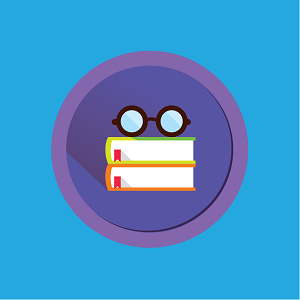 I know these steps intimately because we cover them in our course. I mean, these are the steps that we actually walk through in the course. However, when I said to make sure that your book is ready for libraries, there’s an entire list of things that your book should have. One of them is a catalogue and publication block. This is a block of information, of data, codes, numbers, and categories that all go into a small space that sits on the back of your title page, also known as the copyright page. If you would like to get into libraries, this chunk of data is very helpful because it shows the librarians that you mean business. That you understand their business and what they need from you in order to get your book into their system. When we say, “Make sure your book is ready,” there’s a long checklist of things you may not have actually heard of, and our course covers that. It’s the catalogue and publication block. We teach you how to price your book. What’s the right trim size? We’ve got an enormous discussion going on right now among all of our students about why 6x9 is not a great trim size for most books, not all, but for most. What you do is you get your book ready. If your book’s already printed and ready to go, you compare it to what the marketplace needs. You’ll learn these things in our course. When your book’s ready to go, registering with the wholesalers is as simple as writing a cover letter, sending them a copy of your book, with a marketing plan. Wholesalers want to know that you’re going to create demand. Are you going to be calling 40 libraries a week? Well, then tell them that. Are you going to be doing radio interviews or podcasts? Are you going to be writing guest posts as a blogger? If you tell the wholesaler what your marketing plan is, you have a much better chance of getting in there. The wholesalers are going to ask for a very deep discount. In some cases, this will be 50-60% off the price of your book. And, they are going to want to buy the returnable. If a wholesaler, such as Ingram Wholesale, Baker and Taylor Wholesale, Broder Wholesale, Bookazine buy 40 copies of your book, and only 20 sell, they are going to send you the other 20 back. So, you’re in the wholesalers now, you’ve agreed to their terms, they’ve ordered a few copies, and now it’s time to write your cover letter for the libraries. The cover letter does not focus on how wonderful you are or how terrific your book is. Although you probably are wonderful and your book is great, your letter is focused on what the librarians want to hear and what they need to know. What they need to know is that you understand their goals. If you approach a librarian and say, “Hey, I understand your goals, I know how hard your job is, and I’m here to make it easier,” you are so in. You want to create a cover letter, or start a communication email chain with them that says, “I know you want to create foot traffic. I know that you only want to bring in books that you need, the category is right for you, that your patrons are looking for. My book is exactly the kind of book that your patrons are looking for. How do I know that? Well, because I took this course and Amy told me that self-help books were #3 for non-fiction and cookbooks were #1. Well, my book is a self-help cookbook, so you clearly need my book. It’s priced perfectly, it’s got a category and publication block. It’s available at the following wholesalers. I also have an eBook available at the following eBook wholesalers.” I’ve been mentioning the print book wholesalers, but don’t forget the eBook wholesalers, like Overdrive and 3M. IngramSpark has a good one, or you can even use some of the eBook distributors like Bookbaby or Smashwords. So, once you’re in and once you’ve created that cover letter, and you start sending it out to emails, I suggest spending 15-20 minutes a day…that’s it…5 days a week, 20 minutes a day, for about 90 days, should really get you going, sending out this cover letter and tweaking it for each librarian.
I know these steps intimately because we cover them in our course. I mean, these are the steps that we actually walk through in the course. However, when I said to make sure that your book is ready for libraries, there’s an entire list of things that your book should have. One of them is a catalogue and publication block. This is a block of information, of data, codes, numbers, and categories that all go into a small space that sits on the back of your title page, also known as the copyright page. If you would like to get into libraries, this chunk of data is very helpful because it shows the librarians that you mean business. That you understand their business and what they need from you in order to get your book into their system. When we say, “Make sure your book is ready,” there’s a long checklist of things you may not have actually heard of, and our course covers that. It’s the catalogue and publication block. We teach you how to price your book. What’s the right trim size? We’ve got an enormous discussion going on right now among all of our students about why 6x9 is not a great trim size for most books, not all, but for most. What you do is you get your book ready. If your book’s already printed and ready to go, you compare it to what the marketplace needs. You’ll learn these things in our course. When your book’s ready to go, registering with the wholesalers is as simple as writing a cover letter, sending them a copy of your book, with a marketing plan. Wholesalers want to know that you’re going to create demand. Are you going to be calling 40 libraries a week? Well, then tell them that. Are you going to be doing radio interviews or podcasts? Are you going to be writing guest posts as a blogger? If you tell the wholesaler what your marketing plan is, you have a much better chance of getting in there. The wholesalers are going to ask for a very deep discount. In some cases, this will be 50-60% off the price of your book. And, they are going to want to buy the returnable. If a wholesaler, such as Ingram Wholesale, Baker and Taylor Wholesale, Broder Wholesale, Bookazine buy 40 copies of your book, and only 20 sell, they are going to send you the other 20 back. So, you’re in the wholesalers now, you’ve agreed to their terms, they’ve ordered a few copies, and now it’s time to write your cover letter for the libraries. The cover letter does not focus on how wonderful you are or how terrific your book is. Although you probably are wonderful and your book is great, your letter is focused on what the librarians want to hear and what they need to know. What they need to know is that you understand their goals. If you approach a librarian and say, “Hey, I understand your goals, I know how hard your job is, and I’m here to make it easier,” you are so in. You want to create a cover letter, or start a communication email chain with them that says, “I know you want to create foot traffic. I know that you only want to bring in books that you need, the category is right for you, that your patrons are looking for. My book is exactly the kind of book that your patrons are looking for. How do I know that? Well, because I took this course and Amy told me that self-help books were #3 for non-fiction and cookbooks were #1. Well, my book is a self-help cookbook, so you clearly need my book. It’s priced perfectly, it’s got a category and publication block. It’s available at the following wholesalers. I also have an eBook available at the following eBook wholesalers.” I’ve been mentioning the print book wholesalers, but don’t forget the eBook wholesalers, like Overdrive and 3M. IngramSpark has a good one, or you can even use some of the eBook distributors like Bookbaby or Smashwords. So, once you’re in and once you’ve created that cover letter, and you start sending it out to emails, I suggest spending 15-20 minutes a day…that’s it…5 days a week, 20 minutes a day, for about 90 days, should really get you going, sending out this cover letter and tweaking it for each librarian. Example Cover Letter
“Dear Susan, My name is Amy. I’ve written a book about the publishing industry. I’m hoping that you will consider stocking it on your shelves.” And then, you go on from there, “Here’s my marketing plan. Here’s what I know about your library. I would love to send you a copy as a PDF for you to review. May I send you a copy?” Just start with that.Communication With Librarians
Librarians are lovely. They are so nice. They are going to start communicating with you. As we get into the nitty- gritty on exactly how to do this, there’s also a long list of things not to do. You do not pick up the phone and call a librarian at noon on Saturday and expect them to give you half an hour. They aren’t going to. They are going to be annoyed; they’re busy. You do not call a school library and ask them to spend $400 on your book. They don’t know you, and they don’t have that kind of budget. School libraries are different than public libraries; they depend a lot on donations. If you really want to be focused on the school library market, that’s a slightly different cover letter. Again, we cover a lot of that in our course. What you want to do is to keep going after the libraries that want your book. You may hit a spade of libraries that aren’t interested because the category isn’t right for them. Yes, you have a self-help cookbook, and yes, that’s a huge market for libraries right now, in the print book world and the eBook world. But, what if that particular library system is just stuffed with self-help cookbooks? What if they don’t need anymore? That’s okay. There’s almost 13,000 public libraries in the United States. Go find others. Just start sending out your emails. Twenty minutes a day. You will eventually start enough conversations, and those orders will start coming in. Eventually, you will start seeing residual and viral sales. Things will start to snowball. Things will start to grow.
gritty on exactly how to do this, there’s also a long list of things not to do. You do not pick up the phone and call a librarian at noon on Saturday and expect them to give you half an hour. They aren’t going to. They are going to be annoyed; they’re busy. You do not call a school library and ask them to spend $400 on your book. They don’t know you, and they don’t have that kind of budget. School libraries are different than public libraries; they depend a lot on donations. If you really want to be focused on the school library market, that’s a slightly different cover letter. Again, we cover a lot of that in our course. What you want to do is to keep going after the libraries that want your book. You may hit a spade of libraries that aren’t interested because the category isn’t right for them. Yes, you have a self-help cookbook, and yes, that’s a huge market for libraries right now, in the print book world and the eBook world. But, what if that particular library system is just stuffed with self-help cookbooks? What if they don’t need anymore? That’s okay. There’s almost 13,000 public libraries in the United States. Go find others. Just start sending out your emails. Twenty minutes a day. You will eventually start enough conversations, and those orders will start coming in. Eventually, you will start seeing residual and viral sales. Things will start to snowball. Things will start to grow. Tips On Getting Into the Library Market
For those of you who would love to hit the library market, but you don’t have the time--I’ve always said, “When you need to sell a book…time, money, talent…pick any two.” If you’ve got time and money, but no talent, you can still be very successful. If you’ve got money and talent, but no time, you’re golden. If you don't have enough time, but you have a great book, you might want to consider using some of our advice and hiring someone to do this for you. Examples: a local college kid, your nephew, your grandson, etc. It should be someone that’s email friendly. You can hire a virtual assistant. I take out ads on Craigslist all the time. There are ways to hire somebody else to do this for you in a way that still is very profitable. Libraries are profitable enough that if you don’t have that 20 minutes a day, 5 days a week, maybe somebody else does. You should consider training someone how to do it. It is very transferable.Connecting With Amy
You can actually view the webinar about our library training. If you like what you’ve learned today, and you really want to get more into it, check that video out. I’m very, very proud of the work that Daniel Hall and I did on that. Also, if you need to reach me, I’m always reachable at Info@NewShelves.com or on my website, NewShelves.com. You don’t have to implement any of this, but if it resonates with you, then you should absolutely take the time and energy to actually start using what you’ve learned today.Daniels Real Fast Results Tips: Getting Into Libraries
You can watch a FREE on demand webinar called...
How to Sell & Rent Your Book to Libraries So You Can Grow Your Readership and Generate Passive Income
Watch it by clicking here.Resources:
Daniel And Amy's Course: Real Fast Library Marketing Wholesalers: Ingram Wholesale Baker and Taylor Wholesale Broder Wholesale BookazineReal Fast Results Community
If you are diggin’ on this stuff and really love what we’re doing here at Real Fast Results, would you please do me a favor? Head on over to iTunes, and make sure that you subscribe to this show, download it, and rate & review it. That would be an awesome thing. Of course, we also want to know your results. Please share those results with us at http://www.realfastresults.com/results. As always, go make results happen!
Using Negative Emotions to Get More Done and End Up Being a Happier Person Besides With Dr. Ed Daube
0
Jul 15, 2016
 Welcome to the Real Fast Results podcast! One of the things that this show is all about is helping you to see actual results in your business and in your life. There are a variety of potential obstacles that can impede you, or slow you down. Week to week, the episodes of this show provide you with specific steps on what you could do to help your business to grow. The shows are also meant to help you look inward and help you identify those characteristics of yourself which might actually be keeping you from having more success. You may be self-sabotaging. Or you may just have the breaks on in some aspects of your life or your business, and it’s keeping you from getting as much done as you would otherwise. Dr. Ed Daube is a psychologist who has a great grasp on not only the inner workings of people’s brains, but also how we can shift the paradigm of our minds slightly so that the negative aspects of our thoughts and emotions can actually help us to be even more productive. So, today’s interview is all about how to use negative emotions to get more done, faster and how to be a happier person besides. Introducing Dr. Ed Daube…
Welcome to the Real Fast Results podcast! One of the things that this show is all about is helping you to see actual results in your business and in your life. There are a variety of potential obstacles that can impede you, or slow you down. Week to week, the episodes of this show provide you with specific steps on what you could do to help your business to grow. The shows are also meant to help you look inward and help you identify those characteristics of yourself which might actually be keeping you from having more success. You may be self-sabotaging. Or you may just have the breaks on in some aspects of your life or your business, and it’s keeping you from getting as much done as you would otherwise. Dr. Ed Daube is a psychologist who has a great grasp on not only the inner workings of people’s brains, but also how we can shift the paradigm of our minds slightly so that the negative aspects of our thoughts and emotions can actually help us to be even more productive. So, today’s interview is all about how to use negative emotions to get more done, faster and how to be a happier person besides. Introducing Dr. Ed Daube… Emotions Are Positive Not Negative
I want you to understand that there’s no such thing as negative emotions. People label them as negative because of the results that they experience like, “Procrastination is negative because I don’t get things done.” In fact, all emotions are positive because they help us move forward. Let’s talk about procrastination.Procrastination And The Emotion It Causes
This is an excellent topic, and it’s an excellent topic because most people don’t get things done because they procrastinate. And when they procrastinate, they put things off. Take Real Fast Book as an example. The information given to people in that product is great, but people can’t use it because they are procrastinating. They are afraid to move forward. Before we get to that, you talk about negative emotions. We experience procrastination as putting things off, delaying, “I can’t get this done,” but underneath procrastination is the emotion of anxiety. Let me quickly say what emotions are. We have emotions because they alert us to threats in our environment and they prepare us to deal with those threats. That’s what emotions are. What anxiety is, it’s future-based emotions. We’re constantly scanning our surroundings, and we come across a threat, and then our anxiety tells us that there’s a threat. How do we use that? Well, when we feel anxious, that tells us we’re facing something. Usually, when we want to work on a book or a project at work, the threat is, “What if it doesn’t work out?” Or “What if it all goes to heck in a hand-basket and turns bad?” Then, when we ask that question “what if”, we then react, and this is the problem. We react to our anxiety as if that’s the only option available. If it were true that things were going to go to “heck in a hand-basket," then it would make sense to put it off, but it isn’t necessarily true. When we are aware of that, we can then turn our anxiety into anticipation, and use the energy or anticipation, which is a healthy energy, to move forward on the project. We get happy about moving forward, and we end up not only happy about what we’re doing, but finishing the project. That’s it in a nutshell; that’s the overview. We’ll go into more detail as we progress here.
underneath procrastination is the emotion of anxiety. Let me quickly say what emotions are. We have emotions because they alert us to threats in our environment and they prepare us to deal with those threats. That’s what emotions are. What anxiety is, it’s future-based emotions. We’re constantly scanning our surroundings, and we come across a threat, and then our anxiety tells us that there’s a threat. How do we use that? Well, when we feel anxious, that tells us we’re facing something. Usually, when we want to work on a book or a project at work, the threat is, “What if it doesn’t work out?” Or “What if it all goes to heck in a hand-basket and turns bad?” Then, when we ask that question “what if”, we then react, and this is the problem. We react to our anxiety as if that’s the only option available. If it were true that things were going to go to “heck in a hand-basket," then it would make sense to put it off, but it isn’t necessarily true. When we are aware of that, we can then turn our anxiety into anticipation, and use the energy or anticipation, which is a healthy energy, to move forward on the project. We get happy about moving forward, and we end up not only happy about what we’re doing, but finishing the project. That’s it in a nutshell; that’s the overview. We’ll go into more detail as we progress here. Example
It's about acknowledging a feeling and interpreting that feeling differently that we normally would. Let me give you a quick example. Look at the smoke detector in your house. It’s designed to alert you to the presence of a fire. When it does that, you then are prepared to get out of the house, follow through on your action plan, do whatever you need to do in case of a fire, and you’re protected. But, sometimes the smoke detector goes off in the middle of the night, or it goes off when you’ve burnt your toast. It’s the same smoke detector, but now the message is, “No. There’s no threat.” If you blame the smoke detector and you turn it off, or the battery is low and you don’t replace it, this could allow your house to burn down. Your emotion is like a smoke detector, it alerts you to possible threats, but it doesn’t always give you accurate information. For example, maybe your anxiety is telling you, “Okay, I’m avoiding doing my book. I’m anxious about that; I’m nervous… Maybe it’s because I haven’t done all of my preparation… Maybe it’s because I’m not ready to write yet because I need to do more work.” But, sometimes that anxiety will give you incorrect information, “There is no threat.” That’s where we turn it into anticipation and move forward.How To Overcome Anxiety Caused by Procrastination
When you find yourself procrastinating, putting things off, or you find yourself with writer’s block and you can’t move forward; the next step is to acknowledge, or validate, that you’re anxious. You don’t go with the flow here. You don’t react. You’re not going to move into a response mode. When you begin to feel that, your first question, and you’re asking it anyway, is “What if?” What if things go to heck in a hand-basket? That’s the question you’re asking yourself, and you need to recognize that. So now you can turn that around.Step 1 - Acknowledge the Emotion
 The first step, again, is to validate and recognize that you’re anxious, and you do that by the behavior that you’re engaging in. You’re procrastinating, and it’s telling you, “I’m anxious”. So, instead of saying, “What if it goes to heck in a hand-basket,” ask the question, “What if things go right,” and “What is it that I’m reacting to? What’s the threat that’s out there?” Usually, it’s something like, “Well, you know, if I write this book, what if people don’t like it? Or, what if it’s not everything I want it to say? Or, what if it doesn’t get all of the reviews that I want?” Okay, the next question is, “Yeah, what if… suppose it doesn’t, can I survive that? Can I survive the fact that people don’t like it? Yes, I can. Can I learn from it? Yes.” If I can survive the threat that’s keeping me from acting and causing me to procrastinate, then I no longer have to worry about it. I can move through it. So, if I can survive it, now the next question is, “Well, wait a minute… What if it goes well? What if people do like it? What if it’s well-received?” If it’s well received that’s exactly what I want, so now, there’s no longer any anxiety. I can anticipate the fact that it’s going to go well, and I can move forward. That’s how you turn it from anxiety into anticipation. You begin to question what it is that you are afraid of, can I survive it, and if I can, I don’t have to be afraid of it anymore. It may happen, and it may not. “Even if it does happen, I can survive it.” That’s the critical issue. I don’t have to be afraid of it anymore, and if I don’t have to be afraid of it, I don’t have to procrastinate and put it off. I can go after it and do what I have to do. So, Step #1 would be to acknowledge the emotion.
The first step, again, is to validate and recognize that you’re anxious, and you do that by the behavior that you’re engaging in. You’re procrastinating, and it’s telling you, “I’m anxious”. So, instead of saying, “What if it goes to heck in a hand-basket,” ask the question, “What if things go right,” and “What is it that I’m reacting to? What’s the threat that’s out there?” Usually, it’s something like, “Well, you know, if I write this book, what if people don’t like it? Or, what if it’s not everything I want it to say? Or, what if it doesn’t get all of the reviews that I want?” Okay, the next question is, “Yeah, what if… suppose it doesn’t, can I survive that? Can I survive the fact that people don’t like it? Yes, I can. Can I learn from it? Yes.” If I can survive the threat that’s keeping me from acting and causing me to procrastinate, then I no longer have to worry about it. I can move through it. So, if I can survive it, now the next question is, “Well, wait a minute… What if it goes well? What if people do like it? What if it’s well-received?” If it’s well received that’s exactly what I want, so now, there’s no longer any anxiety. I can anticipate the fact that it’s going to go well, and I can move forward. That’s how you turn it from anxiety into anticipation. You begin to question what it is that you are afraid of, can I survive it, and if I can, I don’t have to be afraid of it anymore. It may happen, and it may not. “Even if it does happen, I can survive it.” That’s the critical issue. I don’t have to be afraid of it anymore, and if I don’t have to be afraid of it, I don’t have to procrastinate and put it off. I can go after it and do what I have to do. So, Step #1 would be to acknowledge the emotion. Step 2 - Evaluate That Emotion
Step #2 would be to critically evaluate that emotion, and where it’s coming from, and whether or not you could survive it. What’s the worst case scenario, and whether or not you can survive that worst case scenario? Once you’ve kind of made that determination that what you’re doing isn’t going to lead to your demise, you can lip the coin and say, “This could turn out really good if I just keep going.” Anxiety, as an emotion, leads us to avoid the possible threat, and that energy moves us away from what we want to do. The flip side of anxiety, even though it’s the same energy and the same emotion, is anticipation. So, you’re not changing that emotion. You’re just flipping it to the other side. You’re using that same energy, but now that energy is pushing you towards what you want, instead of away from it. The other nice thing about this is if you have Googled “procrastination,” what you’ve likely been told is that you need to set goals. They need to be goals that you can do, and you need to go after it. None of that’s going to work if you don’t understand anxiety the way that it was just explained. What you are now empowered to do is take that energy, to recognize it, and to turn it around so that it now works for you and energizes you to move forward on whatever project it is that you’re facing. That’s the power of using your emotions as tools. It’s the same emotion; you’re just recognizing it and turning it from avoidance into approach and being energized by it. That’s the power of using emotions as tools. If you understand this, then you’ll now have a tool in your “tool bag” that you can use whenever a situation comes up that you’re avoiding. If there’s something that you’re not moving forward on, you now have the power in your hands, instead of reacting to the emotion and feeling un-empowered and unable to do anything about it. That’s the power of using emotions as tools and anxiety.
survive it. What’s the worst case scenario, and whether or not you can survive that worst case scenario? Once you’ve kind of made that determination that what you’re doing isn’t going to lead to your demise, you can lip the coin and say, “This could turn out really good if I just keep going.” Anxiety, as an emotion, leads us to avoid the possible threat, and that energy moves us away from what we want to do. The flip side of anxiety, even though it’s the same energy and the same emotion, is anticipation. So, you’re not changing that emotion. You’re just flipping it to the other side. You’re using that same energy, but now that energy is pushing you towards what you want, instead of away from it. The other nice thing about this is if you have Googled “procrastination,” what you’ve likely been told is that you need to set goals. They need to be goals that you can do, and you need to go after it. None of that’s going to work if you don’t understand anxiety the way that it was just explained. What you are now empowered to do is take that energy, to recognize it, and to turn it around so that it now works for you and energizes you to move forward on whatever project it is that you’re facing. That’s the power of using your emotions as tools. It’s the same emotion; you’re just recognizing it and turning it from avoidance into approach and being energized by it. That’s the power of using emotions as tools. If you understand this, then you’ll now have a tool in your “tool bag” that you can use whenever a situation comes up that you’re avoiding. If there’s something that you’re not moving forward on, you now have the power in your hands, instead of reacting to the emotion and feeling un-empowered and unable to do anything about it. That’s the power of using emotions as tools and anxiety. Step 3 - I Can Do This
 When you find yourself procrastinating, instead of saying, “I can’t do this,” you can say, “I can do this. I can move forward.” When you say, “I can move forward,” the next question is, “What do I need to do to do that?” It isn’t just the power of positive thinking, “I can do this, I can, I can, I can.” That’s nice, but it’s not enough. When you go from, “I have to avoid this, which is what my anxiety is telling me to… Wait a minute. My anxiety is telling me I can do this.”
When you find yourself procrastinating, instead of saying, “I can’t do this,” you can say, “I can do this. I can move forward.” When you say, “I can move forward,” the next question is, “What do I need to do to do that?” It isn’t just the power of positive thinking, “I can do this, I can, I can, I can.” That’s nice, but it’s not enough. When you go from, “I have to avoid this, which is what my anxiety is telling me to… Wait a minute. My anxiety is telling me I can do this.” Step 4 - What Do I Need To Do
Then, the next step is, “What do I need to do.” Now you can use all of the information that you’re taking in from this podcast. Now you can use that “how-to” because you’ll be energized to take advantage of the information, not only that you’re learning from Real Fast Results, but that’s out there in the books that you’ve read and so forth. You are now empowered to use that information.Take Action
You need to take action. You need to do whatever it is that you now realize is in front of you. You need to take action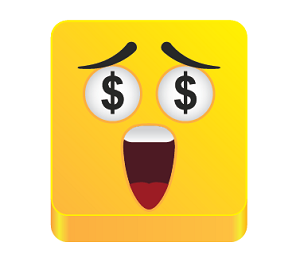 on the steps that you’ve laid out to get the job done. If you don’t take action, nothing gets done, no matter how prepared you are or how excited you are. The information is out there on the steps that you need to take. If you are writing a book, for example, you already know how to do that because this has been laid out for you, probably multiple times. The information is available, and now you need to take the steps, or the action on what you need to do. The steps are that once you’ve acknowledged your anxiety, because you are procrastinating, you need to ask, “Now, wait a minute, what’s the threat? What is it that I’m avoiding?” You answer that, and you can write it down, by the way. That’s a very powerful technique. Write down the answers to the questions you’re asking because then you can look at that piece of paper, and you can look at the threat that you’re avoiding, and you can then move to the next step of, “What if it goes right, and if it goes right, what do I need to do to make it happen?” Write those steps down and then act on those steps. Now what you’ve done is, you don't only have those steps in front of you of what you need to do, you’ve got your goals. You need to turn those steps into goals, and take action on those steps, and your book gets done, or whatever it is. You should have all of the information that you need to move forward, but you actually have to do it. Let’s say that it’s not writing a book that you’re avoiding. Maybe you’re afraid to ask your boss for a raise, or you’ve been avoiding the task of asking your spouse about finances. Maybe you’re thinking about talking to your kids about their friends. This solution applies to all of that. It’s the same process. Now, what you need to do is focus on the question of, “What if?” Think about, “What if things go well? What if my book is well-received? What if I ask for that raise and the boss says ‘yes’? What if I talk to my kid about their friends, and instead of him/her going up to their room and slamming the door, they say, ‘Well, yeah, I need to think about that…’?” When you focus on that, “What if,” that question itself, and the answer to it, is exciting because I can get excited about my book being well-received or about my boss giving me a raise. I can get excited about whatever it happens to be… talking to my spouse. When I get excited about that, I am motivated to move forward to get that job done. I can now sit down and ask, “What do I need to do? What’s my next step? What is the next step in the process? What haven’t I done? What do I need to prepare myself for in talking to my kids? What information do I need to have in talking to my boss when he asks me, ‘Well, why do you think you need a raise?’” It’s asking the question, “What if everything goes right?” Getting excited about it and focusing your attention on that, when you focus your attention on that, you’re then motivated to take the next step. That’s how it all fits together. What you’re doing is using anticipation, the anticipation of what good might happen, to actually propel you forward. You’re going to be motivated to take the next step in whatever process you’re working through because you’re anticipating good things happening. Allow yourself to be carried away with that emotion, whereas before being carried away by anxiety and the concern for the possible bad results that could come about. Now you’re allowing yourself to use that same energy and allowing yourself to get carried away by the positive results that you want and you can now make happen. It’s the same energy, except now you’ve turned it around and flipped it on its side so that it’s working for you as a tool, instead of against you.
on the steps that you’ve laid out to get the job done. If you don’t take action, nothing gets done, no matter how prepared you are or how excited you are. The information is out there on the steps that you need to take. If you are writing a book, for example, you already know how to do that because this has been laid out for you, probably multiple times. The information is available, and now you need to take the steps, or the action on what you need to do. The steps are that once you’ve acknowledged your anxiety, because you are procrastinating, you need to ask, “Now, wait a minute, what’s the threat? What is it that I’m avoiding?” You answer that, and you can write it down, by the way. That’s a very powerful technique. Write down the answers to the questions you’re asking because then you can look at that piece of paper, and you can look at the threat that you’re avoiding, and you can then move to the next step of, “What if it goes right, and if it goes right, what do I need to do to make it happen?” Write those steps down and then act on those steps. Now what you’ve done is, you don't only have those steps in front of you of what you need to do, you’ve got your goals. You need to turn those steps into goals, and take action on those steps, and your book gets done, or whatever it is. You should have all of the information that you need to move forward, but you actually have to do it. Let’s say that it’s not writing a book that you’re avoiding. Maybe you’re afraid to ask your boss for a raise, or you’ve been avoiding the task of asking your spouse about finances. Maybe you’re thinking about talking to your kids about their friends. This solution applies to all of that. It’s the same process. Now, what you need to do is focus on the question of, “What if?” Think about, “What if things go well? What if my book is well-received? What if I ask for that raise and the boss says ‘yes’? What if I talk to my kid about their friends, and instead of him/her going up to their room and slamming the door, they say, ‘Well, yeah, I need to think about that…’?” When you focus on that, “What if,” that question itself, and the answer to it, is exciting because I can get excited about my book being well-received or about my boss giving me a raise. I can get excited about whatever it happens to be… talking to my spouse. When I get excited about that, I am motivated to move forward to get that job done. I can now sit down and ask, “What do I need to do? What’s my next step? What is the next step in the process? What haven’t I done? What do I need to prepare myself for in talking to my kids? What information do I need to have in talking to my boss when he asks me, ‘Well, why do you think you need a raise?’” It’s asking the question, “What if everything goes right?” Getting excited about it and focusing your attention on that, when you focus your attention on that, you’re then motivated to take the next step. That’s how it all fits together. What you’re doing is using anticipation, the anticipation of what good might happen, to actually propel you forward. You’re going to be motivated to take the next step in whatever process you’re working through because you’re anticipating good things happening. Allow yourself to be carried away with that emotion, whereas before being carried away by anxiety and the concern for the possible bad results that could come about. Now you’re allowing yourself to use that same energy and allowing yourself to get carried away by the positive results that you want and you can now make happen. It’s the same energy, except now you’ve turned it around and flipped it on its side so that it’s working for you as a tool, instead of against you. Connecting With Dr. Daube
My email is TheEmotionsDoctor@gmail.com. My website and blog can be found at TheEmotionsDoctor.com. I post weekly entries about emotions there, and you can also leave comments. I’d love to hear from you. If you have any questions about emotions, go to my website and leave a comment or send me an email. I have a book out as well, and by the way, I procrastinated before I started that project. I used the exact same technique that I’ve just taught you in order to get my own book written. My book is called Emotions as Tools: A Self Help Guide to Controlling Your Life Not Your Feelings. It’s available on Amazon, but you can also go to my website and download the first chapter for free. I hope that you will do that. Real Fast Book helped me to write this book, and it also helped me to write my second book, which is Beyond Anger Management: Master Your Anger. This is a strategic tool that you can use, and the first chapter of this book is available on my website as well. Head on over there and check it out.Daniel's Real Fast Results Tip: Emotions
Resources
Dr. Daube's Books: Emotions as Tools: A Self Help Guide to Controlling Your Life Not Your Feelings Beyond Anger Management: Master Your AngerReal Fast Results Community
If you are diggin’ on this stuff and really love what we’re doing here at Real Fast Results, would you please do me a favor? Head on over to iTunes, and make sure that you subscribe to this show, download it, and rate & review it. That would be an awesome thing. Of course, we also want to know your results. Please share those results with us at http://www.realfastresults.com/results. As always, go make results happen!
Jul 12, 2016
 Welcome to Real Fast Results! This is Daniel Hall, and I’m very excited about this particular episode because I’m bringing on a guest who is going to be covering a topic that I am intensely interested in. His name is Stephen Key, and he is going to be going over the idea of licensing your ideas for passive income. That means selling your ideas to companies and making a royalty income from that. I have searched high and low for an expert to come on who is both very accomplished and willing to share their secrets. So, I am very appreciative that Stephen decided to join us today. Stephen, welcome to the show. Hopefully, the people reviewing this material will understand that they can take action as soon as today or tomorrow. What I will do is show you how to come up with simple ideas, show them to companies, and let them pay you for your creativity. You don’t have to build a business or spend a lot of money to do this.
Welcome to Real Fast Results! This is Daniel Hall, and I’m very excited about this particular episode because I’m bringing on a guest who is going to be covering a topic that I am intensely interested in. His name is Stephen Key, and he is going to be going over the idea of licensing your ideas for passive income. That means selling your ideas to companies and making a royalty income from that. I have searched high and low for an expert to come on who is both very accomplished and willing to share their secrets. So, I am very appreciative that Stephen decided to join us today. Stephen, welcome to the show. Hopefully, the people reviewing this material will understand that they can take action as soon as today or tomorrow. What I will do is show you how to come up with simple ideas, show them to companies, and let them pay you for your creativity. You don’t have to build a business or spend a lot of money to do this. The Benefits of Licensing Your Ideas
I believe that we are all creative, but a lot of us don’t want to start businesses. I admit that I'm not the business sort, but I'm very creative. So, what should I do with all of my ideas? Should I let them just sit in a corner? I feel I let them sit, sooner or later I'm going to see them out there on TV or on store shelves. The game has changed. You don’t have to start a company, or raise money, or quit your job. You don’t have to do anything that’s scary or dangerous. You can take some of your ideas, show them to the “right” companies, and you don’t even have to own it. That’s what surprises everyone. Everybody thinks that you have to have a patent. You don’t have to own anything; it’s all about speed to market. So, you just have to have the right idea and show it to a company. The big idea is that you can take intellectual property that you have developed, without having a patent for it, and bring it out to the marketplace and actually sell it so that you end up with money in your bank account. It doesn’t matter if you have a business or not. You’re not actually selling an idea but renting it. You’re just going to let these companies rent your idea for a while, and every quarter, you’re going to collect royalties from it. If you can make this work for you, this opportunity will allow you to live anywhere you want to, and you won’t have to work a 9-5 job. However, once you start doing this, you’re going to want to work on this all of the time. You can work anytime you want, live anywhere you want, and let the big companies do all of the work for you.
business sort, but I'm very creative. So, what should I do with all of my ideas? Should I let them just sit in a corner? I feel I let them sit, sooner or later I'm going to see them out there on TV or on store shelves. The game has changed. You don’t have to start a company, or raise money, or quit your job. You don’t have to do anything that’s scary or dangerous. You can take some of your ideas, show them to the “right” companies, and you don’t even have to own it. That’s what surprises everyone. Everybody thinks that you have to have a patent. You don’t have to own anything; it’s all about speed to market. So, you just have to have the right idea and show it to a company. The big idea is that you can take intellectual property that you have developed, without having a patent for it, and bring it out to the marketplace and actually sell it so that you end up with money in your bank account. It doesn’t matter if you have a business or not. You’re not actually selling an idea but renting it. You’re just going to let these companies rent your idea for a while, and every quarter, you’re going to collect royalties from it. If you can make this work for you, this opportunity will allow you to live anywhere you want to, and you won’t have to work a 9-5 job. However, once you start doing this, you’re going to want to work on this all of the time. You can work anytime you want, live anywhere you want, and let the big companies do all of the work for you. Steps To Licence Your Ideas For Passive Income
The first step is to see if you have a marketable idea. You need to find out fairly quickly, and the best way to do that is to just study the marketplace. What’s out there? I recommend doing a Google Image search. If you’ve got a new hammer, look at all the hammers in the world. You can do this at home. Spend a little time just playing around with the idea, and be an expert in a micro-category. Just sit, search, and see if you can find your “idea”. If you find that there’s something unique about your idea, move to the next step, which is to do a Google Patents search. That sounds very difficult, but all you do is go to Google Patents and type in a few words that hold similarities to your idea. Then just scour through what other people have done in that space. In order to create for the future, you must know what’s been done in the past. By looking at past patents, it gives you a glimpse of the past. If you’ve taken these first two steps, and you still think that your idea is unique, you’ll want to continue moving forward with it. Now, this doesn’t mean that you need to reinvent the wheel. You just need to be able to propose a small improvement, but one that no one else has seen. The smaller an idea, the better. Simple ideas is where it’s at, and for a few different reasons. First, if you make a bit of an improvement on an existing idea, then you know there’s a market for it already. Also, it’s likely that the manufacturing can be done because it’s already being done, but you’re making a small improvement. The third step in this process is to show a company your idea. It really is that simple. You do this with a one-page sell sheet. It’s basically just an advertisement. You know how you drive down a freeway, and when you see a billboard, you get it instantly? That’s all your sell sheet needs to be. It should have a big benefit on the top that tells the company what your idea does and why they should care, a picture pertaining to your idea, and then your contact information down at the bottom. Here’s how easy this is. Let’s say that you just have a sketch on a napkin. You can find a freelance designer on the Internet that does 3D computer generated graphics. This person would be able to take a simple sketch of yours and make it beautiful. They can make your idea come to life. It may not be real yet, but they can make it look real, and you can have that done for under $100. It’s important that you understand that the benefit statement that you use should let people know, at a glance, how your idea will make the buyer’s life better. It’s essentially just a benefit-driven headline. Once you have a sell sheet, you need to make a list of companies that could benefit from your idea. I call it follow the money. Who could benefit from my idea? Just go down to a retail store that you think it might sell in, and look at where it’s going to be on that isle. Those are the companies that you’re going to submit your idea to. The next step that you’ll need to take is to file a PPA (Provisional Patent Application). You can file it anywhere in the world and in the United States for $65. It gives you one year to shop around and show it to companies and put “patent pending” on it. Now, that $65 just gives you one year, but during this time, you can shop it around and see if anyone wants it. After you have that, then you can move forward and contact the company.To reiterate, here are your steps:
- Step 1: Check to make sure your brilliant idea is marketable.
- Check Google Images
- Check Google Patents.
- Step 2: Make a sell sheet to present to companies
- Benefit-driven headline
- Image that makes idea come to life
- Contact information
- Step 3: Make a list of companies to submit your idea to.
- Step 4: File a PPA
- Step 5: Submit Your Idea
Submitting Your Idea
 To submit your idea, I recommend that you go to LinkedIn and find a company that you want to send it to. Find someone in sales or someone in marketing. Tell them that you’re a product developer. Never tell people you are an inventor. Anyway, let them know that you would like to submit an idea to their company for them to review, and ask them what their process is. That’s all it takes to get up and running. This person is going to tell you what you need to do, and they may just respond with an email address, which is great because you can just send your sell sheet in electronically. If the company takes an interest in it, they will bring all of the right people in the room to look at it. Hopefully, at that point, they will pick up the phone or send you an email saying, “We want to know more.” Now you’re in the game. That’ when the magic happens. Either they will like it or they won’t. You’ll know very, very quickly whether you hit it big or not. If it’s a great idea, the company that you submitted it to would respond very fast in most situations. It’s when they call that things get a little trickier. It’s time to cut a deal. I recommend that you get someone with a little more experience to help you. If you’ve never done this before, find someone that’s done it, or find someone with a bit of legal expertise. You’re going to need some guidance at this point. Now they want it, and they are going to want to cut a deal. You want this deal to be cut in a way that you benefit best for your idea. This is so simple that anyone can do this at any age. I have been teaching people that are 18 and still in high school to do this and people in their 80’s to do this. Anyone can do this.
To submit your idea, I recommend that you go to LinkedIn and find a company that you want to send it to. Find someone in sales or someone in marketing. Tell them that you’re a product developer. Never tell people you are an inventor. Anyway, let them know that you would like to submit an idea to their company for them to review, and ask them what their process is. That’s all it takes to get up and running. This person is going to tell you what you need to do, and they may just respond with an email address, which is great because you can just send your sell sheet in electronically. If the company takes an interest in it, they will bring all of the right people in the room to look at it. Hopefully, at that point, they will pick up the phone or send you an email saying, “We want to know more.” Now you’re in the game. That’ when the magic happens. Either they will like it or they won’t. You’ll know very, very quickly whether you hit it big or not. If it’s a great idea, the company that you submitted it to would respond very fast in most situations. It’s when they call that things get a little trickier. It’s time to cut a deal. I recommend that you get someone with a little more experience to help you. If you’ve never done this before, find someone that’s done it, or find someone with a bit of legal expertise. You’re going to need some guidance at this point. Now they want it, and they are going to want to cut a deal. You want this deal to be cut in a way that you benefit best for your idea. This is so simple that anyone can do this at any age. I have been teaching people that are 18 and still in high school to do this and people in their 80’s to do this. Anyone can do this. Cutting A Deal
Exactly how you can go about cutting a deal with a company is beyond the scope of this particular discussion. However, here is a little insight. There will be a licensing agreement, and they are going to pay you a royalty on every one (use of your idea/product) that they sell. So, basically, you’re going to rent it to them. At this point, you can also get them to pay for the patent too. There are all sorts of things that you could potentially negotiate, but on the whole, they are going to rent it, they are going to sell it, they are going to pay you.Royalties - Example
Let me give you an example of one of the ideas I had. It was a little Nerf basketball goal. But, the backboard depicted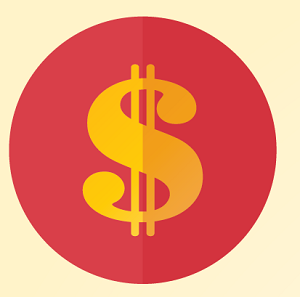 a picture of Michael Jordan, and it was in the shape of Jordan’s head and shoulders. This sold for 10 years, and I collected royalties on a prototype that probably cost maybe $10. The first year was $100,000 in royalties, and it continued to sell for 9 years after that. I sent the Michael Jordan basketball goal idea in on April 9, 1999, and had a contract on the 12th. So, I had a contract 3 days later. That’s how fast it went. They were already selling the square ones with a little picture of Michael Jordan on them. It was a split royalty. They paid Michael Jordan and they paid Stephen. In this case, Stephen’s cut was 2.5%. That’s not a very high royalty, even for a small idea. Usually, the average is 5-6% off of the wholesale price of the product. Every time the product was shipped for $4.99, I would get 2.5%. They made bigger ones and smaller ones, and they even made them with different basketball players. Another product of mine also sold for 10 years. The last check i got was for $0.55 and I kept it.
a picture of Michael Jordan, and it was in the shape of Jordan’s head and shoulders. This sold for 10 years, and I collected royalties on a prototype that probably cost maybe $10. The first year was $100,000 in royalties, and it continued to sell for 9 years after that. I sent the Michael Jordan basketball goal idea in on April 9, 1999, and had a contract on the 12th. So, I had a contract 3 days later. That’s how fast it went. They were already selling the square ones with a little picture of Michael Jordan on them. It was a split royalty. They paid Michael Jordan and they paid Stephen. In this case, Stephen’s cut was 2.5%. That’s not a very high royalty, even for a small idea. Usually, the average is 5-6% off of the wholesale price of the product. Every time the product was shipped for $4.99, I would get 2.5%. They made bigger ones and smaller ones, and they even made them with different basketball players. Another product of mine also sold for 10 years. The last check i got was for $0.55 and I kept it. More Tips On Licensing Products
The most important thing to understand is that you can do this. You don’t need to have a degree in product development or even a business of your own. All you need to do is have a love for products. Find a category that you’re fascinated with. If you like golf, stick with that. Look at golf products, study them, and think about what problems there are. That’s really the first step. It’s not hard. I like to teach people that they should try to be an expert in a micro-category. It may be something that you’re already in the business of. It’s even better if it’s related to something you’re already doing. One of my students was in the restaurant business, and he noticed that it was really hard to get the tomato paste out of the big cans that they used. He created a tool that allowed them to pull it all out at one time. You see? He knew the problem personally because he was in the business. He discovered there was a problem, created a mechanism to solve that problem, and then licensed the mechanism. Most people don’t even know that you can license ideas in the hospitality industry. This is a huge industry. Here are more industries that are on fire at the moment:- The Pet Industry
- The Kitchen Industry
- “As Seen on TV”*
- The Fitness Industry
- The Home Improvement Industry
Do I Have to Have a Brilliant Idea to Do This?
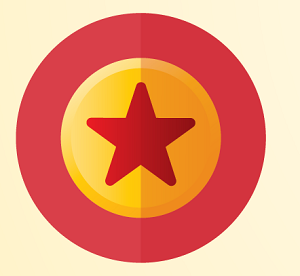 You do not have to reinvent the wheel. Big ideas take a lot of money and time because you have to educate, and most likely, spend a lot of money to get it going. When you make simple improvements on existing ideas, the product is already selling and has already been proven. You’re just bringing the next addition out. They already have the marketplace established, so it’s speed to market. Here is an example of how simple this can be. I've got a water bottle with a label on it, and you could spin the label on the bottle and it would reveal more information from a little window on the back. In other words, the label is in two layers. When you spin the bottom of the bottle, new information would be shown through a little window on the top label. This could be used as a marketing device. This particular water bottle has a college team’s logo on it, and it was being used as a recruiting device. Imagine yourself at a football game, and you happen to spin the bottom of your bottle of water and realize that it does that, so you begin reading. Then you find out all sorts of things about what the university you were at offers. This is a sort of cool and clever idea, but all it really involves is an extra layer of the label on a water bottle. The best part is that this piggybacks on products that are already on the market. All I did was add a little value by making some use of, or a simple improvement to, the label that would have existed already. It delivers more content. You could use this for contests and all sorts of things. In fact, you basically double the label size this way, and a company can add more promotional materials, which makes the label all the more valuable to the company at hand. For this project, my one-line benefit statement was, “This label adds 75% more space.” If you had an idea like mine, you might begin by doing a Google Image search for, “Labels that add more information.” Then, I would just look at all of the images. I've seen labels that pull out like an accordion book. I might even go into someone’s website. I'd just search around for everything having to do with labels. I'd look up “expanded content labels”, and “labels that add more information”, and “labels that function”. I just start to become an expert in one little area. In this case, I looked at this and found retailers that sold different types of labels. Those would be the companies that I submitted it to. In other words, you could go to those who have something substantially similar, and that could be the first step in who to contact. Everybody thinks that you’re going after the competition. No, it’s your potential licensee. As you are researching the market, you’re also looking for potential licensees. The next thing that you would do is perform a search on Google Patents. I would type in the same thing as I did before, which would be things like “Labels that add more information”. Various patents involving these types of labels would come up, and I would search through them to make sure that I'm not copying anyone else’s patented idea. Then I would search through the manufacturers that came up in this search as well. Again, when you do this for a day or so, you begin to become sort of an expert in a very narrow category. If you do this and you start to think that you have a marketable idea that would work, that’s when you begin to make plans to put together your sell sheet. You might even decide to make a YouTube video about your ideas. YouTube videos are very powerful, and one that you make for something like this shouldn’t be more than about one minute long. All you need to do is demonstrate a problem and how your idea could be the solution. For example, if you wanted to sell the label idea spoken about before, you could show a person that was frustrated because there wasn’t enough information about something on his label. Then, you could show that person happy because he found a bottle that gave him all the information he was looking for. If you made a YouTube video and a sell sheet, you could add a URL to your sales sheet that people could click on to see a demo of your idea. Since you studied the marketplace and made a list of companies, you have done all of the work. You have a video, a sell sheet, and a list of companies to send the sheet out to. That’s when you’ll want to file your PPA (Provisional Patent Application). At that point, you’ll have one year to shop it around before you have to file a non-provisional, which would be a patent. You can file a PPA anywhere in the world, yourself, for basically $65. If you are in a higher income bracket, it might cost $120. Either way, it’s very affordable. The sell sheet that you make would need a good image. A 3D, computer-generated graphic might run you $50-$70. That, along with the cost of your PPA shouldn’t exceed more than about $200, and yet, you’ve created a package that could potentially be worth hundreds of thousands of dollars. I'm amazed at how many ideas I have seen that were truly remarkable, but they take forever because they aren’t simple. People try to reinvent the wheel and have to educate people about their idea. On the other hand, I've seen small improvements on products get licensed all of the time. In fact, I see licensing agreements almost every other week. The people that are getting these contracts are using my 10-step system, and five of these steps you learned about today. It’s really quite easy to put together the marketing material, create a list, make a sales sheet, and reach out to a company. These are all steps that people can follow and complete both quickly and inexpensively. I have even taught people in other countries how to do this, and they end up feeding ideas to United States companies. You can do this from just about anywhere. Speaking of doing this inexpensively, there are people offering to do 3D renderings on Fiverr each and every day at a very low cost. It’s incredible how much skill people have today and what little they charge for them. There was a time that something like this would have cost thousands of dollars, and now you can have this sort of thing done for as little as $10. It’s just incredible. One of the points that I want to get across is that you need to reach out to everyone that you can, and if you get a “no”, don’t let it deter you. Keep trying. I recommend contacting at least 25 different companies, and all at the same time. Don’t wait to hear back from one. Right now, you might be thinking, “Well, what if there are two different companies that want it?” I usually respond to this question with, “What a great problem to have!” This could potentially cause a bidding war for your idea. By the way, there’s one industry that you would not want to contact more than one person at a time with, and that’s DRTV (Direct Response TV, otherwise known as “As Seen on TV”). It’s a very small community, so contact them one at a time. There are only five or six players in that community anyway, and you’ll want to contact each of them one at a time. When it comes to everyone else, however, you’ll want to contact as many people as possible. Keep good notes, and even if you get a “no”, you might get a “yes” next time. Act professionally and ask for feedback. Maybe you can resubmit it, or maybe you can tweak the idea a bit before submitting it to the next company. Everything is based on relationships, and if you submit another one before you know it, they’ll start to tell you what they are looking for. That’s golden because if you know what people want, you’re in a much better position to provide it. This definitely gives you an advantage, and they realize that you are working for free for them; that is, until they take it and rent it from you. You’re an asset. They want these calls, and they are really going to love you. When they finally say, “We want to talk more,” you’re going to fall out of your chair. This gives me goose bumps to this day. That’s when you’ll know that you’re really in the game. Again, anyone can do this. The steps are easy, and you’ve been given all of the advice that you need to get started today. The only thing that hasn’t been discussed much at this point is the contract. I can talk all day about how to cut these deals, but there note enough time during this interview. However, here are ways to cut deals that you get it every time.
You do not have to reinvent the wheel. Big ideas take a lot of money and time because you have to educate, and most likely, spend a lot of money to get it going. When you make simple improvements on existing ideas, the product is already selling and has already been proven. You’re just bringing the next addition out. They already have the marketplace established, so it’s speed to market. Here is an example of how simple this can be. I've got a water bottle with a label on it, and you could spin the label on the bottle and it would reveal more information from a little window on the back. In other words, the label is in two layers. When you spin the bottom of the bottle, new information would be shown through a little window on the top label. This could be used as a marketing device. This particular water bottle has a college team’s logo on it, and it was being used as a recruiting device. Imagine yourself at a football game, and you happen to spin the bottom of your bottle of water and realize that it does that, so you begin reading. Then you find out all sorts of things about what the university you were at offers. This is a sort of cool and clever idea, but all it really involves is an extra layer of the label on a water bottle. The best part is that this piggybacks on products that are already on the market. All I did was add a little value by making some use of, or a simple improvement to, the label that would have existed already. It delivers more content. You could use this for contests and all sorts of things. In fact, you basically double the label size this way, and a company can add more promotional materials, which makes the label all the more valuable to the company at hand. For this project, my one-line benefit statement was, “This label adds 75% more space.” If you had an idea like mine, you might begin by doing a Google Image search for, “Labels that add more information.” Then, I would just look at all of the images. I've seen labels that pull out like an accordion book. I might even go into someone’s website. I'd just search around for everything having to do with labels. I'd look up “expanded content labels”, and “labels that add more information”, and “labels that function”. I just start to become an expert in one little area. In this case, I looked at this and found retailers that sold different types of labels. Those would be the companies that I submitted it to. In other words, you could go to those who have something substantially similar, and that could be the first step in who to contact. Everybody thinks that you’re going after the competition. No, it’s your potential licensee. As you are researching the market, you’re also looking for potential licensees. The next thing that you would do is perform a search on Google Patents. I would type in the same thing as I did before, which would be things like “Labels that add more information”. Various patents involving these types of labels would come up, and I would search through them to make sure that I'm not copying anyone else’s patented idea. Then I would search through the manufacturers that came up in this search as well. Again, when you do this for a day or so, you begin to become sort of an expert in a very narrow category. If you do this and you start to think that you have a marketable idea that would work, that’s when you begin to make plans to put together your sell sheet. You might even decide to make a YouTube video about your ideas. YouTube videos are very powerful, and one that you make for something like this shouldn’t be more than about one minute long. All you need to do is demonstrate a problem and how your idea could be the solution. For example, if you wanted to sell the label idea spoken about before, you could show a person that was frustrated because there wasn’t enough information about something on his label. Then, you could show that person happy because he found a bottle that gave him all the information he was looking for. If you made a YouTube video and a sell sheet, you could add a URL to your sales sheet that people could click on to see a demo of your idea. Since you studied the marketplace and made a list of companies, you have done all of the work. You have a video, a sell sheet, and a list of companies to send the sheet out to. That’s when you’ll want to file your PPA (Provisional Patent Application). At that point, you’ll have one year to shop it around before you have to file a non-provisional, which would be a patent. You can file a PPA anywhere in the world, yourself, for basically $65. If you are in a higher income bracket, it might cost $120. Either way, it’s very affordable. The sell sheet that you make would need a good image. A 3D, computer-generated graphic might run you $50-$70. That, along with the cost of your PPA shouldn’t exceed more than about $200, and yet, you’ve created a package that could potentially be worth hundreds of thousands of dollars. I'm amazed at how many ideas I have seen that were truly remarkable, but they take forever because they aren’t simple. People try to reinvent the wheel and have to educate people about their idea. On the other hand, I've seen small improvements on products get licensed all of the time. In fact, I see licensing agreements almost every other week. The people that are getting these contracts are using my 10-step system, and five of these steps you learned about today. It’s really quite easy to put together the marketing material, create a list, make a sales sheet, and reach out to a company. These are all steps that people can follow and complete both quickly and inexpensively. I have even taught people in other countries how to do this, and they end up feeding ideas to United States companies. You can do this from just about anywhere. Speaking of doing this inexpensively, there are people offering to do 3D renderings on Fiverr each and every day at a very low cost. It’s incredible how much skill people have today and what little they charge for them. There was a time that something like this would have cost thousands of dollars, and now you can have this sort of thing done for as little as $10. It’s just incredible. One of the points that I want to get across is that you need to reach out to everyone that you can, and if you get a “no”, don’t let it deter you. Keep trying. I recommend contacting at least 25 different companies, and all at the same time. Don’t wait to hear back from one. Right now, you might be thinking, “Well, what if there are two different companies that want it?” I usually respond to this question with, “What a great problem to have!” This could potentially cause a bidding war for your idea. By the way, there’s one industry that you would not want to contact more than one person at a time with, and that’s DRTV (Direct Response TV, otherwise known as “As Seen on TV”). It’s a very small community, so contact them one at a time. There are only five or six players in that community anyway, and you’ll want to contact each of them one at a time. When it comes to everyone else, however, you’ll want to contact as many people as possible. Keep good notes, and even if you get a “no”, you might get a “yes” next time. Act professionally and ask for feedback. Maybe you can resubmit it, or maybe you can tweak the idea a bit before submitting it to the next company. Everything is based on relationships, and if you submit another one before you know it, they’ll start to tell you what they are looking for. That’s golden because if you know what people want, you’re in a much better position to provide it. This definitely gives you an advantage, and they realize that you are working for free for them; that is, until they take it and rent it from you. You’re an asset. They want these calls, and they are really going to love you. When they finally say, “We want to talk more,” you’re going to fall out of your chair. This gives me goose bumps to this day. That’s when you’ll know that you’re really in the game. Again, anyone can do this. The steps are easy, and you’ve been given all of the advice that you need to get started today. The only thing that hasn’t been discussed much at this point is the contract. I can talk all day about how to cut these deals, but there note enough time during this interview. However, here are ways to cut deals that you get it every time. How To Get A Deal
There’s one way to get a deal every single time. It’s all about taking away fear. When a company sees your idea, they want to license your PPA. They want to license that number. They want to license your concept. It comes down to what you are granting and what they are licensing. In their mind, they need something tangible. I always tells these companies, “We’re going to make improvements.” That’s because they are; they always do. That sounds really simple, but they always say yes. It’s good business. The company will tell me, “You’re right Steve; you’re going to make improvements. We’re going to make improvements, and we need to add it to the contract.” Now, what happens when they do that? When your idea is patent-pending, you’re going to ask for a certain royalty. That may be 5%, for example. Then you make the agreement that when your idea goes to patent, you’ll be paid 7%. At the same time, make the agreement that if it doesn’t issue at all, they pay you at least 1% for your efforts. Doing it this way takes away all of the fear from that company. They are always worried about owning something. I don't believe that you own anything, ever. Products go in and out of the market so quickly today that your product might go through its life cycle before a patent can even get issued. It’s not about patents. It’s about selling. So, the way you do these deals is you just take away the risk for these companies. During your negotiations, you tell the companies that you speak with, “If it issues pay me [this], and pay me [this] if it doesn’t.” Since you opened up the grant of license, you can always file another PPA to get paid the 5%. That may seem a little complex. I have written a book on this topic alone. These are the deals that I see happening every day because you take away the risk and you give the companies three different opportunities, and all along, you play the patent game. Even more importantly, the patent game doesn’t play you this way. This is something that’s a bit hard for many people to grasp, but it’s not that complicated if you sit down and think about it for a while. What happens is when your product lands on a company’s desk, the CEO may look at it and say, “Hey, I like this, but let me bring my team in.” He shows it to the sales guy, and the sales guy goes, “Hey, I can sell this.” Then, they go to the marketing person, and he says, “I can market this product because it has a great benefit.” They bring the manufacturing guy in, and he goes, “This is an improvement on our existing ideas, so we can make this.” Finally, they bring the legal guy in, and he asks, “Well, does he own anything?” This makes everyone in the room start to think, and they say, “We don’t know. Take a look at his Provisional Patent Application.” That’s when the legal guy asks, “Well, will he get a patent,” and everyone goes, “I don’t know”. You see, no one knows; this is the gray area. You’re playing the unknowns. This opens the doors for you to say, “I know it is speed to market, and I know it’s not about protection. It’s about selling. So, let’s just go sell it now.” Why wait for a patent to issue when it might not even issue? Even if it does issue, by then it may be too late. So, you play that game of the unknown, and that way, when you work the contract, you can keep that gray area open and a little vague by adding new intellectual properties that keeps that patent pending as long as you like. At the same time, you are minimizing their risk because you’re telling them that if it doesn’t go to patent, my royalties will be basically nothing. It makes them very happy, in fact, because you’ve countered everything that could possibly happen. Again, it’s really about selling. It’s not about protection. I have seen tons of licensing agreements in my lifetime, in 99% of them, no one owns anything. A lot of the time, people don’t like to hear that. Patent attorneys don’t want to hear that, for example, because they want to sell you the patent. They want to sell you that process of filing a patent. I want everyone to know, that’s not what I'm seeing. I see these agreements probably every other week, and I've been seeing this for 15 years. It’s not about fear, or being an expert, or anything like that. It’s really about getting into the game today. If you’re creative, you don’t need to have a background. All you need is one simple idea. It's always a numbers game in anything you do in life. You can start one business and pour all of your money and energy into it. In four or five years, you may have become a substantial success, and you may not have. With this, you may have 20 or 30 ideas in a year, and you can just put all of those bowls out there. Essentially, you’ll have all of these companies working for you and you’ve increased your chances tenfold. On top of that, you were not the one to take the risk.
idea, they want to license your PPA. They want to license that number. They want to license your concept. It comes down to what you are granting and what they are licensing. In their mind, they need something tangible. I always tells these companies, “We’re going to make improvements.” That’s because they are; they always do. That sounds really simple, but they always say yes. It’s good business. The company will tell me, “You’re right Steve; you’re going to make improvements. We’re going to make improvements, and we need to add it to the contract.” Now, what happens when they do that? When your idea is patent-pending, you’re going to ask for a certain royalty. That may be 5%, for example. Then you make the agreement that when your idea goes to patent, you’ll be paid 7%. At the same time, make the agreement that if it doesn’t issue at all, they pay you at least 1% for your efforts. Doing it this way takes away all of the fear from that company. They are always worried about owning something. I don't believe that you own anything, ever. Products go in and out of the market so quickly today that your product might go through its life cycle before a patent can even get issued. It’s not about patents. It’s about selling. So, the way you do these deals is you just take away the risk for these companies. During your negotiations, you tell the companies that you speak with, “If it issues pay me [this], and pay me [this] if it doesn’t.” Since you opened up the grant of license, you can always file another PPA to get paid the 5%. That may seem a little complex. I have written a book on this topic alone. These are the deals that I see happening every day because you take away the risk and you give the companies three different opportunities, and all along, you play the patent game. Even more importantly, the patent game doesn’t play you this way. This is something that’s a bit hard for many people to grasp, but it’s not that complicated if you sit down and think about it for a while. What happens is when your product lands on a company’s desk, the CEO may look at it and say, “Hey, I like this, but let me bring my team in.” He shows it to the sales guy, and the sales guy goes, “Hey, I can sell this.” Then, they go to the marketing person, and he says, “I can market this product because it has a great benefit.” They bring the manufacturing guy in, and he goes, “This is an improvement on our existing ideas, so we can make this.” Finally, they bring the legal guy in, and he asks, “Well, does he own anything?” This makes everyone in the room start to think, and they say, “We don’t know. Take a look at his Provisional Patent Application.” That’s when the legal guy asks, “Well, will he get a patent,” and everyone goes, “I don’t know”. You see, no one knows; this is the gray area. You’re playing the unknowns. This opens the doors for you to say, “I know it is speed to market, and I know it’s not about protection. It’s about selling. So, let’s just go sell it now.” Why wait for a patent to issue when it might not even issue? Even if it does issue, by then it may be too late. So, you play that game of the unknown, and that way, when you work the contract, you can keep that gray area open and a little vague by adding new intellectual properties that keeps that patent pending as long as you like. At the same time, you are minimizing their risk because you’re telling them that if it doesn’t go to patent, my royalties will be basically nothing. It makes them very happy, in fact, because you’ve countered everything that could possibly happen. Again, it’s really about selling. It’s not about protection. I have seen tons of licensing agreements in my lifetime, in 99% of them, no one owns anything. A lot of the time, people don’t like to hear that. Patent attorneys don’t want to hear that, for example, because they want to sell you the patent. They want to sell you that process of filing a patent. I want everyone to know, that’s not what I'm seeing. I see these agreements probably every other week, and I've been seeing this for 15 years. It’s not about fear, or being an expert, or anything like that. It’s really about getting into the game today. If you’re creative, you don’t need to have a background. All you need is one simple idea. It's always a numbers game in anything you do in life. You can start one business and pour all of your money and energy into it. In four or five years, you may have become a substantial success, and you may not have. With this, you may have 20 or 30 ideas in a year, and you can just put all of those bowls out there. Essentially, you’ll have all of these companies working for you and you’ve increased your chances tenfold. On top of that, you were not the one to take the risk. Licensing Your Products Vs. Selling Products Through Amazon FBA
I have a lot of students that do both. Personally, I don't want to have any skin in the game, at least not financially. Plus, I know that I don't have the time to manage something like this, and have no interest in doing so anyway. At the same time, I do like to have multiple products out in the marketplace, and I like to have several different balls up in the air at any given time. I like that what I'm doing carries no risk at all. This is something that’s very easy to do, and I have done the other. I have managed a company before, and have had my own employees. It’s complicated because you have to watch all of the time and stay aware of the market swings. All of that stuff is someone else’s problem when you’re just licensing your ideas. It’s not that this is any better than any other business model, really. It’s just another way to play the game. I personally think you should play the game in all sorts of different ways. So, it’s not a matter of one being better than the other; it comes down to how you want to spend your time. If you’re a really creative person, and you want to find something that can build great wealth, then you need to find something that has a multiplying effect. Licensing your ideas does this.Connecting With Stephen
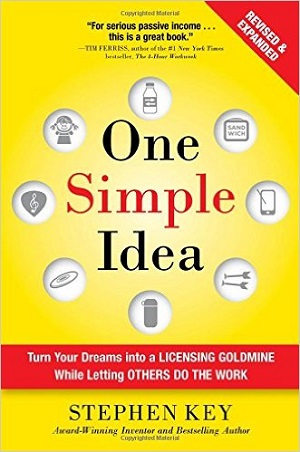 The 10 steps that were partly outlined are completely outlined in a book called One Simple Idea. You can find it on Amazon, and it’s been selling there for over five years. It has also been translated into five different languages (learn more about selling foreign language rights to your books). I call this book your “road map” for pursuing this type of business. I also have a YouTube channel called “inventRightTV”. My partner Andrew Krauss and I produce two YouTube videos every week, and each one is on the 10-step process that you’ve been introduced to today. Last but not least, I also write for three online magazines, on a weekly basis. They are:
The 10 steps that were partly outlined are completely outlined in a book called One Simple Idea. You can find it on Amazon, and it’s been selling there for over five years. It has also been translated into five different languages (learn more about selling foreign language rights to your books). I call this book your “road map” for pursuing this type of business. I also have a YouTube channel called “inventRightTV”. My partner Andrew Krauss and I produce two YouTube videos every week, and each one is on the 10-step process that you’ve been introduced to today. Last but not least, I also write for three online magazines, on a weekly basis. They are: Daniel's Real Fast Result Tip: Passive Income
I agree with all that Stephen has discussed today. I firmly believe that we should all seek out a business model that supports our lifestyle and gives us the kind of time freedom that we need. This particular model is right in the cross-hairs of that goal. That’s one of the reasons why I just love the idea of all of this. So, go out and make it happen!Resources
Stephen's Book - One Simple Idea Google Image Search - https://images.google.com/ Google Patents - https://patents.google.com/ Finding 3D Artists - https://www.fiverr.com/ Selling Foreign Language Rights To Your BooksReal Fast Results Community
If you are diggin’ on this stuff and really love what we’re doing here at Real Fast Results, would you please do me a favor? Head on over to iTunes, and make sure that you subscribe to this show, download it, and rate & review it. That would be an awesome thing. Of course, we also want to know your results. Please share those results with us at http://www.realfastresults.com/results. As always, go make results happen!
Jul 7, 2016

Welcome to this edition of the Real Fast Results Podcast! If you are an author, or want to be an author, or even if you have a book or physical product on Amazon, you are going to want to read over what we have for you today. Debbie Drum is a content production expert. Not only has she produced and published many books, but she also takes action when it comes to marketing her business. In this session, Debbie is going to share her secrets on how to get more and better reviews for your products, specifically on Amazon.com. This training will focus on getting book reviews, but the information found herein will not only apply to books. Debbie, thank you for taking the time to be on the show today.
Today's Promise: More Amazon Book Reviews
The big promise for you is to simply get more book reviews because the equation is “More Book Reviews = More Sales”. While there are many ways to go about getting book reviews, there are more effective ways than others, and we are going to be outlining those ways today. You definitely want to keep cracking away and taking action because if you keep at it, you know, that’s what made me where I am today. I never quit. Every single day I wake up doing, doing, doing…failing…succeeding. That’s what it’s all about.A Bit About Debbie
I started internet marketing in 2010 by literally Googling the words, “How to make money online”. It all started from there. The very first week that I started making money was actually with publishing. I was working a full-time job, and I was traveling a lot--in sales. I have a sales background. I was working and publishing a book a week. I loved it so much because that’s where I was seeing real results. And, the sales person, of course, came out and said, “Hey, I’ve got to teach people what I am doing.” So, that’s a little bit about how I got started.The Process of Getting More Book Reviews
Basically, the big picture, and the “Why” behind this is having more reviews is essentially like having an army of people selling your book 24/7, 365 days out of the year with you being hands-off. They never sleep. Reviews stay there forever. The more reviews you have, and obviously the more positive reviews you have, will work in your favor for more people to click that “buy” button. The reason is that we live in a very social world. I don’t have to tell you that. Everything is about, “Well, what are other people saying?” If I’m going to dedicate the next 2 hours to reading a book, or if I’m going to dedicate a day buying a Groupon package, I’m going to see what other people are saying. It’s our job as the product creators, as the marketers, as the authors to get those reviews because it’s not going to happen quick enough naturally. One of the quickest and most effective ways that I have found to get reviews is to look at people who are already reviewing other books in my niche. The thing is that you want to be publishing in niches where there are tons of competitors because that means it’s a market that has buyers. So, don’t be scared if you see other books that have thousands of reviews and thousands of sales because that means you’re on the right path to finding money. What you want to do is go into Amazon and make a list of the top 50 books that compete against your book, or are in the same niche, the same genre, as your book. There are some books that you will find, if you’re in the right niches, that have thousands of reviewers, or hundreds of reviewers even. Those are the people that I have found throughout the past six years of doing this that I call influencers. Those people, they want to share cool things with their friends. They want to be savvy, they want to be “in the know”, and that’s how they want to be seen. A lot of these people will review books, especially the ones in your niche. Sometimes they have Facebook groups where one message can reach 2,000 or 3,000 people at a click. Those are the kind of people that we are finding, and striving to find, inside of Amazon.
people selling your book 24/7, 365 days out of the year with you being hands-off. They never sleep. Reviews stay there forever. The more reviews you have, and obviously the more positive reviews you have, will work in your favor for more people to click that “buy” button. The reason is that we live in a very social world. I don’t have to tell you that. Everything is about, “Well, what are other people saying?” If I’m going to dedicate the next 2 hours to reading a book, or if I’m going to dedicate a day buying a Groupon package, I’m going to see what other people are saying. It’s our job as the product creators, as the marketers, as the authors to get those reviews because it’s not going to happen quick enough naturally. One of the quickest and most effective ways that I have found to get reviews is to look at people who are already reviewing other books in my niche. The thing is that you want to be publishing in niches where there are tons of competitors because that means it’s a market that has buyers. So, don’t be scared if you see other books that have thousands of reviews and thousands of sales because that means you’re on the right path to finding money. What you want to do is go into Amazon and make a list of the top 50 books that compete against your book, or are in the same niche, the same genre, as your book. There are some books that you will find, if you’re in the right niches, that have thousands of reviewers, or hundreds of reviewers even. Those are the people that I have found throughout the past six years of doing this that I call influencers. Those people, they want to share cool things with their friends. They want to be savvy, they want to be “in the know”, and that’s how they want to be seen. A lot of these people will review books, especially the ones in your niche. Sometimes they have Facebook groups where one message can reach 2,000 or 3,000 people at a click. Those are the kind of people that we are finding, and striving to find, inside of Amazon. How to find book reviewers:
- Figure out what books in your niche have a lot of reviews.
- Then, go and identify reviewers of those books. It’s highly likely that if they like a book on a similar topic, or even the same topic, they would want to review your book as well.
- Third, the reviewers themselves are influence centers, or potential influence centers. That’s a very cool thing because if they like your work, and they like your book, then you’ve basically got social proof, and you’ve got a built-in third-party endorsement that’s completely unbiased. These folks are basically grading you on the work itself. You know, they get nothing out of it, essentially. Other than they’re feeding their community, and they want to be seen as somebody that is “in the know”, or is on the cutting edge of whatever that topic is.
Contacting Potential Book Reviewers
 Once you’ve found your book--let’s say this book has 1,000 reviewers. There’s a hyperlink on that number of reviews. Inside of Amazon, you want to click inside of that hyperlink, and it brings you to a page where you can see about 10-15 reviewers per page. Depending on how many reviews they have, there’s page after page of all these reviews. Each individual reviewer has a profile page. You can click on their name to find their profile page. What you will find is that a certain percentage of these people will actually have contact information. So, it’s not 100% of the people, unfortunately for us. Every one of us, as buyers on Amazon, we all have a profile page whether we like it or not. And, it’s up to us to say whether or not we want to show our contact information, meaning our website and/or our email address. After about six years of this, after our research, it has been proven that about 10-15% of the reviewers of a certain book will have contact information on their profile pages. This is an amazing opportunity to contact the specific people that we need to target and contact to review our book. However, it turns out that this is a very manual process. I learned this very quickly. Back in 2012, I was trying to figure out different ways to get reviewers, as opposed to asking my dad and my mom, and asking Aunt Cindy, and asking my best friend. And, I’m glad that I did this because, you as authors, you might be realizing that Amazon is actually taking away reviews because of these connections that they’re finding. You definitely don’t want the same person, like your group of author community, to be reviewing all of your books because that will raise red flags inside of Amazon. A lot of the time, people provide their contact information because they are interested in reviewing other people’s work, or at least there’s a stronger probability that they are. The benefit that they get out of it is sharing cool things, which we have already talked about, and #2 is getting a free book, which a lot of people are after too. There’s a whole business of this, you know, with physical products. People are looking to get free products for reviews. This is very important: As long as you are contacting people and asking for honest reviews, honest feedback, that is staying within Amazon’s terms of service. What you don’t want to do is say, “Hey, can you give me a five-star review?” That’s not going to fly, and a lot of these reviewers are savvy, and they know what’s right and what’s wrong when it comes to this. You definitely do not want to purchase reviews! When you contact people, don’t say that you’ll give them any type of compensation. All they are getting is a free copy of your book. Amazon is trying to create an atmosphere that makes for a wonderful experience for people. They don’t want their buying atmosphere being filled with fake reviews because people will stop trusting their marketplace. That’s something, as you probably can imagine, Amazon takes very seriously. Amazon is even going as far as suing third parties over fake reviews. So, somehow they’re figuring it out. With all of their algorithms they can do it. If you go to Fiverr.com, you’ll see people who are willing and able to review your book for $5. You might be thinking, “Okay. Well, if they’re going to give me an honest review, what does it matter?” It does matter. So, to be really clear: Do Not Buy Reviews. Do Not Ask for Five-Star Reviews. The only thing that’s good to do is ask for honest reviews, free of compensation.
Once you’ve found your book--let’s say this book has 1,000 reviewers. There’s a hyperlink on that number of reviews. Inside of Amazon, you want to click inside of that hyperlink, and it brings you to a page where you can see about 10-15 reviewers per page. Depending on how many reviews they have, there’s page after page of all these reviews. Each individual reviewer has a profile page. You can click on their name to find their profile page. What you will find is that a certain percentage of these people will actually have contact information. So, it’s not 100% of the people, unfortunately for us. Every one of us, as buyers on Amazon, we all have a profile page whether we like it or not. And, it’s up to us to say whether or not we want to show our contact information, meaning our website and/or our email address. After about six years of this, after our research, it has been proven that about 10-15% of the reviewers of a certain book will have contact information on their profile pages. This is an amazing opportunity to contact the specific people that we need to target and contact to review our book. However, it turns out that this is a very manual process. I learned this very quickly. Back in 2012, I was trying to figure out different ways to get reviewers, as opposed to asking my dad and my mom, and asking Aunt Cindy, and asking my best friend. And, I’m glad that I did this because, you as authors, you might be realizing that Amazon is actually taking away reviews because of these connections that they’re finding. You definitely don’t want the same person, like your group of author community, to be reviewing all of your books because that will raise red flags inside of Amazon. A lot of the time, people provide their contact information because they are interested in reviewing other people’s work, or at least there’s a stronger probability that they are. The benefit that they get out of it is sharing cool things, which we have already talked about, and #2 is getting a free book, which a lot of people are after too. There’s a whole business of this, you know, with physical products. People are looking to get free products for reviews. This is very important: As long as you are contacting people and asking for honest reviews, honest feedback, that is staying within Amazon’s terms of service. What you don’t want to do is say, “Hey, can you give me a five-star review?” That’s not going to fly, and a lot of these reviewers are savvy, and they know what’s right and what’s wrong when it comes to this. You definitely do not want to purchase reviews! When you contact people, don’t say that you’ll give them any type of compensation. All they are getting is a free copy of your book. Amazon is trying to create an atmosphere that makes for a wonderful experience for people. They don’t want their buying atmosphere being filled with fake reviews because people will stop trusting their marketplace. That’s something, as you probably can imagine, Amazon takes very seriously. Amazon is even going as far as suing third parties over fake reviews. So, somehow they’re figuring it out. With all of their algorithms they can do it. If you go to Fiverr.com, you’ll see people who are willing and able to review your book for $5. You might be thinking, “Okay. Well, if they’re going to give me an honest review, what does it matter?” It does matter. So, to be really clear: Do Not Buy Reviews. Do Not Ask for Five-Star Reviews. The only thing that’s good to do is ask for honest reviews, free of compensation. Save Your Time and Outsource
When you finally start diving in, it’s like finding a needle in a haystack. We literally wouldn’t have time to do anything like write our books, market our books, market our products, do videos, and all of this other important stuff that we need to do in our business. Marketing would need to be tabled, and that’s not something that we’d want to do. So, this bright idea that I had, going through all of these different reviewers, suddenly came crashing down because it wasn’t realistic for me to do this all day long. To put that information together in a spreadsheet and then make it available for me to quickly contact people. It might take days to actually aggregate this. If you have more time than money, however, it may be worth doing it this way. There’s actually two other ways to go about this though. Another way that you could go about this would be to outsource the work. You could send this project to an outsourcer. For instance, you could go to any outsourcing site like Fiverr.com, Upwork.com, or Guru.com. There are people just waiting for this kind of work. Generally, using the 10-15% rule of thumb, if you’re looking at a book with 1,000 reviewers, then you’ll probably get 100-150 emails out of that. These workers sometimes work as a team, and they sometimes work individually. After a couple of days, a couple of hundred dollars later, you’ll probably get 100 or 150 emails returned to you. It’s a numbers game. So the more you do, the more of an outcome you’re going to get. I know that most authors, most self-publishers, are not really sitting around with a whole team of people waiting to do this kind of thing all day long. There are tons of other things that we need outsourcers for as well. It’s a very slow and tedious process trying to do this manually. You can actually do this yourself based on what you have learned today, but I do have a software service that does this all automatically for you. I do want to be very clear about the fact that you do not have to go and buy this. You’ve been given step-by-step instructions on how to do this by yourself, but if you see the value in this and you have more money than time, I do want you to know about my software.
anything like write our books, market our books, market our products, do videos, and all of this other important stuff that we need to do in our business. Marketing would need to be tabled, and that’s not something that we’d want to do. So, this bright idea that I had, going through all of these different reviewers, suddenly came crashing down because it wasn’t realistic for me to do this all day long. To put that information together in a spreadsheet and then make it available for me to quickly contact people. It might take days to actually aggregate this. If you have more time than money, however, it may be worth doing it this way. There’s actually two other ways to go about this though. Another way that you could go about this would be to outsource the work. You could send this project to an outsourcer. For instance, you could go to any outsourcing site like Fiverr.com, Upwork.com, or Guru.com. There are people just waiting for this kind of work. Generally, using the 10-15% rule of thumb, if you’re looking at a book with 1,000 reviewers, then you’ll probably get 100-150 emails out of that. These workers sometimes work as a team, and they sometimes work individually. After a couple of days, a couple of hundred dollars later, you’ll probably get 100 or 150 emails returned to you. It’s a numbers game. So the more you do, the more of an outcome you’re going to get. I know that most authors, most self-publishers, are not really sitting around with a whole team of people waiting to do this kind of thing all day long. There are tons of other things that we need outsourcers for as well. It’s a very slow and tedious process trying to do this manually. You can actually do this yourself based on what you have learned today, but I do have a software service that does this all automatically for you. I do want to be very clear about the fact that you do not have to go and buy this. You’ve been given step-by-step instructions on how to do this by yourself, but if you see the value in this and you have more money than time, I do want you to know about my software. Book Review Targeter Software
Basically, it does exactly what the manual process does. So, you first would start out finding your related books, right? Then, instead of you or a team member going through the pages and pages of reviewers, to find those “needles in a haystack”, the software goes through all of those pages for you. It finds the ones that have contact information (email and/or website), and then kicks out all of the other ones that don’t. It’s taking a very manual process and automating it. Once you have extracted these email addresses, the software actually allows you to mail merge with an application within Gmail to essentially send out requests for folks to review your book. So, it automates a large part of it and certainly makes it go a lot faster. This particular piece of software has gotten a lot of reviews itself, and people love it because it does save so much time. At the bottom of these show notes, there’s a link that you can click on to learn more about this software. It’s great to get those email addresses, of course, so that you can start contacting people. But, I want you to look at it from the point of view that these one-to-one connections that you are making with people are so effective for not only now, but for your whole entire career. Just one connection can change your life. Even if you’re only finding 10 emails, or 20 emails, these might seem like small numbers. But those are 20 additional people that you would have never found without the software. Authors who are using this are making these connections and meeting people who will give them video testimonials on Amazon, which are amazing! Then, on your next book, you can say, “Hey Carol! You reviewed my last book. Can you review this book, or this product?” That’s what you’re creating; so it’s much bigger than just an email address. This business is like every other business. It is a people business. It is a relationship business. This idea that you can find brand new people who already like your work extensively. They like it enough to actually give you a good review. They are golden. That’s a really, really important person that can potentially help you in so many other ways later on.Connect With Debbie
I normally hang out at DebbieDrum.com. From there, you can get to my YouTube channel, or Facebook. I’m pretty much everywhere.Daniel's Real Fast Results Tips: Book Reviews
- Do the research - Look for people that are already reviewing books in your niche.
- When you are emailing potential book reviewers, make sure they know you are not compensating them. The only item they are getting is a free book for an honest review. Do not ask for a 5 star review. You just want an honest one.
- If you don't have the time, then outsource!
Resources
Replay Training Demoing Debbies Software: Click here ==> https://debbiedrum.leadpages.co/daniel-hall-getting-book-reviews/ Debbie's Software: The Book Review Targeter Outsourcing Sites: Fiverr.com Upwork.com Guru.com.Real Fast Results Community
If you are diggin’ on this stuff and really love what we’re doing here at Real Fast Results, would you please do me a favor? Head on over to iTunes, and make sure that you subscribe to this show, download it, and rate & review it. That would be an awesome thing. Of course, we also want to know your results. Please share those results with us at http://www.realfastresults.com/results. As always, go make results happen!
Jul 3, 2016
 Welcome to another episode of the Real Fast Results podcast! This is a very special episode that you’re going to love. You are going to learn how to make a post on your blog go viral! The coolest part is that, potentially, you can actually do this with the blog that you have right now. You know, almost all of us have blogs and most of these are dormant blogs. You probably don’t do much with yours, and neither does the rest of the world. Of course, this isn’t helping you or your business. Mr. Rohan Dhawan is an absolute expert when it comes to taking a blog and making it go viral, or more specifically, the posts that you purposefully engineer to do so. He is going to share his secrets with you during this presentation. So, let’s get started… Viral marketing means creating any piece of content (i.e. video, blog posts, etc.) and having it get shared by large amounts of people multiple times at a rapid pace. The funny cat video that you saw on the Internet, that’s an example of viral marketing. Viral marketing can help marketers get a high amount of traffic that they can use to gather leads, make sales, or do just about anything they want. The best part about viral marketing is that it’s very simple to implement. Another advantage is that not many people are using it right now. In today’s world, everybody is so busy. They do not have time. You really need to grab people’s attention and viral posts do that job for you.
Welcome to another episode of the Real Fast Results podcast! This is a very special episode that you’re going to love. You are going to learn how to make a post on your blog go viral! The coolest part is that, potentially, you can actually do this with the blog that you have right now. You know, almost all of us have blogs and most of these are dormant blogs. You probably don’t do much with yours, and neither does the rest of the world. Of course, this isn’t helping you or your business. Mr. Rohan Dhawan is an absolute expert when it comes to taking a blog and making it go viral, or more specifically, the posts that you purposefully engineer to do so. He is going to share his secrets with you during this presentation. So, let’s get started… Viral marketing means creating any piece of content (i.e. video, blog posts, etc.) and having it get shared by large amounts of people multiple times at a rapid pace. The funny cat video that you saw on the Internet, that’s an example of viral marketing. Viral marketing can help marketers get a high amount of traffic that they can use to gather leads, make sales, or do just about anything they want. The best part about viral marketing is that it’s very simple to implement. Another advantage is that not many people are using it right now. In today’s world, everybody is so busy. They do not have time. You really need to grab people’s attention and viral posts do that job for you. 5 Tips To Make Your Blog Posts Go Viral
I will be sharing my personal “Top 5” tips that I personally use to make my blogs go viral.
- The first step is to be creative with your posts by using list-based articles, quizzes, and videos. I will be going into much more detail about these later.
- The second step is using catchy titles as click baits.
- The third step is using Google Trends and YouTube Trends Dashboard to get viral content from other people and using it for your own.
- The fourth step is making use of social media, especially Reddit, Facebook, and Pinterest. I just love these platforms. They’re amazing, and have really huge potential to make your content go viral.
- The fifth step is enjoying that viral traffic and actually making money with it by putting AdSense ads or using Taboola/Outbrain ads. These are a new set of ads that were recently introduced. You can use these ads to your advantage in order to make more profit. I have personally done that, and I want to help you earn money with viral posts.
Rohan's Successful Viral Marketing Campaigns
One of my niche websites that I started in 2014, used to receive about 60 visitors every day. After I implemented these 5 steps, my blog went from 60 visitors per day to 49,900 visitors within 24 hours. I have that case study up on my blog. Not only that, Dr. Scott Brown of WorryFreeWealth.com is one of my greatest students. He has implemented these steps so well that he was able to receive $0.01 per post engagement on Facebook ads when he promoted his viral posts. Because of that, he was able to drive a lot of traffic to his website. I wasn’t prepared for the 49,900 visitors to my website. My server actually crashed. I received a notification from HostGator saying that, “You really need to upgrade your server or we will have to suspend your account.” One thing is important, you have to be prepared for increased traffic to your website.Step 1 - Be Creative With Your Blog Posts
The first step is being creative with your blog posts by using list-based articles, quizzes, and videos. List-based articles were introduced by BuzzFeed. If you go to their website right now, you can see the 10 most replicated articles by ViralNova, which ended up making millions of dollars. ViralNova was started by one guy, and within a few years, he was making millions of dollars with his website. Viral posts contain headings that explain the article in detail. This leaves the readers more entertained while providing the reader with valuable information. When you Google something, you usually find 12 articles from their keywords, detailed in 1,500 words. But, that is boring. In today’s world, you need to work hard to grab people’s attention, and list-based articles do that job. You can also use quizzes and videos. If you find a video that is shared a lot on YouTube, you can embed that video on your own blog and write some details about it. If that video is related to your niche, you can promote it and let it go viral since people have already showed interest in that video. If you share that video on your blog, even more people will look at your blog.Step 2 - Use Catchy Titles
The second step is using catchy titles. The first impression that people get of your post comes from your title. Titles are very, very important. Your title should make the person viewing it curious. You can make the title a question or use list-based posts in order to make the titles attractive. For example, if there is a video that was trending on YouTube, and I posted it on my blog I can make the title something like “Watch! I cannot believe this happened!” I use a title like that to pique the curiosity in the mind of the user. If your post is a list-based post, you can use a title like “Top Paid Ads to Market on Social Media” or “10 Things I Did to Get 3,000 leads in 4 days”. Titles like that make a person click on that particular link, which is our initial goal. Creating the title for your post is something you should spend a lot of time on. It’s psychology. The best part of this is that these titles can be used in any niche. You do not have to be in a particular niche for this to work. Scott, one of my students, used this in the finance and investment niche. I did it in the education niche. People can do it in any subject.Step 3 - Find Viral Content
 The third step is finding the viral content. In order to find viral content, you can use some free tools that are available on Google and YouTube. The first tool is Google Trends. Google Trends allows you to find terms that are being searched the most in various countries and categories. You can sort the results based on country. Such as the United States, the United Kingdom, or India, and based on various categories, such as “business” or “entertainment”. You can instantly find viral content for whatever niche you are in. Finding the terms that are being searched the most allows you to find the best ideas for your next post. Keep in mind that you use these viral posts for inspiration. You don’t want to actually copy every word of the viral post because Google will not rank you on their website. Just use these posts for inspiration. Using these posts can do wonders. People have already shown interest and they will keep showing interest until the trend is over. The second tool is YouTube Trends. With this tool, you can find the videos that are either being shared the most or being viewed the most on YouTube according to country, age, and gender. There is the option to choose niche preferences and find a video that suits your niche. Find the videos and embed them on your blog by copying and paste the web address. It is a very simple process. Make sure that you explain that video in the text below it so that people know what’s going on and they actually share that video. What you are doing is curating content that is already proven to be viral, and adding to it additional explanations and your own content and insights. If you’re using the words and thoughts of others, it is always a good practice to give them credit. It’s what news websites do every day. They take a piece of content and creating different forms of it. People are viewing it, and these websites are getting millions of views. Why can’t you get a piece of this action and get more visitors to your website? Why let the big guys take all of the action when you can do it as well. It’s essential that you approach all of this with integrity. Link back to where you got the post and give proper credit. I also recommend that you have a contact form so that those people who actually own that content can contact you. That way, if there is a problem, you can just remove the content from your blog. If you write them back, there will not be a problem. But, usually, they want their content to go viral and they want it to be shared. Everybody wants publicity.
The third step is finding the viral content. In order to find viral content, you can use some free tools that are available on Google and YouTube. The first tool is Google Trends. Google Trends allows you to find terms that are being searched the most in various countries and categories. You can sort the results based on country. Such as the United States, the United Kingdom, or India, and based on various categories, such as “business” or “entertainment”. You can instantly find viral content for whatever niche you are in. Finding the terms that are being searched the most allows you to find the best ideas for your next post. Keep in mind that you use these viral posts for inspiration. You don’t want to actually copy every word of the viral post because Google will not rank you on their website. Just use these posts for inspiration. Using these posts can do wonders. People have already shown interest and they will keep showing interest until the trend is over. The second tool is YouTube Trends. With this tool, you can find the videos that are either being shared the most or being viewed the most on YouTube according to country, age, and gender. There is the option to choose niche preferences and find a video that suits your niche. Find the videos and embed them on your blog by copying and paste the web address. It is a very simple process. Make sure that you explain that video in the text below it so that people know what’s going on and they actually share that video. What you are doing is curating content that is already proven to be viral, and adding to it additional explanations and your own content and insights. If you’re using the words and thoughts of others, it is always a good practice to give them credit. It’s what news websites do every day. They take a piece of content and creating different forms of it. People are viewing it, and these websites are getting millions of views. Why can’t you get a piece of this action and get more visitors to your website? Why let the big guys take all of the action when you can do it as well. It’s essential that you approach all of this with integrity. Link back to where you got the post and give proper credit. I also recommend that you have a contact form so that those people who actually own that content can contact you. That way, if there is a problem, you can just remove the content from your blog. If you write them back, there will not be a problem. But, usually, they want their content to go viral and they want it to be shared. Everybody wants publicity. Step 4 - Use Social Media To Share Your Content
The fourth step is making use of social media to share this content. The top sites that I love using to share my viral content are Facebook, Reddit, and Pinterest. These websites have the highest potential to make anything go viral instantly. But, it really depends upon your goal. For example, if your niche has more of a female audience, then you should focus more on Pinterest because a majority of its users are female. If you have a more generalized niche, you can post it on Facebook and Reddit. I have a free course that I’m offering in which I teach people how they can more than 1,000 followers in seven days. You can check that out as well. Facebook is very simple. Once you have a post ready, you have to just post on your fan page or share it on your personal profile, link it back to your friends, and you can also share it on blogs. These are three methods that you can use, unless they already have a post that’s performing very well. Another method you can use that you don’t have to pay for is use Google’s ad system to send it out to a lot more people. If you already know that your post is performing well, then it will perform well for a mass audience when they see it. This is how your posts will go viral, this is how they will get shared, and this is how you will eventually achieve your goals. Now comes the Reddit part. Reddit is a great website, and if you’re lucky enough to get ranked on the first page, then it is likely that website will just crush it within an hour or two. That’s the potential of Reddit. That’s the amount of traffic that it can bring. But, it’s really tough to get ranked on the first page. However, you don’t even have to get ranked on the first page to make Reddit work for you. You can use Reddit’s search tool to find sub-reddits that are related to your niche. For example, if I’m into sports, I can simply type in “sports” on Reddit, and I can find various sub-reddits. I can then click on those sub-reddits and add my link and share it across the community. If the people in that community find it interesting, they will click on the link and visit your website. Last is Pinterest. Pinterest is great. All you have to do is create informative pins and share them on Pinterest. To create such pins, you can use free software like Canva.com. It’s a free design tool, and I highly recommend it. You can also hire a graphic designer, but I highly recommend just using the free method if you’re just starting out. I’m sure Pinterest has good potential to make your pin go viral and drive more traffic to your blog. You should explore other options as well. It really depends on where your target audience is present. You have to do your research on your target audience. You have to do your homework and find out where your audience is present online. What I like to do is create an image of my top customer, and I give that person a random name and then assign some characteristics to it, such as where that person would spend most of his/her time. Then, I focus on them and I talk to that person accordingly. Once I have created that image, I can target multiple people similar to that person. The fourth step is all about finding the right platform and marketing your blog post there.
viral content are Facebook, Reddit, and Pinterest. These websites have the highest potential to make anything go viral instantly. But, it really depends upon your goal. For example, if your niche has more of a female audience, then you should focus more on Pinterest because a majority of its users are female. If you have a more generalized niche, you can post it on Facebook and Reddit. I have a free course that I’m offering in which I teach people how they can more than 1,000 followers in seven days. You can check that out as well. Facebook is very simple. Once you have a post ready, you have to just post on your fan page or share it on your personal profile, link it back to your friends, and you can also share it on blogs. These are three methods that you can use, unless they already have a post that’s performing very well. Another method you can use that you don’t have to pay for is use Google’s ad system to send it out to a lot more people. If you already know that your post is performing well, then it will perform well for a mass audience when they see it. This is how your posts will go viral, this is how they will get shared, and this is how you will eventually achieve your goals. Now comes the Reddit part. Reddit is a great website, and if you’re lucky enough to get ranked on the first page, then it is likely that website will just crush it within an hour or two. That’s the potential of Reddit. That’s the amount of traffic that it can bring. But, it’s really tough to get ranked on the first page. However, you don’t even have to get ranked on the first page to make Reddit work for you. You can use Reddit’s search tool to find sub-reddits that are related to your niche. For example, if I’m into sports, I can simply type in “sports” on Reddit, and I can find various sub-reddits. I can then click on those sub-reddits and add my link and share it across the community. If the people in that community find it interesting, they will click on the link and visit your website. Last is Pinterest. Pinterest is great. All you have to do is create informative pins and share them on Pinterest. To create such pins, you can use free software like Canva.com. It’s a free design tool, and I highly recommend it. You can also hire a graphic designer, but I highly recommend just using the free method if you’re just starting out. I’m sure Pinterest has good potential to make your pin go viral and drive more traffic to your blog. You should explore other options as well. It really depends on where your target audience is present. You have to do your research on your target audience. You have to do your homework and find out where your audience is present online. What I like to do is create an image of my top customer, and I give that person a random name and then assign some characteristics to it, such as where that person would spend most of his/her time. Then, I focus on them and I talk to that person accordingly. Once I have created that image, I can target multiple people similar to that person. The fourth step is all about finding the right platform and marketing your blog post there. Step 5 - Making Money From Viral Traffic
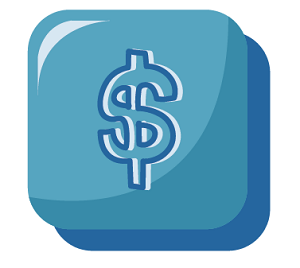 The fifth step is taking the viral traffic that you get and making money off of it by using AdSense or Taboola. I believe AdSense is the best platform to make money off of these viral websites because AdSense is ready to show ads according to what your website or blog is about. You don’t have to go search for affiliate products or something like that. AdSense does that job for you. Google takes everything into consideration and shows people the ad that they will definitely click on. So, if you have 100,000 people visiting your website, your earnings are probably going to be massive. You also have the option of using a new ad system that’s called Taboola, or a similar system that is called Outbrain. These systems show viral posts on your website. For example, you can add to your blog posts the code of Taboola or Outbrain. The blog posts are constructed in a way that people will want to click on them. Every time someone clicks on these posts, you make money. People can integrate it on their websites, or anywhere they want. It is just that simple. The only downside to this is that you have to have at least 100,000 views to your site per month in order to be able to access these platforms. These platforms want high-quality traffic on their customers’ websites. They don’t want just any random person to integrate their system onto their website by selling traffic. They want quality traffic, and this is something that you can consider once you are on a more advanced level. I highly recommend that when you’re starting out, use AdSense. Then, you can use Taboola and Outbrain. For example, if I’m reading an article about how to make money online, I would automatically see a post by Taboola or Outbrain telling me, “These are the top 5 ways to make money instantly.” This is how these platforms drive traffic to other people’s websites, and every time somebody clicks on those links, you get paid. If you have a course or another type of product, you can also have a lead magnet or something similar installed on your website to generate leads or to make sales. It all depends on your goals, and viral posts help you to achieve these goals.
The fifth step is taking the viral traffic that you get and making money off of it by using AdSense or Taboola. I believe AdSense is the best platform to make money off of these viral websites because AdSense is ready to show ads according to what your website or blog is about. You don’t have to go search for affiliate products or something like that. AdSense does that job for you. Google takes everything into consideration and shows people the ad that they will definitely click on. So, if you have 100,000 people visiting your website, your earnings are probably going to be massive. You also have the option of using a new ad system that’s called Taboola, or a similar system that is called Outbrain. These systems show viral posts on your website. For example, you can add to your blog posts the code of Taboola or Outbrain. The blog posts are constructed in a way that people will want to click on them. Every time someone clicks on these posts, you make money. People can integrate it on their websites, or anywhere they want. It is just that simple. The only downside to this is that you have to have at least 100,000 views to your site per month in order to be able to access these platforms. These platforms want high-quality traffic on their customers’ websites. They don’t want just any random person to integrate their system onto their website by selling traffic. They want quality traffic, and this is something that you can consider once you are on a more advanced level. I highly recommend that when you’re starting out, use AdSense. Then, you can use Taboola and Outbrain. For example, if I’m reading an article about how to make money online, I would automatically see a post by Taboola or Outbrain telling me, “These are the top 5 ways to make money instantly.” This is how these platforms drive traffic to other people’s websites, and every time somebody clicks on those links, you get paid. If you have a course or another type of product, you can also have a lead magnet or something similar installed on your website to generate leads or to make sales. It all depends on your goals, and viral posts help you to achieve these goals. Recap of Steps To Make Your Blog Posts Go Viral
- The first step is being creative with your blog posts by using list-based articles, quizzes, and videos. Use list-based titles like BuzzFeed and ViralNova.
- The second step is to use creative titles as click baits. The first impression of your blog post is based on the title. The title should be as attractive as possible. An example is “Ten Things I Did to Get 3,000 Leads in 4 Days”.
- The third step using Google Trends and YouTube Trends to get viral content. You can get viral content that’s being viewed the most and use that content to cause your blog post to go viral on the Internet.
- The fourth step is making use of social media. Find your target audience. Find where your target audience is present online. Once you find your audience, target them on the websites. Start by using free methods first, and once you are successful on them, you can use the paid systems available to you. Reddit, Facebook, and Pinterest have their own ad systems.
- Fifth, enjoy the increased traffic to your blog and make money by practically doing nothing. You can use AdSense, Taboola, or have your lead magnet to sell your products. Do whatever you want to make money from the huge amount of traffic that you obtain.
Connect With Rohan
There is a viral marketing course in which I teach people, step-by-step, how I get 100,000 visitors every month to my website. This course is available at Udemy, and I’m offering that course at a special discount exclusively to the Real Fast Results subscribers. You can take advantage of this by clicking on the link available within the “Resources” section.Daniel's Real Fast Results Tips: Viral Blog Posts
Resources
Rohan's Udemy Course: Viral Marketing - How I Get 100,000 Views Monthly On My Site Dr. Scott Brown Blog: WorryFreeWealth.com List Based Article Sites: BuzzFeed ViralNova Free Viral Content Tools: Google Trends YouTube Trends Top Social Media Sites To Share Viral Content: Pinterest Facebook Reddit Free Design Tool: Canva.com Ad Sites: AdSense Taboola OutbrainReal Fast Results Community
If you are diggin’ on this stuff and really love what we’re doing here at Real Fast Results, would you please do me a favor? Head on over to iTunes, and make sure that you subscribe to this show, download it, and rate & review it. That would be an awesome thing. Of course, we also want to know your results. Please share those results with us at http://www.realfastresults.com/results. As always, go make results happen!
Jun 30, 2016
Welcome to the next exciting installment of the Real Fast Results podcast! If you are an author, self-published or otherwise, and you want to get your work out to a much larger audience, the way to do that is via foreign language rights. There’s a bit of a myth among small press authors and self-published authors that it's difficult, if not impossible to sell your work in this way. The fact of the matter is that this isn’t correct. In this episode, you’re going to learn why and how you should go about selling your foreign language rights to your books and other works. Today’s expert, author Elliott Katz is going to share this information with us today. He has a long list of accomplishments when it comes to selling foreign language rights to his own works. What we’re promising, and we’re going to deliver, is how to sell foreign language rights to your books to publishers all around the world, and really build your credibility in your home market, and build your market in other countries within every continent.  publishers promote a book, they’ll translate it into 20 languages? Or sell it in 30 countries? When you see this you think, “Well, a big publisher can do that. I can’t do that.” But, now a person who is self-published can do it. If they have a good book they can sell it all around the world. I’ve sold my book Being the Strong Man a Woman Wants: Timeless Wisdom on Being a Man, to publishers in 24 countries in Europe, Asia, Latin America, and Africa. The first thing is you have to ask yourself, is your book right for a foreign rights sale? At first, I didn’t think my book was. I really thought it was for men in the United States and Canada, a North American thing. But ask, “Does your book appeal to human nature?” If so, you probably can sell foreign rights to your book. The next thing, in the past publishers went to foreign rights fairs in places like Frankfurt and London (and those fairs still exist). For big publishers that’s great. But now, with email, you can also reach out to those publishers. So, the first step is, once you decide you want to sell foreign rights to your book, develop a really exciting email describing your book. You can include a link to a television interview or reviews of your book, and of course, a summary and why you think it appeals to a wide market. Then, get a list of foreign rights agents in countries around the world. There are literary agents that specialize in selling books from other countries to publishers in their own country. So, all you’ve got to do is Google “foreign rights agents”, and those lists will come up. Then, of course, send out the email, and one of the beauties is, just think, in the past, if you did this you would have to mail a copy of your book to each of the foreign agents. That would cost you a fortune. Now, you send an email, and the ones that respond and are interested in seeing your book are the ones you spend the postage on to send them the book. Then, agents that are interested in representing you will sell and market the book. They know the publishers in their market. That’s their business. When they make a deal, they negotiate a contract, and it’s a great thing.
publishers promote a book, they’ll translate it into 20 languages? Or sell it in 30 countries? When you see this you think, “Well, a big publisher can do that. I can’t do that.” But, now a person who is self-published can do it. If they have a good book they can sell it all around the world. I’ve sold my book Being the Strong Man a Woman Wants: Timeless Wisdom on Being a Man, to publishers in 24 countries in Europe, Asia, Latin America, and Africa. The first thing is you have to ask yourself, is your book right for a foreign rights sale? At first, I didn’t think my book was. I really thought it was for men in the United States and Canada, a North American thing. But ask, “Does your book appeal to human nature?” If so, you probably can sell foreign rights to your book. The next thing, in the past publishers went to foreign rights fairs in places like Frankfurt and London (and those fairs still exist). For big publishers that’s great. But now, with email, you can also reach out to those publishers. So, the first step is, once you decide you want to sell foreign rights to your book, develop a really exciting email describing your book. You can include a link to a television interview or reviews of your book, and of course, a summary and why you think it appeals to a wide market. Then, get a list of foreign rights agents in countries around the world. There are literary agents that specialize in selling books from other countries to publishers in their own country. So, all you’ve got to do is Google “foreign rights agents”, and those lists will come up. Then, of course, send out the email, and one of the beauties is, just think, in the past, if you did this you would have to mail a copy of your book to each of the foreign agents. That would cost you a fortune. Now, you send an email, and the ones that respond and are interested in seeing your book are the ones you spend the postage on to send them the book. Then, agents that are interested in representing you will sell and market the book. They know the publishers in their market. That’s their business. When they make a deal, they negotiate a contract, and it’s a great thing.  The first step is to look at your book and think, “Is it suitable for foreign rights sales?” If it’s something that you think, “Well, this will only appeal to Americans,” maybe it’s not going to sell in China. However, if you look at it and it’s something that appeals to human nature, it might sell to a broader market. For example, my book is about realizing that men in this generation weren’t really taught how to be men. There’s a lot of confusion, and we hear all of these different messages. Men weren’t taught by their fathers and other older male role models how to be a man. That’s really what my book is about, being a man in the way men used to be taught. I thought this is really just a North American situation, like you see on the sitcoms on TV. It doesn’t really apply to all these traditional countries where men may still have their traditional roles. But, I tried it anyway, and there was a lot of interest. The first offers I got were from Mexico and Poland. Then I got an offer from a publisher in Brazil, and that was fascinating because isn’t Brazil where ‘machismo’ originated? So, I thought, “Well, you know what? Let’s just try.” And, I approached these agents in different countries. I guess what I realized was that cultures may be different, but human nature is the same. So, if you think it’s something that would appeal to people in other countries, definitely try it. It’s worth the effort. In the old days, publishers went to book fairs, and they still do, and for big publishers, that’s great. But, now with the Internet and email, you can just sit at home and send out 20, 30, 50 emails to foreign rights agents. That doesn’t cost you anything, and you can do it all through email. And then see if there is interest. Are agents interested in your book and asking for you to send them a copy? The cost is nothing. You can just send the email out and your only cost comes when they say, “Yes, send us your book. We want to look at it.” There’s no flying to Frankfurt, no paying for hotels. You’re saving so much money. Give it a try. If you’ve written something that would appeal to only people in the United States, it might not be right for foreign sales. If you had a book of poetry, it might not sell in various countries. Also possibly picture books or coffee table books might not be right for this. But, it really doesn’t hurt to try. Now, just being able to do it all with the Internet, there are no barriers. There’s no “Well, I’ve got to travel to Frankfurt. I’ve got to stay in a hotel.” That’s like thousands of dollars. It’s not worth it, but if you do it yourself from home, it’s amazing. Give it a try and see what the response is.
The first step is to look at your book and think, “Is it suitable for foreign rights sales?” If it’s something that you think, “Well, this will only appeal to Americans,” maybe it’s not going to sell in China. However, if you look at it and it’s something that appeals to human nature, it might sell to a broader market. For example, my book is about realizing that men in this generation weren’t really taught how to be men. There’s a lot of confusion, and we hear all of these different messages. Men weren’t taught by their fathers and other older male role models how to be a man. That’s really what my book is about, being a man in the way men used to be taught. I thought this is really just a North American situation, like you see on the sitcoms on TV. It doesn’t really apply to all these traditional countries where men may still have their traditional roles. But, I tried it anyway, and there was a lot of interest. The first offers I got were from Mexico and Poland. Then I got an offer from a publisher in Brazil, and that was fascinating because isn’t Brazil where ‘machismo’ originated? So, I thought, “Well, you know what? Let’s just try.” And, I approached these agents in different countries. I guess what I realized was that cultures may be different, but human nature is the same. So, if you think it’s something that would appeal to people in other countries, definitely try it. It’s worth the effort. In the old days, publishers went to book fairs, and they still do, and for big publishers, that’s great. But, now with the Internet and email, you can just sit at home and send out 20, 30, 50 emails to foreign rights agents. That doesn’t cost you anything, and you can do it all through email. And then see if there is interest. Are agents interested in your book and asking for you to send them a copy? The cost is nothing. You can just send the email out and your only cost comes when they say, “Yes, send us your book. We want to look at it.” There’s no flying to Frankfurt, no paying for hotels. You’re saving so much money. Give it a try. If you’ve written something that would appeal to only people in the United States, it might not be right for foreign sales. If you had a book of poetry, it might not sell in various countries. Also possibly picture books or coffee table books might not be right for this. But, it really doesn’t hurt to try. Now, just being able to do it all with the Internet, there are no barriers. There’s no “Well, I’ve got to travel to Frankfurt. I’ve got to stay in a hotel.” That’s like thousands of dollars. It’s not worth it, but if you do it yourself from home, it’s amazing. Give it a try and see what the response is.  include links to reviews and links to television reviews you have done. If you’ve sold rights in other countries, absolutely include that in the email because that gives it credibility. Just sell them the book. Just tell them why this book is a good book, how it really benefits people, and that it’s gotten a lot of really good feedback. Just sell it like you were talking to a person one-on-one, trying to convince them to buy your book. Just tell them how great it is and why you think it would be right for their market, and anything else that you think would be relevant. Then, if you think about it, you can send in an email more information than just explaining your book at a booth, at a fair. You can link to media coverage, link to television coverage, or a radio interview. Basically, you’re writing an email that is, in essence, a sales letter, and you're basically making the case that your book is really good, has a lot of potential, and is already being recognized with reviews, or any media interviews that you’ve done, or even sales figures in your current country. Anything to make them say, “Hey, I need to look at this book.” If you’ve already sold foreign rights in other countries, that also gets their attention and tells them that it’s not just stuff that appeals to a North American market. If you have good reviews on Amazon, include those reader reviews. Include anything that makes the book look interesting. They’ll say to you, “Yeah, okay. Send us a copy of the book.” They’re not committing yet; they’re saying, “Okay, you’ve got our interest, now let’s see your book.” The book is what has to sell, and it’s got to be a good book.
include links to reviews and links to television reviews you have done. If you’ve sold rights in other countries, absolutely include that in the email because that gives it credibility. Just sell them the book. Just tell them why this book is a good book, how it really benefits people, and that it’s gotten a lot of really good feedback. Just sell it like you were talking to a person one-on-one, trying to convince them to buy your book. Just tell them how great it is and why you think it would be right for their market, and anything else that you think would be relevant. Then, if you think about it, you can send in an email more information than just explaining your book at a booth, at a fair. You can link to media coverage, link to television coverage, or a radio interview. Basically, you’re writing an email that is, in essence, a sales letter, and you're basically making the case that your book is really good, has a lot of potential, and is already being recognized with reviews, or any media interviews that you’ve done, or even sales figures in your current country. Anything to make them say, “Hey, I need to look at this book.” If you’ve already sold foreign rights in other countries, that also gets their attention and tells them that it’s not just stuff that appeals to a North American market. If you have good reviews on Amazon, include those reader reviews. Include anything that makes the book look interesting. They’ll say to you, “Yeah, okay. Send us a copy of the book.” They’re not committing yet; they’re saying, “Okay, you’ve got our interest, now let’s see your book.” The book is what has to sell, and it’s got to be a good book. 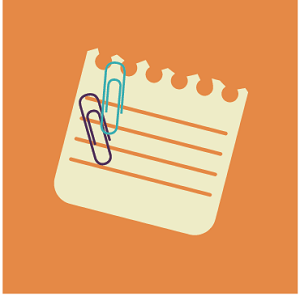 The third step is, where do you get a list of foreign rights agents? If you just Google “foreign rights agents”, what will come up is the big publishers. They already have arrangements with foreign rights agents, and on their website, they’ll have a page of all of the foreign rights agents. So, when you Google “foreign rights agents,” those are all the agents that will come up, from big publishers and big literary agencies. They include their email address on their site. Just click on their email, and send them your email, which includes all this exciting news about your book, and offer to send them a copy of your book. And then, wait for a response.
The third step is, where do you get a list of foreign rights agents? If you just Google “foreign rights agents”, what will come up is the big publishers. They already have arrangements with foreign rights agents, and on their website, they’ll have a page of all of the foreign rights agents. So, when you Google “foreign rights agents,” those are all the agents that will come up, from big publishers and big literary agencies. They include their email address on their site. Just click on their email, and send them your email, which includes all this exciting news about your book, and offer to send them a copy of your book. And then, wait for a response.  promote the book in their country. Maybe a print reporter can interview me in English and then translate it into their language. You show that you are there to support them, and like anything, that is additional coverage you send to the agents who are still trying to sell your book. And, all of this builds and builds. I’ve sold the rights to my book to 24 countries. When I started this process, I said, “Well, okay. I’ll try and see what happens.” But really, with this process, it’s really not that difficult. Write a good book. Write an exciting email, send it out and see what happens. If they respond, just send them the book however you want, either a hard copy or a PDF. It’s really so much easier now than it was in the past. It’s all about getting credibility to your book in North America. Like you, my goal in writing my book was to share these ideas. My book is about how to be a man in a relationship with a woman, and it’s showing that all the ideas people have today aren’t working, and you can see they’re not working. So, it’s really about those traditional ideas that fathers used to teach their sons about, you have to show leadership, and make decisions, and take responsibility. You can’t avoid these things and think you’re being such a nice guy. And the response I get from women is they tell me, “If my husband had known this, our marriage wouldn’t have disintegrated.” My whole point is that you really try to get your ideas out into the world and make a difference. That’s really my point. If you want to change the world, you can go beyond North America. You can really change the world. That’s been very rewarding for me, to see emails from people saying, “Hey, this book made a difference to me,” or “If I had had this book a year ago, my marriage wouldn’t be broken up.” You see, we’re making a difference, and that’s part of it. In business, it’s nice to make money and be successful. But at the same time, if you’re helping people and trying to eliminate the pain of divorce and children being from broken homes, it’s very rewarding to make that kind of a difference. And, this way, you get to share your ideas with the rest of the world. Much to my surprise, the rest of the world was interested in my ideas because it seems like this whole generation of men aren’t really taught what a man should be.
promote the book in their country. Maybe a print reporter can interview me in English and then translate it into their language. You show that you are there to support them, and like anything, that is additional coverage you send to the agents who are still trying to sell your book. And, all of this builds and builds. I’ve sold the rights to my book to 24 countries. When I started this process, I said, “Well, okay. I’ll try and see what happens.” But really, with this process, it’s really not that difficult. Write a good book. Write an exciting email, send it out and see what happens. If they respond, just send them the book however you want, either a hard copy or a PDF. It’s really so much easier now than it was in the past. It’s all about getting credibility to your book in North America. Like you, my goal in writing my book was to share these ideas. My book is about how to be a man in a relationship with a woman, and it’s showing that all the ideas people have today aren’t working, and you can see they’re not working. So, it’s really about those traditional ideas that fathers used to teach their sons about, you have to show leadership, and make decisions, and take responsibility. You can’t avoid these things and think you’re being such a nice guy. And the response I get from women is they tell me, “If my husband had known this, our marriage wouldn’t have disintegrated.” My whole point is that you really try to get your ideas out into the world and make a difference. That’s really my point. If you want to change the world, you can go beyond North America. You can really change the world. That’s been very rewarding for me, to see emails from people saying, “Hey, this book made a difference to me,” or “If I had had this book a year ago, my marriage wouldn’t be broken up.” You see, we’re making a difference, and that’s part of it. In business, it’s nice to make money and be successful. But at the same time, if you’re helping people and trying to eliminate the pain of divorce and children being from broken homes, it’s very rewarding to make that kind of a difference. And, this way, you get to share your ideas with the rest of the world. Much to my surprise, the rest of the world was interested in my ideas because it seems like this whole generation of men aren’t really taught what a man should be.
Review: Yes-men shirk responsibility? by Kasia Iglinkski Dating Jungle - A single woman's adventures through the dating jungle Metro newspaper, Toronto, Vancouver, Ottawa, Montreal He's the guy we think we all want to date. Smart, handsome and says yes to everything — from giving us back rubs to taking out the trash. Then we date him and that wanting-to-please manner we first thought so charming makes us want to hit our heads against a wall. Instead of a straight answer to questions like where to go for dinner, we're left with a frustrating "it's up to you." He's a "yes" man, no matter how big or small the decision may be. He's whipped. We're annoyed. But it doesn't have to be that way says Elliott Katz, author of Being The Strong Man A Woman Wants. "They think they are being nice guys," says Katz on why many men leave the decisions up to women. "But what they are really doing is shirking responsibilities." Instead, both partners need to take control and deal with the challenges that occur in their relationship. Part of that ownership of a relationship comes from getting rid of that "yes dear" mentality some men have. "It's not about being domineering. Women want a guy who knows what he wants," says Katz, who came to this realization soon after his own marriage ended several years ago and he wanted to know why. His answer lead him to such sources as Dr. Benjamin Spock's philosophy that men should be leaders and models for their children. He began to understand that many men today are too passive about their relationships. "We respect people who take charge," says Katz. "We don't admire people who stand back and wait for others to solve the problem." A dating blunder Katz often hears from men is they are always asking their date where she would like to go for dinner. "Instead of asking, suggest a place," says Katz. "This shows you are capable of making a decision." What can a woman do to help her man become more decisive? Katz recommends buying his book.
Table of Contents A woman wants a strong man, by Robert A. Glover Ph.D. (author of No More Mr. Nice Guy) The story behind the journey To women reading this book: How to encourage a man to be stronger 1. If you don't lead, I can't dance 2. Being strong 3. Knowing what you want 4. Leadership 5. It's not being controlling 6. Listening 7. Being worthy 8. Being entitled 9. Taking full responsibility 10. Growing stronger 11. Being manly 12. Giving 13 Setting goals 14. Knowing what's going on 15. Think before you act 16. Making decisions 17. Watch men who are strong 18. Money 19. The big house 20. Working 21. This is what it's meant all along Key steps to becoming the stronger man a woman wants Notes
Why You Should Sell Foreign Language Rights to Your Books
Selling foreign rights to your books really builds your credibility. Have you ever noticed that when the big publishers promote a book, they’ll translate it into 20 languages? Or sell it in 30 countries? When you see this you think, “Well, a big publisher can do that. I can’t do that.” But, now a person who is self-published can do it. If they have a good book they can sell it all around the world. I’ve sold my book Being the Strong Man a Woman Wants: Timeless Wisdom on Being a Man, to publishers in 24 countries in Europe, Asia, Latin America, and Africa. The first thing is you have to ask yourself, is your book right for a foreign rights sale? At first, I didn’t think my book was. I really thought it was for men in the United States and Canada, a North American thing. But ask, “Does your book appeal to human nature?” If so, you probably can sell foreign rights to your book. The next thing, in the past publishers went to foreign rights fairs in places like Frankfurt and London (and those fairs still exist). For big publishers that’s great. But now, with email, you can also reach out to those publishers. So, the first step is, once you decide you want to sell foreign rights to your book, develop a really exciting email describing your book. You can include a link to a television interview or reviews of your book, and of course, a summary and why you think it appeals to a wide market. Then, get a list of foreign rights agents in countries around the world. There are literary agents that specialize in selling books from other countries to publishers in their own country. So, all you’ve got to do is Google “foreign rights agents”, and those lists will come up. Then, of course, send out the email, and one of the beauties is, just think, in the past, if you did this you would have to mail a copy of your book to each of the foreign agents. That would cost you a fortune. Now, you send an email, and the ones that respond and are interested in seeing your book are the ones you spend the postage on to send them the book. Then, agents that are interested in representing you will sell and market the book. They know the publishers in their market. That’s their business. When they make a deal, they negotiate a contract, and it’s a great thing.
publishers promote a book, they’ll translate it into 20 languages? Or sell it in 30 countries? When you see this you think, “Well, a big publisher can do that. I can’t do that.” But, now a person who is self-published can do it. If they have a good book they can sell it all around the world. I’ve sold my book Being the Strong Man a Woman Wants: Timeless Wisdom on Being a Man, to publishers in 24 countries in Europe, Asia, Latin America, and Africa. The first thing is you have to ask yourself, is your book right for a foreign rights sale? At first, I didn’t think my book was. I really thought it was for men in the United States and Canada, a North American thing. But ask, “Does your book appeal to human nature?” If so, you probably can sell foreign rights to your book. The next thing, in the past publishers went to foreign rights fairs in places like Frankfurt and London (and those fairs still exist). For big publishers that’s great. But now, with email, you can also reach out to those publishers. So, the first step is, once you decide you want to sell foreign rights to your book, develop a really exciting email describing your book. You can include a link to a television interview or reviews of your book, and of course, a summary and why you think it appeals to a wide market. Then, get a list of foreign rights agents in countries around the world. There are literary agents that specialize in selling books from other countries to publishers in their own country. So, all you’ve got to do is Google “foreign rights agents”, and those lists will come up. Then, of course, send out the email, and one of the beauties is, just think, in the past, if you did this you would have to mail a copy of your book to each of the foreign agents. That would cost you a fortune. Now, you send an email, and the ones that respond and are interested in seeing your book are the ones you spend the postage on to send them the book. Then, agents that are interested in representing you will sell and market the book. They know the publishers in their market. That’s their business. When they make a deal, they negotiate a contract, and it’s a great thing. Making Money Selling Foreign Rights to Your Book
Can you make a lot of money selling foreign rights to your book? If you’ve got a big book, yes. But, generally, you don’t make a lot of money, you might get a penny. Of course, it depends on the size of the market, and it depends on the wealth of the country. A wealthy country’s publishers pay more than those in a small country. I can tell you, the advances I made ranged from a few hundred dollars from India to several thousands of dollars from more-wealthier countries where they charge more for books, such as countries in Europe or some countries in Asia. It all adds up. For the amount of time you put into it, it’s a deal. I mean, you’ve written the book already. You don’t have to write a new book. This is just extra money. And, it’s not just for the money, but also for the credibility it gives you. When you say, “My books have been published in 24 countries,” that gets people to pay attention. It must be a book worth reading. So, it really helps. It can give you a lot of credibility right here in the United States. Most deals are the traditional publishing deal. There’s an advance on royalties, and then once the book earns back that advance, the publisher then send you royalty payments. But, you know what? Most people say just take the money and run. I’ve had some publishers to do that, and with other publishers, you’ve really got to chase them and keep asking them for royalty statements. They just think they’ve paid you the advance; they’ll send you the 10, 3 copies. You really have to chase them to get royalty sales statements, and then there are additional royalties to be paid. So, just take the money and run. No, I do. I always follow up. It’s just been my experience that a lot of these publishers, if I don’t follow up and ask them, to send me a report on sales like you’re required to do in a contract, it doesn’t happen. Like, how long does it take to send an email? If you can get additional payments by following up with them, that’s great. But, what is hard about it is that they’re on the other side of the world and your ability to force them to send a sales report is limited. What are you going to do? Hire a lawyer? Hire an accountant to go audit them? It can be a challenge. But, you did get an advance upfront, and it gives you a lot more credibility in selling your book than if you had sold it in just the United States and Canada. For a single title author, it really depends on the country you are selling to. From India, I got a few hundred dollars. But, in richer countries, like in Europe where they pay more for books you can get a few thousand dollars.Step by Step - How to Sell Foreign Language Rights to Your Books
Step 1 - Is my book suitable for foreign rights sales?
 The first step is to look at your book and think, “Is it suitable for foreign rights sales?” If it’s something that you think, “Well, this will only appeal to Americans,” maybe it’s not going to sell in China. However, if you look at it and it’s something that appeals to human nature, it might sell to a broader market. For example, my book is about realizing that men in this generation weren’t really taught how to be men. There’s a lot of confusion, and we hear all of these different messages. Men weren’t taught by their fathers and other older male role models how to be a man. That’s really what my book is about, being a man in the way men used to be taught. I thought this is really just a North American situation, like you see on the sitcoms on TV. It doesn’t really apply to all these traditional countries where men may still have their traditional roles. But, I tried it anyway, and there was a lot of interest. The first offers I got were from Mexico and Poland. Then I got an offer from a publisher in Brazil, and that was fascinating because isn’t Brazil where ‘machismo’ originated? So, I thought, “Well, you know what? Let’s just try.” And, I approached these agents in different countries. I guess what I realized was that cultures may be different, but human nature is the same. So, if you think it’s something that would appeal to people in other countries, definitely try it. It’s worth the effort. In the old days, publishers went to book fairs, and they still do, and for big publishers, that’s great. But, now with the Internet and email, you can just sit at home and send out 20, 30, 50 emails to foreign rights agents. That doesn’t cost you anything, and you can do it all through email. And then see if there is interest. Are agents interested in your book and asking for you to send them a copy? The cost is nothing. You can just send the email out and your only cost comes when they say, “Yes, send us your book. We want to look at it.” There’s no flying to Frankfurt, no paying for hotels. You’re saving so much money. Give it a try. If you’ve written something that would appeal to only people in the United States, it might not be right for foreign sales. If you had a book of poetry, it might not sell in various countries. Also possibly picture books or coffee table books might not be right for this. But, it really doesn’t hurt to try. Now, just being able to do it all with the Internet, there are no barriers. There’s no “Well, I’ve got to travel to Frankfurt. I’ve got to stay in a hotel.” That’s like thousands of dollars. It’s not worth it, but if you do it yourself from home, it’s amazing. Give it a try and see what the response is.
The first step is to look at your book and think, “Is it suitable for foreign rights sales?” If it’s something that you think, “Well, this will only appeal to Americans,” maybe it’s not going to sell in China. However, if you look at it and it’s something that appeals to human nature, it might sell to a broader market. For example, my book is about realizing that men in this generation weren’t really taught how to be men. There’s a lot of confusion, and we hear all of these different messages. Men weren’t taught by their fathers and other older male role models how to be a man. That’s really what my book is about, being a man in the way men used to be taught. I thought this is really just a North American situation, like you see on the sitcoms on TV. It doesn’t really apply to all these traditional countries where men may still have their traditional roles. But, I tried it anyway, and there was a lot of interest. The first offers I got were from Mexico and Poland. Then I got an offer from a publisher in Brazil, and that was fascinating because isn’t Brazil where ‘machismo’ originated? So, I thought, “Well, you know what? Let’s just try.” And, I approached these agents in different countries. I guess what I realized was that cultures may be different, but human nature is the same. So, if you think it’s something that would appeal to people in other countries, definitely try it. It’s worth the effort. In the old days, publishers went to book fairs, and they still do, and for big publishers, that’s great. But, now with the Internet and email, you can just sit at home and send out 20, 30, 50 emails to foreign rights agents. That doesn’t cost you anything, and you can do it all through email. And then see if there is interest. Are agents interested in your book and asking for you to send them a copy? The cost is nothing. You can just send the email out and your only cost comes when they say, “Yes, send us your book. We want to look at it.” There’s no flying to Frankfurt, no paying for hotels. You’re saving so much money. Give it a try. If you’ve written something that would appeal to only people in the United States, it might not be right for foreign sales. If you had a book of poetry, it might not sell in various countries. Also possibly picture books or coffee table books might not be right for this. But, it really doesn’t hurt to try. Now, just being able to do it all with the Internet, there are no barriers. There’s no “Well, I’ve got to travel to Frankfurt. I’ve got to stay in a hotel.” That’s like thousands of dollars. It’s not worth it, but if you do it yourself from home, it’s amazing. Give it a try and see what the response is. Step 2 - Write an Exciting Email About Your Book
The second step is to develop a really exciting email about your book. Give your book a summary, and you can include links to reviews and links to television reviews you have done. If you’ve sold rights in other countries, absolutely include that in the email because that gives it credibility. Just sell them the book. Just tell them why this book is a good book, how it really benefits people, and that it’s gotten a lot of really good feedback. Just sell it like you were talking to a person one-on-one, trying to convince them to buy your book. Just tell them how great it is and why you think it would be right for their market, and anything else that you think would be relevant. Then, if you think about it, you can send in an email more information than just explaining your book at a booth, at a fair. You can link to media coverage, link to television coverage, or a radio interview. Basically, you’re writing an email that is, in essence, a sales letter, and you're basically making the case that your book is really good, has a lot of potential, and is already being recognized with reviews, or any media interviews that you’ve done, or even sales figures in your current country. Anything to make them say, “Hey, I need to look at this book.” If you’ve already sold foreign rights in other countries, that also gets their attention and tells them that it’s not just stuff that appeals to a North American market. If you have good reviews on Amazon, include those reader reviews. Include anything that makes the book look interesting. They’ll say to you, “Yeah, okay. Send us a copy of the book.” They’re not committing yet; they’re saying, “Okay, you’ve got our interest, now let’s see your book.” The book is what has to sell, and it’s got to be a good book.
include links to reviews and links to television reviews you have done. If you’ve sold rights in other countries, absolutely include that in the email because that gives it credibility. Just sell them the book. Just tell them why this book is a good book, how it really benefits people, and that it’s gotten a lot of really good feedback. Just sell it like you were talking to a person one-on-one, trying to convince them to buy your book. Just tell them how great it is and why you think it would be right for their market, and anything else that you think would be relevant. Then, if you think about it, you can send in an email more information than just explaining your book at a booth, at a fair. You can link to media coverage, link to television coverage, or a radio interview. Basically, you’re writing an email that is, in essence, a sales letter, and you're basically making the case that your book is really good, has a lot of potential, and is already being recognized with reviews, or any media interviews that you’ve done, or even sales figures in your current country. Anything to make them say, “Hey, I need to look at this book.” If you’ve already sold foreign rights in other countries, that also gets their attention and tells them that it’s not just stuff that appeals to a North American market. If you have good reviews on Amazon, include those reader reviews. Include anything that makes the book look interesting. They’ll say to you, “Yeah, okay. Send us a copy of the book.” They’re not committing yet; they’re saying, “Okay, you’ve got our interest, now let’s see your book.” The book is what has to sell, and it’s got to be a good book. Step 3 - Find a List of Foreign Rights Agents
 The third step is, where do you get a list of foreign rights agents? If you just Google “foreign rights agents”, what will come up is the big publishers. They already have arrangements with foreign rights agents, and on their website, they’ll have a page of all of the foreign rights agents. So, when you Google “foreign rights agents,” those are all the agents that will come up, from big publishers and big literary agencies. They include their email address on their site. Just click on their email, and send them your email, which includes all this exciting news about your book, and offer to send them a copy of your book. And then, wait for a response.
The third step is, where do you get a list of foreign rights agents? If you just Google “foreign rights agents”, what will come up is the big publishers. They already have arrangements with foreign rights agents, and on their website, they’ll have a page of all of the foreign rights agents. So, when you Google “foreign rights agents,” those are all the agents that will come up, from big publishers and big literary agencies. They include their email address on their site. Just click on their email, and send them your email, which includes all this exciting news about your book, and offer to send them a copy of your book. And then, wait for a response. Note from Daniel: After this episode was posted I was talking to my long time friend and frequent joint venture partner John Kremer and he told me that he had put together a resource with a nice database of foreign language rights agents and it was only $6. Here's the information that appears on John's website: Literary, Subsidiary Rights, and Foreign Rights Agents — This mini-guide includes more than 1,425 literary agents, including 325+ agents that sell foreign rights, 400 that have sold a first novel, and another 50 or so that handle subsidiary rights sales. This mini-guide also includes a sample foreign rights book contract. Ebook download, $6.00. You can >>> grab it by clicking here <<<Again, you can send like 100 emails, and it doesn’t cost you anything. Just imagine if you had to pack 100 copies of your book in envelopes and mail them? It would be a few hundred dollars right there. This way, you send out 100 emails for free, and then you’re narrowing the interest. The ones that are interested will write back to you, and then you can send them a copy of the book. You might be thinking, "Can’t I just offer to send these foreign rights agents a PDF?" Actually, a lot of the agents will ask for a PDF because then they can just forward it to publishers. I’ve had people write to me with this question, “When I send a PDF, am I losing control of the book?” For example, a person sends it to a friend of theirs, “Oh, you should read this book,” and then that person sends it to 100 of their friends. That’s my concern, and other authors have that concern also. I mean, if you’re comfortable with it, you could send a PDF, and then you don’t have any postage cost. My policy is that I’ll send you as many hard copies of the book as you need.
Step 4 - Receiving an Offer
The fourth step is, the agent will approach different publishers, and if they get an offer from a publisher, they’ll send it to you. Usually, what you should look at is the number of copies they’re going to print, the retail price in their market, and the royalty rate. Often, because they’re going to translate it, there’s a cost element. In the United States, Canada, the royalty rate might be 10%, but because we have to pay for the cost of translation, usually the royalty rate is like 6%-8%. It just depends. Figure out the total number of copies from the first printing, the royalty rate on the retail price, and figure out what would be the total royalties for that first printing. It’s reasonable to ask for the royalty on the first printing as an advance. Just run the figures, and that way you don’t have to pursue them for royalty payments. If they do a second printing, they’ll have to pay you royalties again. Also, make sure that the copyright is in your name, and just review the contract. One thing that you have to include in the contract is that they have to publish the book within 12 months or 18 months, and if they don’t, the contract is automatically cancelled. Because that happens sometimes. The publisher will buy their rights and then decide not to publish it. So, it’s better to establish that if they don’t publish it within 18 months, the contract is cancelled, and you keep the advance and look for another publisher. That way, the rights aren’t granted to the publisher in perpetuity. Also, a contract should have a term, such as 5-7 years. The contract should say “This contract expires,” and you’ll have a date of 5-7 years, whatever you decide and can negotiate with the publisher, so it’s not forever. Also, one thing that I do is I keep these agents up to date. If you get a good review in a newspaper or magazine, send it to them. If you get on television, send them the link to the taping and say “Please send this to the publishers that are considering the book.” Keep them up to date. If you make a sale in another market, tell them, “Please inform the publishers that are considering the book that I just sold rights in this other country.” Everything is added, giving you more credibility because the publisher wants to be assured, “Hey, people will buy this book.” If you show them that other people in other countries like the book, it carries credibility.The In's and Out's of the Advance
The idea is, when they give you an offer, it should include the size of the first printing, the number of copies they're going to print, the royalty rate, and the retail sales price. For example, let’s just say the book promos for $10 in the US, and they are going to print 10,000 copies, and they are going to give you a 10% royalty. A 10% royalty on a $10 book is $1. If they are going to print 10,000 copies, that’s $10,000. If it were 5,000 copies, it would be $5,000. So, that’s a reasonable amount to make as an advance for the first printing. That’s a pretty common approach, to ask for an advance, and most publishers seem to agree to that. "Can’t I just offer to send these foreign rights agents a PDF?" Oh, yes. Absolutely. It’s like with any negotiation in business. When you make your first offer, they think they’re paying you too much, right? Obviously, with any advance, if you feel like you could ask for more, ask for more. If they come with a counter offer, maybe you just accept it. Really, when I get published, the amounts aren’t that great, usually. I actually remember with one publisher, I figured out what the advance should be for the first printing, and I added a little more to that, just for some negotiating room. He accepted it, and I’ll tell you, I feel like I didn’t ask for enough. Usually, the publisher makes the offer. It’s just in that case, the publisher asked me how much I wanted and what terms I wanted. He accepted everything, so I just felt like I didn’t ask for enough.Step 5 - Promoting Your Book
The fifth step is, once the book gets published, they’ll send you your 10 copies. I always offer to help them promote the book in their country. Maybe a print reporter can interview me in English and then translate it into their language. You show that you are there to support them, and like anything, that is additional coverage you send to the agents who are still trying to sell your book. And, all of this builds and builds. I’ve sold the rights to my book to 24 countries. When I started this process, I said, “Well, okay. I’ll try and see what happens.” But really, with this process, it’s really not that difficult. Write a good book. Write an exciting email, send it out and see what happens. If they respond, just send them the book however you want, either a hard copy or a PDF. It’s really so much easier now than it was in the past. It’s all about getting credibility to your book in North America. Like you, my goal in writing my book was to share these ideas. My book is about how to be a man in a relationship with a woman, and it’s showing that all the ideas people have today aren’t working, and you can see they’re not working. So, it’s really about those traditional ideas that fathers used to teach their sons about, you have to show leadership, and make decisions, and take responsibility. You can’t avoid these things and think you’re being such a nice guy. And the response I get from women is they tell me, “If my husband had known this, our marriage wouldn’t have disintegrated.” My whole point is that you really try to get your ideas out into the world and make a difference. That’s really my point. If you want to change the world, you can go beyond North America. You can really change the world. That’s been very rewarding for me, to see emails from people saying, “Hey, this book made a difference to me,” or “If I had had this book a year ago, my marriage wouldn’t be broken up.” You see, we’re making a difference, and that’s part of it. In business, it’s nice to make money and be successful. But at the same time, if you’re helping people and trying to eliminate the pain of divorce and children being from broken homes, it’s very rewarding to make that kind of a difference. And, this way, you get to share your ideas with the rest of the world. Much to my surprise, the rest of the world was interested in my ideas because it seems like this whole generation of men aren’t really taught what a man should be.
promote the book in their country. Maybe a print reporter can interview me in English and then translate it into their language. You show that you are there to support them, and like anything, that is additional coverage you send to the agents who are still trying to sell your book. And, all of this builds and builds. I’ve sold the rights to my book to 24 countries. When I started this process, I said, “Well, okay. I’ll try and see what happens.” But really, with this process, it’s really not that difficult. Write a good book. Write an exciting email, send it out and see what happens. If they respond, just send them the book however you want, either a hard copy or a PDF. It’s really so much easier now than it was in the past. It’s all about getting credibility to your book in North America. Like you, my goal in writing my book was to share these ideas. My book is about how to be a man in a relationship with a woman, and it’s showing that all the ideas people have today aren’t working, and you can see they’re not working. So, it’s really about those traditional ideas that fathers used to teach their sons about, you have to show leadership, and make decisions, and take responsibility. You can’t avoid these things and think you’re being such a nice guy. And the response I get from women is they tell me, “If my husband had known this, our marriage wouldn’t have disintegrated.” My whole point is that you really try to get your ideas out into the world and make a difference. That’s really my point. If you want to change the world, you can go beyond North America. You can really change the world. That’s been very rewarding for me, to see emails from people saying, “Hey, this book made a difference to me,” or “If I had had this book a year ago, my marriage wouldn’t be broken up.” You see, we’re making a difference, and that’s part of it. In business, it’s nice to make money and be successful. But at the same time, if you’re helping people and trying to eliminate the pain of divorce and children being from broken homes, it’s very rewarding to make that kind of a difference. And, this way, you get to share your ideas with the rest of the world. Much to my surprise, the rest of the world was interested in my ideas because it seems like this whole generation of men aren’t really taught what a man should be. Connecting with Elliott
I have a website. It’s www.ElliottKatz.com. You can email me through there. My book is available on Amazon as a paperback, and as an eBook on Amazon Kindle, Kobo, and iBooks. It’s also available in bookstores, but the bookstores sold out this last time I ordered. Like I said, it’s available in 24 countries, in Europe, Asia, Latin America, and Africa, and it’s very exciting to say, “Hey, I’m making a difference around the world.” It’s really rewarding.Daniel's Real Fast Results Tips: Foreign Language Rights
Here's a sample email that Elliott sends to prospective foreign language rights buyers: Email Subject: Foreign Language Rights Available for Being the Strong Man A Woman Wants Dear [Name of Prospective Buyer] I am a bestselling author and write to inquire about your interest in buying foreign language rights. Rights to my book Being the Strong Man A Woman Wants have already been sold in 24 countries in Europe, Asia, Latin America and Africa. The English edition is sold in the United States, Canada, Australia, Singapore and the United Kingdom. There is extensive media interest in my book and thus I have reason to believe that sales would be robust in the languages that you handle. I been interviewed about the book on more than 200 radio and TV shows in the US, Canada and Singapore. Sample TV interview: Here is link to TV interview on Breakfast Television, the morning show with the largest audience in Canada. https://youtu.be/8391tuVTyoY Winner of the USA Book News Best Books Award for books on men, the book is receiving wonderful reviews: "For all those sensitive New Age guys out there who want to improve their love lives and themselves." The Edmonton Sun "The wisdom is remarkable." The Oklahoman, Oklahoma City "Full of useful examples on how to be a better man" Clarence Bee, Buffalo NY "A minuscule investment for improving, much less saving, a marriage." Lazer Brody, Lazer Beams It's a book written for men that women buy and give it to the man in their lives and say, "This is all I have been trying to tell you all these years!" Read the reviews on Amazon -- Being the Strong Man A Woman Wants: Timeless wisdom on being a man (see http://amzn.to/290QnJL) The book is 128 pages and retails in the US for $12.95 US. If you'd like a reading copy, please reply with mailing address. I look forward to hearing from you. Sincerely, Elliott KatzReview: Yes-men shirk responsibility? by Kasia Iglinkski Dating Jungle - A single woman's adventures through the dating jungle Metro newspaper, Toronto, Vancouver, Ottawa, Montreal He's the guy we think we all want to date. Smart, handsome and says yes to everything — from giving us back rubs to taking out the trash. Then we date him and that wanting-to-please manner we first thought so charming makes us want to hit our heads against a wall. Instead of a straight answer to questions like where to go for dinner, we're left with a frustrating "it's up to you." He's a "yes" man, no matter how big or small the decision may be. He's whipped. We're annoyed. But it doesn't have to be that way says Elliott Katz, author of Being The Strong Man A Woman Wants. "They think they are being nice guys," says Katz on why many men leave the decisions up to women. "But what they are really doing is shirking responsibilities." Instead, both partners need to take control and deal with the challenges that occur in their relationship. Part of that ownership of a relationship comes from getting rid of that "yes dear" mentality some men have. "It's not about being domineering. Women want a guy who knows what he wants," says Katz, who came to this realization soon after his own marriage ended several years ago and he wanted to know why. His answer lead him to such sources as Dr. Benjamin Spock's philosophy that men should be leaders and models for their children. He began to understand that many men today are too passive about their relationships. "We respect people who take charge," says Katz. "We don't admire people who stand back and wait for others to solve the problem." A dating blunder Katz often hears from men is they are always asking their date where she would like to go for dinner. "Instead of asking, suggest a place," says Katz. "This shows you are capable of making a decision." What can a woman do to help her man become more decisive? Katz recommends buying his book.
Table of Contents A woman wants a strong man, by Robert A. Glover Ph.D. (author of No More Mr. Nice Guy) The story behind the journey To women reading this book: How to encourage a man to be stronger 1. If you don't lead, I can't dance 2. Being strong 3. Knowing what you want 4. Leadership 5. It's not being controlling 6. Listening 7. Being worthy 8. Being entitled 9. Taking full responsibility 10. Growing stronger 11. Being manly 12. Giving 13 Setting goals 14. Knowing what's going on 15. Think before you act 16. Making decisions 17. Watch men who are strong 18. Money 19. The big house 20. Working 21. This is what it's meant all along Key steps to becoming the stronger man a woman wants Notes
©2016 Daniel Hall
